

BÀI TẬP BỔ TRỢ DẠY THÊM TIẾNG ANH LỚP 7 GLOBAL SUCCESS CÓ FILE NGHECẢ NĂM - BẢN HỌC SINH
VERSION
2023 EDITION ORDER NOW / CHUYỂN GIAO QUA EMAIL TAILIEUCHUANTHAMKHAO@GMAIL COM BÀI TẬP BỔ TRỢ GLOBAL SUCCESS Ths Nguyễn Thanh Tú eBook Collection Hỗ trợ trực tuyến Fb www.facebook.com/DayKemQuyNhon Mobi/Zalo 0905779594 vectorstock com/7952556 Tài liệu chuẩn tham khảo Phát triển kênh bởi Ths Nguyễn Thanh Tú Đơn vị tài trợ / phát hành / chia sẻ học thuật : Nguyen Thanh Tu Group
WORD
|
REVIEW 1
Pronunciation
1. Circle the word in which the underlined part is pronounced differently. Then listen, check and repeat. (Khoanh tròn từ mà phần gạch chân được phát âm khác. Sau đó nghe, kiểm tra và lặp lại.)
1. A. proverb
2. A. learn
3. A. collected
4. A. listened
5. A. laugh
Bài 2
B. together
B.earn
B. cleaned
B. helped
B. ghost
C. exercise
C. hear
C. donated
C. watched
C. rough
2. Put the phrases below in the correct columns. (Đặt các cụm từ bên dưới vào các cột chính xác.) raising money for charity collecting stamps cleaning your room doing judo doing volunteer work doing sport helping street children donating clothes
Activities you do for … yourself your community
Bài 3
3. Complete the sentences with the words and phrases below. (Hoàn thành các câu với các từ và cụm từ bên dưới.)
hobby coloured vegetables chapped lips mountainous areas taking photos community
1. Eating ______ and exercising can help you keep fit and stay healthy.
2. The Donate a Book event helps children in______.
3. My brother spends a lot of time making models. That's his______.
4. If you have______, use lip balm.
5. There are many things you can do to help your______.
6. I love______of the sunset.
Bài 4
Grammar
4. Fill in the blanks with the correct tense of the verbs in brackets. (Điền vào chỗ trống với thì đúng của động từ trong ngoặc.)
1. He often (read) ______ books in dim light, so his eyes hurt.
2.______you (do)______the gardening at the weekend?
3. Ordinary people (need)______about 2,000 calories a day to stay healthy.
4. I (cannot)______ride a bicycle when I was 6.
5. Last summer Phong (not volunteer)______to teach maths to street children.
6. We (join)______the project Plant a Tree in2019 to make our area green.
DẠYKÈMQUYNHƠNOFFICIAL
Bài 5
5. Turn the sentences into negative statements or questions.
Page 1| 3
REVIEW 1+2 THAM KHẢO TEXTBOOK
(Chuyển câu thành câu phủ định hoặc câu hỏi.)
1. She liked exercising. (not)
(Cô ấy thích tập thể dục.)
=> She ________________
2. My family always spends time doing housework together on Sundays. (not)
(Gia đình tôi luôn dành thời gian làm việc nhà cùng nhau vào Chủ nhật.)
=> My family________________
3. I used a lot of suncream during my holiday. (not)
(Tôi đã sử dụng rất nhiều kem chống nắng trong kỳ nghỉ của mình.)
=> I________________
4. My community organised a fair to raise money for the homeless last week. (?)
(Cộng đồng của tôi đã tổ chức một hội chợ để quyên góp tiền cho những người vô gia cư vào tuần trước.)
=>________________
5. Tim makes beautiful pieces of art from dry leaves and sticks. (?) (Tim tạo ra những tác phẩm nghệ thuật tuyệt đẹp từ lá khô và que củi.)
=>________________
REVIEW 2
Bài 1
Pronunciation
1. Circle the word in which the underlined part is pronounced differently. Listen, check, and repeat the words.
(Khoanh tròn từ mà phần gạch chân được phát âm khác. Nghe, kiểm tra và nhắc lại các từ.)
1. A. decision
2. A. ocean
vision
cinema
measure
musician
sure
delicious
lot 4. A. chicken
3. A. hot
5. A. condition
Bài 2
Vocabulary
architect
attention
cheap
question
chair
addition
2. Match a word in A with a word or phrase in B. Then complete the sentences with the appropriate phrases. (Nối một từ trong cộtA với một từ hoặc cụm từ trong cộtB. Sau đó hoàn thành các câu với các cụm từ thích hợp.) A B
1. perform (thể hiện)
2. drink (uống)
3. need (cần)
4. pass (vượt qua)
5. play (chơi)
a. some apples (một vài quả táo)
b. an entrance exam (bài thi đầu vào)
c. the guitar (đàn ghi ta)
d. juice (nước hoa quả)
e. a classical concert (buổi hòa nhạc cổ điển)
1. The students learn how to ______ in their music lessons twice a week.
2. We______for this recipe.
3. The orchestra will______tomorrow.
4. She doesn't allow her children to______during dinner.
5. They have to______to enter this school.
DẠYKÈMQUYNHƠNOFFICIAL
Bài 3
3. Underline the correct word to complete the sentences.
Page 2| 3
C.
D.
B.
B.
C.
D.
B.
C.
D.
B.
C.
D.
cottage
compose
B.
C.
D.
(Gạch chân từ đúng để hoàn thành các câu.)
1. Trinh Cong Son is one of Viet Nam's greatest scientists/composers.
2. How many butter/apples do we need for an apple pie?
3. The musicians will perform their final portrait/concert next week.
4. Ha Noi Amsterdam School is for normal/gifted students.
5. Students have to take a(n) entrance/final exam to study at my school.
Bài 4
Grammar
4. Complete the passages about camping. Use the words and phrases from the boxes. (Hoàn thành các đoạn văn về cắm trại. Sử dụng các từ và cụm từ trong hộp.)
How much
How many a lot of
Plan your meals in advance. How many sandwiches are you going to make? How many loaves of bread will you need? Do you plan to make popcorn? (1) _______ butter do you need? (2)_______eggs will you buy? Do you need to buy (3)_______drinks in advance?
some much many
Making a fire is a skill. And it is easy to learn. You won't need (4)_______practice before you can make a campfire. Start with (5)_______paper and leaves. Place the wood on top of these. Don't use (6)_______big pieces of wood. Just put two or three big pieces over the sticks and keep the rest for later.
Bài 5
5. Complete the second sentence, using the words in brackets. (Hoàn thành câu thứ hai, sử dụng các từ trong ngoặc.)
1. I think classical music is not as exciting as rock and roll. (more... than) => I think rock and roll ______________.
2. The poster in the gallery is the same as the one in my house. (different from) => The poster in the gallery______________.
3. A ticketto the theatre is cheaper thanI expected. (not as ... as) => A ticket to the theatre______________.
4. The painting in the museum is not different from the painting in the gallery. (like) => The painting in the museum______________.
DẠYKÈMQUYNHƠNOFFICIAL
Page 3| 3
GRADE 7 -UNIT 1 -MY HOBBIES –BẢN HS
I.VOCABULARY GETTING STARTED
1. amazing /əˈmeɪzɪŋ/ (adj): tuyệt vời
It’s amazing.
2. make it yourself /meɪk ɪt jɔːˈself/ (v.phr): tự làm lấy
Did you make it yourself?
(Bạn đã tự làm nó đúng không?)++++
3. building dollhouses /ˈbɪl.dɪŋ ˈdɒlˌhaʊsiz/ (n.phr): xây nhà búp bê
My hobby is building dollhouses. (Sở thích của tôi là xây nhà búp bê.)
4. cardboard /ˈkɑːdbɔːd/ (n): bìa cứng, các-tông
All you need is some cardboard and glue. (Mọi thứ bạn cần là một ít bìa cứng và hồ dán.)
5. creativity /ˌkriːeɪˈtɪvəti/ (n): sự sáng tạo
Then just use a bit of creativity.
(Sau đó chỉ cần tận dụng một ít sáng tạo nữa.)
creative (a) sáng tạo
6. horse-riding /ˈhɔːs raɪdɪŋ/ (n): cưỡi ngựa
I like horse-riding. (Tôi thích cưỡi ngựa.)
7. common /ˈkɒmən/ (adj): phổ biến, thịnh hành
Actually, it’s more common than you think. (Sự thật thì chúng phổ biến hơn bạn nghĩ đấy.)
8. collecting teddy bears /kəˈlektɪŋ ˈted.i /berz/ (n.phr): sưu tầm gấu bông
He likes collecting teddy bears in his free time. (Anh ấy thích sưu tầ m gấu bông trong khi rảnh rỗi.)
9. make model /meɪk ˈmɒdl / (v.phr): làm mô hình
The children love making models. (Những đứa trẻ thích thiết kế mô hình.)
10. collecting coins /kəˈlektɪŋ kɔɪnz/ (n.phr): sưu tầm đồng xu
My brother likes collecting coins (Anh trai tôi thích sưu tầm đồng xu.)
11. gardening /ˈɡɑːdnɪŋ/ (n): việc làm vườn
DẠYKÈMQUYNHƠNOFFICIAL
Gardening is my hobby.
12. learn how to do something /lɜrn haʊ tu du ˈsʌmθɪŋ/
1
(v.phr): học cách làm việc gì
I want to learn how to ride.
(Tôi muốn học cách cưỡi ngựa.)
13. go to the club /goʊ tu ðə klʌb
(v.phr): đi câu lạc bộ
I go to the Rider’s Club every Sunday.
(Tôi đến câu lạc bộ Rider mỗi Chủ nhật.)
A CLOSER LOOK 1
14. go jogging /goʊ ˈʤɑ:gɪŋ/
(v.phr): chạy bộ
He goes jogging with his girlfriend everyday.
(Anh ấy chạy bộ với bạn gái mỗi ngày.)
15. do yoga /duːˈjoʊgə /
(v.phr): tập yoga
She likes doing yoga.
(Cô ấy thích tập yoga.)
16. do judo /du ˈʤuˌdoʊ/ (v.phr): tập võ judo
My father loves doing judo to be healthier. (Bố tôi thích tập judo để khỏe mạnh hơn.)
17. go camping /goʊ ˈkæmpɪŋ/ (v.phr): cắm trại
My sister likes going camping at the weekend. (Em gái tôi thích cắm trại vào cuối tuần.)
18. keep fit /kip fɪt/ (v.phr): giữ dáng
My mom enjoys doing yoga to keep fit. (Mẹ tôi thích tập yoga để giữ dáng.)
19. surf /sɜːf/
(v): lướt sóng
His favorite hobby is surfing (Sở thích của anh ấy là lướt sóng.)
20. play the violin /pleɪ ðə vaɪəˈlɪn / (v.phr): chơi đàn vĩ cầm
Nam enjoys playing the violin . (Nam thích chơi đàn vĩ cầm.)
A CLOSER LOOK 2
21. rise /raɪz/
(v): mọc, nhô lên (mặt trời)
The sun rises every morning. (Mặt trời mọc mỗi sáng.))
22. leave /liːv/
(v): rời khỏi
The train leaves at 10 a.m. (Xe lửa rời khỏi lúc 10 giờ sáng.)
23. flow through /floʊ θru/ (phr.v): chảy qua
DẠYKÈMQUYNHƠNOFFICIAL
The Red River flows through Ha Noi. (Con sông Red chảy qua Hà Nội.)
24. timetable /ˈtaɪmteɪbl/
2
(n): thời khóa biểu
We have a new timetable each term.
(Chúng tôi có một thời khóa biểu mới cho mỗi học kỳ mới.)
25. drawing class /ˈdrɔɪŋ klæs/
(n): lớp học vẽ
I have a drawing class every Tuesday.
(Tôi có lớp học vẽ vào mỗi thứ Ba.)
26. set /set/
(v): lặn (mặt trời)
The sun sets in the west every evening.
(Mặt trời lặn đằng Tây mỗi buổi chiều.)
27. play basketball /pleɪ ˈbæskətˌbɔl/
(v.phr): chơi bóng rổ
Trang and Minh play basketball everyday after school.
(Trang and Minh chơi bóng rổ mỗi ngày sau giờ học.)
28. arrive /əˈraɪv/ (v): đến
The flight from Ho Chi Minh arrives at 10:30.
(Chuyến bay từ thành phố Hồ Chí Minh đến lúc 10:30.)
29. start /stɑːt/ = begin /bɪˈɡɪn/ (v): bắt đầu
Their lesson starts at 9 a.m. (Bài học của họ bắt đầu lúc 9 giờ sáng.)
COMMUNICATION
30.be interested in something /bi ˈɪntrəstəd ɪn/ (phr): hứng thú về việc gì
I am not interested in art. (Tôi không mấy hứng thú về hội họa.)
31.read books /ri:d bʊks/ (v.phr): đọc sách
Do you like reading books? (Bạn có thích đọc sách không?)
32.listen to music /ˈlɪsn/ /tuː/ /ˈmjuːzɪk/ (v.phr): nghe nhạc
I like listening to music everyday, and Lan likes it too. (Tôi thích nghe nhạc mỗi ngày và Lan cũng thích thế.)
33.exercise /ˈeksəsaɪz/ (v): tập thể dục
I don’t like exercising, but Lan does. (Tôi không thích tập thể dục nhưng Lan lại thích.)
SKILLS 1
34.belong to /bɪˈlɔŋ tu / (phr.v): thuộc về
Gardening belongs to the group of doing things. (Làm vườn thuộc nhóm làm một việc gì đó.)
DẠYKÈMQUYNHƠNOFFICIAL
35.insect and bug /ˈɪnˌsɛkt ænd bʌg/ (n): côn trùng và bọ
They can also learn about insects and bugs.
3
(Họ có thể học tập về những loài côn trùng và loài bọ.)
36.outdoor activity /ˈaʊtdɔːr/ /ækˈtɪvɪti/ (n.phr): hoạt động ngoài trời
Gardening is one of the oldest outdoor activities. (Làm vườn là một trong những hoạt động ngoài trời lâu đời nhất.)
37.develop creativity /dɪˈvɛləp ˌkrieɪˈtɪvəti/ (v.phr): phát triển khả năng sáng tạo
Making models develops your creativity. (Thiết kế mô hình phát triển khả năng sáng tạo.)
38.reduce stress /rɪˈdjuːs strɛs/ (v.phr): giảm căng thẳng
Collecting stamps reduces stress (Sưu tầm tem giúp giảm căng thẳng.)
39.patient /ˈpeɪʃnt/ (adj): kiên nhẫn
Gardening helps you be more patient (Làm vườn giúp bạn trở nên kiên nhẫn hơn.)
40.take on responsibility /teɪk ɒn rɪsˌpɒnsəˈbɪlɪti/ (v.phr): chịu trách nhiệm
When gardening, children learn to be patient and take on responsibility. (Khi làm vườn trẻ con học được tính kiên nhẫn và tinh thần chịu trách nhiệm.)
41. join in /ʤɔɪn ɪn/ (phr.v): tham gia
Gardening is also good because everyone in the family can join in and do something together. (Làm vườn cũng hữu ích vì mọi người trong gia đình có thể tham gia và làm một việc gì đó cùng nhau.)
42.maturity /məˈtʃʊərəti/ (n): sự trưởng thành
They learn to wait for the plants to grow to maturity. (Họ học được cách chờ cây cối lớn lên và trưởng thành.)
42.make someone happy /meɪk ˈsʌmwʌn ˈhæpi/ (v.phr): làm ai đó vui vẻ
It really makes us happy (Nó thật sự làm chúng tôi thấy vui.)
44.spend time together /spɛnd taɪm təˈgɛðə/ (v.phr): dành thời gian cho nhau
We love spending time together. (Chúng tôi thích dành thời gian cho nhau.)
45.valuable lesson /ˈvæljʊəbl ˈlɛsn/ (n.phr): bài học giá trị
This teaches them valuable lessons and responsibility. (Việc này dạy họ những bài học giá trị và tinh thần trách nhiệm.)
46.water plants /ˈwɔːtə plɑːnts/ (v.phr): tưới cây
If they don’t water their plants, their plants will die. (Nếu họ không tưới cây, cây của họ sẽ chết.)
SKILLS 2
DẠYKÈMQUYNHƠNOFFICIAL
47.benefit /ˈbenɪfɪt/ (n): lợi ích
What are its benefits?
4
(Vậy lợi ích của chúng là gì? )
48.duty /ˈdjuːti/
(n): nghĩa vụ, bổn phận
Responsibility is the duty of taking care of something.
( Trách nhiệm là bổn phận chăm sóc một thứ gì đấy.)
49.share /ʃeə(r)/
(v,n): chia sẻ
I share my hobby with my friends.
(Tôi chia sẻ sở thích của mình với những người bạn của tôi.)
LOOKING BACK
50.footballer /ˈfʊtbɔːlə(r)/ (n): cầu thủ đá bóng
Minh is a good footballer. (Minh là một cầu thủ đá bóng giỏi.)
51.play sport /pleɪ spɔːt / (v.phr): chơi thể thao
He enjoys playing sport (Anh ấy thích chơi thể thao.)
52.run through /rʌn θruː/ (phr.v): chảy qua
The river runs through my hometown. (Con sông chảy qua quê tôi.)
53.divide into /dɪˈvaɪd ˈɪn.tuː/ (v.phr): chia thành
People divide hobbies into four big groups: doing things, making things, collecting things and learning things. (Mọi người chia sở thích thành 4 nhóm lớn: làm việc, chế tạo, sưu tầm và học hỏi.)
PROJECT
54.brainstorm /ˈbreɪnstɔːm/
(v): động não
Brainstorm some interesting and easy-to-do hobbies. (Hãy suy nghĩ một số sở thích thú vị và dễ làm.)
55.take it up /teɪk ɪt ʌp/ (phr.v): bắt đầu một thói quen, sở thích
Try to persuade your classmates to take it up. (Hãy cố gắng thuyết phục những người bạn cùng lớp thử một sở thich nào đó.)
56.discuss /dɪˈskʌs/
(v): thảo luận
Let’s discuss interesting hobbies. (Hãy cùng thảo luận những sở thích thú vị.)
NGỮ PHÁP THÌ HIỆN TẠI ĐƠN (PRESENT SIMPLE)
1. Cách dùng Cách dùng Ví dụ
Dùng để diễn tả thói quen hoặc những việc thường xuyên xảy ra ở hiện tại.
Dùng để diễn tả những sự vật, sự việc xảy ra mang tính chất quy luật.
We go to school everyday (Tôi đi học mỗi ngày)
DẠYKÈMQUYNHƠNOFFICIAL
This festival occurs every 4 years. (Lễ hội này diễn ra 4 năm một lần)
5
Dùng để diễn tả các sự thật hiển nhiên, một chân lý, các phong tục tập quán, các hiện tượng tự nhiên.
The earth moves around the Sun (trái đất xoay quanh mặt trời)
Dùng để diễn tả lịch trình cố định của tàu, xe, máy bay,…
2. Dạng thức của thì hiện tại đơn.
a. Với động từ “to be” (am/is/are)
Thể khẳng định
The train leaves at 8 am tomorrow (Tàu khởi hành lúc 8 giờ sáng mai.)
Thể phủ định
I Am + danh từ/tính từ I Am not + danh từ/tính
He/She/It/ danh
từ số it/ danh từ
không đếm
được
You/ we/ they/ danh từ số nhiều
Ví dụ:
Is
are
I am a student (Tôi là một học sinh)
She is very beautiful (Cô ấy rất xinh)
We are in the garden (Chúng tôi đang ở trong vườn)
He/She/It/ danh
từ số it/ danh từ
không đếm
được
You/ we/ they/ danh từ số nhiều
Ví dụ:
Is not/isn’t
từ
Are not/ aren’t
I am not here (Tôi không ở đây)
Miss Lan isn’t my teacher (Cô Lan không phải là cô giáo của tôi)
My brothers aren’t at school (các anh trai của tôi thì không ở trường)
nghi vấn Câu trả lời ngắn
Am I + danh từ/tính từ Yes, I Am not No,
Is He/She/It/ danh
từ số it/ danh từ
không đếm
được
Are You/ we/ they/ danh từ số nhiều
Ví dụ:
Am I in team A? (Mình ở đội A có phải không?)
>Yes, you are / No, you aren’t
Is she a nurse? (cô ấy có phải là y tá không?)
>Yes, she is/ No, she isn’t
Are they friendly? (Họ có thân thiện không?)
>Yes, they are/ No, they aren’t
Yes, He/She/It/ danh
từ số it/ danh từ
không đếm
Is not/isn’t No,
được
Yes, You/ we/ they/ danh từ số nhiều
Are not/ aren’t No,
● Lưu ý: Khi chủ ngữ trong câu hỏi là “you” (bạn) thì câu trả lời phải dùng “I” (tôi) b. Với động từ thường “Verb/ V”
DẠYKÈMQUYNHƠNOFFICIAL
6
Thể
Thể
danh từ số
+
I/
từ số
+
+
He/She/It/
từ số it/
không đếm
+
He/She/It/
từ
không
Ví
Ví
khẳng định Thể phủ định I/ You/ we/ they/
nhiều
V nguyên mẫu
You/ we/ they/ danh
nhiều
do not/don’t
V nguyên mẫu
danh
danh từ
được
V-s,es
danh
số it/ danh từ
đếm được + does not/doesn’t
dụ:
dụ:
- I walk to school every morning (mỗi buổi sáng tôi đi bộ đến trường)
- They don’t do their homework evry afternoon (Họ không làm bài tập về nhà vào mỗi buổi chiều)
- My parents play badminton in the morning (Bố mẹ tôi chơi cầu lông vào buổi sáng)
- She always gets up early (Cô ấy luôn thức dậy sớm)
- Nam watches TV every evening (Nam xem tivi vào mỗi tối)
- His friends don’t go swimming in the evening (Bạn của anh ấy không đi bơi vào buổi tối)
- He doesn’t go to school on Sunday (Anh ấy không đi học vào chủ nhật)
- Her grandparents doesn’t do excersises in the park (Bà của cô ấy không tập thể dục trong công viên)
Thể nghi vấn Câu trả lời ngắn
Do I/ You/ we/ they/ danh từ số nhiều
Does He/She/It/ danh
từ số it/ danh từ không đếm được
+ V nguyên mẫu
Ví dụ:
>Yes, I do / No, I don’t
do No, Do not/ don’t
Yes, I/ You/ we/ they/ danh từ số nhiều
Yes, He/She/It/ danh
từ số it/ danh từ không đếm được
Does No, Does not/ doesn’t
Do you often go to the cinema? (Bạn có thường đi xem phim vào cuối tuần không?)
Does he play soccer in the afternoon? (Có phải anh ấy chơi bóng đá vào cuối buổi chiều không?)
>Yes, he does / No, he doesn’t
Do they often go swimming? (Họ thường đi bơi phải không?)
>Yes, they do/ No, they don’t
c. Wh-questions.
Khi đặt câu hỏi có chứa Wh-word (từ để hỏi) như: Who, When, Where, Why, Which, How ta đặt chúng lên đầu câu. Tuy nhiên, khi trả lời cho dạng câu hỏi này, ta không dùng Yes/No mà cần đưa ra câu trả lời trực tiếp.
Cấu trúc:
Wh-word + am/is/are + S ?
Ví dụ:
Who is he? (Anh ấy là ai?)
>He is my brother (Anh ấy là anh trai tôi)
Where are they? (Họ ở đâu?)
>They are in the playground. (Họ ở trong sân chơi)
3. Dấu hiệu nhận biết
Wh-word + do/does + S + V?
Ví dụ:
What do you do? (Bạn làm nghề gì?)
> I am a student. (Tôi là một học sinh)
Why does he cry? (Tại sao anh ấy khóc?)
>Because he is sad. (Bởi vì anh ấy buồn)
Trong câu ở thì hiện tại đơn thường có sự xuất hiện của các trạng từ chỉ tần suất và chúng được chia thành 2 nhóm:
⮚ Nhóm trạng từ đứng ở trong câu:
- Always (luôn luôn), usually (thường thường), often (thường), sometimes (thỉnh thoảng), rarely (hiếm khi), seldom (hiếm khi), frequently (thường xuyên), hardly (hiếm khi), never (không bao giờ), regularly (thường xuyên)…
- Các trạng từ này thường đứng trước động từ thường, sau động từ “to be” và trợ động từ.
Ví dụ:
- He rarely goes to school by bus. (Anh ta hiếm khi đi học bằng xe buýt)
- She is usually at home in the evening (Cô ấy thường ở nhà vào buổi tối)
- I don’t often go out with my friends (Tôi không thường đi ra ngoài với bạn bè)
DẠYKÈMQUYNHƠNOFFICIAL
⮚ Nhóm trạng ngữ đứng cuối câu:
7
- Everyday/week/month/ year (hàng ngày/hàng tháng/hàng tuần/hàng năm)
- Once (một lần), twice (hai lần), three times (ba lần), four times (bốn lần)…
- * Lưu ý: từ ba lần trở lên ta sử dụng: số đếm + times
Ví dụ:
- He phones home every week (Anh ấy điện thoại về nhà mỗi tuần)
- They go on holiday to the seaside once a year (Họ đi nghỉ hè ở bãi biển mỗi năm một lần)
4. Cách thêm s/es vào sau động từ
Trong câu ở thì hiện tại đơn, nếu chủ ngữ là ngôi thứ ba số ít (she,he,it,danh từ số ít) thì động từ phải thêm đuôi s/es. Dưới đây là các quy tắc khi chia động từ.
Thêm “s” vào đằng sau hầu hết các động từ Ví dụ: Work – works Read – reads
Thêm “es” vào các động từ kết thúc bằng
“ch,sh,x,s,z,o”
Đối với động từ tận cùng bằng “y” + Nếu trước “y” là một nguyên âm
(u,e,o,a,i) ta nguyên “y + s” + Nếu trước “y” là một phụ âm ta đổi “y”
thành “I + es”
Love – loves See – sees
Ví dụ: Miss – misses Watch – watches
Mix – mixes Go – goes
Ví dụ: Play –plays Fly –flies
Buy –buys Cry –cries
Pay –pays Fry –fries
Trường hợp ngoại lệ Ví dụ:
TẬP VẬN DỤNG 1
Bài 1: Hoàn thành bảng sau, thêm đuôi s/es vào sau các động từ sao cho đúng. V V-s/es V V-s/es
Begin (bắt đầu)
Believe(tin tưởng)
Build(xây)
Come(đến)
Do(làm)
Eat(ăn)BÀI
Finish(kết thúc)
Get(được)
Go(đi)
Have(có)
Meet (gặp)
Play(chơi)
Put(đặt, để)
Rise (mọc lên)
Say (nói)
See(nhìn)
Sleep(ngủ)
Spend (dành)
Study(học)
Taste(nếm, có vị)
Tell(nói)
Think (nghĩ)
Travel(đi)
Use(dùng)
Wash(rửa)
Watch (xem)
Work (làm việc)
Write (viết)
Bài 2: Viết lại các câu sau ở thể khẳng định (+), thể phủ định (-), thể nghi vấn (?) của thì hiện tại đơn.
1. (+) He goes to the cinema.
2. (+)___________________________________
(-) James doesn’t like strawberry (?) ___________________________________
3. (+)___________________________________
(-) ___________________________________
DẠYKÈMQUYNHƠNOFFICIAL
(?) Do they work in this software company?
4. (+) His new trousers are black
8
❖ ❖ ❖
(-) ___________________________________ (?) ___________________________________
5. (+)___________________________________
(?) Does she want to quit the job?
Bài 3: Khoanh tròn vào câu trả lời đúng
1. My sister (go/goes) ice skating every winter
2. They seldom (have/has) dinner with each other.
3. I (come/ comes) from Ha Noi, Viet Nam.
4. Jim and I (don’t/ doesn’t ) go to school by bus.
5. His hobby (is/are) collecting stamps
6. Jane and I (am/ are) best friends.
7. My cat doesn’t (eat/eats) vegetables.
8. (Does/ Do) your mother finish her work at 4 o’clock?
9. We (watch/watches) Tv everyday.
10. Peter never (forgets/ forget) to do his homework.
11. Tom always (win/ wins) when he plays chess
12. (Do/ Are) you a student?
13. Mice (is/are) afraid of cats.
14. How does your father (travel/ travels) to work everyday?
15. They sometimes (go/goes) sightseeing in rural areas.
Bài 4: Cho dạng đúng của động từ trong ngoặc ở thì hiện tại đơn.
1. Nurses and doctors (work)___________ in hospitals.
2. This schoolbag (belong)___________to Jim.
3. ___________the performance (begin) ___________at 7pm?
4. Sometimes, I (get)___________up before the sun (rise)___________
5. Whenever she (be)___________in trouble, she (call)___________me for help.
6. Dogs (have)___________eyesight than human.
7. She (speak) ___________four different languages.
8. The Garage Sale (open)___________on 2nd of August and (finish)___________on 4th of October.
9. She (be) ___________ a great teacher.
10. Who ___________ this umbrella (belong) ___________to?
11. Who (go)___________to the theater once a month?
12. James often (skip)___________breakfast.
13. I rarely (do) ___________morning exercises.
14. My cousin (have)___________a driving lesson once a week.
15. My father and I often (play)___________football with each other.
Bài 5: Hãy chọn câu trả lời đúng cho các câu sau:
1. My father ___________a teacher. He works in a hospital.
A. Is B. isn’t C. are D. aren’t
2. I ___________rock music but my brothers don’t like it.
A. Like B. likes C. don’t like D. doesn’t like
3. Workers always ___________helmet for safety reason.
A. Wears B. wear C. don’t wear D. doesn’t wear
4. I don’t like chocolate. I ___________eat it.
A. Never B. often C. always D. usually
5. My classmates ___________lazy. They always do their homework.
A. Are B. is C. aren’t D. isn’t
6. My grandfather___________fishing very often
A. Goes B. go C. don’t go D. is
DẠYKÈMQUYNHƠNOFFICIAL
7. ___________tidy your room?
A. How often are you?
9 (-) ___________________________________ (?) ___________________________________
(-) ___________________________________
B. How often do you?
C. How often you
D. How often does you
8. Ms Thuy water the trees ___________a week.
A. Once B. one C. two D. one time
9. What ___________your nationality? I am Vietnamese.
A. Is B. are C. do D. does
10. I really love making models and my brother ___________it too.
A. Love B. loves C. don’t love D. doesn’t love
11. The Smiths never___________to their neighbors
A. Talk B. talks C. don’t talk D. doesn’t talk
12. My sister ___________ how to swim.
A. Don’t know B. doesn’t know C.don’t knowsD. not know.
13. My teacher ___________ very kind. We really like her.
A. Is B. isn’t C. are D. aren’t
14. Sometimes a rainbow___________ after the rain.
A. AppearB.appears C. not appear D. doesn’t appears
15. The train ___________at 6 am tomorrow.
A. LeavesB. leave C. is leave D. don’t leave
Bài
6: Tìm lỗi sai và viết lại câu đúng.
1. My brother and my sister doesn’t like playing board games.
2. Does Mr. and Mrs. Parker make pottery everyday?
3. Does bird-watching is Tom’s hobby?
4. How often you polish your car?
5. My friend don’t work in this company.
6. James live in Australia.
7. Are you get up early in the morning?
8. Does Sarah drives to work everyday?
9. Elena haves a beautiful smile.
10. What does the children do in their free time?
BÀI TẬP VẬN DỤNG II
Bài 1. Chọn đáp án đúng
1. I ———————at a bank.
A. work B. works C. working
2. She ——————–with her parents.
A. liveB. lives C. living
3. Cows ———————–on grass.
A. feedB. feeds C. feeding
4. He ———————-a handsome salary.
A. earnB. earns C. earning
5. Janet ———————-to be a singer.
A. want B. wants C. wanting
6. Emily ———————–delicious cookies.
A. make B. makes C. making
7. Arti and her husband ——————-in Singapore.
A. liveB. lives C. living
8. Rohan and Sania ———————-to play cardgames.
A. likeB. likes C. liking
9. Sophia ————————–English very well.
A. speak B. speaks C. speaking
DẠYKÈMQUYNHƠNOFFICIAL
10. Martin ———————–for a walk in the morning.
A. go B. goes C. going
10
11. My grandfather ——————–his pet dog.
A. adore B. adores C. adoring
12. Plants ———————–water and sunlight for making their food.
A. need B. needs C. needing
Bài 2: Bài tập Chia Thì hiện tại đơn.
1. I (be) ________ at school at theweekend.
2. She (not study) ________ on Friday.
3. My students (be not) ________ hard working.
4. He (have) ________ a new haircut today.
5. I usually (have) ________ breakfast at 7.00.
6. She (live) ________ in a house?
7. Where (be)____ your children?
8. My sister (work) ________ in a bank.
9. Dog (like) ________ meat.
10. She (live)________ in Florida.
11. It (rain)________ almost every day in Manchester.
12. We (fly)________ to Spain every summer.
13. My mother (fry)________ eggs for breakfast every morning.
14. The bank (close)________ at four o'clock.
15. John (try)________ hard in class, but I (not think) ________ he'll pass.
16. Jo is so smart that she (pass)________ every exam without even trying.
17. My life (be)_____ so boring. I just (watch)________ TV every night.
18. My best friend (write)________ to me every week.
19. You (speak) ________ English?
20. She (not live) ________ in HaiPhong city.
Bài 3: Chọn đáp án đúng.
Dạng bài tập thì hiện tại đơn này, đề bài cung cấp 2 đáp
câu.
1. I don’t stay/ doesn’t stay at home.
2. We don’t wash/ doesn’t wash the family car.
3. Doris don’t do/ doesn’t do her homework.
4. They don’t go/ doesn’t go to bed at 8.30 p.m.
5. Kevin don’t open/ doesn’t open his workbook.
6. Our hamster don’t eat/ doesn’t eat apples.
7. You don’t chat/ doesn’t chat with your friends.
8. She don’t use/ doesn’t use a ruler.
9. Max, Frank and Steve don’t skate/ doesn’t skate in the yard.
10. The boy don’t throw/ doesn’t throw stones.
Bài 4: Hoàn thành các câu sau: (Chuyển sang câu phủ định)
1. She feeds the animals. -She __________________ the animals.
2. We take photos. -We ______________ photos.
3. Sandy does the houseworkevery Thursday. -Sandy _____________ the housework every Thursday.
4. The boys have two rabbits. -The boys ___________ two rabbits.
5. Simon can read English books. -Simon ___________ read English books.
6. He listens to the radio every evening. -She ___________ to the radio every evening.
7. Annie is the best singer of our school. -Annie __________ the best singer of our school.
8. The children are at home. -The children ___________ at home.
9. The dog runs after the cat. -The dog __________ after the cat.
10. Lessons always finish at 3 o'clock. -Lessons _________________ at 3 o'clock.
Bài 5: Hoàn thành các câu hỏi sau:
DẠYKÈMQUYNHƠNOFFICIAL
1. How/ you/ go to school/ ?
- How do you go to school?
11
Bạn sẽ
lựa
đáp án đúng
án có sẵn.
phải
chọn
nhất cho
2. what/ you/ do/ ?
3. where/ John/ come from/ ?
4. how long/ it/ take from London to Paris/ ?
5. how often/ she/ go to the cinema/ ?
6. when/ you/ get up/ ?
7. how often/ you/ study English/ ?
8. what time/ the film/ start/ ?
9. where/ you/ play tennis/ ?
10. what sports/ Lucy/ like/ ?
Bài 6: Dùng "do not" hoặc "does not" để hoàn thành những câu sau
1. I ....... prefer coffee.
2. She ....... ride a bike to her office.
3.Their friends ....... live in a small house.
4. They ....... do the homework on weekends.
5. Mike ....... play soccer in the afternoons.
6. The bus ....... arrive at 8.30 a.m.
7. We ....... go to bed at midnight.
8. My brother ....... finish work at 8 p.m.
Bài 7: Hoàn thành cách câu sau
1. ....... Jack like eating hamburgers? => Yes, ........
2. ....... you get up early on Sundays? => No, ........
3. ....... the students always work hard for the exam? => No, ........
4. ....... the train leave at noon every day? => Yes, ........
5. ....... he often play the guitar? => No, ........
6. ....... they take a taxi to school every morning? => Yes, ........
7. ....... Anna and Daisy visit their old teachers on winter holidays? => No, ........
8. ....... water boil at 100 degrees Celsius? => Yes, ........
Bài 8: Hoàn thành các câu sau
1. Robin (play)..........football every Sunday.
2. We (have)..........a holiday in December every year.
3. He often (go)..........to work late.
4. The moon (circle)..........around the earth.
5. The flight (start)..........at 6 a.m every Thursday.
6. Peter (not/ study)..........very hard. He never gets high scores.
7. My mother often (teach)..........me English on Saturday evenings.
8. I like Math and she (like)..........Literature.
9. My sister (wash)..........dishes every day.
10. They (not/ have)..........breakfast every morning.
Bài 9: Hoàn thành cách câu sau với từ trong ngoặc
DẠYKÈMQUYNHƠNOFFICIAL
1. My brothers (sleep) on the floor. (often)
12
___________________________________ ?
___________________________________ ?
___________________________________ ?
___________________________________ ?
___________________________________ ?
___________________________________ ?
___________________________________ ?
___________________________________ ?
___________________________________ ?
=>
2. He (stay) up late.(sometimes)
3. I (do) the housework with my brother. (always)
4. Peter and Mary (come) to class on time. (never)
5. Why Johnson (get) good marks? (always)
6. You (go) shopping? (usually)
7. She (cry). (seldom)
8. My father (have) popcorn. (never)
Bài 10: điền từ thích hợp
Mary is a teacher. She teaches English. The children love her and they (1).........a lot from her. Mary (2).........home at 3.00 and (3).........lunch. Then she sleeps for an hour. In the afternoon she (4).........swimming or she cleans her house. Sometimes she (5).........her aunt and (6).........tea with her. Every Sunday she does the shopping with her friends.
Bài 11: Chia động từ trong ngoặc
My cousin, Peter (have)...........a dog. It (be)...........an intelligent pet with a short tail and big black eyes. Its name (be)...........Kiki and it (like)...........eating pork. However, it (never/ bite)...........anyone; sometimes it (bark)...........when strange guests visit. To be honest, it (be)...........very friendly. It (not/ like)...........eating fruits, but it (often/ play)...........with them. When the weather (become)...........bad, it (just/ sleep)...........in his cage all day. Peter (play)...........with Kiki every day after school. There (be)...........many people on the road, so Peter (not/ let)...........the dog run into the road. He (often/ take)...........Kiki to a large field to enjoy the peace there. Kiki (sometimes/ be)...........naughty, but Peter loves it very much.
Bài 12 Chia động từ ở trong ngoặc:
1. My father always ................................ Sunday dinner. (make)
2. Ruth ................................ eggs; they ................................ her ill. (not eat; make)
3. "Have you got a light, by any chance?" "Sorry, I ................................" (smoke)
4. ................................ Mark ................................ to school every day? (go)
5. ................................ your parents ................................ your girlfriend? (like)
6. How often ................................ you ................................ swimming? (go)
7. Where ................................ your sister ................................? (work)
8. Ann ................................. usually ................................ lunch. (not have)
9. Who ................................ the ironing in your house? (do)
10. We ................................ out once a week. (go)
Bài 13. Hoàn thành các câu sau. Có thể chọn khẳng định hoặc phủ định
Ví dụ:
· Claire is very sociable. She knows (know) lots of people.
· We've got plenty of chairs, thanks. We don't want (not want) any more.
1. My friend is finding life in Paris a bit difficult. He ................................ (speak) French.
2. Most students live quite close to the college, so they ................................ (walk) there every day.
3. How often ................................ you ................................ (look) in a mirror?
4. I've got four cats and two dogs. I ................................ (love) animals.
5. No breakfast for Mark, thanks. He ................................ (eat) breakfast.
6. What's the matter? You ................................ (look) very happy.
7. Don't try to ring the bell. It ................................ (work).
8. I hate telephone answering machines. I just. ................................ (like) talking to them.
DẠYKÈMQUYNHƠNOFFICIAL
9. Matthew is good at badminton. He ................................ (win) every game.
10. We always travel by bus. We ................................(own) a car.
13
=>
=>
=>
=>
=>
=>
=>
Bài 14. Bài tập chia thì hiện tại đơn thể phủ định
1. I ………. like tea.
2. He ………. play football in the afternoon.
3. You ………. go to bed at midnight.
4. They……….do the homework on weekends.
5. The bus ……….arrive at 8.30 a.m.
6. My brother ……….finish work at 8 p.m.
7. Our friends ………. live in a big house.
8. The cat ………. like me.
Bài 15. bài tập trắc nghiệm thì hiện tại đơn có đáp án
1. Police catch/ catches robbers.
2. My dad is a driver. He always wear/ wears a white coat.
3. They never drink/drinks beer.
4. Lucy go/ goes window-shopping seven times a month.
5. She have/ has a pen.
6. Mary and Marcus eat out/ eats out everyday.
7. Mark usually watch/ watches TV before going to bed.
8. Maria is a teacher. She teach/ teaches students.
Bài 16. Chia động từ
1. I usually ___________(go) to school.
2. They ___________ (visit) us often.
3. You ___________ (play) basketball once a week.
4. Tom ___________ (work) every day.
5. He always ___________ (tell) us funny stories.
6. She never ___________ (help) me with that!
7. Martha and Kevin ___________ (swim) twice a week.
8. In this club people usually ___________ (dance) a lot.
9. Linda ___________ (take care) of her sister.
10. John rarely ___________ (leave) the country.
11. We ___________ (live) in the city most of the year.
12. Lorie ___________ (travel) to Paris every Sunday.
13. I ___________ (bake) cookies twice a month.
14. You always ___________ (teach) me new things.
15. She ___________ (help) the kids of the neighborhood.
16. We (fly)________ to Spain every summer.
17. Where _______your children (be) ________?
18. He (have) ________ a new haircut today.
19. She (not study) ________ on Friday.
20. Where _______ your father_____? (work)
Bài 17. Hoàn chỉnh các câu dưới đây với các từ gợi ý trong hộp wake up –open –speak –take –do –cause –live –play –close –live –drink
1. Ann _____________ handball very well.
2. I never _____________ coffee.
3. The swimming pool _____________ at 7:00 in the morning.
4. It _____________ at 9:00 in the evening.
5. Bad driving _____________ many accidents.
6. My parents _____________ in a very small flat.
7. The Olympic Games _____________ place every four years.
8. They are good students. They always _____________ their homework.
9. My students _____________ a little English.
DẠYKÈMQUYNHƠNOFFICIAL
10. I always _____________ early in the morning.
Bài 18.Cho dạng đúng của động từ trong mỗi câu sau.
14
1. My mom always ................................delicious meals. (make)
2. Charlie…………………………..eggs. (not eat)
3. Susie………………………….shopping every week. (go)
4. ................................ Minh and Hoa ................................ to work by bus every day? (go)
5. ................................ your parents ................................with your decision? (agree)
6. Where……………………..he………………………from? (come)
7. Where ................................ your father ................................? (work)
8. Jimmy ................................. usually ................................ the trees. (not water)
9. Who ................................the washing in your house? (do)
10. They ................................ out once a month. (eat)
Bài 19. Cho dạng đúng của những từ trong ngoặc để tạo thành câu có nghĩa.
1. It (be)………………a fact that smart phone (help)………………..us a lot in our life.
2. I often (travel)………………..to some of my favorite destinations every summer.
3. Our Math lesson usually (finish)…………………….at 4.00p.m.
4. The reason why Susan (not eat)……………………….meat is that she (be)…………a vegetarian.
5. People in Ho Chi Minh City (be)………..very friendly and they (smile)………………a lot.
6. The flight (start)………………..at 6 a.m every Thursday.
7. Peter (not study)…………………………very hard. He never gets high scores.
8. I like oranges and she (like)……………..apples.
9. My mom and my sister (cook)…………………….lunch everyday.
10. They (have)…………………breakfast together every morning.
Bài 20. Make the present simple. Choose positive, negative or question.
1) (he / drive to work every day)
2) (I / not / think you're right)
3) (we / have enough time)?
4) (I / eat cereal in the morning)
5) (they / write e-mails every day)?
6) (you / watch a lot of TV)
7) (he / not / read the newspaper)
8) (she / dance often)?
9) (where / I / come on Mondays)?
10) (what / you / do at the weekend)?
11) (you / not / drink much tea)
12) (how / he / travel to work)?
13) (they / not / like vegetables)
14) (she / catch a cold every winter)
15) (I / go out often)?
16) (you / speak English)?
17) (we / take the bus often)
18) (she / not / walk to school)
19) (what / you / buy in the supermarket)?
20) (how / he / carry such a heavy bag)?
Bài 21. Change the verb into the correct form:
1. Christopher (drive) ______ a car.
2. We (have) ______ some posters.
3. (you watch) ______ movies?
4. They (not work) ______ for us.
5. I (love) ______ to sing.
6. She (have) ______ many foreign friends.
7. Alexis and her husband always (come) ______ for the summer.
DẠYKÈMQUYNHƠNOFFICIAL
8. (he sing) ______ well?
9. Jamie (not remember) ______ me.
15
10. Laura (be) ______ a beautiful girl.
11. I (not eat) ______ pasta.
12. Cats (like) ______ to sleep.
13. You (be) ______ a smart girl.
14. She (wash) ______ the dishes every evening.
15. (you be) ______ ready?
16. I (be) ______ ready.
Bài 22. Fill in the correct form of the verbs in brackets.
Examples: We are (be) never late. She likes (like) popcorn.
1. She (be)______ good at university.
2. Giraffes (eat)______grass.
3. I (like)______fried chicken and chips.
4. Linda always (meet)______her friends after school.
5. Tom often (wear)______a blue shirt and black jeans.
6. We (be)______never tired in the morning.
7. Tony (like) ______ apples and bananas.
8. The children sometimes (go)______to the playground and (ride)_____ their bike.
9. Sandra usually (take)______the bus to school.
10. Nicky always (have) ______ lunch at a Thai restaurant.
11. The boys often (play)______computer games after finishing their homework.
12. Our cat hardly ever (catch)______a mouse.
13. Paul (walk)______his dog every day.
14. Our daughter often (get)______up too late.
15. My mother (bake)______a cake every Sunday.
VOCABULARY 1/NGỮ ÂM
Pronunciation

1. NGUYÊN ÂM ĐƠN /ə/
PHÁT ÂM
là một nguyên âm rất ngắn. Khi phát đưa lưỡi lên phía trước và hơi
lên trên
2. NGUYÊN ÂM ĐƠN /ɜ:/
* teacher /ˈtiːtʃə(r)/ n.: cô
giáo
* banana/bəˈnɑːnə/ n.: quả
chuối
* colour /ˈkʌlə(r)/ n.: màu
sắc
* demon /ˈdiːmən/ n.: ma
quỷ
DẠYKÈMQUYNHƠNOFFICIAL
16
CÁCH
VÍ
DỤ
Đây
hướng
CÁCH
VÍ
PHÁT ÂM
DỤ
* fur /fɜː(r)/ n. lông
* sir /sɜː(r)/ n. quý ngài
* learn /lɜːn/ v. học
* world /wɜːld/ n. thế giới
Đây là một nguyên âm dài, khi phát âm miệng mở vừa, vị trí lưỡi thấp

2. ĐỘNG TỪ CHỈ SỰ YÊU THÍCH + V-ing (VERBS OF LIKING + V-ing)

Ta thường sử dụng danh động từ (V-ing) theo sau các động từ chỉ sự yêu thích hoặc không thích:
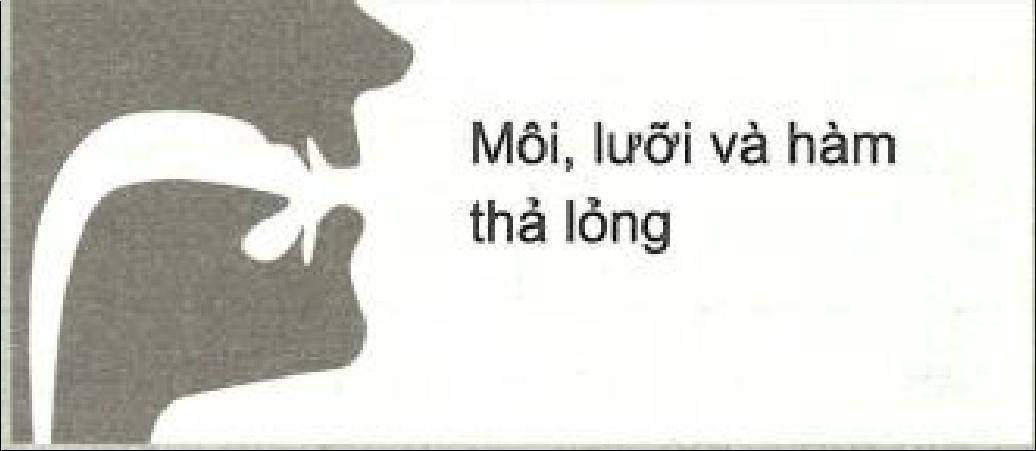
Động từ chỉ sự yêu thích/ không thích + V-ing
She loves sharing cookies with her neiqhbours.
love (yêu thích)
like (thích)
enjoy (thích)
hate (ghét)
(Cô thích chia sẻ bánh quy với hàng xóm của mình.)
Thev like playing video games in their free time.
(Họ thích chơi trò chơi điện tử trong thời gian rảnh rỗi.)
She enioys painting landscapes.

(Cô ấy thích vẽ tranh phong cảnh.)
He hates riding bicycles because he always sweats a lot.

(Cậu ấy ghét đi xe đạp vì cậu luôn đổ nhiều mồ hôi.)
Hobbies:

Cycling Arranging flowers Playing the guitar Gardening


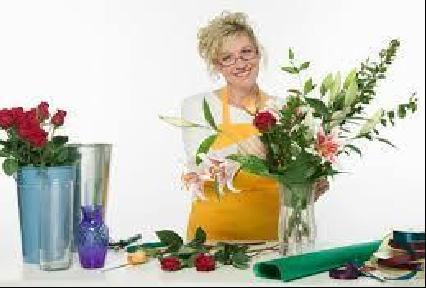
Playing
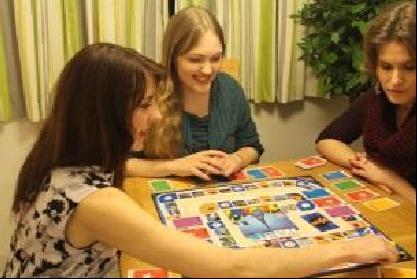
games Watching T.V

Listening to music Collecting stamps


DẠYKÈMQUYNHƠNOFFICIAL
17
Bird –watching Taking photos
Cooking Skating
board
Mountain climbing Playing football
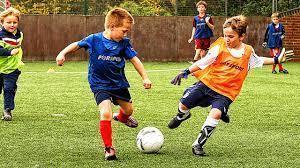
Ex I: Label the picture
Ex II: Choose the best answer
1.
a. playing badminton
b. playing tennis
c. playing football
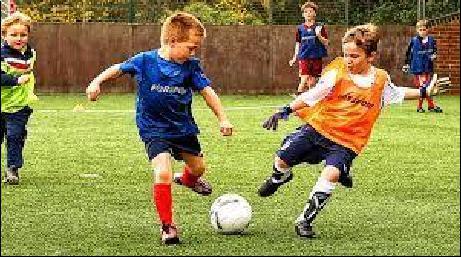
d. playing basketball
a. making pottery
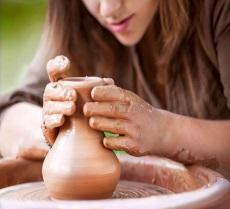
b. gardening

c. mountain climbing



d. bird-watching
a. listening to music

b. watching T.V
c. dancing
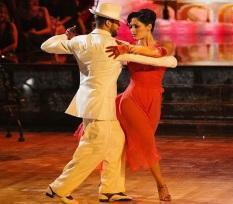

d. jogging
a. playing the guitar
b. cycling
c. making models
d. collecting stamps
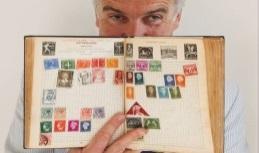
Collecting dolls Collecting bottles
a. collecting dolls

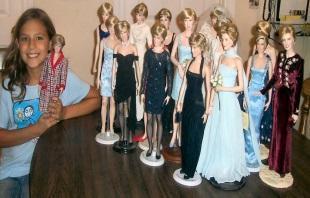
b. collecting bottles

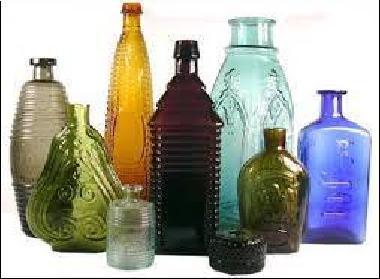
c. collecting stamps
d. collecting coins
a. riding a bike

b. taking photos

c. arranging flowers

d. ice –skating
a. carving wood

b. watering flowers
c. playing games
d. cooking

a. playing board games.
b. listening to music
c. reading books
d. mountain climbing
Ex III: Match
1. watch a. music
2. take
3. do
4. arrange
b. stamps
DẠYKÈMQUYNHƠNOFFICIAL
c. flowers
d. the birds
18
1.
2.
3.
4.
5.
6.
7.
8.
2.
3.
4.
5.
6.
7.
8.
5. collect e. the mountain
6. play f. photos
7. climb g. the gardening
8. listen to h. the guitar
Ex IV: Put the words in the correct column girl, today, world, October, collect, cleaner, gorilla, away, hurt, fur, wonderful, together, stir, ruler, barber, learn
Ex V: Say the words out loud and odd one out
1. A. permit B. summer
first
2. A. person B. certain
turn
teacher 3. A. about B. version
term 4. A. network B. against
5. A. birth B. journey
6. A. under B. little
7. A. dirty B. rather
8. A. perhaps B. power
purpose
early
Ex VI: Find the word which has a different sound in the part underlined
1. A. sure B. pressure C. nature
2. A. flight B. site C. chick
3. A. egg B. lend C. enter D. return
4. A. why B. write C. which D. world
5. A. other B. tough
Ex VII: Add more words to each list
moment D. love
1. Go: shopping,………………………………………………………………………………..
2. Play: games,………………………………………………………………………………….
3. Watch: T.V, …………………………………………………………………………………..
4. Listen to: music,…………………………………………………………………………….
5. Do: homework,……………………………………………………………………………..
6. Read: a book,…………………………………………………………………………………
7. Collect: stamps,…………………………………………………………………………….
8. Take: photos,…………………………………………………………………………………
9. Make: a cake,………………………………………………………………………………..
10. Write: a letter,……………………………………………………………………………..
Ex VIII: Complete the sentence with appropriate hobbies
1. This is an activity of working in a garden, especially for pleasure in the free time.
2. This is an activity of watching birds in their natural environment.……………………….
3. The action of making pots, dishes, vases made with clay and baked in an oven, especially when they are made by hand. ……………………..
4. You enjoy going around the shops to look for old stamps. Sometimes you buy some new stamps and you have different kinds of stamps at home.
……………………..
5. This is an activity of preparing food by heating it. You have delicious food after you finish the activity.
DẠYKÈMQUYNHƠNOFFICIAL
…………………
6. You go up toward the top of the mountain. ……………………….
19
/ə/ /ɜː/
C.
D. driver
C.
D.
C.
D.
C.
D.
search
church
C.
D.
refer
however
C.
D.
firm
different
C.
D.
dancer
order
C.
D.
ever
D. structure
D. high
C.
Ex IX: Put one of the verbs from the box in each gap. Use the correct form of the verb watch do play make collect read arrange listen take go
1. Jim …………………….to pop music in his bedroom at the moment.
2. …………………your friend………………….T.V every day? Yes, he does.
3. My brother likes ……………………..old stamps from different countries.
4. His father wants him ……………………homework before going to bed.
5. Catherine hates……………………..books in a dark room.
6. The children often …………………football in the school yard after the lessons.
7. …………………..she………………..the shopping with her mother now?
8. We sometimes………………….a bus to school.
9. My mother ………………………flowers beautifully.
10. I always ……………………thebed for my son before he goes to bed.
Ex X: Complete the passage using the words given in the box stories wonderful started simple read anything
My hobby is reading. I (1)…READ……….story books, magazines and newspapers. I read any kind of material that I find interesting. This hobby (2)…STARTED……………..when I was a little boy. I wanted my parents to read fairy tales and other (3)…STORIES……..……to me. Then I learnt to read by myself. I started with (4)…SIMPLE………….books. Soon, I could read simple fairy tales and other stories. Now, I read just about (5)……………..that is available. Reading helps me to learn about so many things that I don’t know. The (6)………………. things about is that I do not have to learn things in a hard way.
Ex
B. skating
museum
theatre
Ex XIII: Complete the sentence with the correct form of the word provided
1. How many ……………………..are there in a football team? PLAY
2. My friends likes …………………….glass bottles. COLLECT
3. I prefer mountain ……………………..to hiking. CLIMB
4. He thinks that mountain climbing is more ……………………than collecting things. CHALLENGE
5. She is a ……………………person and she can paint very well. CREATE
6. Jim enjoys …………………badminton with his classmates in the playground. PLAY
7. Carving shells is difficult and ……………………BORED
8. My grandparents do exercise in their …………………..time. FREEDOM
9. Yesterday, I bought some old bowls ……………….in open-air markets. CHEAP
10.Can you play any ………………….instrument? MUSIC
Ex XIV: Choose the best answer
1. I …………….collecting dolls to stamps.
DẠYKÈMQUYNHƠNOFFICIAL
A. prefer B. have
like
enjoy
20
XI: Odd one out 1. A. gardening B. bicycle C. cycling D. taking photos 2. B. cook B. feel C. watch D. play 3. A. swimming B. making models C. skating D. flowers 4. A. pottery B.
C.
D.
B.
C.
D.
B.
C.
D.
7. A.
B.
C.
D.
8.
B.
C.
D.
9.
C.
D.
10.A.cinema
C.
D.
mountain
valley
river 5. A. bottles
stamps
lorry
coins 6. A. guitar
games
piano
trumpet
carving wood
teacher
artist
architect
A. bicycle
helicopter
plane
eggshell
A. dancing B. swimming
amazing
cooking
C.
D.
2. Can you arrange these ……………and bring the vase into the room?
A. pens B. books C. flowers D. bags
3. Sara and Mary are ……………………of a mountain climbing club.
A. friends B. members C. hobbies D. students
4. They ask their classmates to ………………….about their hobbies.
A. make B. do C. open D. talk
5. David plays badminton with his friends two …………….a week.
A. times B. lessons C. minutes D. months
BÀI TẬP VẬN DỤNG FULL SKILL TỪ VỰNG (VOCABULARY)
I –Choose the best option to complete each of the following sentences.
E.g.: Martin never goes_________because he has a fear of heights.
A. ice-skating B. camping
. mountain climbing
. shopping
1.Don’t ever think gardening is a piece of_________. You must spend a lot of time taking care of your plants.
. art B. cake
. paper
2.It’s_________for a boy to have a hobby of playing dolls.
A. common B. natural
. typical
3. Jacob is a great artist. He is able to_________in both wood and stone.
. carve B. chop
4.It’s really dangerous if you go_________without being able to swim. A. skating B. surfing
. work
. unusual
5.My father usedto makeof planes, motorbikes and cars for me when I was a little boy. A. copies B. figures
models
images
6._________gives us beautiful plants, pleasant smelling flowers and fresh fruits and vegetables.
. Arranging flowers B. Bird-watching
7.His songs always have a strong_________. A. melody B. theme
. Gardening
. music
. Making model
8.It’s amazing that artists can carve on such_________material like empty eggshells. A. lightweight B. narrow
9.It’s nice to have someone you can_________your problems with. A. divide B. share
. distribute
. spend
10. Don’t miss this_________opportunity to become a member of our club. We recruit members only once a year. A. unique B. strange
11. Be careful with that vase -it’s very_________. A. light B. healthy
. private
. weak
. original
. fragile
DẠYKÈMQUYNHƠNOFFICIAL
12. My class has decided to make a_________of postcards and photographs on Vietnamese Teacher’s Day. A. pottery B. collage
. report
21
C
D
C
D
A
C
D
C
D
A
. decorate
. manufacture
C
D
. jogging
. camping
C.
D.
C
D
A
C
D
. composition
C
D
. durable
. fragile
C
D
C
D
C
D
C
D
. copy
13. Max_________the wood into the shape of a flower.
A. polished B. repaired C. carved D. cleaned
14. After I’d finished_________, there was dirt from the flower beds all over the path.
A. gardening B. surfing C. skating D. bird-watching
15. The main material for making_________is clay.
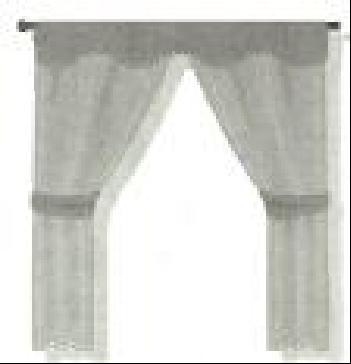



A. clothes B. pottery C. melody D. collage
II -Complete the following sentences using the given words in the box. bird-watching horse-riding ice-skating eggshells pottery board games
E.g.: My grandfather loves making__pottery__. All the vases as well as bowls and dishes in my house were made by him.

1.Children enjoy putting fireflies into_________and observe them lighting at night.
2.Playing_________like monopoly or chess helps to speed up your response.

3.All you really need for_________are time and a suitable pair of binoculars.
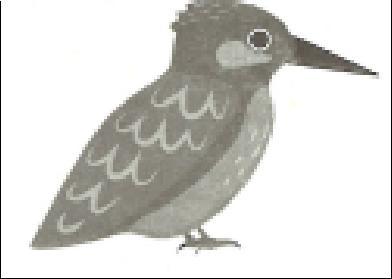
4.You should wear protective clothing before going_________to protect yourself in case of falling from the horse.
5.On winter days, we usually go_________on the lake at Jackson Park.
I -Write the word under each picture. Then put the word in the correct column.
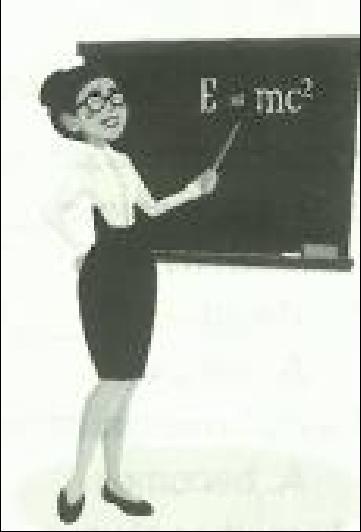

DẠYKÈMQUYNHƠNOFFICIAL

22
NGỮ ÂM (PRONUNCIATION)
E.g.: _computer_ 1. __________ 2. __________ 3. __________ 4. __________ 5. __________ 6. __________ 7. __________ 8. __________ 9. __________ /ə/ /ɜ:/
II -Choose the word which has the underlined part pronounced differently.
II -Compfete the following sentences, using present simpte or future ssmpfe forms of the verbs.
E.g.: Lina (do) __does__yoga twice a week.
1.Our plane (take) __________off at half past nine tomorrow morning.
2.My sister promises that she (teach) __________me how to play chess tomorrow.
3.I think I (buy) __________a new pair of badminton racketsnext Sunday because mine is broken.
4.How often__________you (go) __________mountain climbing?
5.My grandmother (not-like) __________spicy food.
6.John (learn) __________to carve eggshells this summer because he really likes this kind of art.
7.__________you (join) __________our guitar club this weekend?
8.Martin (play) __________football every Tuesday afternoon in the park near his house.
9.David (give) __________his younger sister a book as a birthday gift next week.
10. My mother always (collect) __________rags for me to make clothes for my dolls.
11. My parents don’t like (eat) __________out because they think it is not healthy.
DẠYKÈMQUYNHƠNOFFICIAL
12. I hate (play) __________cards with my elder brother because he always cheats.
23 Computer,
E.g.: A
B
C. another D. letter 1. A. Thursday B. surprise C. furniture D. burglar 2. A. occur B. pursue C. blur D. return 3. A. thunder B. another C. father D. reserve 4. A. worse B. visitor C. world D. worker 5. A. hurt B. surplus C. century D. burden 6. A. mother B. answer C. pepper D. nervous 7. A. world B. work C. actor D. worship 8. A. dessert B. daughter C. person D. prefer 9. A. dinner B. service C. term D. German 10. A. structure B. nature C. curly D. adventure 11. A. purpose B. injury C. picture D. figure 12. A. quarter B. manager C. certain D. differ 13. A. major B. author C. instructor D. worst 14. A. transfer B. disaster C. emerge D. terminal 15. A. gesture B. sunburn C. murder D. urgent
. herd
. paper
13. Martin enjoys (go) __________to the church at weekends.
14. My daughter loves (read) __________comics before going to bed.
15. My father loves (go) __________to football games, he even spends a lot of money going to big leagues all over the world.
16. Karen enjoys (shop) __________for clothes and shoes.
17. Simon likes (go) __________fishing with his dad at weekends.
18. Rosie hates (do) __________housework.
III -Complete the following sentences, using the correct form of the verbs m the box. Thereare some words you need to use twice. try go watch meet sleep do collect visit feed play
E.g.: My mother likes __doing__ yoga because it is really relaxing.
1. I hate__________shopping because it costs me a lot of money.
2.Ella just likes__________at home at weekends because she has to study hard during the week.
3.Mrs. Johnson enjoys__________colourful rugs. She often buys them in the market or on the Internet.
4.Children hate__________to school in winter mornings.
5.My mother loves__________new recipes, so my family has different dishes every day.
6.Lucy hates__________horror films as they make it impossible for her to sleep at night.
7.I don’t like__________tennis with my brother because I lose every time we play.
8.Lily enjoys__________people and__________newplaces, so she travels a lot.
9.My kids love__________the ducks whenever we visit our hometown.
10. Liam likes__________judo because it makes him become stronger.
B. KỸ NĂNG
DO YOU KNOW?
• Ikebana, meaning “living flower,” is one of many traditional hobbies enjoyed by native and nonnative Japanese people alike.
•It’s the art of flower arrangement. Ikebana embodies the feeling of the traditional Jap¬anese belief that there is beauty in simplicity and nature.
•You can find many places in Japan that offers Ikebana classes and take them alone or with friends. Ikebana is not only for women but also men too.
•If you want to enjoy the poetics and aesthetics of balancing natural shapes and colors, Ikebana may certainly be a hobby of interest.
DẠYKÈMQUYNHƠNOFFICIAL
24
IKEBANA
KỸ NĂNG ĐỌC (READING SKILLS)
I -Read the following passage and do the tasks below. Hassan has a very interesting hobby. He collects tropical fish! His bedroom has a gigantic aquarium all around the wall. He has been collecting fish since he was four. His first fish was an Angel fish. The only problem is that it can eat smaller fish. Hassan has visited a lot of different countries like Australia to dive in the beautiful weather there. He has always loved the ocean. Now, he’s fourteen. He has had his big aquarium for three years, since he was eleven.
Last year when Hassan was in Caribbean for his holiday, he saw sharks when he was diving. He wants to have an aquarium where he can keep one or two small sharks, but it’s quite difficult in England. He works as a volunteer at the aquarium of his local zoo. There he can feed the big fish. He hasn’t fed the sharks yet, because he is too young.
Part 1: Choose words from the text which mean the same as the following words.
1.very big__________
2.the sea__________
3.a glass home for fish__________
4.work without receiving any money__________
5.give food to animals__________
Part 2: Decide whether the statements below are TRUE (T) or FALSE (F).
1.Hassan has a boring hobby.
2.He spends all his holidays in England.
3.He helps in the zoo in the Caribbean.
4.He wants to have small sharks at home.
II -Read the passage and choose the best option to answer each of the following questions. Having a hobby that we enjoy brings us joy and enriches our lives. It gives us something fun to do during our leisure time and affords us the opportunity to learn new skills. We are very fortunate to have so many different options out there today. In fact,there are entire websites devoted to hobbies and interests.
DẠYKÈMQUYNHƠNOFFICIAL
The best way to cultivate a new hobby is to try something new. The world is full of wonderful, exciting activities that we can explore and adopt as our own. Of course, all of us are unique and, therefore, our interests and hobbies
25
Q
Q Q Q
vary. But once we find a hobby that we truly enjoy and are passionate about, we become hooked. It becomes part of our lives and captivates us in a very personal way.
1.What is the passage mainly about?
A. The importance of hobbies
C. Time to start a hobby
2.What can a hobby give you?
A. Leaisure time
C. More free time
B. The definition of hobbies
D. Hobbies and interests
B. Chance to afford new things
D. Something fun to do
3.What shoud we do if we want to cultivate a new hobby?
A. refer to websites
C. try something new
4.Our interests and hobbies vary because________.
A. the world is wonderful
C. each of us enjoys many things
5.What does the word “It” refer to?
A. An activity
B. A hobby
NGHE (LISTENING SKILLS)
LISTENING PART
B. check the options
D. participate in activities
B. there are many exciting things to explore
D. all of us are unique
C. A part
D. A personal way
Exercise 1: Listen and decide if each statement is true or false. (Track 01) No.
1. Angela walks in the park every morning.
2. There is a park near Angela’s house.
3. Angela usually takes the bus instead of cycling.
4. On Thursday evenings, Angela stays at home and chats with friends.
5. Angela likes hiking, but she does not do it much.
6. At weekends, Angela is healthier than usual.
7. Angela never goes hiking alone.
8. Many of Angela’s friends do not like hiking.
Exercise 2: Listen and tick to the correct box. (Track 02)
15 years old
11 years old
13 years old writing poem
DẠYKÈMQUYNHƠNOFFICIAL
26
KỸ NĂNG
Statements T F
˚ ˚
˚ ˚
˚ ˚
˚ ˚
˚ ˚
˚ ˚
˚ ˚
˚ ˚
Clara Tom Robert
dancing
playing football
taking pictures
reading comics drawing playing the piano
loving fine art
good at physical education
good at literature
KỸ NĂNG NÓI (SPEAKI NG SKI LLS)
GRADE 7 -UNIT 1 -MY HOBBIES –BẢN HS
I.VOCABULARY GETTING STARTED
1.amazing/əˈmeɪzɪŋ/ (adj): tuyệt vời
It’samazing.
2.make it yourself/meɪk ɪt jɔːˈself/ (v.phr): tự làm lấy
Did youmakeit yourself?
(Bạn đã tự làm nó đúng không?)
3.building dollhouses/ˈbɪl.dɪŋ ˈdɒlˌhaʊsiz/ (n.phr): xây nhà búp bê
My hobby isbuilding dollhouses.
(Sở thích của tôi là xây nhà búp bê.)
4.cardboard/ˈkɑːdbɔːd/
(n): bìa cứng, các-tông
All you need is somecardboardand glue.
(Mọi thứ bạn cần là một ít bìa cứng và hồ dán.)
5.creativity/ˌkriːeɪˈtɪvəti/
(n): sự sáng tạo
Then just use a bit ofcreativity.
(Sau đó chỉ cần tận dụng một ít sáng tạo nữa.)
creative (a) sáng tạo
6.horse-riding/ˈhɔːs raɪdɪŋ/
(n): cưỡi ngựa
I likehorse-riding.
(Tôi thích cưỡi ngựa.)
7.common/ˈkɒmən/
(adj): phổ biến, thịnh hành
Actually, it’s morecommonthan you think.
(Sự thật thì chúng phổ biến hơn bạn nghĩ đấy.)
8.collecting teddy bears/kəˈlektɪŋ ˈted.i /berz/ (n.phr): sưu tầm gấu bông
He likescollecting teddy bearsin his free time.
(Anh ấy thích sưu tầm gấu bông trong khi rảnh rỗi.)
DẠYKÈMQUYNHƠNOFFICIAL
9.make model/meɪk ˈmɒdl / (v.phr): làm mô hình
27
The children lovemaking models. (Những đứa trẻ thích thiết kế mô hình.)
10.collecting coins/kəˈlektɪŋ kɔɪnz/ (n.phr): sưu tầm đồng xu
My brother likescollecting coins.
(Anh trai tôi thích sưu tầm đồng xu.)
11.gardening/ˈɡɑːdnɪŋ/ (n): việc làm vườn
Gardeningis my hobby.
12.learn how to do something/lɜrn haʊ tu du ˈsʌmθɪŋ/ (v.phr): học cách làm việc gì
I want tolearn how toride.
(Tôi muốn học cách cưỡi ngựa.)
13.go to the club/goʊ tu ðə klʌb
(v.phr): đi câu lạc bộ
Igo to the Rider’s Clubevery Sunday.
(Tôi đến câu lạc bộ Rider mỗi Chủ nhật.)
A CLOSER LOOK 1
14.go jogging/goʊ ˈʤɑ:gɪŋ/
(v.phr): chạy bộ
Hegoes joggingwith his girlfriend everyday.
(Anh ấy chạy bộ với bạn gái mỗi ngày.)
15.do yoga/duːˈjoʊgə /
(v.phr): tập yoga
She likesdoing yoga.
(Cô ấy thích tập yoga.)
16.do judo/du ˈʤuˌdoʊ/
(v.phr): tập võ judo
My father lovesdoing judoto be healthier.
(Bố tôi thích tập judo để khỏe mạnh hơn.)
17.go camping/goʊ ˈkæmpɪŋ/ (v.phr): cắm trại
My sister likesgoing campingat the weekend. (Em gái tôi thích cắm trại vào cuối tuần.)
18.keep fit/kip fɪt/ (v.phr): giữ dáng
My mom enjoys doing yoga tokeep fit. (Mẹ tôi thích tập yoga để giữ dáng.)
19.surf/sɜːf/
(v): lướt sóng
His favorite hobby issurfing.
(Sở thích của anh ấy là lướt sóng.)
20.play the violin/pleɪ ðə vaɪəˈlɪn / (v.phr): chơi đàn vĩ cầm
Nam enjoysplaying the violin.
(Nam thích chơi đàn vĩ cầm.)
A CLOSER LOOK 2
21.rise/raɪz/
DẠYKÈMQUYNHƠNOFFICIAL
(v): mọc, nhô lên (mặt trời)
The sunrisesevery morning.
28
(Mặt trời mọc mỗi sáng.))
22.leave/liːv/
(v): rời khỏi
The trainleavesat 10 a.m.
(Xe lửa rời khỏi lúc 10 giờ sáng.)
23.flow through/floʊ θru/
(phr.v): chảy qua
The Red Riverflowsthrough Ha Noi.
(Con sông Red chảy qua Hà Nội.)
24.timetable/ˈtaɪmteɪbl/
(n): thời khóa biểu
We have a newtimetableeach term.
(Chúng tôi có một thời khóa biểu mới cho mỗi học kỳ mới.)
25.drawing class/ˈdrɔɪŋ klæs/
(n): lớp học vẽ
I have adrawing classevery Tuesday.
(Tôi có lớp học vẽ vào mỗi thứ Ba.)
26.set/set/
(v): lặn (mặt trời)
The sunsetsin the west every evening.
(Mặt trời lặn đằng Tây mỗi buổi chiều.)
27.play basketball/pleɪ ˈbæskətˌbɔl/
(v.phr): chơi bóng rổ
Trang and Minhplay basketballeveryday after school. (Trang and Minhchơi bóng rổ mỗi ngày sau giờ học.)
28.arrive/əˈraɪv/ (v): đến
The flight from Ho Chi Minharrivesat 10:30.
(Chuyến bay từ thành phố Hồ Chí Minh đến lúc 10:30.)
29.start/stɑːt/ = begin /bɪˈɡɪn/ (v): bắt đầu
Their lessonstartsat 9 a.m. (Bài học của họ bắt đầu lúc 9 giờ sáng.)
COMMUNICATION
30.be interested in something/bi ˈɪntrəstəd ɪn/ (phr): hứng thú về việc gì
I am notinterestedin art. (Tôi không mấy hứng thú về hội họa.)
31.read books/ri:d bʊks/ (v.phr): đọc sách
Do you likereading books?
(Bạn có thích đọc sách không?)
32.listen to music/ˈlɪsn/ /tuː/ /ˈmjuːzɪk/ (v.phr): nghe nhạc
I likelistening to musiceveryday, and Lan likes it too.
(Tôi thích nghe nhạc mỗi ngày và Lan cũng thích thế.)
DẠYKÈMQUYNHƠNOFFICIAL
33.exercise/ˈeksəsaɪz/ (v): tập thể dục
I don’t likeexercising, but Lan does.
29
(Tôi không thích tập thể dục nhưng Lan lại thích.)
SKILLS 1
34.belong to/bɪˈlɔŋ tu / (phr.v): thuộc về
Gardeningbelongs tothe group of doing things.
(Làm vườn thuộc nhóm làm một việc gì đó.)
35.insect and bug/ˈɪnˌsɛkt ænd bʌg/ (n): côn trùng và bọ
They can also learn aboutinsects and bugs.
(Họ có thể học tập về những loài côn trùng và loài bọ.)
36.outdoor activity/ˈaʊtdɔːr/ /ækˈtɪvɪti/
(n.phr): hoạt động ngoài trời
Gardening is one of the oldestoutdoor activities.
(Làm vườn là một trong những hoạt động ngoài trời lâu đời nhất.)
37.develop creativity/dɪˈvɛləp ˌkrieɪˈtɪvəti/
(v.phr): phát triển khả năng sáng tạo
Making modelsdevelops your creativity.
(Thiết kế mô hình phát triển khả năng sáng tạo.)
38.reduce stress/rɪˈdjuːs strɛs/ (v.phr): giảm căng thẳng
Collecting stampsreduces stress.
(Sưu tầm tem giúp giảm căng thẳng.)
39.patient/ˈpeɪʃnt/ (adj): kiên nhẫn
Gardening helps you be morepatient. (Làm vườn giúp bạn trở nên kiên nhẫn hơn.)
40.take on responsibility/teɪk ɒn rɪsˌpɒnsəˈbɪlɪti/ (v.phr): chịu trách nhiệm
When gardening, children learn to be patient andtake on responsibility. (Khi làm vườn trẻ con học được tính kiên nhẫn và tinh thần chịu trách nhiệm.)
41. join in/ʤɔɪnɪn/ (phr.v): tham gia
Gardening is also good because everyone in the family canjoin inand do something together. (Làm vườn cũng hữu ích vì mọi người trong gia đình có thể tham gia và làm một việc gì đó cùng nhau.)
42.maturity/məˈtʃʊərəti/ (n): sự trưởng thành
They learn to wait for the plants to grow tomaturity. (Họ học được cách chờ cây cối lớn lên và trưởng thành.)
42.make someone happy/meɪk ˈsʌmwʌn ˈhæpi/
(v.phr): làm ai đó vui vẻ
It reallymakes us happy.
(Nó thật sự làm chúng tôi thấy vui.)
44.spend time together/spɛnd taɪm təˈgɛðə/ (v.phr): dành thời gian cho nhau
We lovespending time together. (Chúng tôi thích dành thời gian cho nhau.)
45.valuable lesson/ˈvæljʊəbl ˈlɛsn/
DẠYKÈMQUYNHƠNOFFICIAL
(n.phr): bài học giá trị
This teaches themvaluable lessonsand responsibility.
30
(Việc này dạy họ những bài học giá trị và tinh thần trách nhiệm.)
46.water plants/ˈwɔːtə plɑːnts/
(v.phr): tưới cây
If they don’twater their plants,their plants will die.
(Nếu họ không tưới cây, cây của họ sẽ chết.)
SKILLS 2
47.benefit/ˈbenɪfɪt/
(n): lợi ích
What are itsbenefits?
(Vậy lợi ích của chúng là gì? )
48.duty/ˈdjuːti/
(n): nghĩa vụ, bổn phận
Responsibility is thedutyof taking care of something.
( Trách nhiệm là bổn phận chăm sóc một thứ gì đấy.)
49.share/ʃeə(r)/
(v,n): chia sẻ
Isharemy hobby with my friends.
(Tôi chia sẻ sở thích của mình với những người bạn của tôi.)
LOOKING BACK
50.footballer/ˈfʊtbɔːlə(r)/
(n): cầu thủ đá bóng
Minh is a goodfootballer.
(Minh là một cầu thủ đá bóng giỏi.)
51.play sport/pleɪ spɔːt / (v.phr): chơi thể thao
He enjoysplaying sport.
(Anh ấy thích chơi thể thao.)
52.run through/rʌn θruː/ (phr.v): chảy qua
The riverruns throughmy hometown. (Con sông chảy qua quê tôi.)
53.divide into/dɪˈvaɪd ˈɪn.tuː/ (v.phr): chia thành
Peopledivide hobbies intofour big groups: doing things, making things, collecting things and learning things. (Mọi người chia sở thích thành 4 nhóm lớn: làm việc, chế tạo, sưu tầm và học hỏi.)
PROJECT
54.brainstorm/ˈbreɪnstɔːm/ (v): động não
Brainstormsome interesting and easy-to-do hobbies. (Hãy suy nghĩ một số sở thích thú vị và dễ làm.)
55.take it up/teɪk ɪt ʌp/ (phr.v): bắt đầu một thói quen, sở thích
Try to persuade your classmates totake it up.
(Hãy cố gắng thuyết phục những người bạn cùng lớp thử một sở thich nào đó.)
56.discuss/dɪˈskʌs/ (v): thảo luận
Let’sdiscussinteresting hobbies.
DẠYKÈMQUYNHƠNOFFICIAL
(Hãy cùng thảo luận những sở thích thú vị.)
31
NGỮ PHÁP
THÌ HIỆN TẠI ĐƠN (PRESENT SIMPLE)
5. Cách dùng
Cách dùng Ví dụ
Dùng để diễn tả thói quen hoặc những việc thường
xuyên xảy ra ở hiện tại.
Dùng để diễn tả những sự vật, sự việc xảy ra mang tính chất quy luật.
Dùng để diễn tả các sự thật hiển nhiên, một chân lý, các phong tục tập quán, các hiện tượng tự nhiên.
Dùng để diễn tả lịch trình cố định của tàu, xe, máy bay,…
6. Dạng thức của thì hiện tại đơn.
We go to school everyday (Tôi đi học mỗi ngày)
This festival occurs every 4 years. (Lễ hội này diễn ra 4 năm một lần)
The earth moves around the Sun (trái đất xoay quanh mặt trời)
The train leaves at 8 am tomorrow (Tàu khởi hành lúc 8 giờ sáng mai.)
DẠYKÈMQUYNHƠNOFFICIAL
32
DẠYKÈMQUYNHƠNOFFICIAL
33
DẠYKÈMQUYNHƠNOFFICIAL
Page 1| 1
DẠYKÈMQUYNHƠNOFFICIAL
V V2
be (là) bring (mang đến) brought buy (mua) bought cut (cắt) do (làm) eat (ăn) find (tìm) found found (thành lập)
Page 1| 13
BÀI
TẬP VẬN DỤNG CƠ BẢN
EX1:
Cho dạng đúng của động từởdạng quá khứ(V2) và quá khứphân từ(V3), dùng bảng động từbất quy tắc nếu cần.
V3
go (đi) have (có) keep (giữ) kept lie (nằm) lie (nói dối) lose (mất) lost make (làm) move (di chuyển) play (chơi) provide (cung cấp) put (đặt) read (đọc) see (nhìn) sleep (ngủ) slept spend (dành) spent study (học) studied take (mang đi) think (nghĩ) thought travel (du lịch) visit (thăm) work (làm việc) write (viết)
EX2: Viết các câu sau ởthểkhẳng định (+), thểphủđịnh (-), thểnghi vấn (?) ởthì quá khứđơn.
1. (+) They decided to leave soon.
(-) ________________________________________________________________.
(?) ________________________________________________________________?
2. (+) ________________________________________________________________.
(-) There were not many homeless people here ten years ago.
(?) ________________________________________________________________?
3. (+) ________________________________________________________________.
(-) _________________________________________________________________.
(?) Did Tom’s grandfather use to be a soldier?
4. (+) My teacher started teaching here 6 years ago.
(-)_________________________________________________________________.
(?) _________________________________________________________________?
5. (+) Jane often went to school on foot 3 years ago.
(-) _________________________________________________________________.
(?) _________________________________________________________________?
6. (+) _________________________________________________________________.
(-) The cat didn’t want to eat yesterday.
(?) _________________________________________________________________?
7. (+) _________________________________________________________________.
(-) __________________________________________________________________.
(?) Did the train arrive late yesterday?
8. (+) _________________________________________________________________.
(-) There wasn’t anything left in the fridge.
(?) _________________________________________________________________?
EX3. Chia các động từtrong ngoặc ởthì quá khứđơn.
1. Last week, my mother (take) _____________ me to the zoo.
DẠYKÈMQUYNHƠNOFFICIAL
2. When we (arrive) _____________ at the party, there (not be) _____________ many people there.
Page 2| 13
3. My mother (say) _____________ that she (buy) _____________ me a new dress.
4. Last summer, my father (teach) _____________ me to drive.
5. I (start) _____________ doing charity when I (be) _____________ a first year student.
6. Many rich people (donate) _____________ money for this volunteer program.
7. My friend (ring) _____________ me yesterday and (invite) _____________ me to his party.
8. What (you/ watch) _____________ on TV last night?
9. When my father (be) _____________ young, he (use to) _____________ be the most handsome boy in the village.
10. _____________ (you/ go) to see the concert yesterday?
11. My performance (not be) _____________ really good. I (not feel) _____________ happy about it.
12. Jim (spend) _____________ the whole day taking after his brother.
13. I (write) _____________ a letter to my foreign friend but he (not write) _____________ back.
14. _____________ (they/ be) students of our school?
15. Yesterday, I (see) _____________ Jim at a bookstore.
EX4. Gạch lỗi sai trong các câu sau rồi sửa lại cho đúng.
1. My friend and I was at the hairdresser’s yesterday.
2. My sister in law used to had long hair but now she has short hair.
3. Did your father worked in a tobacco factory before he retired?
4. Why you didn’t come to the meeting last week?
5. My best friend and I use to hated each other when we first met.
6. Was Anna be successful with her project last week?
7. Yesterday morning I readed several chapters of the book “The little prince”.
8. Last summer we involved in community service in our neighborhood, so we did go on holiday.
EX5. Hoàn thành câu với những động từcho sẵn ởthì quá khứđơn (thểkhẳng định hoặc phủđịnh). disturb put like be hold have decide sleep stay cost
1. It was freezing outside, so I ___________ on my coat.
2. My mother was very busy yesterday, so I ___________ her.
3. Yesterday was Mary’s birthday but she ___________ a party.
4. We were exhausted, so we ___________ to leave the party early.
5. The bed was very uncomfortable. Tim ___________ well.
6. The musical wasn’t very good. I ___________ it much.
7. The restaurant wasn’t very expensive. It ___________ much to have dinner there.
8. I had to look after my little sister yesterday, so I ___________ time to call you.
9. It ___________ hard to lift the boxes. They weren’t very heavy.
10. It was raining heavily, so I ___________ in.
EX6. Sắp xếp các từcho sẵn thành câu hoàn chỉnh.
1. many/ went/ to/ volunteer/ ,/ Last year/ the/ and/ flooded area/ free food/ people/ gave to/./
2. rebuild/ helped/ houses/ They/ trees/ also/ plant/ and/ people/./
3. people/ donated/ generous/ for/ people/ Many/ poor/ money/./
DẠYKÈMQUYNHƠNOFFICIAL
4. I/ joined/ a student/ ,/ was/ When/ charitable work/ I/ often/ in/./
Page 3| 13
5. my friends/ used to/ remoted areas/ travel/ help/ to/ to/ people there/ I/ with/./
6. mountainous/ for/ areas/ weeks/ We/ in/ stayed/ the/./
7. the chidren/ read/ there/ We/ taught/ and/ write/ to/./
8. a volunteer/ was/ a/ experience/ wonderful/ Being/./
9. I/ busy/ graduated/ was/ After/ ,/ I/ very/./
10. I/ Now/ do/ still/ charity/ my/ in/ hometown/./
VOCABULARY AND PRONUNCIATION
Quy tắc và cách phát âm đuôi -ED
Có3 cách phát âm đuôi -EDlà:/ɪd/ , /t/hay/d/.-EDsẽđược đọc là/t/(vô thanh) hoặc/d/(hữu thanh) phụthuộc vào âm kết thúc của động từlàâm vô thanhhayâm hữu thanh.
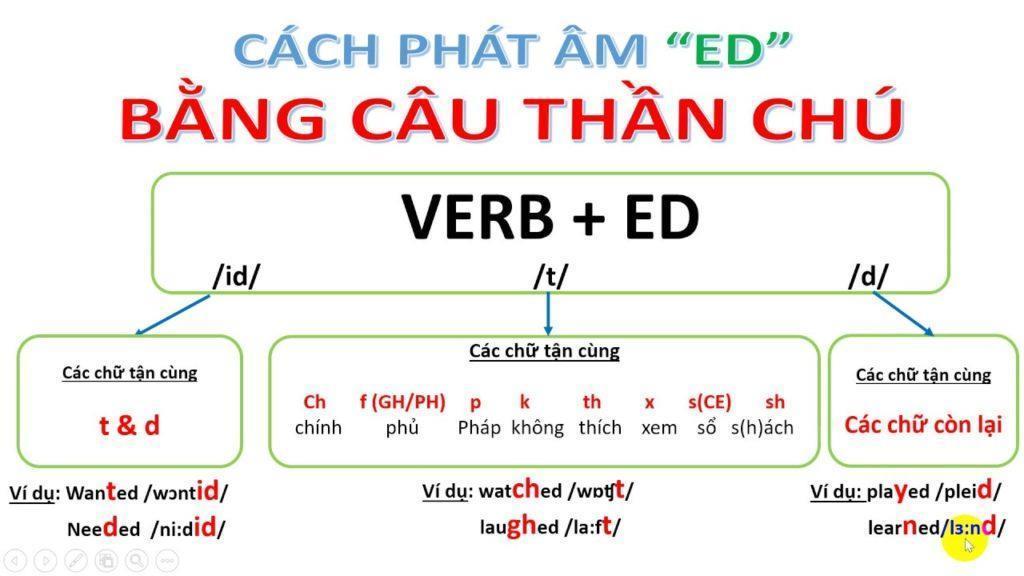
m vô thanh:Nghĩa là những âm mà cổhọng bạn không rung khi bạn nói. Bạn đặt tay lên cổhọng và phát âm chữP. Bạn sẽnhận thấy âm này bật ra bằng hơi từmiệng mà không phải từcổhọng. Âm hữu thanh:Nghĩa là những âm mà khi nói, chúng ta sẽsửdụng dây thanh quản và tạo ra âm trong cổ. Bạn có thểđặt tay lên cổhọng và phát âm chữL. Bạn sẽnhận thấy cổhơi rung rung. Đó chính là âm hữu thanh.
Quy tắc 1: -ED đọc là /ɪd/ Một động từtận cùng bằng/t/hay/d/thì -ed sẽđược đọc là/ɪd/. Vì một chữđã tận cùng là ‘t’ và ‘d’ thì chúng ta không
thểđọc là /t/ hoặc /d/ được. Bởi lẽngười nghe sẽrất khó nhận biết. Hơn nữa khó có thểđọc 2 âm ‘t’ hoặc 2 âm ‘d’ kế bên nhau.
–Ví dụ: Wanted /ˈwɒn.tɪd/, Needed /ˈniː.dɪd/, Added /ædɪd/,…
Quy tắc 2: -ED đọc là /t/
Nếu một từkết thúc bằng một âm vô thanh, thì -ed sẽđược đọc theo cách vô thanh. Nghĩa là chúng ta sẽđọc thành /t/.
Cụthể, những từkết thúc bằng các âm:/ʧ/, /s/, /k/, /f/, /p/, /θ/, /∫/thì -ed sẽđược đọc là/t/.
–Ví dụ: Watched /wɒtʃt/, Missed /mɪst/, Hoped /hoʊpt/, Coughed /kɔːft/, Fixed /fɪkst/,…
Quy tắc 3: -ED đọc là /d/
Nếu một từkết thúc bằng một âm hữu thanh, thì -ed sẽđược đọc theo cách hữu thanh. Nghĩa là những âm đuôikhông
DẠYKÈMQUYNHƠNOFFICIAL
thuộcquy tắc 1 và quy tắc 2thì ta sẽđọc là/d/.
Page 4| 13
–Ví dụ: Lived /lɪvd/, Allowed /əˈlaʊd/,…
Các trường hợp ngoại lệvềphát âm đuôi ED
Đuôi-EDtrong các động từsau khisửdụng như tính từsẽđược phát âm là/ɪd/. Một sốtừngoại lệnhư:aged, blessed, crooked, dogged, learned, naked, ragged, wicked, wretched.
í dụ: An aged man /ɪd/, A blessed nuisance /ɪd/, A dogged persistence /ɪd/,…
Nhưng khi sửdụng như động từ, ta áp dụngquy tắc phát âm thông thườngnhư các quy tắc ởtrên nhé.
Ví dụ: He aged quickly /d/, He blessed me /t/, They dogged him /d/, He has learned well /d/.
Lưu ý:
Một sốtừkết thúc bằng -ed được dùng làm tính từ/danh từ, đuôi -ed được phát âm là /id/:
1. aged /eɪdʒid/ (a): cao tuổi, lớn tuổi aged /eɪdʒd/ (Vpast): trởnên già, làm cho già cỗi
2. blessed /blesid/ (a): thần thánh, thiêng liêng
3. crooked /krʊkid/ (a): cong, oằn, vặn vẹo
4. dogged /dɒɡdi / (a): gan góc, gan lì, bền bỉ
5. naked /neikid/ (a): trơ trụi, trần truồng
6. learned /lɜːnid/ (a): có học thức, thông thái, uyên bác learned /lɜːnd/ (Vpast): học
7. ragged /ræɡid / (a): rách tảtơi, bù xù
8. wicked /wikid/ (a): tinh quái, ranh mãnh, nguy hại
9. wretched /ˈretʃɪd/ (a): khốn khổ, bần cùng, tồi tệ
10. beloved /bɪˈlʌvɪd/ (a): yêu thương
11. cursed /kɜːst/ (a): tức giận, khó chịu
12. rugged /ˈrʌɡɪd/ (a): xù xì, gồghề
13. sacred /ˈseɪkrɪd / (a): thiêng liêng, trân trọng
14. legged /ˈleɡɪd / (a): có chân
15. hatred /ˈheɪtrɪd / (a): lòng hận thù
16. crabbed /ˈkræbid / (a): càu nhàu, gắt gỏng
Exercise 1: Say the following words out loud and the put them in the correct column according to the sound of the adjective or regular past “ed”
amazed listened danced stopped reiterated pleased boasted looked delighted wanted pointed packed asked naked drained tripped shouted played covered opened laughed wasted screamed placed
Exericse 2: Choose the word whose underlined part is pronounced differently from the others
DẠYKÈMQUYNHƠNOFFICIAL
Page 5| 13
/t/ /d/ /id/
1. A.
B.
C. received D. hoped 2. A.
B. knocked C. played D. occurred 3. A. rubbed B. tugged C. stopped D. filled 4. A. dimmed B. travelled C. passed D. stirred 5. A. tipped B. begged C. quarrelled D. carried
arrived
believed
opened
DẠYKÈMQUYNHƠNOFFICIAL
Page 6| 13 6. A. tried B. obeyed C. cleaned D. asked 7. A. packed B. added C. worked D. pronounced 8. A. watched B. phoned C. referred D. followed 9. A. agreed B. succeeded C. smiled D. loved 10. A. laughed B. washed C. helped D. weighed 11. A. walked B. ended C. started D. wanted 12. A. killed B. hurried C. regretted D. planned 13. A. visited B. showed C. wondered D. studied 14. A. sacrificed B. finished C. fixed D. seized 15. A. needed B. booked C. stopped D. washed 16. A. loved B. teased C. washed D. rained 17. A. packed B. punched C. pleased D. pushed 18. A. filled B. naked C. suited D. wicked 19. A. caused B. increased C. practised D. promised 20. A. washed B. parted C. passed D. barked 21. A. killed B. cured C. crashed D. waived 22. A. imagined B. released C. rained D. followed 23. A. called B. passed C. talked D. washed 24. A. landed B. needed C. opened D. wanted 25. A. cleaned B. attended C. visited D. started 26. A. talked B. fished C. arrived D. stepped 27. A. wished B. wrapped C. laughed D. turned 28. A. considered B. rescued C. pulled D. roughed 29. A. produced B. arranged C. checked D. fixed 30. A. caused B. examined C. operated D. advised 31. A. discovered B. destroyed C. developed D. opened 32. A. repaired B. invented C. wounded D. succeeded 33. A. improved B. parked C. broadened D. encouraged 34. A. delivered B. organized C. replaced D. obeyed 35. A. painted B. provided C. protected D. equipped 36. A. tested B. marked C. presented D. founded 37. A. used B. finished C. married D. rained 38. A. allowed B. dressed C. flashed D. mixed
Ex
the word which has a different sound in the part underlined
DẠYKÈMQUYNHƠNOFFICIAL
Page 7| 13 39. A. switched B. stayed C. believed D. cleared 40. A. recommended B. waited C. handed D. designed 41. A. annoyed B. phoned C. watched D. remembered 42. A. hurried B. decided C. planned D. wondered 43. A. posted B. added C. managed D. arrested 44. A. dreamed B. neglected C. denied D. admired 45. A. admitted B. advanced C. appointed D. competed 46. A. announced B. apologized C. answered D. argued 47. A. complained B. applied C. compared D. polished 48. A. booked B. watched C. jogged D. developed 49. A. contributed B. jumped C. introduced D. vanished 50. A. whispered B. wandered C. sympathized D. sentenced 51. A. worked B. wanted C. stopped D. asked 52. A. opened B. knocked C. played D. occurred 53. A. talked B. watched C. lived D. stopped 54. A. covered B. installed C. described D. decorated 55. A. claimed B. warned C. occurred D. existed 56. A. carried B. looked C. managed D. opened 57. A. pleased B. smoked C. stopped D. missed 58. A. waited B. mended C. objected D. faced 59. A. pleased B. erased C. increased D. amused 60. A. arrived B. believed C. received D. hoped VOCABULARY
I:Find
1. A. carrot B. candy C. patience D. cook 2. A. keep B. know C. knife D. knight 3. A. watch B. chemistry C. change D. children 4. A. healthy B. weather C. together D. these 5. A. invite B. find C. mind D. chin 6. A. luck B. trumpet C. curious D. hug 7. A. rubbish B. huge C. mug D. sum 8. A. horror B. actor C. lorry D. mirror 9. A. recycle B. elderly C. daily D. dizzy 10. 10.A. kangarooB. goose C. choose D. flood Ex II:Choose the phrases
pictures below Homeless people Clean the streets Plant trees Disabled people Volunteer work Elderly people Flooded area Donate blood
that match the
Ex III:Put the words in the right groups environment, benefit, provide, activity, donate, homeless, encourage, charitable, protect, community, project, problem, disabled, traffic, organization, public, program, wonderful
Ex V:Match
1.plant
2.recycle

3.improve
4.clean
5.collect
6.donate
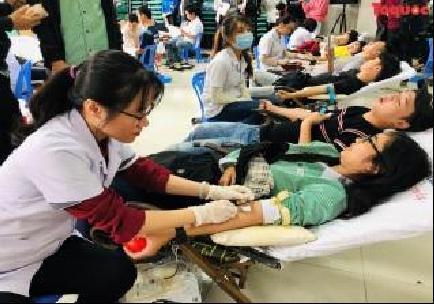
7.help
8.visit
Ex VI:Add more words to each list
a. the health
b. clothes and money
c. relatives and friends
d. rubbish
e. old and weak people
f. trees
g. the streets
h. old bottles
1. Recycle: glass,……………………………………………………………………………….
2. Donate: money,…………………………………………………………………………….
3. Collect: stamps,…………………………………………………………………………….
4. Help: elderly people,……………………………………………………………………..


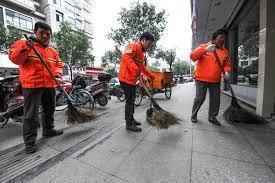

5. Visit: grandparents,……………………………………………………………………….
6. Clean: the house,…………………………………………………………………………..
Ex VII:Complete the sentence with the correct form of the word provided
1. We have just seen an ………………….……film. INTEREST
2. George looks ………………….because he has a bad mark. HAPPY
3. Does he enjoy………………….stamps? COLLECT
DẠYKÈMQUYNHƠNOFFICIAL
4. …………………people have no home to stay in. HOME
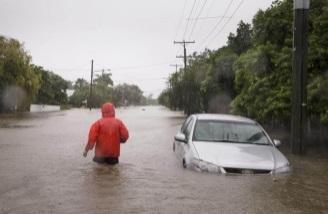
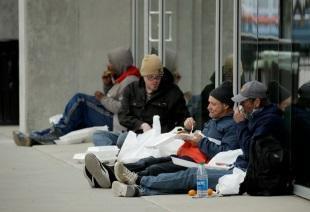
Page 8| 13
1.
2.
3.
4.
5.
6.
7.
8.
Noun Verb Adjective
5. He is a volunteer because he is willing to help other people without…………………….PAY
6. My idol is a famous …………………….in the world.ACT
7. Be ……..…………! The dishes are going to fall. CARE
Ex VIII:Choose one word that has different word form from others
1. A. environmentB. protect C. encourage
2. A. rubbish
3. A. benefit
5. A. clothes
6. A. amazing
7. A. careful
litter C. recycle
service
donate
garbage
Ex IX:Fill in the gaps with the words in the box project flooded offer donating transport homeless reduce areas
1. We are helping people in …………………areas in Vietnam.
2. What can the government do to …………………..traffic jam in big cities?
3. The government can encourage people to use more public………..……….to reduce traffic jams.
4. How about ………..books and clothes to the children in remote areas?
5. Our class started a community …………..….…..in Hanoi last year.
6. The group plant more trees in public ………..…..where the whole neighborhood can enjoy them.
7. Last week my friends and I cooked a meal at a shelter for ………..………youths and families.
8. Some youngpeople …………………. meals at 15,000 VND for the poor people in their province.
Ex X: Make a sentence with the given word
1. Donate
2. Recycle
3. Plant
4. Clean
5. Encourage 6. Help
………………………………………………………………………………………………………………
Ex XI: Choose the best answer
1. Community service is the work you do for the ……………..of the community.
A. problems B. solutions C. benefits D. causes
2. I’m a member of a …………………..that helps street children.
A. organization B. show C. talk D. programme
3. I’m sure that the project will ………………..a big difference.
A. make B. have C. do D. take
4. It is a non-profit organization that ………………..the environment.
A. provides B. protects C. helps D. supports
5. My classmates and I have ……………..books and old clothes for street children.
A. used B. had C. collected D. carried
6. There are many activities that individuals or organizations ……………..to benefit the community.
A. do B. have C. take D. make
7. The young people love doing volunteer…………………..in the countryside.
A. task B. job C. work D. responsibility
DẠYKÈMQUYNHƠNOFFICIAL
8. My brother sometimes …………………blood at a local hospital.
Page 9| 13
D.
D.
B.
B.
C.
D.
B.
C.
D.
program
provide 4. A. community
charitable
project
service
B.
C.
D.
money
donate
medicine
B.
D.
organizationC. individual
member
C.
D.
B. transport
homeless
disabled
………………………………………………………………………………………………………………
………………………………………………………………………………………………………………
A. raises B. provides C. helps D. donates
9. Traditional volunteer activities include ………………money for people in need.
A. raising B. helping C. making D. borrowing
10.She loves ……………………postcards and selling them in the market.
A. having B. giving C. cutting D. making
BÀI TẬP ÁP DỤNG KỸNĂNG
B. KỸNĂNG
DO YOU KNOW?
WHAT US COMUNITY SERVICE
•Community service is a non-paying job performed by one person or a group of people for the benefit of their community or its institutions. Community service is different from volunteering, since it is not always performed on a voluntary basis.
• Community service is a non-paying job performed by one person or a group of people for the benefit of their community or its institutions.
•It may be performed for a variety of reasons like citizenship requirements, a substitution of criminal justice punishments, requirements of a school or class, and requirements for the receipt of certain benefits.
KỸNĂNG ĐỌC (READING SKILLS)
I-Choose the best answer to each of the following questions.
VOLUNTEERING TO HELP DESERT ANIMALS
Cameron Oliver had a passion for the welfare of desert animals. He received the Abu Dhabi Award as a com¬munity hero for his contributionsto society. However, the biggest reason for his fame may be that he was very small. He was only 11 years old when he began his own campaign to save camels from eating plastic. “I found out that camels are eating rubbish people leave behind and it’s killing them,” says the South African boy. “I love animals, so when I saw how the camels were dying, I thought I had to do something and make a difference to save them.”
He was very excited about receiving this award. He said, “My life changed after I received the award, because it opened a lot of doors for me. Many people contacted and helped me promote my campaign.”
(ESL Printables)
1.What did Cameron Oliver start when he was 11 years old?
A. the Abu Dhabi Award
C. a campaign to save camelsD. a camel farm
2.In line 2, what does the word “contributions” mean?
A. changes in something that make it worse
B. awards that somebody gets
C. things that are added to something else
D. actions that help to cause or increase something
B. being a community hero
3.The main reason why Cameron Oliver became famous was that_________.
A. he was very intelligent
C. he was very handsome
B. he was very young
D. he was very friendly
4.According to the text, the main goal of his campaign is to_________.
A. protect camels from eating plastics
B. keep the desert clean
C. create a camel farm
D. protect the environment
5.How did Cameron’s life change after he received the award?
A. He became rich.
B. He did not have to open doors anymore.
C. He was known by more people.
D. He did not have to go to school.
II -Read the passage and decide whether the statements are True (T) or False (F).
DẠYKÈMQUYNHƠNOFFICIAL
Page 10| 13
Community service is when you work for free to help benefit the public or your community. Usually, students who choose to do community service do so as volunteers, meaning that they choose to help out because they want to do so. Community service can have a lot of positive effects on students, such as helping them to develop skills, making contacts, and allowing them to improve the quality of life of others. You probably know some students In your school who choose to volunteer their free time through community service. There are many ways that you can do this, such as joining a non-profit organization, working with a church group, or you can choose a cause and create your own service project. Volunteer work can range from the relatively simple, likehelping coach the football team at your old junior high, to the much more complex, like starting a non-profit that helps homeless people in your area.
1.Students often do community service as volunteers.
2.Community service allows them to improve the quality of life of others.
3.No students choose to volunteer their free time through community service.
4.Joining a non-profit organization is the only way to do community service.
5.There are many types of volunteer work, both simple and complex ones.
KỸNĂNG NGHE (LISTENING SKILLS)
Exercise 1: Listen and complete the text. (Track 05)
VOLUNTEERING IS GOOD FOR YOUR MIND AND BODY
Volunteering provides many (1) ............................ to both mental and (2) ............................ health.
Volunteering combats (3) ............................ . Volunteering keeps you in regular contact with others and helps you develop a solid support system, which (4) ............................ you against depression.
Volunteering makes you happy. By measuring hormones and (5) ............................ activity, researchers have discovered that being (6) ............................ to others delivers immense pleasure. Human beings are hard-wired to give to others. The more we give, the happier we feel.
Volunteering increases (7)......................... . You are doing good things for others and the community, which provides a natural sense ofaccomplishment. Your (8) ............................ as a volunteer can also give you a sense of (9) ............................ and identity. And the better you feel about yourself, the more likely you are to have a (10) ............................ view of your life and future goals.
Exercise 2: Listen and complete the sentences with no more than 3 words. (Track 06)
1.The shop is called “Tinh Thuong ............................”
2.If you do volunteer work at Tinh Thuong Charity, you can meet ............................ and have ............................
3.Tinh Thuong Charity has more than 10,000 ............................
4.Tinh Thuong Charity has 500 ............................
5.TinhThuong Charity fund is to help ............................ and ............................ children and young people.
6.Some volunteers do their volunteer work ............................ hours a week, some do ............................ hoursaweek.
7.One of the volunteer work at Tinh Thuong Charity is to ask and answer the phone for ............................ questions.
8.As a volunteer of Tinh Thuong Charity, you can improve your ............................ skills such as problem solving ability, and customer service skill.
KỸNĂNG NÓI (SPEAKING SKILLS)
Think about a problem in your city/ the city nearby. Then talk about volunteer activities that you can do to help solve the problem.
You can use the following questions as cues:
•What is the problem?
• What are the effects of the problem?
•What volunteer activities can you do to solve the problem?
Useful languages:
Useful vocabulary
• so much litter on streets, uneducated children, too many cars on the road, heavy floods
• pollute the environment, affect their development, traffic jams, destroyed houses
Useful structures
• There is so much...on/at...
• This is a...because...
• ...is the cause of...
DẠYKÈMQUYNHƠNOFFICIAL
• ...can encourage..., so it also affects...
• To deal with it, I want to...
Page 11| 13
❑ ❑ ❑ ❑ ❑
• clean up streets and recycle rubbish, donate books and tutor children, direct the traffic, raise money to build houses for homeless people
• I will...to deal with it.
• I can also ask if...can...to...
• I will...to...
Complete the notes:
Structures of the talk Your notes
What is the problem?
What are the effects of the problem?
What volunteer activities can you do to solve the problem?
Now you try!
Give your answer using the following cues. You should speak for 1-2 minutes.
1.There is so much...on/at...
2.This is a...because...
3....can encourage..., so it also affects...
4.To deal with it, I want to...
5.I can also ask if...can...to...
Now you tick!
Did you ...
❑answer all the questions in the task?
❑give some details to each main point?
❑speak slowly and fluently with only some hesitation?
❑use vocabulary wide enough to talk about the topic?
❑use various sentence structures (simple, compound, complex) accurately?
❑pronounce correctly (vowels, consonants, stress, intonation)?
Let’s compare!
Finally, compare with the sample answer on page 164.
VIẾT (WRITING SKILLS)
I-Complete each of the following sentences using the cues given. You can change the cues and use other words in addition to the cues to complete the sentences.
1.We/ take/ part/ a clean-up campaign/ last week.
2.We/ removed/ litter/ public areas/ such as/ streets/ parks.
3.We/ also/ planted/ many/ tree/ along the roads/ the city.
4.This/ volunteer activity/ help/ keep the environment/ safe/ clean/ healthy.
5.I/ like/ do/ this activity/ because/ it/ give/ me/ a chance/ contribute/ the community.
II-Write a short paragraph (60-80 words) to talk about the volunteer activity you took part in. You can use the following questions as cues:
* What volunteer activity did you take part in?
* How did you do it?
* What are the benefits of it?
DẠYKÈMQUYNHƠNOFFICIAL
Page 12| 13
KỸNĂNG
→ ________________________________________________________
→ ________________________________________________________
→ ________________________________________________________
→ ________________________________________________________
→ ________________________________________________________
DẠYKÈMQUYNHƠNOFFICIAL
Page 13| 13
UNIT 4: MUSIC AND ARTS (STUDENTS ’S FILE) VOCABULARY GETTING STARTED
1.listening to music /ˈlɪsnɪŋ tuː ˈmjuːzɪk/(v.phr): nghe nhạc
I'm listening to music.(Tôi đang nghe nhạc.)
2.classical music /ˈklæsɪkəl ˈmjuːzɪk/(n): nhạc cổ điển
I like classical music.(Tôi thích nhạc cổ điển)
3.play the piano /pleɪ/ /ðə/ /pɪˈænəʊ/(v.phr): chơi đàn piano
I often play the piano in my spare time.(Tôi thường chơi đàn piano trong lúc rảnh rỗi.)
4.play musical instruments /pleɪ ˈmjuːzɪkəl ˈɪnstrʊmənts/chơi nhạc cụ
Wow. I can't play musical instruments.(Ôi, tôi không thể chơi nhạc cụ.)
5.taking photos /ˈteɪkɪŋ ˈfəʊtəʊz/(v.phr): chụp hình
I like painting and taking photos.(Tôi thích vẽ và chụp hình.)
6.different from /ˈdɪfrənt frɒm(adj.phr): khác nhau
They seem quite different from each other (Chúng dường như khá khác nhau.)
7.landscapes /ˈlænskeɪps/(n): phong cảnh
Landscapes and animals, just for pleasure, you know.(Phong cảnh và động vật chỉ để vui bạn biết không.)
8.art gallery /ˈɑːt ˌɡæl.ər.i/(n.phr): triễn lãm nghệ thuật
Um, maybe we should go to an art gallery next weekend? (Lẽ ra chúng ta nên đi triễn lãm nghệ thuật vào tuần tới?.)
9.paintbrush /ˈpeɪntbrʌʃ/(n): cọ vẽ
We use the paintbrush to paint the picture.(Chúng tôi sử dụng cọ sơn để sơn bức tranh.)
10.talented /ˈtæləntɪd/(adj): tài năng
My friend David is very talented.(Bạn của tôi David rất tài năng.)
11.artistic /ɑːˈtɪstɪk/(adj): nghệ thuật
How artistic are you?(Bạn có tài nghệ nào?)
12.playing computer games /ˈpleɪɪŋ kəmˈpjuːtə geɪmz/(v.phr): chơi trò chơi điện tử
My hobby is playing computer games (Sở thích của tôi là chơi trò chơi điện tử.)
13playing sports /ˈpleɪɪŋ spɔːts/(v.phr): chơi thể thao
Do you like listening to music or playing sports?(Bạn thích nghe nhạc hay chơi thể thao?.)
14.book fair / bʊk feə/(n.phr): hội chợ sách
I prefer going to a book fair.(Tôi thích đi hội chợ sách hơn.)
15.hard-working /ˌhɑːd ˈwɜːkɪŋ/(adj): siêng năng
I describe myself as hard-working.(Tôi là một người siêngnăng.)
16.creative /kriˈeɪtɪv/(adj): sáng tạo
I describe myself as creative.(Tôi là một người sáng tạo.)
17.musician /mjuˈzɪʃn/(n): nhạc sĩ
I want to be a musician when I grow up.(Tôi muốn trở thành nhạc sĩ khi tôi lớn lên.)
18.engineer /ˌendʒɪˈnɪə(r)/(n): kỹ sư
I want to be an engineer when I grow up.(Tôi muốn trở thành kỹ sư khi tôi lớn lên.)
A CLOSER LOOK 1
19.concert hall /ˈkɒnsə(ː)t hɔːl/(n): phòng hòa nhạc
She goes to the concert hall every Sunday.(Cô ấy đến phòng hòa nhạc mỗi chủ nhật.)
20.actress /ˈæktrəs/(n): nữ diễn viên
I want to be an actress when I grow up.(Tôi muốn trở thành một nữ diễn viên khi tôi lớn lên.)
21.composer /kəmˈpəʊzə(r)/(n): nhà soạn nhạc
DẠYKÈMQUYNHƠNOFFICIAL
She wants to be a famous composer when she grows up.(Cô ấy muốn trở thành một nhà soạn nhạc nổi tiếng khi cô ấy lớn lên.)
22orchestra /ˈɔːkɪstrə/(n): dàn nhạc
Page 1| 15
The orchestra will perform its final concert of the season tomorrow.(Dàn nhạc sẽ biểu diễn buổi hòa nhạc cuối cùng vào ngày mai.)
23.photography /fəˈtɒɡrəfi/(n): nghề chụp ảnh
Her hobbies include hiking and photography.(Sở thích của cô ấy bao gồm đi bộ đường dài và chụp ảnh)
24.share /ʃeə(r)/(v): chia sẻ
Let’s share the picture we took last week.(Cùng nhau chia sẻ bức tranh mà chúng ta chụp vào tuần trước nào.)
25visual /ˈvɪʒuəl/(adj): nhìn thấy
I have a very good visual memory.(Tôi có một trí nhớ về hình ảnh rất tốt.)
26.come to a decision /kʌm tuː ə dɪˈsɪʒən/(v.phr): đưa ra quyết định
We finally came to a decision.(Chúng tôi cuối cùng đã đưa ra quyết định.)
27.perform /pəˈfɔːm/(v): biểu diễn
It was a pleasure to listen to the musicians performing yesterday.(Thật là vinh dự khi được nghe nhạc sĩ biểu diễn hôm qua.)
28.portrait /ˈpɔːtreɪt/(n): chân dung
I like your portrait (Tôi thích ảnh chân dung của bạn.)
29.scientist /ˈsaɪəntɪst/(n): nhà khoa học
She is a talented scientist.(Cô ấy là một nhà khoa học tài ba.)
30.poet /ˈpəʊɪt/(n): nhà thơ
He was also a painter and a poet.(Anh ta còn là họa sĩ và nhà thơ.)
A CLOSER LOOK 2
31.exciting /ɪkˈsaɪtɪŋ/(adj): sôi nổi
Classical music is not as exciting as rock.(Nhạc cổ điển thì không mấy sôi nổi bằng nhạc rock.)
32.folk music / fəʊk 'mju:zɪk /(n.phr): nhạc dân gian
You like folk music, don’t you?(Bạn thích nhạc dân gian đúng không?.)
33.pop music /pɒp ˈmjuːzɪk/(n): nhạc pop
I like pop music.(Tôi thích nhạc pop.)
34.country music / 'kʌntri 'mju:zɪk /(n): nhạc đồng quê
It is not like country music.(Nó không giống như nhạc đồng quê.)
35.works of art /wɜːks ɒv ɑːt/(n.phr): tác phẩm nghệ thuật
The Vatican Museum has excellent works of art.(Viện bảo tàng Vatican có những tác phẩm nghệ thuật xuất sắc)
36.relaxing /rɪˈlæksɪŋ/(adj): thư giãn
A vacation on the beach is relaxing, while a vacation in a big city may not be.(Kỳ nghỉ trên biển thì thư giãn trong khi kỳ nghỉ ở các thành phố lớn thì không như thế.)
37.peaceful /ˈpiːsfl/(adj): yên bình
City life is busy, but country life is peaceful.(Cuộc sống thành thị thì bận rộn nhưng cuộc sống nông thôn thì yên bình.)
38.friendly /ˈfrendli/(adj): thân thiện
He is very friendly (Anh ấy rất thân thiện.)
39.comedy /ˈkɒmədi/(n): phim hài
I think action films are more interesting than comedies (Tôi nghĩ phim hành động thì thú vị hơn phim hài.)
40.music contest /ˈmjuːzɪk ˈkɒntɛst/(n.phr): cuộc thi âm nhạc
This year's music contest is different from last year's. . (Cuộc thi âm nhạc năm nay thì khác với cuộc thi năm ngoái.)
41.character /ˈkærəktə(r)/(n): nhân vật
The characters in the film are not the same as the ones in the play. (Những nhân vật trong phim thì không giống nhân vật trong vở kịch.)
COMMUNICATION
42. opera /ˈɒprə/(n): nhạc kịch
DẠYKÈMQUYNHƠNOFFICIAL
I do not quite like opera (Tôi không mấy thích nhạc kịch.)
43.beat /biːt/(n): nhịp
Page 2| 15
I prefer folk music. It has a better beat (Tôi thích nhạc dân gian hơn. Nó có nhịp hay hơn.)
44.compulsory /kəmˈpʌlsəri/(adj): bắt buộc
Music and dancing are compulsory.( Âm nhạc và nhảy là môn bắt buộc.)
45.choir /ˈkwaɪə(r)/(n): hợp xướng
The school even has a choir, and they perform every month.(Trường học cũng có hợp xướng và họ biểu diễn hàng tháng.)
SKILLS 1
47.water puppetry /ˈwɔːtə ˈpʌpɪtri/(n.phr): múa rối nước
Where in Viet Nam did water puppetry originate?(Múa rối nước đã bắt nguồn ở đâu?.)
48.art form /ɑːt fɔːm/(n.phr): loại hình nghệ thuật
Is water puppetry a traditional Vietnamese art form? (Múa rối nước có phải là loại hình nghệ thuật truyền thống của Việt Nam hay không?)
49.rice farming /raɪs ˈfɑːmɪŋ/(n.phr): trồng lúa
The show was about rice farming and a festival in a village.(Chương trình nói về việc trồng lúa và một lễ hội ở làng quê)
SKILLS 2
50.street painting /striːt ˈpeɪntɪŋ/(n): nghệ thuật vẽ đường phố
What do you know about street painting? (Bạn biết gì về nghệ thuật vẽ đường phố?)
51.make a complaint /meɪk ə kəmˈpleɪnt/(v.phr): phàn nàn
This letter is to make a complaint.(Lá thư này là để phàn nàn.)
52.artist /ˈɑːtɪst/(n): họa sĩ
I love being an artist.(Tôi thích làm một họa sĩ.)
LOOKING BACK
53.exhibition /ˌeksɪˈbɪʃn/(n): triễn lãm
Have you seen the Picasso exhibition? (Bạn đã xem triễn lãm của Picasso chưa?)
54.art collections /ɑːt kəˈlɛkʃənz/(n): bộ sưu tập nghệ thuật The museum displays 35,000 art collections.(Bảo tàng trưng bày hơn 35,000 bộ sưu tập nghệ thuật.)
55.visitor /ˈvɪzɪtə(r)/(n): khách du lịch
About 25,000 visitors come to see it per day.(Khoảng 25,000 khách du lịch đến xem mỗi ngày.)
56.play the cello /pleɪ ðə ˈʧɛləʊ/(v.phr): chơi đàn cello
He likes playing the cello (Anh ấy thích chơi đàn cello.)
PROJECT
57.charity /ˈtʃærəti/(n): từ thiện
All money will go to charity to help poor children.(Toàn bộ tiền sẽ được dùng làm tiền từ thiện để giúp đỡ trẻ em nghèo.)
58.musical performance /ˈmjuːzɪkəl pəˈfɔːməns/(n.phr): buổi biểu diễn âm I like to talk about a musical performance at school.(Tôi muốn bàn bề một buổi biểu diễn âm nhạc tại trường?)
GRAMMAR
I. SO SÁNH (COMPARISONS) VỚI “AS….AS”, “THE SAME AS”, “DIFFERENT FROM”
1.So sánh sự giống nhau: “as…as”, “the same as” (giống như)
Cách sử dụng like, as
- like để chỉ sự vật này giống với sự vật khác, theo sau luôn phải là 1 danh từ hoặc 1 đại từ (me, this,…)
- as + tính từ + as để chỉ hai sự vậ tương tự nhau
trúc câu so sánh ngang bằng được dùng để so sánh 2 người, vật, … có tính chất gì đó tương đương nhau.
Cấu trúc S + to be + as + adj + as + noun/ pronoun/ clause. S + V + the same + noun + as + noun/ pronoun.
DẠYKÈMQUYNHƠNOFFICIAL
Ghi chú S: chủ ngữ, adj: tính từ, noun: danh từ, pronoun: đại từ, clause: mệnh đề.
Page 3| 15
Ví dụ
1. Folk music is as melodic as pop music.
1. She is the same height as me. (Cô ấy có chiều cao như tôi.)
(Nhạc dân gian thì du dương như là nhạc pop.)
2. My paiting is as expensive as hers.
(Bức họa của tôi thì đắt bằng bức họa của cô ấy.)
3. This camera is as good as it was before.
(Cái máy ảnh này vẫn tốt như ngày nào.)
BT
1. Write like, as, or different in the gaps. (Điền like, as hoặc different vào chỗ trống.)
2. She has the same book as me. (Cô ấy có cuốn sách giống tôi.)
1. This camera is not as expensive _______I thought at first.
2. Her room is lovely. It is_______a princess's room.
3. You like folk songs; I like pop music. Your taste is_______ from mine.
4. My dad is not always as busy_______my mum.
5. Some of us think that Spiderman 2 is not too_______ from Spiderman 1.
2. Finish the second sentence in each pair, using like, as... as, or different from. (Hoàn thành câu thứ hai trong mỗi cặp câu, sử dụng like, as... as, hoặc different from.)
1. Rock is very exciting. It is not like country music. (Rock là rất thú vị. Nó không giống như nhạc đồng quê.)
2. Composer Hoang Long wrote many good songs for children. Composer Pham Tuyen also wrote many good songs for children.
=>Composer Hoang Long_______Pham Tuyen, wrote many good songs for children.
3. The Vatican Museum has excellent works of art. The Louvre Museum has excellent works of art too.
=> The Vatican Museum's works of art are_______excellent_______the Louvre Museum's works of art.
4. A vacation on the beach is relaxing, while a vacation in a big city may not be.
=> A vacation on the beach is_______a vacation in a big city.
5. City life is busy, but country life is peaceful.
=>City life is not_______peaceful ________ country life.
-Cấu trúc câu so sánh không ngang bằng được dùng để so sánh 2 người, vật, … khác nhau ở một mặt nào đó.
Cấutrúc S + to be + not + so/as + adj + as + noun/ pronoun/ clause.
Ví dụ
1. Black and white movies are not as interesting as colour movies.
(Những bộ phim đen trắng thì không hấp dẫn bằng những bộ phim màu.)
2. My hometown is not as noisy as yours.
(Quê tôi không ồn ào như quê bạn.)
3. She is not as famous as she was before.
(Cô ấy không còn nổi tiếng như trước nữa.)
Lưu ý Ở cấu trúc “not as…as”, ta có thể thay thế “as” đầu tiên bằng “so”.
BÀI TẬP VẬN DỤNG CƠ BẢN
S+ to be + different from + noun/ pronoun.
1. Life in the city is different from life in the countryside.
(Cuộc sống trong thành phố khác cuộc sống ở vùng quê.)
2. His house is different from my house. (Ngôi nhà của anh ấy khác ngôi nhà của tôi.)
EX1. Hoàn thành các câu dưới đây, sử dụng cấu trúc so sánh “as…as” và tính từ trong ngoặc.
DẠYKÈMQUYNHƠNOFFICIAL
1. I am not ___________________ you. (tall)
Page 4| 15
2. This book is not ___________________ that one. (interesting)
3. This summer is ___________________ last summer. (hot)
4. Yesterday is was ___________________ today. (sunny)
5. I think my essay is ___________________ yours. (good)
6. My dog isn’t ___________________ it appears to be. (fierce)
7. Children nowadays are not ___________________ they used to be. (active)
8. Watching movie is not ___________________ reading books. (entertaining)
9. Jane is ___________________ as a doll. (pretty)
10. Cats are not ___________________ dogs. (friendly)
11. My brother said that going abroad was not ___________________ he thought. (amusing)
12. She didn’t want to be late, so she run ___________________ she could. (fast)
13. Please call me ___________________ possible. (soon)
14. Sleeping on the sofa is not ___________________ in bed. (comfortable)
15. This hotel is ___________________ the one near the beach but it is much better. (expensive)
16. My grandmother is ___________________ fairy godmother. (warm-hearted)
17. Do you think learning Japanese is ___________________ learning English? (difficult)
18. This musician is not ___________________ that one. (popular)
19. Ann looks ___________________ princess in her new dress. (gorgeous)
20. The river isn’t ___________________ it looks. (deep) EX2.
1. My house issmall and old. Your house is spacious and modern. => My house is
2. My mother’s favourite food is noodle. My favourite food is rice. => My mother’s favourite food ________________________________________.
3. My best friend has a powerful personality. I have a weak personality. => My best friend’s personality ________________________________________.
4. Life in the countryside is quiet and peaceful. Life in the city is exciting. =>_______________________________________________________________.
5. Lan’s school is Hai Ba Trung School. Hue goes to Nguyen Hue School. => _______________________________________________________________.
6. My hobby is collecting stamps. My brother’s hobby is playing the piano. => _______________________________________________________________.
7. My answer for this equation is “4” but Tom thinks it should be “5”. => _______________________________________________________________.
8. My sister’s hair is long and wavy. My hair is short and straight. => _______________________________________________________________.
EX3. Hoàn thành các câu dưới đây, sử dụng cấu trúc so sánh “the same….as” và danh từ trong ngoặc.
1. My sister has ___________________ me. (height)
2. Jim pursues ___________________ Jane. (hobby)
3. My best friend is at ___________________ me. (age)
4. My friends went to see ___________________ me. (movie)
5. This musician plays ___________________ me. (musical instrument)
6. Critics say that this paiter has ___________________ with that one. (style)
7. My brother is interested in ___________________ me. (subject)
8. This class has ___________________ that one. (number of students)
9. Anne bought ___________________ me yesterday. (dress)
10. She cut her hair ___________________ mine. (length)
11. My best friend likes ___________________ my brother. (books)
12. I bought my car at ___________________ hers. (price).
13. My mother likes ___________________ me. (TV programs)
DẠYKÈMQUYNHƠNOFFICIAL
14. He had ___________________ a famous actor. (appearance)
15. He puts on ___________________ usual. (old coat)
Page 5| 15
Dùng cấu trúc
để hoàn thành những câu dưới đây.
so sánh “different from”
____________________________________________________.
EX4. Gạch chân lỗi sai trong các câu sau và viết lại câu đúng.
1. My boyfriend is as strong like a horse.
2. This exercise isn’t hard as I thought.
3. Life in foreign countries is different life in home country.
4. My parents share the same hobby as.
5. His cat isn’t the same pretty as mine.
6. This art museum is definitely different as the historical museum.
7. Roses don’t have the same fragrance like lotuses.
8. My essay is as length as yours.
9. This island isn’t as beautiful than those I have visited.
10. My mother is different appearacne from me.
EX5. Sắp xếp những từ cho sẵn thành câu hoàn chỉnh.
1. difficult/ as/ Playing/ is/ piano/ guitar/ playing/ as/./
2. horse/ run/ a/ Can/ fast/ as/ a/ as/ train/?/
3. try/ as/ can/ you/ hard/ as/ should/ You.
4. Tom’s/ totally/ is/ from/ My/ writing style/ different/./
5. car/ same/ runs/ the/ speed/ at/ His/ mine/ as/./
6. I/ went/ My/ school/ friend/ same/ the/ best/ and/ to/./ _______________________________________________________________.
7. good/ This/ fridge/ modern/ isn’t/ as/ my/ one/ as/ old/./
8. Spending time/ isn’t/ with/ as/ computer/ as/ friends/ entertaining/ on/ spending time/./
BT VOCABULARY AND PRONUNCIATION
NGỮ ÂM
Pronunciation
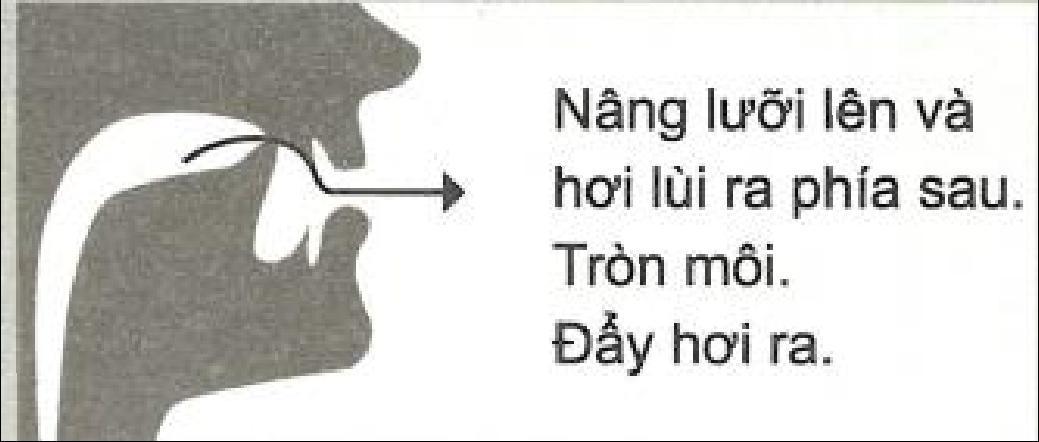
1. PHỤ ÂM /ʃ/
CÁCH PHÁT ÂM
VÍ DỤ
* shirt /ʃɜːt/ n. (áo sơ mi)
* flash /flæʃ/ n. (tia chớp)
DẠYKÈMQUYNHƠNOFFICIAL
Page 6| 15
_______________________________________________________________.
_______________________________________________________________.
_______________________________________________________________.
_______________________________________________________________.
_______________________________________________________________.
_______________________________________________________________.
_______________________________________________________________.
_______________________________________________________________.
_______________________________________________________________.
_______________________________________________________________.
_______________________________________________________________.
_______________________________________________________________.
_______________________________________________________________.
_______________________________________________________________.
_______________________________________________________________.
_______________________________________________________________.
_______________________________________________________________.
Khi phát âm, dây thanh không rung
2. PHỤ ÂM /ʒ/


CÁCH PHÁT ÂM VÍ DỤ
* television /ˈtelɪvɪʒn/ n. (ti vi)
* massage /ˈmæsɑːʒ/ v. (mát xa)
Khi phát âm, dây thanh rung lên
NGỮ ÂM (PRONUNCIATION)
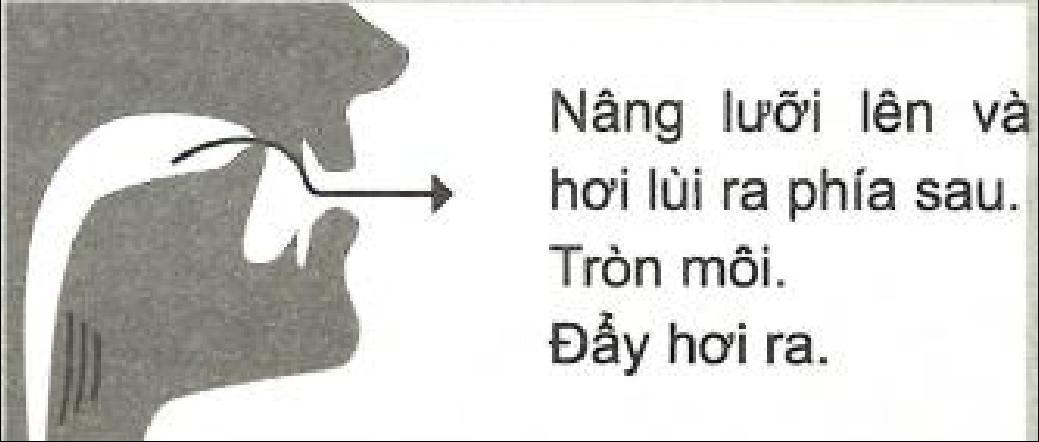
I -Put the following words in the correct columns. share usual action leisure vision Asia national musician measure wish television competition /ʃ/ /ʒ/ share,
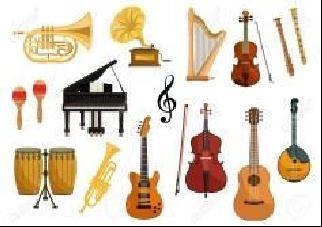
II -Choose the word which has the underlined part pronounced differently. Eg.: A. ensure B. closet
III -Underline the words with the sounds /ʃ/, and circle the words with the sounds /ʒ/. Then read the sentences.
E.g.: I’ve never seen her worried or anxiousin any way.

1.Car exhaust is the main reason for the city’s pollution.
2.It is a great pleasure to welcome you all here this evening.
3.We met on several occasions to discuss the issue.

4.We have a clear view of the ocean from our hotel window.
5.He was too shy to ask her to dance with him.
DẠYKÈMQUYNHƠNOFFICIAL
Page 7| 15
C
D. season
A. essential B. condition C. fantastic D. station
A. machine B. children C. kitchen D. chair 3. A. measure B. occasion C. musical D . usual 4. A. leisure B. sure C. pleasure D. closure 5. A. musician B. special C. exciting D. ocean 6. A. nation B. education C. creative D. air-conditioner 7. A. closure B. sugar C. vision D. leisure
A. inconvenient B. country C. barbecue D. delicious
A. character B. schedule C. machine D. school
A. decorate B. calendar C. educate D. musician
. noise
1.
2.
8.
9.
10.
IN Music and arts: Portrait Museum Camera Painting Musical instruments
VOCABULARY
Jobs
Ex I: Label the picture song writer, actress, singer, painting,




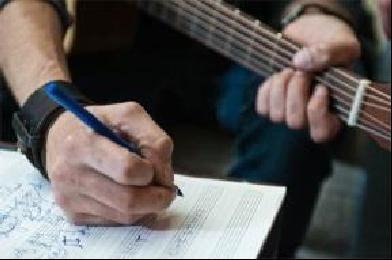




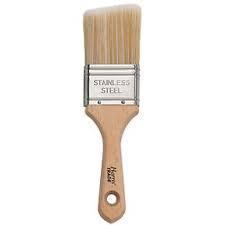
Ex II: Complete the sentence with words in Ex I
1. I love this ………………….because she has a beautiful voice.

2. This ……..………….displays a lot old objects and pictures in the previous century.

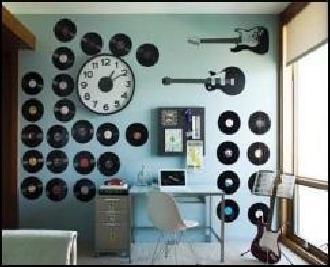

3. My brother is a talent. He can play so many ……………………..

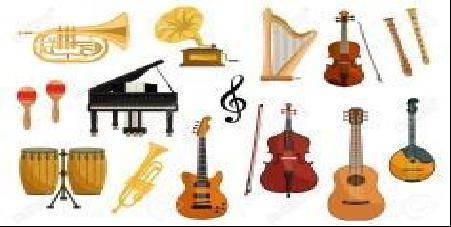



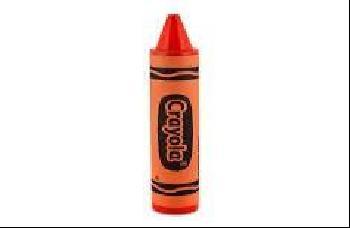
4. Look at that………………………! It’s one of the most famous artworks by Picasso.
5. My father is a ………………………He’s got about100 songs in his career.
6. The ………………..works so hard to complete the tasks before May.

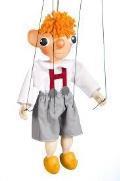

7. My daughter has a dream of becoming a well-known …………..….. in the future.
8. He enjoys drawing his father’s ……………………in the afternoon.
III: Choose the best answer
DẠYKÈMQUYNHƠNOFFICIAL
Page 8| 15
Paintbrush Crayon Microphone Art gallery Music room
Painter Artist Singer Actress
Musician Dancer songwriter puppet
museum, portrait, painter, musical instruments
1.
2.
3.
4.
5.
6.
7.
8.
Ex
1. a. driver b. artist c. song writer d. musician
a.
2.
musician b. dancer c. singer d. artist
Ex
Write a word below each picture
5.work

6.write
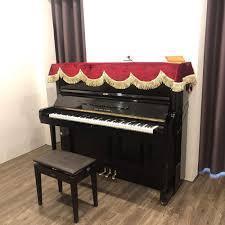
7.have
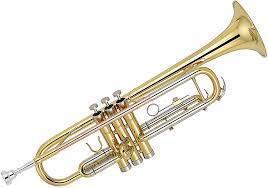
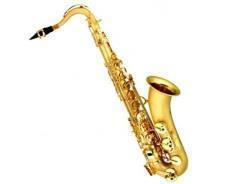
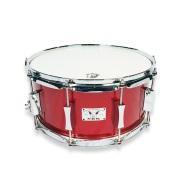
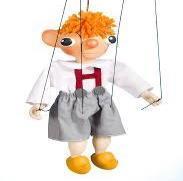
8.do
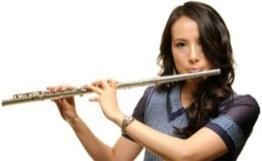
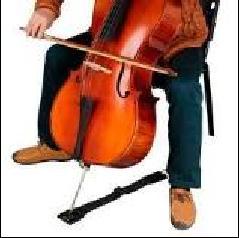
Put the word in the correct column
decision, rubbish, pressure, television, usually, sheep, version, luxury, action, special, patient, mission, Asian, garage, fashion, shout



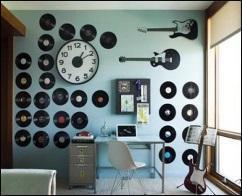
DẠYKÈMQUYNHƠNOFFICIAL
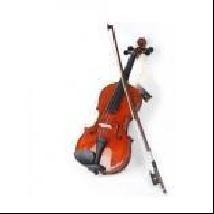

Page 9| 15
a. singer b. painter c. worker d. dancer
a. paintbrush
paper
doll
puppet 5. a. classroom b. IT room
music room
library 6. a. museum
art gallery
market
post office
a. camera b. television
headphone
remote control 8. a. mop
umbrella
paintbrush
comb
2.
4.
6. 7. 8.
a.as a teacher
b. the piano
c. the housework
d. a song
3.
4.
b.
c.
d.
c.
d.
b.
c.
d.
7.
c.
d.
b.
c.
d.
Ex IV:
Piano Guitar Saxophone Violin Flute Drum Trumpet cello 1.
3.
5.
Ex V: Match 1.play
2.take
3.make
4.draw
e.an art lesson
f. a portrait
g. a
photo
h. the bed
VI:
/ ʃ/ / ʒ/
Ex VII: Choose a word that has a different sound in the part underlined
1. A. decide B. musician
painting
cinema
2. A. favorite B. crayon
3. A. excellent B. museum
4. A. parents
5. A. saxophone

6. A. chop
Ex VIII: Odd one out
1. A. singer
2. A. occasion
3. A. guitar

5. A. theatre
6. A. exciting
care
ocean
machine
piano
cinema
gallery
lemon
fair
portrait
paper
television
opera
piano

choose
Ex IX: Fill in the gap with a suitable word given in the box Guitar Festival Concert Exhibition Artist Gallery Camera Performance
1. We are going to the ………………………..to listen to our idol’s latest music hits.
2. I have learnt to play the ……………….for about 2 months and now I can perform well in front of a large audience.
3. Can you adjust the lens of the ………………..? I wantto take a photo of the field over there.
4. The music ………………..this year is as good as it was two years ago.
5. Let’s go to the art ………………..to see our favorite paintings now.
6. This is the best ……………………I have ever seen.
7. That ………………………has old paintings by different artists in the world.
8. Do you know any famous………………………in the concert tonight?
Ex X: Solve the crossword puzzle
DẠYKÈMQUYNHƠNOFFICIAL
Page 10| 15
C.
D.
D.
C.
C.
D.
D.
B.
C.
C.
D.
B.
D.
B.
C. change
C.
D.
B. trumpet
painter
artist
B.
C.
D. saxophone
drum
flute
B.
C.
D.
B.
C.
D.
cello
portrait 4. A. clown
paintbrush
microphone
camera
B.
C.
D.
performance
museum
B.
C.
D.
excellent
dedicated
opera
5 6 1 2 4 3
ACROSS: 1. 2. 3.
Ex XI: Write the correct form of the word given
1. Do they like eating …………………..food? TRADITION
2. We suggest ………………….a show to raise money for our poor children. ORGANIZE
3. My ………………….sister loves reading comics books. YOUNG
4. The …………………is very anxious about the next performance on the stage. MUSIC
5. Mary doesn’t like …………………films and neither does him. HORRIBLE
6. The small boy is interested in …………………….robots. DRAW
7. The story is about rice farming, ………………………and Vietnamese village festivals. FISH
8. Picasso received artistic ………………….from his father. TRAIN
9. The comedy show last night was a great ……………….SUCCESSFUL
10.It is a ……………………..to watch his musical performance. PLEASED
Ex XII: Choose the best answer
1. Can you pass me the ………………..? I want to paint a picture.
A. micro phoneB. camera C. paintbrushD. crayon
2. We are going to the ………………….this afternoon to see an interesting film.
A. theatre B. cinema C. museum D. supermarket
3. Bui Xuan Phai is an artists ………………for his paintings of the old Ha Noi streets.
A. careful B. crazy C. famous D. prepared
4. I rarely listen to rock music because I can’t ……………….the words they sing.
A. understand B. know C. make D. see
5. Have you ever ………………in that music festival?
A. joined B. had C. listened D. participated
6. There have been so many ………………….in my hometown since I was ten years old.
A. benefits B. changes C. stories
7. Can you ……………….me how to operate this machine?
A. show B. help C. take D. give
D. programs
8. People now can enjoy many different …………………..of food in the city center.
A. ways B. forms C. things
D. kinds
9. Some students who are good at music and arts actually do better in more academic …………….


A. programs B. projects C. subjects
10…………………is your favorite Vietnamese musician?
A. What B. Who C. When
KỸ
NĂNG
DO YOU KNOW? BENEFITS OF MUSIC
D. jobs
D. Why
•Listening to music can be entertaining and some research suggests that it might even make you healthier.
•Music can be a source of pleasure and contentment, but there are many other psychological benefits as well.
•The notion that music can influence your thoughts, feelings, and behaviors probably does not come as much of a surprise.
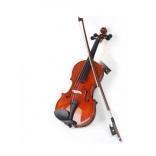
DẠYKÈMQUYNHƠNOFFICIAL
Page 11| 15 DOWN: 4. 5. 6.
• If you’ve ever felt pumped up while listening to your favorite fast-paced rock anthem or been moved to tears by a tender live performance, then you easily understand the power of music to impact moods and even inspire action.
KỸ NĂNG ĐỌC (READING SKILLS)
I -Read the following passage and do the tasks below. Much of the music we listen to today is a mixture of styles from various countries and time periods. A lot of music has roots in older traditional songs heard in many different countries around the world. Traditional, or folk music is collected over decades. Younger generations learn these songs from their elders through practice and repetition. Many people fear that traditional and older types of music are slowly disappearing, partly because they are less likely to be written down or recorded. Also, younger generations may not find such music very appealing, so once older generations pass away, the music may die out with them. Whole genres of music may go extinct. Nowadays, there is a growing effort to preserve music in its many forms. Some researchers create field recordings to capture live performances, others try to write out the music so that it can be studied and played by modem musicians.
(Active skills for reading 2)
Part 1: Find the words in bold which mean:
1. the origins of something or someone____________.
2.interesting or attractive____________
3.type or style of music, art, or literature____________
4.to make sure that something is kept____________
5.to record in order to preserve it____________
Part 2: Decide whether the statements below are TRUE (T) or FALSE (F).
1.Traditional music is collected over many years.
2.Young people can’t learn traditional music because no one teaches them.
3.Youngergenerations are less likely to care about traditional songs and music than older generations.
4. The purpose of writing out music is to pass it down to modern musicians.
II -Read the passage and choose the best option to answer each of the following questions.
Insomnia is a serious problem that affects people of all age groups. While there are many approaches to treating this problem as well as other common sleep disorders, research has demonstrated that listening to relaxing classical music can be a safe, effective, and affordable remedy.
In a study looking at college students, participants listened to classical music, an audio book, or nothing at all. One group listened to 45 minutes of relaxing classical music while another group listened to an audiobook at bedtime for three weeks. Researchers assessed sleep quality both before and after the intervention.
The study found that participants who had listened to music had significantly better sleep quality than those who had listened to the audiobook or received no intervention. Since music is an effective treatment for sleeping problems, it could be used as an easy and safe strategy for treating insomnia.
1.What is the main idea of the passage?
A. Ways to listen to music
C. Benefits of music
B. Points in time to listen to music
D. Music and insomnia
2.Which of the following is NOT mentioned as a benefit of music remedy?
A. safe B. flexible
C. effective
D. affordable
3.The purpose of the study looking at college students is to understand________.
A. students’ hobby of music
C. music at bedtime
B. classical music and students
D. effects of music on sleep quality
4.Who did the study find to have significantly better sleep quality?
A. researchers
C. participants who listened to audiobook
5.What does the word “it” refer to?
A. music B. treatment
B. participants who listened to music
D. participants with no intervention
DẠYKÈMQUYNHƠNOFFICIAL
C. problem
D. strategy
Page 12| 15
Q Q Q Q Q
KỸ NĂNG NGHE (LISTENINGSKILLS)
Exercise 1: Listen and complete the text. (Track 07)
Michael Jackson was born on August 29, 1958. He was born in Gary, Indiana, an industrial (1) ........................ of Chicago. He was and is known as the “(2) ........................ of pop”. He was an American musician. He started a solo career in 1971. His 1982 album (3) ........................ remains the (4) ........................ album of all times. He popularized dance moves, such as the robot and the (5) ........................ He was very successful in his music career. He won 13 (6) ........................ He earned millions of dollars and donated them to (7) ........................ In the 1980’s Michael’s (8) ........................ started to change because of a disease called vitiligo, and that was a (9) ........................ for everyone. He got married twice, first in 1994 with Lisa Marie Presley, Elvis Presley’s (10) ........................ and again in 1996 with Deborah Jeanne Rowe, a dermatology nurse. Michael had three (11) ........................ He died in 2009, it is said that an overdose of the (12) ........................ Demerol was the cause of his death but it is not confirmed.
Exercise 2: Listen and decide if each statement is true or false or not given. (Track 08) No. Statements
1. Dina Paucar is a famous singer and she comes from Peru.
2. Dina Paucar did not get married, but she adopted two kids.
3. In addition to singing, Dina Paucar writes songs.
4. Dina Paucar has worked in 10 concerts.
5. Dina Paucar works on television in her free time.
6. Although Dma Paucar is not so rich, she stills helps poor people.
7. Every year, 1000 sick children are helped by Dina Paucar.
8. Dina isconsidered as the symbol of the generosity and success.
KỸ NĂNG NÓI (SPEAKING SKILLS)
Talk about your favourite kind of music. You can use the following questions as cues:
•What kind of music do you like?
•When and how often do you listen to it?
• Why do you like it?
Useful languages:
Useful vocabulary
•country music, folk music, Jazz, pop music
•when I’m sad, before going to bed, when I have free time, when I’m tired
•amazing lyrics and catchy beats, calm down and sleep better, express myself, be happy and more comfortable
Complete the notes:
Structures of the talk
What kind of music do you like?
Useful structures
• I am very fond of...
•I like...very much
•I listen to..., but...
•I listen to it when...
•I often listen to it in...
•Listening to...helps me...because...
•It makes me...
• I feel...when listening to...
Your notes
DẠYKÈMQUYNHƠNOFFICIAL
Page 13| 15
T F N G
˚ ˚ ˚
˚ ˚ ˚
˚ ˚ ˚
˚ ˚ ˚
˚ ˚ ˚
˚ ˚ ˚
˚ ˚ ˚
˚ ˚ ˚
When and how often do you listen to it?
Why do you like it?
Now you try!
Give your answer using the following cues. You should speak for 1-2 minutes.
1.I am very fond of...
2. I listen to..., but...
3. I listen to it when...
4.Listening to...helps me...because...
5.It makes me...
Now you tick!
Did you ...
Q answer all the questions in the task?
Q give some details to each main point?
Q speak slowly and fluently with only some hesitation?
Q use vocabulary wide enough to talk about the topic?
Q use various sentence structures (simple, compound, complex) accurately?
Q pronounce correctly (vowels, consonants, stress, intonation)?
Let’s compare!
Finally, compare with the sample answer
KỸ NĂNG VIẾT (WRITING SKILLS)
I-Complete each of the following sentences using the cues given. You can change the cues and use other words in addition to the cues to complete the sentences.
1.I/ very/ happy/ hear/ that/ you/ be/ Viet Nam/ again.
2.I/ want/ invite/ you/ see/ an exhibition/ modern sculptures.
3.Be/ Sunday morning/ suitable/ you?
4.The exhibition/ begin/ 9 a.m./ so/ let’s meet/ 8.45 a.m./ outside the Arts Centre.
5.I/ hope/ we/ have/ a happy time/ there.
II -Write a letter of invitation (60-80 words) to one of your friends.
You can use the following questions as cues:
• What event do you want to invite your friend to?
• Where does the event take place?
• When does the event start?
• When is the best time for you and your friend to meet?
DẠYKÈMQUYNHƠNOFFICIAL
Page 14| 15
→
________________________________________________________
→
________________________________________________________
→ ________________________________________________________
→
________________________________________________________
→
________________________________________________________
DẠYKÈMQUYNHƠNOFFICIAL
Page 15| 15
UNIT 5: FOOD AND DRINK (TEACHER’SFILE)
VOCABULARY
Getting Started
1.tofu / 'təʊfu / (n) đậu phụ
2.noodles / 'nudlz / (n) mì, mì sợi
3.warm / wɔːm / (v) hâm nóng
4.green tea / ,ɡrin 'ti / (n) chè xanh
5.turmeric / 'tɜːmərɪk / (n) củ nghệ
6.beef / bif / (n) thịt bò
7.soup / sup / (n) súp, canh, cháo
8.shrimp / ʃrɪmp / (n) con tôm
9.omelette / 'ɒmlət, 'ɒmlɪt / (n) trứng tráng
10.sweet soup / swit sup / (n) chè
11.eel / il / (n) con lươn
12.bitter / 'bɪtə / (adj) đắng
13.delicious / dɪˈlɪʃəs / (adj) ngon, thơm ngon
14.tasty / 'teɪsti / (adj) đầy hương vị, ngon
15.sweet / swit / (adj) ngọt
16.salty / 'sɔːlti / (adj) mặn, có nhiều muối
17.spicy / 'spaɪsi / (adj) cay, nồng
18.fragrant / 'freɪɡrənt / (adj) thơm, thơm phức
19.sour / saʊər / (adj) chua
A Closer Look1
20.pour / pɔː / (v) rót, đổ
21.fold / fəʊld / (n) gấp, gập
22.beat / bit / (v) khuấy trộn, đánh trộn
23.serve / sɜːv / múc/ xới/ (v) gắp ra để ăn
24.salt / 'sɔːlt / (n) muối
25.pepper / 'pepər / (n) hạt tiêu
26.flour / flaʊə / (n) bột
27.pancake / 'pænkeɪk / (n) bánh kếp
28.spring rolls / sprɪŋ rəʊlz / (n) nem rán
29.pork / pɔːk / (n) thịt lợn
30.sandwich / 'sænwɪdʒ / (n) bánh xăng-đúych
31.sauce / sɔːs / (n) nước xốt
Communication
32. slice / slaɪs / (n) miếng mỏng, lát mỏng
33.sausage / 'sɒsɪdʒ / (n)xúc xích
34.tuna / 'tjunə / (n) cá ngừ
Skills 1
35.broth / brɒθ / (n) nước xuýt
36.recipe / 'resɪpi / (n) công thức làm món ăn
GRAMMAR
A. Cách dùng Some/Many/Any/A Few/ A Little/ A Lot Of/ Lots Of trong tiếng Anh
1. Cách dùng Some
Some là một từ định lượng rất phổ biến và được sử dung rộng rãi trong
DẠYKÈMQUYNHƠNOFFICIAL
Page 1| 17
Tiếng Anh, có 3 điểm cần nhớ về cách sử dụng
định
∑ Đứng
số nhiều và danh từ không đếm được
được
hỏi
từ
lượng này như sau: ∑ Dùng trong câu khẳng định
trước danh từ đếm được
∑ Some cũng
dùng trong câu
VD:
1.I have some friends
2.Can you give me some flowers?
3.Where can I find some water?
Lưu ý:
Some không được dùng để mô tả cả một hệ thống hoặc một nhóm lớn sự vật hiện tượng, ví dụ với câu sau:
We need to rebuild the house and get rid the old furniture. Babbies is the most vulnerable thing in the world.
Có thể sử dụng some trước số từ cụ thể để thể hiện nghĩa “gần bằng”. Lúc này, some sẽ được phát âm là /sʌm/. Ví dụ: Some fifty percent of all students disagree with the new rules. (=Approciatemately 50% students...)
2. Cách dùng Any
Ngược lại với Some, Any thường được dùng với nghĩa phủ định, không chắc chăn. Cách sử dụng của từ định
lượng này như sau:
∑
Dùng trong câu phủ định và câu hỏi
∑ Đứng trước danh từ đếm được số nhiều và danh từ không đếm được
∑ Thường được sử dụng trong các trường hợp mà tình hình không rõ ràng.
VD: There aren’t any books in the shel
Lưu ý: Any rất hay đi sau giới từ "before" hoặc trong câu so sánh.
Ví dụ:
∑ She is the most beautiful person than anything I have met in the world.
∑ Get ready for trouble before anything happens.
3. Cách dùng Many
Khác với Some và Any có thể dùng cho cả danh từ đếm được không đếm được, Many có cách sử dụng đặc biệt hơn, như sau:
∑ Thường dùng trong câu hỏi và câu phủ định, câu khẳng định được dùng ít hơn
∑ Đi với danh từ đếm được số nhiều
∑ Ngoài ra, trong các trường hợp nghiêm túc, đặc biệt trong văn viết học thuật, người ta sẽ ưu tiên sử dụng many (of).
VD:
∑ Do you have many cars?
∑ There is a rumor that she have many ex-es.
∑ Many peolple argued that this new policy is not suitable at this time.
4. Cách dùng A lot of/ lots of
Một cặp từ chỉ định lượng quan trọng trong Tiếng Anh khác mà bạn cần nắm được là A lot of và lots of.
∑ Được dùng trong câu khẳng đinh và câu nghi vấn
∑ Đi với danh từ không đếm được và danh từ đếm được số nhiều
∑ Thường mang nghĩa “informal”
Hãy chú ý đến chính tả, không ít người mắc phải lỗi viết sai với 2 từ đơn giản này, ví dụ như A lots of hay Lot of đều là những từ được viết sai.
VD:
∑ We spent a lot of money on online shoping in commercial platforms.
∑ Should students do lots of homework?
5. Cách dùng A few
Có 1 điều bạn cần nhớ rằng : A few là 1 từ định lượng thể hiện nghĩa tích cực, ít những vẫn đủ. Nắm được điều này sẽ giúp bạn sử dụng chính xác trong giao tiếp cũng như thi cử. 2 cách sử dụng chính của A few là:
∑ Dùng trong câu khẳng định
∑ Dùng với danh từ đếm được số nhiều
VD:
DẠYKÈMQUYNHƠNOFFICIAL
∑ She enjoys her life here. She has a few friends and they meet quite often.
Page 2| 17
-> (Cô ấy thích cuộc sống ở đây. Cô ấy có một vài người bạn và họ gặp nhau rất thường xuyên). Ở đây a few friends nói đến số lượng người bạn mà cô ấy có là một vài người chứ không phải ám chỉ cô ấy có ít bạn.
6. Cách dùng A little
2 cách sử dụng của A little là:
∑ Dùng trong câu khẳng định
∑ Đi với danh từ không đếm được
A little giống với a few là
VD:
∑ Have you got any money? -Yes, a little. Do you want to borrow some? (Bạn có tiền không? Có, một ít. Anh có muốn vay không?)
∑ A little ở đây hàm ý là có không nhiều nhưng đủ cho anh muợn một ít.
PRACTICE 1
B. Bài tập Some/Many/Any/A Few/ A Little/ A Lot Of/ Lots Of
Bài tập 1: Hoàn thành những câu sau với “some” hoặc “any”
1. We didn’t buy …………flowers.
2. This evening I’m going out with ………….friends of mine.
3. “Have you seen ………..good films recently?” –“No, I haven’t been to the cinema for ages”.
4. I didn’t have ……………money, so I had to borrow………..
5. Can I have ………milk in my coffee, please?
6. I was too tired to do………work.
Bài tập 2: Hoàn thành câu với “much, many, few, a few, little, a little”
1. He isn’t very popular. He has ………..friends.
2. Ann is very busy these days. She has ………..free time.
3. Did you take …………….photographs when you were on holiday?
4. The museum was very crowded. There were too………..people.
5. Most of the town is modern. There are …………..old buildings.
6. We must be quick. We have………..time.
7. Listen carefully, I’m going to give you ……….advice.
8. Do you mind if I ask you……….questions?
9. This town is not a very interesting place to visit, so …….tourists come here.
10. I don’t think Jill would be a good teacher. She’s got …………..patience.
11. “Would you like milk in your coffee?” –“yes, please. ………….”
12. This is a very boring place to live. There’s ………….to do.
PRACTICE 2
1.Bài tập 1: Chọn từ thích hợp nhất
2.There are (a few /a little) tigers at the zoo.
3.Let’s talk to Jane. She has (few/ a few) friends.
4.I have very (little/ a little) time for hanging out with my friends because of the final exam.
5.We should try to save (a little/ a few) electricity this month.
6.(A few/ A little) students passed the exam because it was very difficult
Bài tập 2: Chọn từ thích hợpđiền vào chỗ trống: few, a few, little, a little, many, much, many of, much of
1.There wasn’t ……………. snow last night.
2.……………the students in my class enjoy taking part in social activities.
3.He’s always busy. He has ………… time to relax.
4.She put so ………… salt inthe soup that she couldn’t have it. It was too salty.
5.He made too ………….. mistakes in his writing.
6.How ………….. students are there in your class?
7.I feel sorry for her. She has ……………. friends.
8.I spent …………… my spare time gardening last year.
DẠYKÈMQUYNHƠNOFFICIAL
9.He doesn’t have so ………….. friends as I think.
10.There was so …………… traffic that it took me an hour to get home.
Page 3| 17
11.Learning a language needs ………….. patience.
12.…………… the shops in the city center close at 5.30.
13.We had a boring holiday. …………………….the time we lay on the beach.
14.With only………… hope, Harry didn’t know how to keep going another day.
15.How …………. money have you got?
16.There was very ………….. food at the party but I didn’t eat anything.
17.I think……………. you are very tired after your long journey.
18.We didn’t take …………… photographs when we were on holiday
19.Bài tập 3: Điền từ thích hợp vào chỗ trống few, a few, little, a little
20.I have _______good friends. I’m not lonely.
21.There are ___________people she really trusts. It’s a bit sad.
22.Julie gave us __________apples from her garden. Shall we share them?
23.There are ________women politicians in the UK. Many people think there should be more.
24.Do you need information on English grammar? I have_____books on the topic if you would like to borrow them.
25.He has ____education. He can’t read or write, and he can hardly count.
26.We’ve got ____time at the weekend. Would you like to meet?
27.She has ____self-confidence. She has a lot of trouble talking to new people
28.There’s ____spaghetti left in the cupboard. Shall we eat it tonight?
29.We have only___ time to finish all of the reports by tomorrow.
30.Since taking office last year, the government has made____ changes in employment policy that concerns the public.
31.Oh no, we just have ____ flour left, not enough for a cake.
32.I enjoy my life here. I have ___ friends and we meet quite often.
33.We have ____ knowledge of market analysis.
34.The government has done ___ or nothing to help the poorest people in this country
35.___ cities anywhere in Europe can match the cultural richness of Berlin.
36.Last month was a good month for the company. We found ___ newcustomers and also increased our profit.
37.Unfortunately, ___ of the companies which we sent offers to showed intersest in our products.
38.I had___ problems with the printer in the office, but it’s been fixed now.
39.As so___ members has turned up at the meeting, it was decided to postpone it until further notice.
40.We have to spend up –there is very___ time to finish the project. The deadline is next Wednesday.
41.I strongly recommend investing in these shares because you will get a very good return after only ___ years.
42.At the moment we are experiencing some cash flow problems because ___ money is coming in.
43.There is ___ extra added to your salary because you will benefit from the inner city allowance.
44.The postman doesn’t often come here. We receive ______ letters.
45.The snow was getting quite deep. I had ______ hope of getting home that night.
46.A: I’m having ______ trouble fixing this shelf -> B: Oh, dear. Can I help you?
47.I shall be away for _____ days from tomorrow.
48.Tony is a keen golfer, but unfortunately he has ______ ability.
49.I could speak ______ words of Swedish, but I wasn’t very fluent.
Bài tập 4: Khoanh vào đáp án thích hợp nhất trong các câu dưới đây
1.Look at these lovely little fish/fishes.
2. My parents bought a lot of furniture/furnitures for our newhouse.
3. Physics/physic is one of my favourite subject.
4. I’d like to travel abroad to broaden my knowledge/knowledges.
5. These umbrella/umbrellas will be very useful for this picnic.
6. There are a lot of green tree/trees in the garden.
7. We haven’t got much rice/rices left.
8. We’ve got a lot of milk/milks.
DẠYKÈMQUYNHƠNOFFICIAL
Page 4| 17
II. CÂU HỎI CÓ BAO NHIÊU “HOWMUCH/ HOW MANY? “
1. How many?
Chức năng Dùng để hỏi vè số lượng của một danh từ đếm được.
Cấu trúc How many + danh từđếm được dạng sốnhiều (+ are there) ?
‡ There is/ there are + từchỉsốlượng
How many + danh từđếm đượcđạng sốnhiều (+ trợđộng từ+ S+ V) ?
‡ S+ V + từ chỉ số lượng
Ví dụ
How many eggs? ( có bao nhiêu quảtrứng)
‡ there is one. ( có một)
How many days are there in January ? ( Tháng một có bao nhiêu ngày?)
‡ There are 31 days. ( có 31 ngày.)
How many tomatoes do we have?
( chúng ta có bao nhiêu quảcà chua? )
‡ we have 5 tomatoes. ( chúng tôi có 5 quả cà chua. )
2. How much?
Chức năng Dùng để hỏi về số lương của một danh từ không đếm được Cấu trúc How much + danh từkhông đếm được dạng sốnhiều ( +is there) ?
‡ There is/ are + từchỉsốlượng.
( Động từto be chia là “is” hay “ are” tùy thuộc vào danh từđứng đằng sau nó.)
How much+ danh từkhông đếm được dạng sốnhiều (+ trợđộng từ+ S+ V)
?
‡ S + V + từ chỉ số lượng.
Ví dụ How much money is there in the wallet? ( Có bao nhiêu tiền ởtrong ví? )
‡ There is $ 200 ( có 200 đô)
How much bread is there ? ( có bao nhiêu bánh mì ởđó?)
‡ There are two loaves ( có 2 ổ)
How much rice does she need? ( cô ấy cần bao nhiêu gạo)
‡ she need five kilos ( cô ấy cần 5 cân)
BÀI TẬP VẬN DỤNG
BÀI 1: Điền “ how much/ how many” vào chỗtrống sao cho thích hợp.
1. _____________people are there in the meeting room?
2. _____________bread do you have?
3. _____________Countries are there in the world?
4. _____________ time do we have ?
5. _____________fish did you catch?
6. _____________cakes you are going to make?
7. _____________flour do we need to make this cake?
8. _____________players are there in a football team?
9. _____________pocket money did your father give you?
10. _____________siblings does Jane have?
11. _____________water is in this bottle?
12. _____________lemonade did they buy for the party?
13. _____________salt will you add into the soup?
14. _____________mice has your cat caught?
15. _____________sheep are there in the farm?
16. _____________milk do you have for breakfast?
17. _____________cats are there in this pet shop?
18. _____________ information about him did you get?
DẠYKÈMQUYNHƠNOFFICIAL
19. _____________ comic books have you collected?
20. _____________men are there in the room?
Page 5| 17
Bài 2: Dựa vào những từcho sẵn, hãy viết thành câu hoàn chỉnh.
1. How much/ sugar/ we/ buy/ yesterday ?
2. How many/ kid/you/ have?
3. How much/ time/ you/ usually / spend on/ your homework?
4. How many/ sheet/ of blank paper/ you / have/ now?
5. How many/ table/ there/ in your classroom?
6. How much/ money/ you/ borow/ him/ last week?
7. How much/ rice/ there/ in your kitchen?
8. How much / fruit/ you/ buy/ tomorrrow ?
9. How much/ water/ there/ in a swimming pool?
10. How many/ teaspoon/ of sugar/ we/ need? Bài 3: Nối
1. How many sailor are there?
2. How much peper will you buy?
3. how much paper do you need?
4. how many types offish are there in the lake?
5. how much time will it take to do your homework?
6. How many schools are there in your hometown?
7. how much sugar is there in your coffee?
8. how many spoons do you have?
a. I only need one sheet of it
b. About haft an hour.
c. I have five.
d. two cubes.
e. There are twenty –one people.
f. only one school.
g. There are about eleven types.
h. I will buy two bags of it.
1-_________ 2 -_________3 -_________ 4-_________
5. -_________ 6. -_________7. -_________ 8 -________
Bài 4: Dựa vào những câu trảlời cho sẵn , viết câu hỏi với “how much/ how many”.
1. __________________________________________________________
This book has one hundred pages.
2. __________________________________________________________
I will spend an hour on my project .
3. __________________________________________________________
There is one egg in the refrigerator.
4. __________________________________________________________
Tim read two books yesterday.
5. __________________________________________________________
There are only two waiters in the restaurant.
6. __________________________________________________________
I need two litres of milk , please.
DẠYKÈMQUYNHƠNOFFICIAL
7. __________________________________________________________
Kate has received two birthday presents.
Page 6| 17
câu
ởcột B sao cho thích hợp. A B
câu hỏi ởcột A với
trảlời
8.
Our family has one dog.
BT VOCABULARY AN PRONUNCIATION
1. PHỤÂM /ɒ/
CÁCH PHÁT ÂM
NGỮÂM
Pronunciation
VÍ DỤ
* mop /mɒp/ n. (chổi lau nhà)
* hot /hɒt/ adj. (nóng)
Hạhàm dưới xuống, môi tròn thư giãn
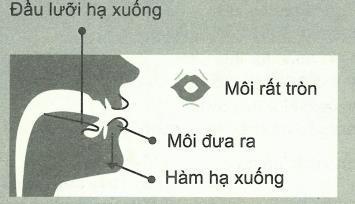
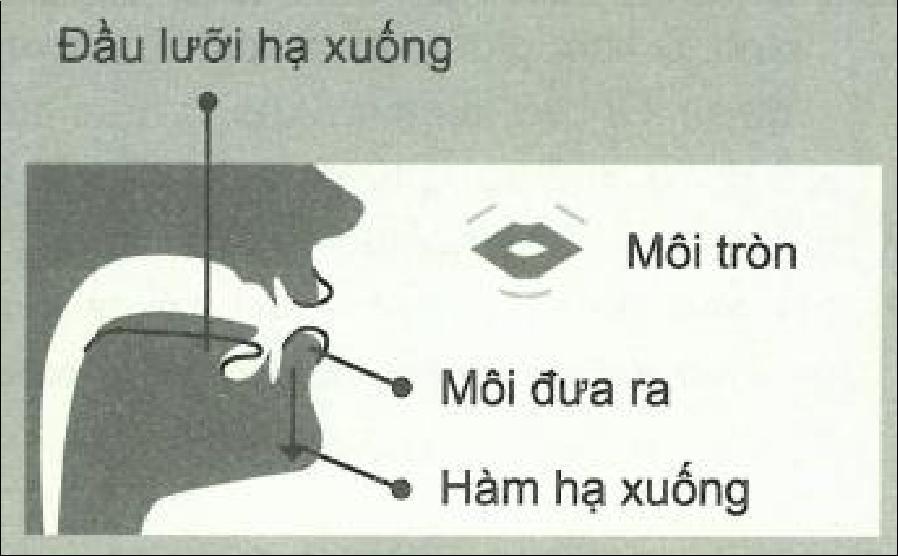
Đầu lưỡi hạxuống
Đẩy hơi ra. Dây thanh rung lên
Âm /ɒ/ là nguyên âm ngắn, bạn phải phát âm nhanh và gọn
2. PHỤÂM /ɔ:/
CÁCH PHÁT ÂM
VÍ DỤ
* fork /fɔ:k/ n. (đĩa)
* pork /pɔːk/ n. (thịt lợn)
Hạquai hàm, môi rất tròn
Đầu lưỡi hạxuống
Đẩy hơi ra. Dây thanh rung lên
Âm /ɔ:/ là nguyên âm dài, bạn sẽ phải kéo dài âm ra
PRACTICE : NGỮÂM (PRONUNCIATION)
I -Choose the word which has the underlined part pronounced differently.
DẠYKÈMQUYNHƠNOFFICIAL
Page 7| 17
. __________________________________________________________
E.g.: A
B
C.
D.
1. A. obesity B. broth C. compose D. photo 2. A. robot B. slot C. concentrate D. opera 3. A. slaughter B. audience C. haunt D. aunt 4. A. shortage B. perform C. forgive D. horn 5. A. smog B. explosion C. metro D. slogan 6.A. show B. open C. clothes D. cloth 7.A. clock B. hole C. shock D. plot 8.A. floppy B. shovel C. glove D. love 9.A. hot B. hobby C. slope D. top
. omelette
.cold
folder
roll
10. A. coal B. roar

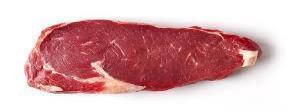
C. float D. load
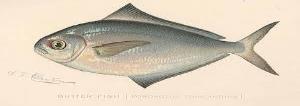
11. A. volunteer B. documentary C. hydro
. flop
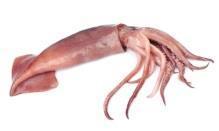
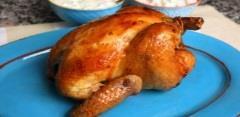
12. A. phone B. canon C. home
13. A. compass B. sofa
. poem
. stone
. overseas
14. A. comedy B. apricot C. workshop D. judo


15. A. move B. convenient C. microwave D. conditioner
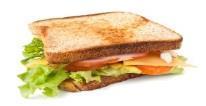
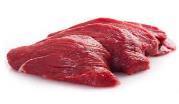
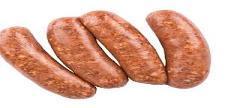
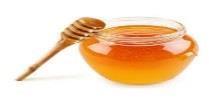

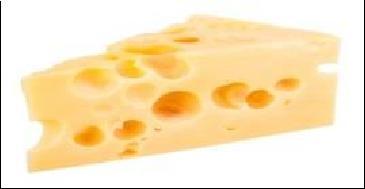
II -Put the words given in the box to the correct column according to the pronunciation of the underlined letter.
locate love poverty automated money explosion flop prohibitive company metro gridlocked consist hover slogan recognise other control fossil hydro become
E.g.: poverty /ˈpɒvəti/
III -Put the words given in the box to the correct row according to the pronunciation of the underlined letter.

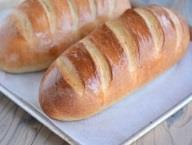
organise warm poverty salt block shock support concentrate goggle water
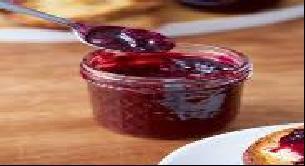
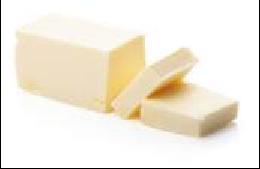
PRACTICE :VOCABULARY

DẠYKÈMQUYNHƠNOFFICIAL
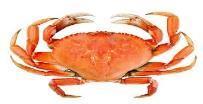
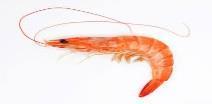
Page 8| 17
D
D
D
C
/ɒ/ /ʌ/ /ə/ /əʊ/
/ɒ/ /ɔː/
bread Cheese Rice Butter Honey Jam Sausage Meat Chicken Pork Beef Fish Pizza Sandwich Soup Cookies Turmeric Shrimp Crab Squid
Food:
Choose a word that has a different sound in the part underlined






Ex II: Put the words in the correct column
DẠYKÈMQUYNHƠNOFFICIAL



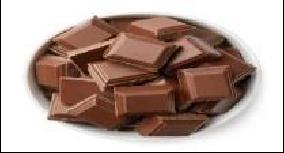

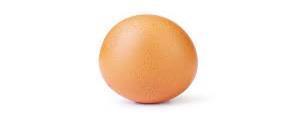
Page 9| 17 Egg Chips Hamburger Chocolate Drinks: Coffee Tea Water Milk coke Beer Orange juice lemonade Adjectives : 1.Bitter Đắng 2.sweet Ngọt 3.sour Chua 4.salty Mặn 5.spicy Cay 6.tasty Ngon miệng 7.delicious Ngon 8.fragrant thơm Verbs: 1.heat Hâm nóng 2.pour Đổ, rót 3.beat Đập 4.fold Gập 5.stir Đảo 6.steam Hầm, ninh 7. squeeze Ép 8.mix Trộn 9.chop Chặt 10.cut Cắt 11.fry Rán 12.grill Nướng 13. serve Phục vụ 14. add Thêm vào
I:
1.A. sweet B. beef C. cheese D. coffee 2.A. bored B. color C. short D. sport 3.A. uniform B. tutor C. fur D. music 4.A. salt B. pancake C. sandwich D. handmade 5.A. lemonade B. tasty C. vegetable D. paper 6.A. heat B. fear C. meat D. lean 7.A. fry B. windy C. salty D. spicy 8.A. chop B. top C. hop D. movie 9.A. banana B. fragrant C. apple D. tuna 10. A. drink B. stir C. milk D. grill
horse,
coffee,
chocolate, lock,
/ɒ/ /ɔː/
Ex
august, ball, water, autumn, daughter, born, walk
holiday,
want, office, often, watch, forgot
Ex III: Match the picture with the word sausage lemonade chocolate orange juice chicken crab soup butter pork shrimp coffee cheese


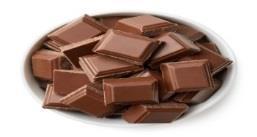
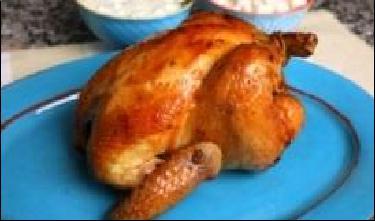
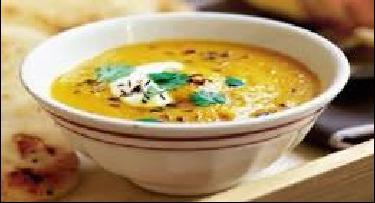
Ex IV: Circle the best answer
eggs
b. lemon



c. cookies
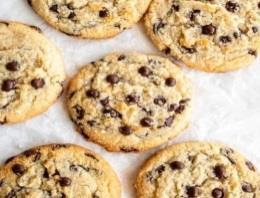
d. chips
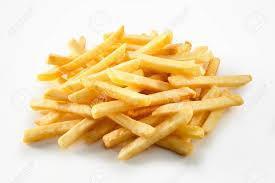
b. soup
c. ice cream d. jam
a. sandwich
b. sausage

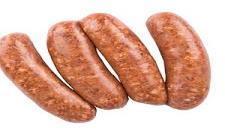
c. butter

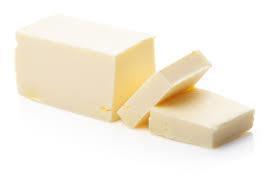
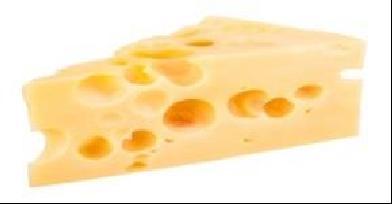
d. beef

b. shrimp

c. crab
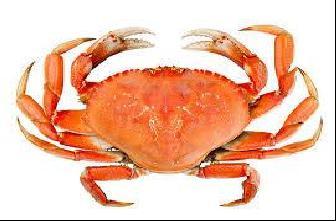
d. quid
a. pizza

b. rice
c. soup


d. fish

DẠYKÈMQUYNHƠNOFFICIAL
Page 10| 17
1. 2. 3.
9. 10.
4. 5. 6. 7. 8.
11. 12.
a. hamburger
hot dogs
1.
b. pizza c. cookies d.
7. a.
2. a. water b. milk c. coffee d. beer 8.
a. salad
a. banana b. apple c. orange d. pear 9.
3.
a. water b. milk c. tea
wine 10.
4.
d.
a. fish
a. yoghurt
chocolate
jam
honey 11.
5.
b.
c.
d.
a. beer
b. lemonade
a. bread
b. sandwich
c. orange juice
d. water


c. hamburger
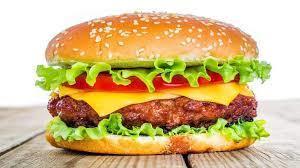
d. cookies
6.
Ex V: Odd one out
1.A. beef B. pork C. chicken D. lemonade
2.A. orange juice B. milk C. eel soup D. coffee

3.A. green tea B. noodle C. chocolate D. sandwich
4.A. shrimp B. butter C. crab D. squid
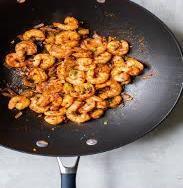
5.A. pizza B. bread C. turmeric D. hamburger
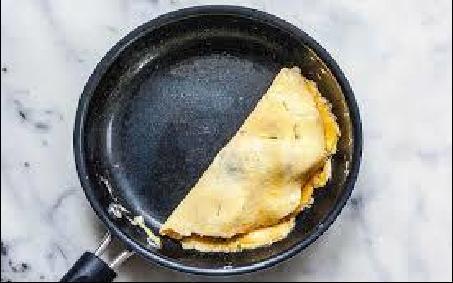
12.
Ex VI: Put the word in the correct column noodles, tofu, lemonade, meat, milk, shrimp, beef, green tea, egg, bread, orange juice, vegetable, soup, mineral water, apple, pork, coffee

Food Drinks
Ex VII: Complete the instructions with the verbs in the box stir beat fold mix boil pour fry heat
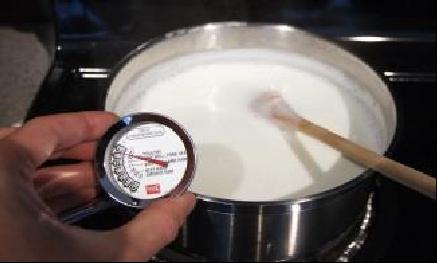
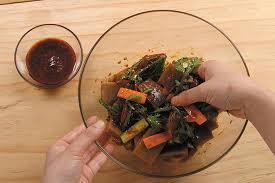
Ex VIII: Match the phrases in column A with the nouns in column B
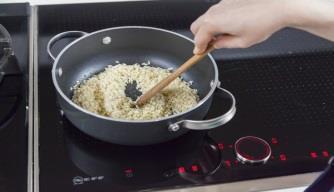
DẠYKÈMQUYNHƠNOFFICIAL
Page 11| 17
1…………..the rice so that it gets the right heat.
2…………….water in the bottler into a glass
3……..…..the food in the bowl
4………………the milk so that it is warm enough.
5……………the vegetable using hot water in a pot
6……………….the egg so that it breaks
7………………the shrimp in a pan
8…………….the egg to make it smaller
a.
b.
3.a
c. ofbread 4.a tin d. of soup 5.a
e. of water 6.a
f. of cigarettes 7.a bar g. of milk
1.a loaf
of chocolate 2.a packet
meat
bottle
carton
slice of
8.a bowl h. of tuna
Ex IX: Put the word in the correct column A slice of, noodle, sugar, a loaf of, hamburger, pepper, a carton of, a tin of, garlic, flour, soup, fried chicken, a bowl of, vinegar, salt, spaghetti
Dishes Ingredients Measurement phrases
Ex X: Add more words to each list
1.Food: vegetable,……………………………………………………………………………

2.Drinks: water,………………………………………………………………………………..
Ex XI: Fill in the gap with a suitable word given in the box mix water pour tea cartons dishes glass chocolate
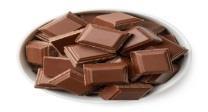
1.Among many special ……………….of Vietnam, my foreign friend likes beef noodle the best.
2.First, …………………..the egg into the pan and cook for about three minutes.
3.You can …………………the meat with vegetables and a little pepper.
4.He gave me a bar of …….………………on Valentine’s Day.
5.There is orange juice, lemonade, milk, mineral………………., coffee and tea. Which kind of drinks do you prefer?

6.How many …………………..of milk do you want to buy, mother?
7.I make him a …………….of lemonade because he feels so hot today.
8.This morning, I didn’t have a cup of …………………as usual.
Ex XII: Choose the correct form of the word provided
1.I can’t eat this dish. It is too ……………………SALT

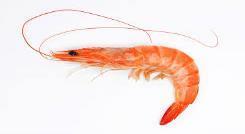
2.Put the ………….…………into the pan and cook it for about half an hour. MIX
3.The mother has to ………………….the milk because it’s cold. HOT
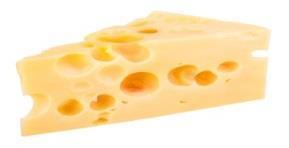
4.Her father is a …………………….He can play many musical instruments very well. MUSIC
5.We all love our …………………….food of instant noodles for our breakfast in the morning. TRADITION
6.A funny man or woman in a film is a ……………………COMEDY
7.Why does he look so …………………….? SADNESS
8.In order to perform ……………., you have to practice a lot. SUCCESS
DẠYKÈMQUYNHƠNOFFICIAL
Ex XIII: Solve the crossword puzzle ACROSS
Page 12| 17
………………………………………………………………………………………………………….
1. 2. 3. 4. 5. 6.
Ex XIV: Write the correct form of the word given
1.The person who writes poems is called a ………………..POEM
2.My hobbies are taking photos and ……………………..old stamps. COLLECT
3.She doesn’t want to share her …………………problems with anybody. PERSON
4.Paintings and …………………..not the same. They are quite different. DRAW
5.Is he a famous …………………..in your country? COMPOSE
6.To perform ………………………., the children have to practice the play many times. SUCCESSFUL
7.Old people enjoy traditional, …………………..or country music. CLASSIC
8.His father is a good …………………..and he can play some musical instruments. PIANO
9.Learning music helps students achieve higher results in Maths and ………………..READ
10. This traffic sign prevents people from ………………….freely along the street. PASS
Ex XV: Choose the best answer
1.I usually …………………….bread, egg and milk for breakfast.
A.use B. have C. do D. take
2.How many ……………………of milk does your mother want?
A.cartons B. packets C. boxes D. loaves
3.She prepares a cheese sandwich and two ………………..in her bag.
A.coffee B. jam C. apples
4.How much…………………is there in the bottle?
A.bananas B. bread C. water D. yoghurt
5.Among many special …………………in Ha Noi, instant noodle is the most popular.
A.fruit B. vegetablesC. food D. dishes
6.Put the omelette on a plate and ……………….it with some vegetables.
A.serve B. have C. cook D. give
7.First, put some water in a pot and …………..it until it boils.

A.fry B. heat C. chop D. stir


8.Last Sunday, my father ……………….fishing but he didn’t catch any fish.
DẠYKÈMQUYNHƠNOFFICIAL
D. sugar
A.had B. did C. went D. took
Page 13| 17 DOWN 7. 8. 9. 1 9 8 7/2 3 4 5 6
9.People in my country often have three…………………a day: breakfast, lunch and dinner.
A.meals B. parts C. kinds D. forms
10. They often have rice with ………………vegetables and a lot of seafood or various kinds of meat.
A. old B. new C. cheap D. fresh
PRACTICE: SKILLS KỸNĂNG
DO YOU KNOW?
BUN CHA
• Pho might be Vietnam’s most famous dish, but bun cha is the top choice when it comes to lunchtime in the capital.
• Just look for the clouds of meaty smoke after 11 a.m. when street-side restaurants start grilling up small balls of seasoned pork and slices of marinated pork belly over a charcoal fire.
• Once they’re charred and crispy the pieces of pork are served with a large bowl of a fish sauceheavy broth, a basket of herbs and a helping of rice noodles.
KỸNĂNG ĐỌC (READING SKILLS)
I-Read the passage and decide whether the statements are True (T) or False (F). Bun cha became an international attention overnight after US President Barack Obama and celebrity chef Anthony Bourdain were pictured eatingthe dish together in Hanoi. Their choice of this dish is now surprise as bun cha originated from the Old Quarter in Hanoi and has been one of the city’s signature dishes for hundreds of years. What makes this dish special is the intense preparation involved in making it; minced pork must be marinated overnight to fully absorb the flavor of herbs and shaped into balls, keeping attention to make sure the meat is tender and juicy. The sauce is what makes the dish spectacular; a good sauce will give a balance between the sweetness of the meat and the saltiness of the fish sauce. The Hanoi traditional dish is served only at lunchtime and comes with rice vermicelli, fresh vegies and herbs such as basils, coriander.
1. Bun cha has become more well-known since President Barack Obama’s visit.
2. Bun cha has been a specialty of Hanoi for years.
3. Minced pork shouldn’t be marinated in advance to keep it fresh.
4. The sauce is an important thing to make Bun cha more special.
5. Tourists can always find a place which serves this traditional dish at any time in a day.
II -Read the passage and answer the following questions. Egg coffee, called Cà Phê Trứng in Vietnamese, was first invented by Nguyen Giang in 1946. There was a shortage of milk in Hanoi due to the French War. Mr. Nguyen creatively began adding whisked eggs to his coffee instead.
The original version was a bit, well, eggy. But over time the recipe was modified with the addition of sugar, condensed milk, and even Laughing Cow cheese. No one knows the recipe for sure since it’s a secret recipe. These days Egg Coffee is a staple of Hanoi coffee culture and a must-try while in Hanoi!
What does it taste like? Well it’s incredibly thick and rich and creamy. Closer to a dessert than a beverage. Liquidtiramisu is the most accurate description we’ve heard. Nguyen Giang still has a café where you can try his famous recipe, or you can grab a cup of Egg Coffee at dozens of coffee shops all over Hanoi.
1. Who invented egg coffee?
2. Why did Nguyen Giang add whisked eggs to his coffee?
3. What is the recipe to make egg coffee nowadays?
4. What does egg coffee taste like?
DẠYKÈMQUYNHƠNOFFICIAL
5. Where can we buy this type of coffee?
Page 14| 17
q q q q q
KỸNĂNG NGHE (LISTENING SKILLS)
1.Listen and decide if each statement is true (T) or false (F) or not given (NG). (Track 09)
No. Statements T/F/NG
1. Fruits and vegetables are near the entrances.
2. People buy more bread because bread is good for health
3. Near the checkout, there are many bags of sugar.
4. There are many candies in the bakery section.
5. Vegetables and fruits make people thing that all items are fresh.
6. They do not sell magazines in the supermarket.
7. The bags of sugar are near the bags of rice.
8. Bread smell makes people hungry.
2.Listen and choose the best option to complete the sentence. (Track 10)
1.Which came first in the world?
A. Chicken B. Egg
C. Hens D. No answer
2.How long have people argued for the question which came first, the chicken or the egg?
A. For many years B. For many months
C. For many days D. For many decades
3.What birds lay eggs?
A. Male birds B. Female birds
C. Newly-born bird D. All of the birds
4.What kinds of egg do people eat much in Canada?
A. Pigeon egg B. Duck egg
C. Chicken egg
5.How heavy is a ostrich egg?
A. 1 kg
C. 2 kg
6.What is inside a normal egg?
A. Yolk
C. Chicken
Ostrich egg
B.1.5 kg
D.No answer
B.White
D.Yolk and white
7.How does the white change when it is boiled?
A. It turns white.
C. It turns to the yolk.
8.What is correct?
A. Eggs are harmful to health.
C. Eggs are good for health.
KỸNĂNG NÓI (SPEAKING SKILLS)
Talk about the your favourite Vietnamese food. You can use the following questions as cues:
•What is that Vietnamese food?
•What are the ingredients?
•When do people eat this food?
Useful languages:
Useful vocabulary
• noodle soup, steamed rice cake, Chung cake, spring rolls
B. It turns black.
D. It does not change.
B. Eggs are delicious.
D. Eggs are terrible.
Useful structures
DẠYKÈMQUYNHƠNOFFICIAL
• Vietnam has so many...and my favourite one is...
• People can eat...at..., but...
Page 15| 17
D.
• beef, rice powder, pork, vermicelli
• breakfast, any occasion, Tet holiday, family reunion
• We can eat this food at/in...
•Its ingredients include...
•...is made from...
•can be made with...
•... is prepared by...
•... makes the food...
• ...give the taste of...
• I like...very much, and I often eat it...
Complete the notes:
Structures of the talk
What is that Vietnamese food?
What are the ingredients?
When do people eat this food?
Now you try!
Your notes
Give your answer using the following cues. You should speak for 1-2 minutes.
1. Vietnam has so many...and my favourite one is...
2. People can eat...at..., but...
3. Its ingredients include...
4. ...is made from...
5. ... is prepared by...
6. ... makes the food...
7. I like...very much, and I often eat it...
Now you tick!
Did you ...
q answer all the questions in the task?
q give some details to each main point?
q speak slowlyand fluently with only some hesitation?
q use vocabulary wide enough to talk about the topic?
q use various sentence structures (simple, compound, complex) accurately?
q pronounce correctly (vowels, consonants, stress, intonation)?
Let’s compare!
Finally, compare with the sample answer on page 193.
VIẾT (WRITING SKILLS)
I-Complete each of the following sentences using the cues given. You can change the cues and use other words in addition to the cues to complete the sentences.
1.There/ be/ many/ tasty drink/ Vietnam/ like/ fresh coconut/ sugar cane juice.
→ ________________________________________________________
2.These drinks/ be/ cool/ it/ be/ good/ drink/ hot days.
→ ________________________________________________________
3.It/ be/ also easy/ make/ these drinks/ coconut/ sugar cane.
→ ________________________________________________________
4.cool/ tasty flavour/ make/ drinkers/ refresh quickly. → ________________________________________________________
DẠYKÈMQUYNHƠNOFFICIAL
5.Many people/ drink/ coconut/ sugar cane juice/ regularly. → ________________________________________________________
Page 16| 17
KỸNĂNG
II -Write a short paragraph (60 -80 words) about your favourite Vietnamese drink. You can use the following questions as cues:
• What is your favourite drink?
• What arethe ingredients?
• When do you drink it?
DẠYKÈMQUYNHƠNOFFICIAL
Page 17| 17
UNIT 6: A VISIT TO A SCHOOL ( TEACHER’S FILE)
VOCABULARY
build /bɪld/(v) : xây dựng consider /kənˈsɪdə(r)/(v) : coi như consist of / kən'sist əv /(v) : bao hàm/gồm construct /kənˈstrʌkt/(v) : xây dựng doctor’s stone tablet / 'dɒktərz stəʊn 'tæblət / (n): bia tiến sĩ
erect /ɪˈrekt/(v) : xây dựng lên, dựng lên found /faʊnd/(v): thành lập grow /ɡrəʊ/(v) : trồng, mọc
Imperial Academy / ɪm'pɪəriəl ə'kædəmi /(n) : Quốc Tử Giám
Khue Van Pavilion / 'pəvɪljən /(n) : Khuê Văn Các locate /ləʊˈkeɪt/(v) : đóng, đặt, để ở một vị trí pagoda /pəˈɡəʊdə/(n) : chùa recognize /ˈrekəɡnaɪz/(v) : chấp nhận, thừa nhận regard /rɪˈɡɑːd/(v) : đánh giá relic /ˈrelɪk/(n) : di tích site /saɪt/(n) : địa điểm statue /ˈstætʃuː/(n) : tượng surround /səˈraʊnd/(v): bao quanh, vây quanh take care of / teɪ keər əv /(v) : trông nom, chăm sóc Temple of Literature / ’templ əv 'lɪtərɪtʃə /(n) : Văn Miếu
World Heritage / wɜːld 'herɪtɪdʒ /(n) : Di sản thế giới
TỪ VỰNG MỞ RỘNG
A. SCHOOLS
primary school : Trường tiểu học
Nursery school : Trường mầm non
Kindergarten : Trườngmẫugiáo
Junior high school : Trường trung học cơ sở
High school : Trường trung học phổ thông
Service education : Tại chức (hệ vừa học vừa làm)
Junior colleges : Trườngđắtđẳng
College : /ˈkɒlɪdʒ/ –Trườngđắtđẳng
Private school : Trường tư thục
State school : Trường công lập
Boarding school : Trường nội trú
Day school : Trường bán trú
English school : Trường anh ngữ
Language school : Trường ngoại ngữ
Sixth-form Colloge: Trườngđắtđẳng (Trường tư)
Technical College: Trườngđắtđẳngkỹ càngthuật
Vocational College: Trườngđắtđẳng nghề
Art College: Cao đẳng nghệ thuật
Teacher Traning College: Trườngđắtđẳng sư phạm
University: /juːnɪˈvɜːsətiː/ –Đại học
B: TỪ VỰNG TIẾNG ANH VỀ CHỨC VỤ
DẠYKÈMQUYNHƠNOFFICIAL
President/ rector/ principal/ school head/headmaster/ headmistress : Hiệu trưởng
Assistant principals: Hiệu phó
Page 1| 17
Teacher : /tiːtʃə(r)/ –Giáo viên, giảng viên
Monitor: /’mɒnɪtə(ɹ)/ –Lớp trưởng
Secretary: /ˈsɛk.ɹəˌtə.ɹi/ –Bí thư
Student : /stjuːd(ə)nt/ –Sinh viên
Head boy: Nam sinh đại diện trường
Head girl: Nữ sinh đại diện trường
School governor hoặc governor: Ủy viên hội đồng quản trị trường
Head teacher: Giáo viên chủ nhiệm
C: TỪ VỰNG TIẾNG ANH THIẾT BỊ NHÀ TRƯỜNG
Register: /ˈɹɛdʒ.ɪst.ɜː(ɹ)/ –Sổ điểm danh
Desk: Bàn học
Black board: Bảng đen
White board: Bảng trắng
Chalk: /ʧɑk/ –Phấn
Marker pen hoặc marker: Bút viết bảng
Pen: /pɛn/ –Bút
Pencil: /pɛnsəl/ –Bút chì
Exercise book: Sách bài tập
Course book, textbook, teaching materials: Giáo trình
Lesson plan : Giáo án
Subject : /ˈsʌbdʒɪkt/ –Môn học
Lesson / Unit : /ˈlɛs(ə)n/ –/juːnɪt/ –Bài học
Exercise / Task / Activity : /ˈɛk.sɚ.saɪz/ –/tæsk/ –/ækˈtɪvətɪ/ –Bài tập
Homework / Home assignment : Bài tập về nhà
Academic transcript / Grading schedule / Results certificate : Bảng điểm
Qualification : /kwɒlɪfɪˈkeɪʃən/ –Bằng cấp
Certificate : /sərˈtɪfɪkət/ –Bằng, chứng chỉ
Research report / Paper / Article :Thống kêkhoa học
Credit mania / Credit-driven practice : Bệnh thành tích
Develop : /dəˈvɛləp/ –Biên soạn (giáo trình)
Drop-outs : Học sinhcấthọc
Pupil : /pjuːpəl/ –Học sinh trường tiểu học
School fees : Học phí
School term : Học kỳ
School trip : Chuyến đi chơi do trườngdoanh nghiệp
Be the victim/target of bullying: Nạn nhân của bạo hànhtạitrường học
School uniform : Đồng phụchọc sinh
school holidays : Nghỉ lễ
School meals : Bữa ăntạitrường
School dinners: Bữa ăn tốitạitrường
Term: /tɜːm/ –Kỳ học
Half term: Nửa kỳ học
Assembly: /əˈsɛmb.lɪi/ –Chào cờ/buổiquy tụ
Break: /bɹeɪk/ –Giờ giải lao
D:
TỪ
VỰNG TIẾNG ANH VỀ PHÒNG BAN
Class: /klɑːs/ –Lớp
Classroom : /ˈklaːsruːm/ –Phòng học
Computer room: Phòng máy tính
WC (Water Closet): Nhà vệ sinh
Changing room: Phòng thay đồ
DẠYKÈMQUYNHƠNOFFICIAL
Gym (viết tắt của gymnasium): /ʤɪm/ –Phòng thể dục
Playground: /´plei¸graund/ –Sân chơi
Page 2| 17
Library: /ˈlaɪbɹəɹɪ/ –Thư viện
Lecture hall: Giảng đường
Laboratory (thường viết tắt là lab): /ləˈbɔɹətɹi/ –Phòng thí nghiệm
Language lab (viết tắt của language laboratory): Phòng học tiếng
Hall of residence: Ký túc xá
Locker: /lɒkə(r)/ –Tủ đồ
Playing field: Sân vận động
Sports hall: Hội trường chơi thể thao
E: TỪ VỰNG TIẾNG ANH BẬC ĐẠI HỌC
Professor: /pɹəˈfɛsə/ –Giáo sư
Lecturer: /ˈlɛktʃərər/ –Giảng viên
Researcher: ri´sə:tʃə/ –Nhàphân tích
Research: /ri’sз:tʃ/ –Nghiên cứu
Undergraduate: /,ʌndərˈgrædʒuɪt/ –Cấp đại học
Graduate: /ˈɡrædʒueɪt/ –Sau đại học
Post-graduate / post-graduate student: Sau đại học
Masters student: Học viênđắthọc
PhD student: Nghiên cứu sinh
Master’s degree: Bằngđắthọc
Bachelor’s degree: Bằng cử nhân
Degree: /dɪˈɡɹiː/ –Bằng cấp
Thesis: /ˈθiːsɪs/ –Luận văn
Dissertation: /ˌdɪsəˈteɪʃən/ –Luận văn
Lecture: /ˈlɛk.tʃə/ –Bài giảng
Debate: /dɪˈbeɪt/ –Buổitranh cãi
Higher education: Giáo dục đại học
Semester: /sɪˈmɛstɚ/ –Kỳ học
Student loan: Khoảnmượncho sinh viên
Student union: Hội sinh viên
Tuition fees : Học phí
University campus: Khuôn viên trường đại học
F: TỪ VỰNG CHỦ ĐỀ MÔN HỌC
Art : /ɑːt/ -Nghệ thuật
Classics : Văn hóa cổ điển (thời Hy Lạp và La Mã)
Drama :/drɑː.mə/ –Kịch
Fine art : Mỹ thuật
History of art: Lịch sử nghệ thuật
History : /ˈhɪstri/ –Lịch sử
Literature : /ˈlɪt.ɚ.ɪ.tʃɚ/ –Văn học
Modern languages : Ngôn ngữ hiện đại
Music : /ˈmjuːzɪk/ –Âm nhạc
Philosophy : /fɪlˈɒsəfi/ –Triết học
Theology : /θi.ˈɑ.lə.dʒi/ –Thần học
Astronomy : /əˈstɹɑnəˌmi/ –Thiên văn học
Biology : /baɪˈɒlədʒi/ –Sinh học
Chemistry : /ˈkɛm.ɪ.stri/ –Hóa học
Computer science : Tin học
Dentistry : /dentɪstrɪ;/ –Nha khoa học
Engineering : /ˌen.dʒɪˈnɪə.rɪŋ/ –Kỹ thuật
Geology : /dʒiːɑlədʒɪ/ –Địa chất học
DẠYKÈMQUYNHƠNOFFICIAL
Medicine : /ˈmɛd.sən/ –Y học
Physics : /ˈfɪz.ɪks/ –Vật lý
Page 3| 17
Science : /ˈsaɪɛns/ –Khoa học
GRAMMAR -PREPOSITION
Giới từ là gì?
Trong ngữ pháp, giới từ (preposition) là những từ chỉ thời gian, vị trí… chỉ sự liên quan giữa các từ khác trong
cụm, trong câu văn. Giới từ được sử dụng trong câu với vai trò gắn kết các từ, cụm từ để giúp bạn hiểu rõ hơn
câu văn, ngữ cảnh.
Ví dụ: I was born in 2000: Tôi được sinh ra vào năm 2000
Câu này có giới từ là in, và bạn không thể bỏ từ này đi được nếu muốn câu có nghĩa đúng.
Vị trí củaGiới từ
Trước danh từ, ví dụ: at present, by car, for sale,…
Vài trường hợp có mạo từ ở giữa: in a hurry, at the front,…
Sau danh từ, ví dụ: reason for…, belief in…, effect on…
Sau tính từ, ví dụ: afraid of, identical to, different from, …
Sau động từ, think of, forget about, pull out,…
Giới từ chỉ thời gian và nơi chốn trong tiếng Anh
Các giới từ thường gặp
–At: vào lúc (thường đi với giờ) –I get up at 6.00
–On: vào (thường đi với ngày) –The book on the table
–In: vào (thường đi với tháng, năm, mùa, thế kỷ) –On my birthday, on Saturday
1) Giới từ chỉ thời gian:
–Before: trước –Before my mother came home, my father had watered all the plants in the garden
–After: sau –After David had gone home, we arrived
– During: (trong khoảng) đi với danh từ chỉ thời gian – I fell asleep during the film
-AT: Được sử dụng khi có –Một điểm: at the beginning, at the end, at the top, at the bottom, … –Một điểm dừng chân tạm thời: at the bus stop, hotel, airport, party, …
2) Giới từ chỉ nơi chốn:
-ON: Được sử dụng khi có: –Sự tiếp xúc bề mặt: on the table, on the wall, on the page,on Earth, … –Phương tiện chở khách hàng chục người trở lên: on bus, on plane, train, airport, ….
-IN: –Sử dụng giới từ in khi danh từ phía sau là không gian 3 chiều bao phủ danh từ phía
trước: VD: in the room, in a box, in a wallet, in the garden, in the city, in the world, ….
Thơ về giới từ chỉ thời gian
bài thơ về giới từ chỉ thời gian nhằm giúp những bạn nhanh thuộc bài hơn, hãy cùng tham khảo nhé
“ IN ” năm, “ IN ” tháng, “ IN ” mùa
Sáng, chiều, và tối thì vừa ba “ IN ”
Đổi giờ lấy “ AT ” làm tin
Tính ngày, tính thứ phảirinhđến “ ON ”
Chính trưa, đêm tối hỏi dồn
Xin thưa “ AT ” đúng hoàn toàn cả hai
Còn như ngày tháng thêm dài
Thì “ ON ” đặt trước không sai chỗ nào
Quy tắc hình tam giác trong giới từ
Quy tắc hình tam giác được biết tới như là 1 quy tắc giúp ghi nhớ cách dùnggiới từ in, on, at và cách sử dụng của chúng.
DẠYKÈMQUYNHƠNOFFICIAL
Ba giới từ chỉ thời gian, vị trí “in”, “on”, “at” rất dễ gây nhầm lẫn. Quy tắc hình phễu được khá nhiều người sử dụng để giúp bạn giải quyết vấn đềnày. Tưởng tượng cách sử dụng “in”,”on”, “at” như một tam giác ngược, hoặc chiếc phếu. Chiếc phễu này lọc dần các cụm từ chỉ thời gian, địa điểm với quy tắc giảm dần mức độ chung chung, tăng dần mức độ cụ thể.
Page 4| 17
DẠYKÈMQUYNHƠNOFFICIAL

Page 5| 17
GIẢI THÍCH QUY TẮC HÌNH TAM GIÁC TRONG GIỚI TỪ
● In
To nhất của phễu là giành cho giới từ in –chỉ những thứ lớn nhất, chung chung nhất. Với thời gian, “in” dùng trước những từ chỉ thời gian khái quát nhất như “century” (thế kỷ) cho đến “week” (tuần).
Ví dụ: in the 20th century, in the 1980’s, in March, in the third week of April, in the future.
Ngoại lệ: in + buổi: in the morning, in the evening, in the afternoon
Về địa điểm, “in” dùng cho những địa điểm lớn như country (quốc gia), cho đến village, neighborhoods (làng, vùng).
Ví dụ: In the United States, in Miami, in my neighborhood. “In” dùng thời gian từ chung nhất cho đến week (tuần), địa điểm từ chung nhất cho đến thị trấn, làng xóm ngoại trừ in the morning, afternoon, evening.
● On
Phần giữa của phễu giành cho “on”, tương ứng với địa điểm cụ thể hơn, thời gian chi tiết hơn so với “”in”. Về thời gian, “on” dùng cho ngày cụ thể, hoặc một dịp nào đó.
Ví dụ: on my birthday, on Saturday, on the weekend (United States), on June 8th.
Ngoại lệ: on my lunch break. Về địa điểm, “on” dùng chomột vùng tương đối dài, rộng như đường phố, bãi biển…
Ví dụ: on Broadway Street, on the beach, on my street.
● At
Phần chóp phễu, tương ứng với thời gian địa điểm cụ thể nhất, giành cho giới từ “at”. Về thời gian, “at” dùng cho mốc thời gian cụ thể, thời điểm, khoảnh khắc.
Ví dụ: at 9:00 PM, at lunch, at dinner, at the start of the party, at sunrise, at the start of the movie, at the moment.
Ngoại lệ: at night. Về địa điểm, “at” dùng cho địa chỉ, địa điểm cụ thể. Ví dụ: at 345 broadway street, at the store, at my house. Như vậy, cách dùng giới từ về thời gian, địa điểm của ba giới từ “in”, “on”, “at” tuân theo quy tắc hình phễu, ngoại trừ một vài ngoại lệ như trên.
PRACTICE
Bài tập vềGiới từ chỉ thời gian và nơi chốn
Exercise 1: Chọn đáp án đúng nhất.
1.Her next birthday will be _______ Monday.
A.in B. on
2. My family must leave ________ a few minutes.
at
3. We’re getting married ________ three month’s time.
4. He often eats bread _______ lunch.
5.It arrives_________ New York at ten o’clock.
6. Kim usually works _______ the weekend.
7. The 12.00 train left _______ time.
8. Nam want to get home ______ time to see my parents.
9. Do you go to school _____ Sundays?
10. Phong’s not home ______ present.
11. Wind couldn’t decide where to go for his birthday. ______the end, he decided to go to Korea. A.with B.on
DẠYKÈMQUYNHƠNOFFICIAL
12. His father was born _____ 1963.
Page 6| 17
C.
D. by
A.in B.at C.on D.since
A.on B.at C.for D.in
A.on B.by C.in D.at
A.at B.in C.near D.on
A.on B.at C.for D.above
A.on B.in C.for D.near
A.on B.at C.for D.in
A.on B.in C.by D.with
C.near D.in
A.on B.at
C.at D.in
B.at C.in D.among
A.on
13. Mr.Jun will meet me at the restaurant _______ 8 o’clock.
A.on B.at C.for D.in
14. Lin’s grandmother is _______ hospital.
A.on B.at C.for D.in
15. Hoa works _____ PCC.
A.on B.at C.for D.in
Exercise 2:Điền các giới từ in, on, at vào các câu sau:
1.Will she be home _____ time for lunch?
2. The week will begin _____ Sunday.
3. They gotto the station just _____ time to catch the train.
4. Thy left school ______ the end of 15.
5. This restaurant will close _____ midnight.
Exercise 3:Tìm và sửa lỗi sai trong các câu dưới đây:
1. Lan wants to live and work on Japan.
2. Hung’s birthday is in 2nd of July.
3. We will arrive in Saigon on 9 a.m.
4. This cat jumped in his face and scared me.
5. It is his birthday in the 22nd.
PRACTICE 2
I) Fill in the missing prepositions:
1. I shall meet you _____ the corner _____ the street.
2. I always come _____ school _____ foot.
3. It never snows here _____ Christmas.
4. The country looks beautiful _____ spring.
5. Ican see you _____ Monday.
6. I live _____ the country, but she lives _____ the seaside.
7. Have you any money _____ you?
8. He always come _____ bus.
9. I don't like getting up _____ the morning.
10.He had learned the whole poem _____ heart.
11.This book is _____ Dickens.
12.Is Miss Smith _____ home?
13.I have breakfast _____ 7:30 every morning.
14.Can you translate that _____ German?
15.My birthday is _____ May 5th.
16.My birthday is _____ the 5th.
17.They come _____ the room.
18.I like swimming _____ Summer.
19.We get a lot of rain _____ November.
20.He never comes _____ time for the class.
21.I'm very busy _____ present.
22.I have no time _____ the moment.
23.He was standing _____ the middle of the room.
24.Please write your name _____ the top of the page.
25.There is vocabulary _____ the end of the book.
26.I shallsee her _____ the beginning of the week.
27.What would that be _____ German?
28._____ my opinion, it is a very good book.
29.She is _____ the garden.
30.We are going _____ the theatre this evening.
DẠYKÈMQUYNHƠNOFFICIAL
31.The train arrives _____ Victoria station _____ 4: 30.
32.Please tell me _____ once.
Page 7| 17
33.I waited for half an hour, and _____ last the came.
34.The book is _____ the table.
35.He is sitting _____ an armchair.
36.The picture is _____ the wall.
37.I put my hands _____ my pockets.
38.She is drinking _____ a cup.
39.She took ten shillings _____ her bag.
40.For the last few days I haven't been able to sleep _____ night.
41.She always agree _____ everything he says.
42.Are you acquainted _____ the lady?
43.You will soon get accustomed _____ English cooking.
44.She is very angry _____ me.
45.I apologize _____ keeping you waiting.
46.The dog begged _____ a piece of cake.
47.Does this belong _____ you?
48.She is always borrow money _____ me.
49.My cat is very fond _____ fish.
50.I'm very grateful _____ her _____ her help.
51.The room was full _____ people.
52.I'm quiet different _____ her.
53.She insists _____ coming.
54.He is quiet incapable _____ such a thing.
55.I should like to be independent _____ everyone.
56.May I introduce you _____ Miss Brown?
57.I'm afraid _____ this dog.
58.Are you interested _____ literature?
59.She is very jealous _____ her sister.
60.Won't you joint _____ the game?
61.Clean air provides us _____ a health supply of oxygen.
62.I'm very sorry _____ what I have dne.
63.His son succeeded _____ the throne.
64.My hat is quite similar _____ yours.
65.I'm tired _____ waiting for her.
66.I'm so worried _____ my sister who is ill.
67.It is very bad _____ you to eat so quickly.
68.I'm not good _____ tennis.
69.My birthday is _____ the first _____ the month.
70.This will come in very useful _____ her .
71.Out _____ sight, out _____ mind.
72.The sun rises _____ the east, and sets _____ the west.
73.Were your friends successful _____ getting a loan from the bank.
74.I'm sure the explanation in the book will be quite clear _____ you.
75.Miss White was upset _____ the news of her father's death.
76.I'm not familiar _____ his name.
77.We were very grateful _____ our friends _____ all of their assistance.
78.Don't you think you should try to be friendly _____ your classmates?
79.Mr Green is responsible _____ hiring employees.
80.That type of music is quite popular _____ teenage boys and girls.
81.My daily expenses are just about equal _____ my income.
82.Fred is capable _____ doing better work than he is doing at present.
DẠYKÈMQUYNHƠNOFFICIAL
83.We were very doubtful _____ his ability.
84.Ken was proud _____ his good marks on English.
Page 8| 17
85.My plan is similar _____ yours, but it is different _____ Ken's.
86.Piere said he had become quite fond _____ American hamburgers.
87.We are still hopeful _____ hearing from our friends before Saturday.
88.That fashion magazine is full _____ advertising for women'sclothes.
89.This gloves aren't very suitable _____ that kind of work.
90.They were happy _____ the results of the election.
91.It was certainly kind _____ you to help me.
92.Mrs. Brown is often worried _____ money.
93.Her parents are very pleased _____ her French.
94.I'm not interested _____ politics.
95.She was sad because he was rude _____ her.
96.She was angry _____ Tom.
97.Traveling by air is preferable _____ traveling by train.
98.Thank you. You are kind _____ me.
99.Everybody was surprised _____ the news.
100.I was delighted _____ the present you gave me.
PRACTICE –VOCABULARY AND PRONUNCIATION
* church /tʃɜːtʃ/ n. (nhà thờ)
* armchair /ˈɑːmtʃeə(r)/ n. (ghế bành)
* jam /dʒæm/ n. mứt
* message /ˈmesɪdʒ/ n. tin nhắn
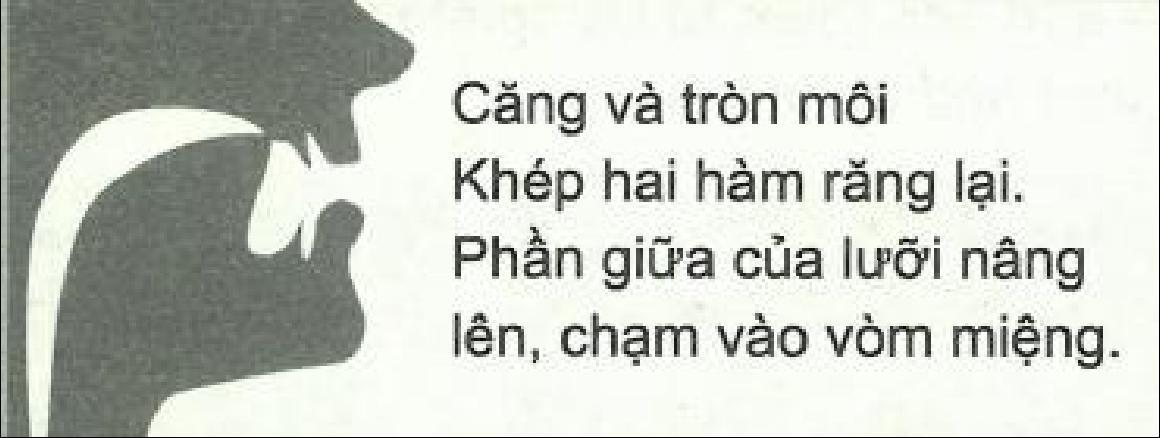
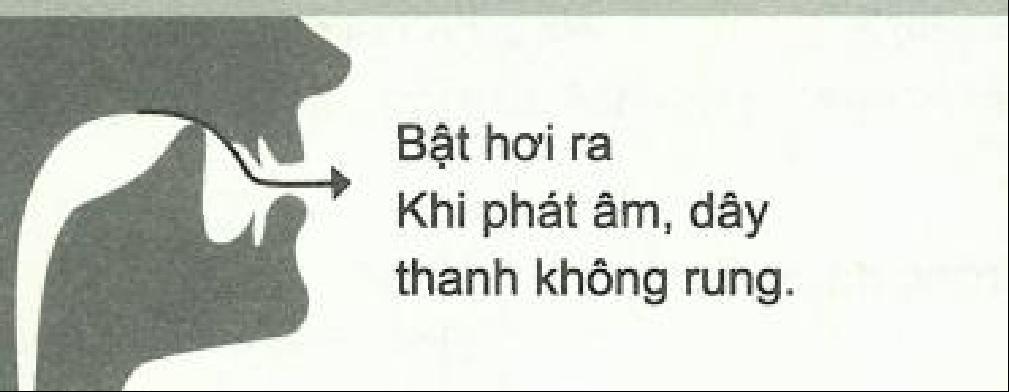

DẠYKÈMQUYNHƠNOFFICIAL
Page 9| 17
CÁCH PHÁT ÂM VÍ DỤ
NGỮ ÂM Pronunciation 1. PHỤ ÂM /tʃ/
CÁCH PHÁT
VÍ DỤ
2. PHỤ ÂM /dʒ/
ÂM
PRACTICE
NGỮ ÂM (PRONUNCIATION)




I -Make words with the sound /tʃ/ and /dʒ/. Then read them aloud /tʃ
II -Put the following words into the correct columns according to the pronunciation of the underlined parts.

teacher village cultural heritage jeans luggage engineer nature cherry jam chicken engine achievement researcher challenger approach suggestion average imagine origin ginger region advantage
III -Find the word which is pronounced differently in the part underlined.
DẠYKÈMQUYNHƠNOFFICIAL
Page 10| 17
/
cheap /dʒ/ 6. -ob
ildren 7. -uice
ques on 8. oran
architec
9. -ym
10. ant
1.
2.
3.
4.
re re
5. wat
dʒ
/tʃ/ /
/ Teacher
E.g.: A. glorious B
great C. girlfriend D. giant 1. A. researcher B. challenger C. architect D. achievement 2. A. cheapness B. exchange C. approach D. brochure 3. A. tradition B. condition C. location D. suggestion 4. A. average B. heritage C. together D. advantage 5. A. engineer B. imagine C. origin D. beginner 6. A. children B. chemist C. anchor D. school 7. A. chicken B. cherry C. teacher D. machine 8. A. question B. nation C. option D. action 9. A. target B. village C. orange D. luggage 10. A. engine B. begin C. ginger D. region VOCABLARY Historical places: Temple of literature Van Mieu
Thien
well Khue
.
Gate
Quang Tinh
Van Pavilion
Doctor’s stone tablets
Uncle Ho’s Mausoleum


Ex I: Choose the word that has different sound in the underlined part
1. A. literature B. silent C. winter D. invite
2. A. temple B. tent C. lend D. because
3. A. clothes B. with C. think D. tooth
4. A. wanted B. needed C. acted D. stopped
5. A. cube B. umbrella C. tuna D. pupil
6. A. advice B. about C. garden D. camera
7. A. chorus B. chalk C. chicken D. cheese
Ex II: Label the picture chicken, match, rich, bridge, church, jeans, lunch, joke, chair, orange, jungle, agency, choose, arrange, furniture, stage, jam
Ex III: Label the picture
Van Mieu Gate The Huc bridge
Doctor’s stone tablets
Thien Quang Tinh Well One pillar pagoda Khue Van Pavilion The Opera House

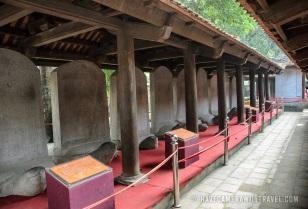




Hoan Kiem lake




DẠYKÈMQUYNHƠNOFFICIAL
Page 11| 17
The Huc bridge
Hoan Kiem lake Huong pagoda
Ba Dinh Square One pillar pagoda
The Opera House
/tʃ/ /dʒ/
1. 2. 3.
4.
5. 6.
7.
8.
Ex IV: Read the passage and put the word in the correct column Richard was a soldier. He joined the army in March, right after his birthday. He liked to make jokes, watch movies and listen to jazz. His friend Charlie and he spent their days off in a local bar. They were all real gentlemen and always tried to help the elderly, women and children whenever they had a chance. The two of them also enjoyed teaching Japanese to junior high school children when they were off duty.
Ex V: Choose the correct form of the word
1. They sell tickets to …………………..at the gate of the site. TOURISM
2. Tourists can see many …………………………Cham Towers in Binh Dinh province. BEAUTY

3. Tan Ky House in Hoi An was…………………………two centuries ago. BUILD


4. He is one of the most ………………………teachers in our school. FAME
5. What is the ………………….of this river, Jack? LONG
6. The book is used to …………………….young men for the nation. EDUCATION
7. Many foreign and Vietnamese tourists …………………..the Temple of Literature each year. VISITOR Ex VI: Odd one out

1. A. temple B. pagoda C. mausoleum D. culture
2. A. century B. televisionC. mobile phone
3. A. interestingB. beautiful C. university D. historic
4. A. literature B. architect C. geography D. physics
5. A. tourist B. gardener C. visitor
6. A. heritage B. wall C. roof
7. A. importantB. careful C. transport
8. A. motorbikeB. helicopterC. ambulance D. local
D. camera
D. cinema
D. floor
D. famous
Ex VII: Fill in the gap with a suitable word given in the box ranked located bikes famous oldest supported market world
1. Our house is ………………….right in the center of the city.
2. Many kinds of fruit are sold at the floating ……………….in Can Tho.
3. I like to study in Havard because it is a ……………….university in the USA.
4. Oxford University is regarded as the ……………..university in the English speaking world.
5. The students are taught and ……………….by famous lecturers in many faculties and departments.
6. The university of Cambridge was ranked ……………after Havard in the United States of America.
7. It is the most prestigious institution of higher education in the ………………..
8. Where are the teachers’ motorbikesand students’ ………………..kept?
DẠYKÈMQUYNHƠNOFFICIAL
Ex VIII: Read the passage and fill each gap with a suitable word in the box follow literature program independent because methods serious century
1. The ………….…..provides a chance for students to bring their personal experiences to the classroom.
Page 12| 17
/tʃ/ /dʒ/
2. I love the subject ……………….it allows me to meet people with similar interests.
3. The author sold more than 50 million copies of in 20 languages by the end of the 21st ………………
4. My father taught English language and ……………..at a university in Germany two years ago.
5. There are many ……………….of learning and ways to help students improve their skills.
6. High school students have to ……………..the rules and obey their teachers.
7. University students are more stressed because their exams are …………….
8. They have to be more ……………………in the real world.
Ex IX: Use the correct form of the words given to complete the passage
Albert Einstein was one of the most famous (1. science)………..…….of all time. He developed the special and general theories of relativity and made many other (2. importance)……..……………discoveries. He was born on in 1879 in Germany. His father was a (3. sale)…………..……and his mother was a housewife. Einstein had one elder sister. He didn’t like (4.study)………………… in Munich. One teacher told him that he would never get anywhere. At this time, he became(5. interest)…..……..…….in classical music and he learnt to play the violin. He finished his university (6. educate) ……..…….…..and found work in an office. In his free time, he continued studying physics. In 1921 he won the Nobel Prize for Physics. He diedin 1955 in New Jersey.
Ex
1.The Golden ………………….of Ba Na Hills Resort is a famous tourist attraction in Vietnam.
2. Hoi An Ancient Town is a lovely little …….…… on the coast of Vietnam.
3. At university, students have to study many ……………….for four years.
4. Have you ever been to Huong …….………..? It is in Ha Tay province.
5. They grow a lot of trees and flowers inside the Temple of ……………….
Ex XI: Write the correct form of the word given
1. These records became ………………….and popular in the 1070s. SUCCESS
2. This library attracts a lot of ………………..in the area. READ
3. We decided not to go ………………….yesterday because it rained heavily. CAMP
4. You can turn the TV off because it didn’t work ………………PROPER
5. Do you have any …………………..oil for this dish? COOK
6. You can cook the egg ……………….into the fan and cook it for three minutes. MIX
7. Please pour the oil over high heat in a ………………pan. FRY
8. The Imperial Academy is …………………..the first university in Vietnam. CONSIDER
9. This is the most important ……………………..and historic site of our country. CULTURE
10.People ………………….a lot of beautiful flowers in Da Lat. GROWTH
Ex XII: Choose the best answer
1. Jim’s house is …………………..in the south of the city centre.
A. surrounded B. located C. supportedD. based
2. The students in this university are ……………..by famous lecturers and professors.
A. learnt B. played C. taken D. taught
3. Many kinds of fruits are ………………….at the floating market.
DẠYKÈMQUYNHƠNOFFICIAL
A. brought B. caught C. sold D. gave
Page 13| 17
5 1 4 2 3
X: Solve the crossword puzzle
4. The souvenirs and postcards inside this place are sold to tourists at a …………………..price by the shopkeeper than in other places.
A. higher B. low C. expensiveD. good
5. A new university will be ……………….inmy town next June.
A. provided B. built C. bought D. had
6. Students in our university are very ……………and hard-working.
A. lazy B. careless C. impatient D. active
7. All the……………………… for the football match were sold out yesterday morning.
A. tickets B. cards C. bags D. flags
8. Havard university is the most ………………..university in the world.
A. noisy B. famous C. happy D. clean
9. Our university …………………….of over 30 faculties and departments.
A. has B. makes C. consists D. supports
10.The Imperial Academy is ……………….the first university in Vietnam.
A. considered B. worked C. based D. constructed SKILLS
KỸ NĂNG
DO YOU KNOW? THE TEMPLE OF LITERATURE
*The Temple of Literature or Temple of Culture is a Temple of Confucius in Hanoi, northern Vietnam.
* The temple hosts the Imperial Academy, Vietnam’s first national university. The temple was built in 1070 at the time of Emperor Ly Thanh Tong.
* It is oneof several temples in Vietnam which is dedicated to Confucius, sages and scholars. The temple Is located to the south of the Imperial Citadel of Thang Long.
* The various pavilions, halls, statues and stelae of doctors are places where offering ceremonies, study sessions and the strict exams of the Dai Viet took place.
(READING SKILLS)
I-Read the passage and decide whether the statements are True (T) or False (F).
THE IMPERIAL ACADEMY OF HUE
Under the reign of Emperor Gia Long, along with the construction of the Temple of Literature In the new capital, an Imperial Academy was built to replace the Imperial Academy in Thang Long. By that time, the number of students was increasing each day, which required the expansion of the Academy. In 1821, an auditorium and three rows of houses for student residence were additionally constructed. In 1825, yet another row of 20 apartments were added.
In 1908, in the reign of Duy Tan, the Imperial Academy was moved to its present-day site in the Forbidden City. The Imperial Academy consists of Di Luan Mansion, located in the center and two rows of classrooms on either side. Behind the Academy stands the Tan Tho Museum (Imperial Fine Arts Museum) and the former houses of principals and vice-principals to either side. The Imperial Academy, a historic and cultural vestige of remarkable value, is one of the two oldest tertiary training institutionsof the monarchist regime in our country.
(www. huefestival, com)
1.The Impreial Academy of Hue was built following Emperor Minh Mang’s order.
2.As of 1826, the Imperial Academy had been renovated twice.
3.There were accomodations for students inside the Academy.
4.In 1908, it was relocated into its modern-day location.
5. The Imperial Academy of Hue is the oldest tertiary training insitutions in Viet Nam.
Q Q Q Q Q Q
DẠYKÈMQUYNHƠNOFFICIAL
II -Read the passage and fill in the blank ONE or TWO words to complete the statements. Sprawling across an area of 54,000 square meters, the complex of the Temple of Literature comprises of Van lake, Giam park, and five interior courtyards. The authentic Vietnamese style architecture of it resembles the temples in China, set in a perfectly preserved state.
Page 14| 17
KỸ NĂNG ĐỌC
The courtyards in the temple are edged with brick walls and each of these unfolds surprises for every history expert or a master of beauty and art. The first two courtyards are decorated with perfectly manicured gardens posing against a backdrop of majestic landscapes. The third courtyard surrounds a large pond which was chris¬tened as the Well of Heavenly Clarity. The fourth courtyard is marked by the statue of Confucius and a house of ceremonies, and finally, the fifth courtyard, famous as Thai Hoc, features a bell tower and a large drum.
1.The complex of the Temple of Literature_________an area of 54,000 square meters.
2.The authentic Vietnamese style_________is perfectly preserved.
3.Each of the courtyards in the temple unfolds_________for every master of beauty and art.
4.There is a large pond in the third courtyard, which was_________as the Well of Heavenly Clarity.
5.Thai Hoc that features a bell tower and a large drum is in the_________courtyard
KỸ NĂNG NGHE (LISTENING SKILLS)
Exercise 1: Listen and decide if each statement is true or false or not given. (Track 11)
No. Statements
1. Van Mieu – Quoc Tu Giam is located in Hanoi.
2. Van Mieu and Quoc Tu Giam were built at the same time.
3. Van Mieu is considered as the first university of Vietnam.
4. 10,000 talented people were trained in Quoc Tu Giam between from 1076 to 1779.
5. Since 1482, no people have been trained in Van Mieu – Quoc Tu Giam.
6. Van Mieu is a place to memorialize the most brilliant scholars of the nation.
7. Name of top students in local examinations were engraved on the stone stelae.
8. Visitors are attracted by the stelae carried on the backs of giant tortoises.
Exercise 2: Listen and complete the text. (Track 12)
T/F/NG
Van Mieu –Quoc Tu Giam is a historical and cultural (1) .................... of Vietnam, which attracts a great number of (2) .................... every year, Van Mieu –Quoc Tu Giam was originally built by the (3) .................... in 1070 in Hanoi. Quoc Tu Giam was considered the first (4) .................... of Vietnam, which was established on the grounds of Van Mieu. (5) .................... used to take place here and the first comers were honored by having their names carved on the (6) .................... These stelae were carried on the backs of (7) .................... , are still standing today and they attract great interest from visitors. After more than 900 years of existence, Van Mieu is an example of well-preserved traditional Vietnamese (8) .................... The banyan trees in Van Mieu, which witnessed festivals and examinations during (9) .................... times, continue to flourish. Van Mieu –Quoc Tu Giam is a site of national (10) .................... for Vietnamese people.
KỸ NĂNG NÓI (SPEAKING SKILLS)
Talk about a historical place in your hometown. You can use the following questions as cues.
•What is the name and location of the place?
• When was it built?
•What are its attractions?
• What do people often do when visiting it?
Useful languages:
Useful vocabulary
• Perfume pagoda, Hue Imperial City, Independence Palace, Notre-Dame cathedral
•under the reign of, 19th century, 60 years ago, French colonial era
•natural landscape, Meridian Gate, President’s Office, Virgin Mary statue
Useful structures
• ...is located in...
• ...is in..., and it... Many people say that it...
• It actually consists of..., and...
• There are..., and...
• ... are natural beauty, for...
DẠYKÈMQUYNHƠNOFFICIAL
• From...to..., thousands of people come there to...
Page 15| 17
•religious festival, going sightseeing, taking pictures, praying
Complete the notes:
Structures of the talk
Your notes
What is the name and location of the place?__________________________________________
When was it built?
What are its attractions?
What do people often do when visiting it?
Now you try!
Give your answer using the following cues. You should speak for 1-2 minutes.
1.The Perfume pagoda is located in...
2. Many people say that it...
3.It actually consists of..., and...
4....are natural beauty, for...
5.From...to..., thousands of people come there to...
Now you tick!
Did you ...
Q answer all the questions in the task?
Q give some details to each main point?
Q speak slowly and fluently with only some hesitation?
Q use vocabulary wide enough to talk about the topic?
Q use various sentencestructures (simple, compound, complex) accurately?
Q pronounce correctly (vowels, consonants, stress, intonation)?
Let’s compare!
Finally, compare with the sample answer on page 209.
VIẾT (WRITING SKILLS)
I-Complete each of the following sentences using the cues given. You can change the cues and use other words in addition to the cues to complete the sentences.
1.Thien Mu pagoda/ regard/ as/ symbol/ Hue city.
2.Notre-Dame Cathedral of Saigon/ cathedral/ locate/ downtown/ Ho Chi Minh City.
3.The Temple of Literature/ first/ build/ 1070/ and/ reconstruct/ during/ Tran dynasty.
4.The Perfume pagoda/ huge/ complex/ Buddhist/ temples.
5.Hung/ King/ Temple/ Festival/ hold/ commemoration/ Kinh Duong Vuong.
II-Write an e-mail (60-80 words) to a friend and remind him/ her about preparing for your next trip. You can use the following questions as cues:
• Where do you plan to go?
DẠYKÈMQUYNHƠNOFFICIAL
• What should you and your friends bring along?
Page 16| 17
KỸ NĂNG
→ ________________________________________________________
→ ________________________________________________________
→ ________________________________________________________
→ ________________________________________________________
→ ________________________________________________________
• Why do you need it?
DẠYKÈMQUYNHƠNOFFICIAL
Page 17| 17
UNIT 7: TRAFFIC (TEACHER’S FILE)
VOCABULARY
1. cycle (v) /saɪkl/: đạp xe
2. traffic jam (n) /'træfɪk dʒæm/: sự kẹt xe
3. park (v) /pɑ:k/: đỗ xe
4. pavement (n) /'peɪvmənt/: vỉa hè (cho người đi bộ)
5. railway station (n) /'reɪlwei ,steɪ∫n/: nhà gaxe lửa
6. safely (adv) /'seɪflɪ/: an toàn
7. safety (n) /'seɪftɪ/: sự an toàn
8. seatbelt (n) /'si:t'belt/: dây an toàn
9. traffic rule (n) /'træfIk ru:l/: luật giao thông
10. train (n) /treɪn/: tàu hỏa
11. roof (n) /ru:f/: nóc xe, mái nhà
12.illegal (adj) /ɪ'li:gl/: bất hợp pháp
13. reverse (n) /rɪˈvɜːs/: quay đầu xe
14. boat (n) /bəʊt/: con thuyền
15. fly (v) /flaɪ/: lái máy bay, đi trên máy bay
16. helicopter (n) /'helɪkɒptər/: máy bay trực thăng
17. triangle (n) /'traɪæŋɡl/: hìnhtam giác
18. vehicle (n) /'viɪkəl/: xe cộ, phương tiện giao thông
19. plane (n) /pleɪn/: máy bay
20. prohibitive (adj) /prə'hɪbɪtɪv/: cấm (không được làm)
21. road sign /rəʊd saɪn/: biển báo giao thông
22. ship (n) /ʃɪp/: tàu thủy
23. tricycle (n) /trɑɪsɪkəl/: xe đạp ba bánh
GRAMMAR
HỎI VÀ TRẢLỜI VỀKHOẢNG CÁCH ( ASK & ANSWER ABOUT DISTANCE)
Cách dùng “How far” là câu hỏi thường được dùng đểhỏi vềkhoảng cách, quãng đường giữa 2 địa điểm.
Ta đặt “It” làm chủ ngữ trong câu để nói về khoảng cách
Cấu trúc How far is it from A to B?
It is (about) + khoảng cách
Ví dụ How far is it from your house to Tan Son Nhat airport?
(Khoảng cách từnhà bạn tới sân bay Tân Sơn Nhất bao xa?)
It’s about 200 km (Khoảng 200 km)
Lưu ý Trong câu trảlời vềkhoảngcách ta thường dùng “about” (khoảng chừng) khi không biết chính xác về khoảng cách đó.
PRACTICE 1
Bài 1: Khoanh tròn vào đáp án đúng.
1.How far is it from your apartment (from/to) the city centre?
2.It is (at/ about) 1 kilometre.
3.It is not very (near/far) from my house to the post office. It is just 500 metres.
4.How far (is it/ it is) from your country to Japan?
5.How (far/ much) is it from your location to the train station?
6.My house is 2 kilometers (near/ far) from my grandparents’ bungalow.
7.How far (is it/ are they) from here to the local museum?
8.I think it is about 200 ( metres/ metre) from here to the nearest bus stop.
9.My school is not far (from/to) my house. I can walk to school every day.
10.How far is it (from/ at) your office to the supermarket?
DẠYKÈMQUYNHƠNOFFICIAL
Bài 2: Điền một từthích hợp vào chỗtrống.
1.How_______ is it from your house to the city centre?
Page 1| 14
2.How far is it from this restaurant to the nearest __________? It is about 1 kilometer from this restaurant to the nearest bank?
3.How far__________it from Hanoi to Ho Chi Minh City?
4.It is about 5 kilometres from my house__________yours.
5.How far is_________from your company to your apartment?
6.It is _3 kilometres.
7.How far is it from my school to yours? __________is about 8 kilometres
8.How far is it __________where you live to your company?
1. ______________________________________________________________?
Bài 3: Dựa vào những câu trảlời cho trước, hãy viết câu hỏi vềkhoảng cách.
It is about 300 metres from here to the nearest post office.
2. ______________________________________________________________?
It is about 3,900 kilometers from New York to California.
3. ______________________________________________________________?
It is about 200 metres from my house to my family store.
4. ______________________________________________________________?
It is about 4576.89 miles from Beijing to Berlin.
5. ______________________________________________________________?
It is about 1 kilometer from my hotel to the beach.
6. ______________________________________________________________?
It is about 500 metres from here to the place where I live.
7. ______________________________________________________________?
It is about 200 kilometers from his hometown to the place where he lives now.
8. ______________________________________________________________?
It is just 200 metres from the park to the parking lot.
9. ______________________________________________________________?
It is approximately 4 kilometers from here to the airport.
10.______________________________________________________________?
It is about 60 kilometers from my parent’s house to mine
Bài 4: Đánh dấu (√ ) trước những câu trảlời đúng. Đánh dấu (X) trước những câu có lỗi sai và sửa lại cho đúng.
How far is from your house to the nearest restaurant?
It is at 2 kilometers from my house to La Villa French restaurant.
How far is it from your university and my university?
It is not far from my university to yours
How far is it from here to our destination?
How far it is from our school to the camp site?
Its not far from our school to the camp site.
How far is it at the train station to the nearest drugstore?
DẠYKÈMQUYNHƠNOFFICIAL
Bài 5: Dựa vào gợi ý cho sẵn trong ngoặc, trảlời các câu hỏi vềkhoảng cách sau đây:
1.How far is it from your house to the gym? (300 metres)
Page 2| 14
2.How far is it from where you live to where you work? (2 kilometres)
3.How far is it from Hanoi to Hoi An? (about 800 kilometres)
4.How far is it from from Earth to Mars? (about 34 miles)
5.How far is it from Earth to the nearest star? (4.2 light-years)
6.How far is it from North Pole to Equator? (about 100000 kilometres)
GRAMMAR
1. Should (nên) và Shouldn't (không nên) dùng để đưa ra lời khuyên
Should là động từ khuyết thiếu, do đó nó không cần chia theo các ngôi và luôn cẩn một
động từ nguyên thể không "to" đi đằng sau
Thể Thể khẳng định +Thể phủ định Thể nghi vấn
Chức năng Dùng để diễn tả lời khuyên, hay ý nghĩ điều gì là đúng, nên làm hoặc không nên làm.
Dùng để hỏi ý kiến hay yêu cẩu một lời khuyên.
Cấu trúc s + should/ shouldn't + V + (các thành phần khác).
Should + s + V +(các thành phẩn khác)?
Yes, + should. No, + shouldn't.
Vi dụ We should brush our teeth twice a day.
(Chúng ta nên đánh răng hai lẩn một ngày.)
We shouldn't waste water.
(Chúng ta không nên lãng phí nước.)
BÀI TẬP VẬN DỤNG CƠ BẢN
Should we buy a new car?
(Chúng ta có nên muamột chiếc ô tô mới không?)
Yes, we should.
(Có, chúng ta nên mua.)
Bài 1:Đọc câu và điền should/shouldn't vào chỗ trống sao cho hợp lý.
1.Tom.........................eat so many lollipops. It's bad for his teeth.
2. He's fifteen.He........................ drive a car.
3. Pregnant women..............smoke as it can damage the baby.
4.We...................go somewhere exciting for our holiday.
5. People ...................drive fast in the town centre.
6. You ...................askthe teacher to help you if you don't understand the lesson.
7. I ...................buy the dress or the skirt?
8. She...................tell lies.
9.That's a fantastic book. You...................read it
DẠYKÈMQUYNHƠNOFFICIAL
10. The doctot said: you ...................eat healthy food. You...................eat fast food.You watch so much TV. You ................... walk 1 hour a day. You................... drink fruit juice and water. You...................drink wine or beer.
Page 3| 14
11. You ...................be so selfish.
12. I don’t think you ................... smoke so much.
13. You................... exercise more.
14. I think I you ................... try to speak to her.
15. You are overweight. You ................... go on a diet.
16. Where................... we park ourcar?
17. You ................... never speak to your mother like this.
18. The kid ................... spend so much time in front of the TV.
19.................... I tell her the truth or should I say nothing?
20. I think we................... reserve our holiday in advance.
Bài 2: Nối câu ở cột A (tình huâng) v6i cột B (lời khuyên) sao cho hạp lý.
Cột A Cột B
1. It's too far to walk.
2. Someone doesn't know which way to go.
3. Someone is going to live overseas.
4. It's going to be a cold day.
5. Someone is feeling hot and has a headache.
6. Someone has seen somebody breaking into a shop window.
7. Someone hasn't got any money with them.
8. It's raining.
9. Someone has to get up early in the morning.
a. You should learn the language before you go.
b. You should ask a policeman.
c. You should wear an overcoat.
d. You should pay by cheque.
e. You should call the police.
f. You should see a doctor.
g. You should take a rest.
h. You should take a taxi.
i. You should set your alarm clock.
j. You should take an umbrella. 1...........
10. Someone is tired out.
Bài 3: Sắp xếp các từ sau để tạo thành câu hoàn chinh.
1. up/I / smoking/./ should/ give
2. I/ not/?/ tell/ her/ or/ Should
3. think/should/I/take/you/easy/./it
4.What/should/time/come/?/I ………………………………………………………………………………………
5.Jeff/ much/./work/ so/ shouldn't
DẠYKÈMQUYNHƠNOFFICIAL
6.We/ our/ take/ should/ umbrellas/.
Page 4| 14
2........... 3...........
7........... 8........... 9........... 10...........
4........... 5........... 6...........
………………………………………………………………………………………
………………………………………………………………………………………
………………………………………………………………………………………
7.don't/ accept/ this/ Anita/ job/./ think /I /should ………………………………………………………………………………………
8.you/ should/ sure/ we/ Are/ it/?/ do ………………………………………………………………………………………
9.What /should/ is/ do/ home/, /go/ you
10.speak/ should/ think/ to/ Do/ police/?/ you/ the/I
Bài 4: Dựa vào các gợi ý dưới đây để đưa ra lời khuyên cho mỗi tình huống sau. Take medicine / take up swimming/ worry about it/ eat so much sweets/ do little jobs or go babysitting/ ask your teacher to explain it again/ study harder/ watch too much television/ i practice a lot/ get up earlier
1. We are often late for school. ………………………………………………………………………………………
2. My friends laugh at me because I don't have expensive clothes.
3. My mother has a terrible headache.
4. don't understand how to give advice in English.
5.My brother gets very bad marks at school.
6.We're going to write a Maths test tomorrow. ………………………………………………………………………………………
7. My sister can’t swim and she wants to go to Greece next summer.
8. I always feel tired
9. My friends love eating and they'revery fat.
10. I want to buy some new clothes but I don't haveany money.
Bài 5: Chọn động từ thích hợp trong bảng dưới đây để điền vào chỗ trống. clean eat fasten go stay study takex2visit watch
1. If you have time you should............................ the National Museum.
2. When you are driving a car, you should..........................your seatbelt.
3. When you play football, you should .........................the ball.
4. It's late and you are tired. You should......................to bed.
5.You should.....................your teeth at least twice a day.
6. It's too far from here. You should....................a taxi to get there.
7. If you want to pass the exam, you should....................more.
8. He wants to lose weight, so he should.................... less
9. It's raining now. I think you should....................an umbrella.
10. He is ill. He should............................ at home.
Bài 6: Dựa vào các gợi ý sau, viết câu với cấu trúc should hoặc shouldn't.
1.(eat between meals) You ........................................................................................................
2.(go on a diet) You ........................................................................................................
3.(get exercise) You ........................................................................................................
4.(drink soda) You ........................................................................................................
DẠYKÈMQUYNHƠNOFFICIAL
5.(eat mmore vegetables) You ........................................................................................................
6.(eat apple) You ........................................................................................................
Page 5| 14
………………………………………………………………………………………
………………………………………………………………………………………
………………………………………………………………………………………
7.(eat too much bread) You ........................................................................................................
8.( only drink plain water) You ........................................................................................................
9. (eat too much chocolate) You ........................................................................................................
10. (change your health habits) You ........................................................................................................
PRACTICE
VOCABULARY AND PRONUNCIATION
1.1 Phát âm nguyên âm đôi /eɪ/
Bước 1: Bắt đầu từ âm /e/, sau đó di chuyển về phía âm /ɪ/.
Bước 2: Khi bắt đầu, miệng mở rộng thoải mái, đầu lưỡi chạm hàm răng dưới, hàm hạ. Sau đó, môi dần kéo sang hai bên về phía tai, hàm dưới nâng lên một chút.

Bước 3: Kết thúc âm, môi mở hờ.
Ví dụ:
∑ Later /ˈleɪtər/: sau đó
∑ Tasty /ˈteɪsti/: vị
∑ Danger /ˈdeɪndʒər/: nguy hiểm
∑ Explain /ɪkˈspleɪn/: giải thích
∑ Exchange/ ɪksˈtʃeɪndʒ/: trao đổi
1.2 Phát âm nguyên âm đôi /aɪ/
Bước 1: Bắt đầu từ âm /a/, sau đó di chuyển về phía âm /ɪ/.
Bước 2: Khi bắt đầu, miệng mở hình ovan, lưỡi hạ thấp chạm hàm răng dưới. Sau đó, môi dần kéo sang 2 bên
về phía tai, hàm dưới nâng lên 1 chút.
Bước 3: Kết thúc âm, môi mở hờ.
Ví dụ:
∑ fine /faɪn/: tốt, nguyên chất
∑ behind /bɪˈhaɪnd/: đằng sau
∑ child /tʃaɪld/: đứa trẻ
∑ nice /naɪs/: đẹp Practice
Means of transport:




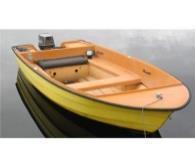



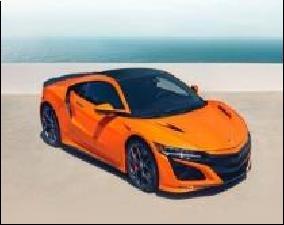
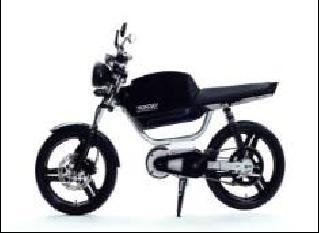
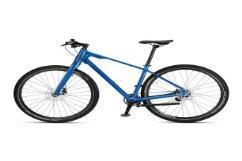
DẠYKÈMQUYNHƠNOFFICIAL
Page 6| 14
Bike/bicycle Motorcycle Car Bus Truck Ambulance Train Boat Ship Plane Taxi Helicopter 1.accident (n) Tai nạn 2. population (n) Dân số 3. rule (n) Luật lệ 4. vehicle (n) Phương tiên 5. pedestrian (n) Người đi bộ 6. pavement (n) Vỉa hè 7. footpath (n) Lối đi bộ 8. helmet (n) Mũ bảo hiểm 9. obey (v) Tuân lệnh 10. increase (v) Gia tăng 11. cross (v) Sang đường 12. narrow (a) Hẹp
DẠYKÈMQUYNHƠNOFFICIAL



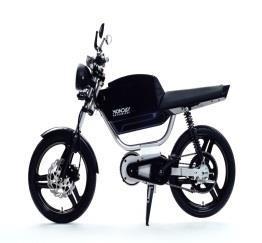
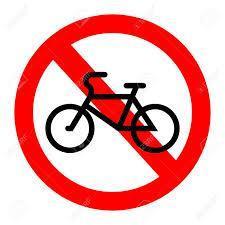

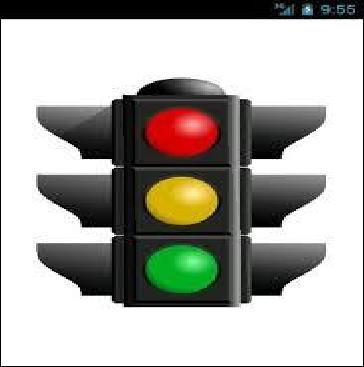

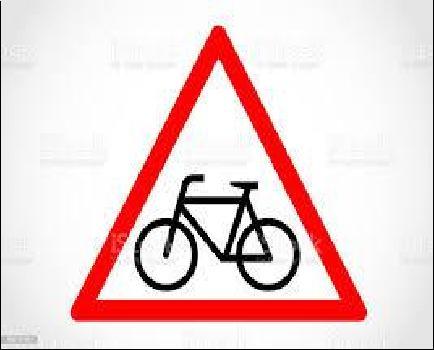
Write the words using the first letter given

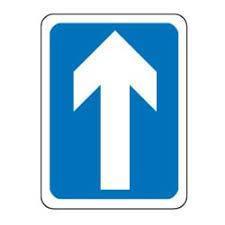


Page 7| 14 13. bumpy (a) Nhấp nhô 14. crowded (a) Đông đúc 15. illegal (a) Phạm pháp 16. rush hour Giờ cao điểm 17. traffic jams Tắc nghẽn giao thông 18. traffic sign Biển báo giao thông 19. traffic light Đèn giao thông 20.cycle lane Làn đường cho xe đạp 21. parking lot Bãi đỗ xe 22. safety belt Dây an toàn 23.poor quality Chất lượng kém 24. means of transport Phương tiện giao thông Ex I: Choose the word that has different sound in the underlined part 1.A. ship B. bicycle C. dish D. taxi 2.A. hole B. cold C. motorbike D. bowl 3.A. hand B. traffic C. cancel D. park 4.A. subject B. truck C. ambulance D. luck 5.A. illegal B. helicopte C. nest D. dentist 6.A. railway B. law C. may D. today 7.A. accident B. cookies C. traffic D. carry 8.A. entered B. loved C. kicked D. discovered 9.A. opened B. invented C. considered D. married 10.A. attacked B. stopped C. laughed D. surrounded Ex II: Labe the picture Traffic lights, cycle lane, Turn left ahead, Parking lot, No cycling, One way traffic, Turn right ahead, Road work
2. 3. 4.
6. 7. 8.
III:
1.m 2.t………………. 3.t………………….. 4.b…………………
1.
5.
Ex
Ex
Add more word to each list
1.Means
2.Road signs: stop,……………………………………………………………………………

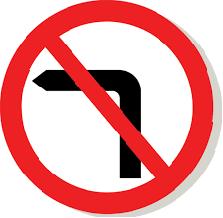
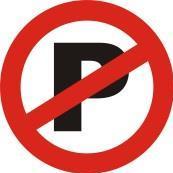
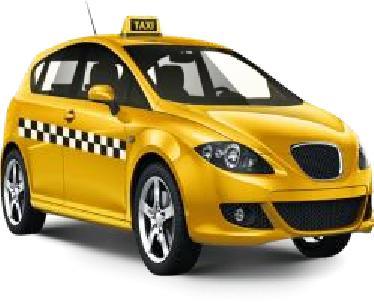
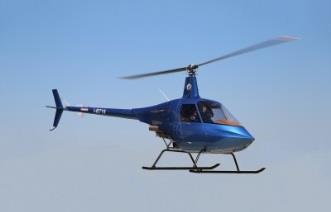
Ex VI: Circle the correct word
1.You can/can’t park here.
2.You can/can’t turn right here.
3.You can/can’t turn left.
4.You can/can’t make a U-turn here.
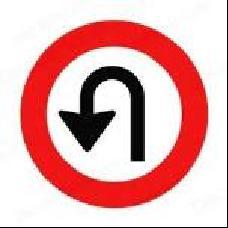
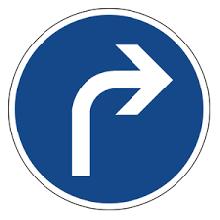
5.You can/can’t go home here.

Ex VII: Put the words in the correct column tradition, payment, train, lane, , today, May, whale, pain, taste, lake, main, rain, stay, dielikewhyhigh nightfighting/ surprisechildhoodtour guide

DẠYKÈMQUYNHƠNOFFICIAL
Page 8| 14 5.h……………….. 6.s………………. 7.p……………….. 8.t………………..
B. taxi C. sign D. plane
bus B. driver C. motorbike D. bicycle
B. yesterday C. tomorrow D. today 4.A.
B. engineer C. painter D. transport 5.A. pavement B. sheep C. pedestrian D. footpath 6.A. crowded B. bumpy C. accident D. noisy 7.A. increase B. supermarket C. restaurant D. cinema 8.A. helmet B. vehicle C. accident D. narrow 9.A. pizza B. spaghetti C. obey D. hamburger 10.A. secretary B. rule C. nurse D. dentist
Ex IV: Odd one out 1.A. ambulance
2.A.
3.A. train
artist
V:
………………………………………………………………………………………………………………
of transport: bus,………………………………………………………………
/ai/ /eɪ/
Ex VIII: Read and choose the best answer
a. You must turn right.
b. You must turn left.

c. You must go ahead.
a. Trains must stop.
b. Trains mustn’t enter.
c. You must be careful with the train.
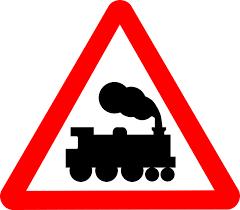
a. You can turn back.
b. You mustn’t turn back.
c. You must turn back.
a. Pedestrians can enter.
b. Pedestrians mustn’t enter.
c. Pedestrians must enter.
a. You can park here.
b. You must park here.
c. You mustn’t park here.
a. Cyclists must enter.
b. Cyclists mustn’t enter.
c. Cyclists can park here.
Ex IX: Read and underline the words with the /e/ sound and /eɪ/ sound in the following passage For many years, Betty has been driving to work and back every weekday. Every morning, on her way to work, especially during the rush hour, the highways are usually crowded causing massive traffic jams. The situation is even worse in the evening when she drives home. All the traffic comes to a halt whenever there is an accident or a car broken down and blocks an entire lane. In the winter, particularly when it snows, multi-car accidents with injuries can take vehicles removers a number of hours to clear the road. When Betty is stuck in a heavy traffic jam, she listens to music on the radio to calm her nerves. Her boss and her husband know that if she is late, she is probably stuck in traffic.
Ex X: Fill in the gap with a suitable word or phrase given in the box pollution suspension traffic environmental factories underground busiest cheapest
1.In Dubai, the ……………..is so bad that it is quicker to walk than to go bycar or bus.
2.People suggest building flyovers, tunnels and ……………..car parking.
3.There are lots of problems nowadays, mainly because of pollution.
4.The emission of smoke from ……………….and cars is a big cause of air pollution.
5.We all should act green and fight the ……………….by using the 3 R’s.
6.One of the quickest and ………………..ways travelling around the city is to take a bus.
7.Bangkok, the capital of Thailand, is one of the …………….city in the world.
8.The Golden Gate Bridge, a…………………. bridge, is one of the most internationally recognized symbols of San Francisco.
Ex XI: Choose the best answer
1.They often choose …………………cars with bigger engines to get higher speed.
A.slowerB. faster C. smaller D. worse
2.The underground in Japan is much …………………than taxis or buses.
A.slow B. quick C. quicker D. more quick
3.What ………………did you use to play when you were six years old?
A.toy B. card C. ball D. game
4.There should be a ……………..limit in the playground to prevent accidents.
A.speedB. time C. engine D. cost
DẠYKÈMQUYNHƠNOFFICIAL
5.The traffic…………….tell people to do, warns people about possible dangers in the street.




A.jams B. signs C. lights D. rules
6.Always look…………………..when you cross the street.
Page 9| 14
1.
2.
3.
4.
5.
6.
A.quicklyB. well C. carefully D. safely
7.What must you do before you turn left or right when ……………a motorbike?
A.holding B. taking C. making D. riding
8.He is driving his car too fast but he is not wearing his……………..
A.seatbelt B. helmet C. hat D. coat
9.The little boy is walking at the side of the road towards a zebra………………….
A.passing B. crossing C. taking D. doing
10. Why should pedestrians wear light colored …………….in the dark?
A. glovesB. hats C. clothes D. jeans
11. Big cities often ………………..from traffic jams every day.
A. cross B. suffer C. start D. come
12. One problem in big cities is that too many people…………the road.
A. take B. do C. make D. use
Ex XII: Write the correct form of the word given
1.A man in a silver sports car ……..……. into a lady in a big blue truck in the middle of the intersection yesterday. CRASH
2.Traffic accidents can be ……………….if people obey the rules. PREVENT
3.My father used to go ………………in the pond near our house. FISH
4.Which drivers are the ………………….on the roads? SAFE
5.Young and inexperienced ………………..are the most likely to have an accident. DRIVE
6.When young male drivers have their friends in the car, their driving usually becomes…………………BAD
7.It’s much more ………………………..for you to cross the street now. DANGER
8.You should drive more ………………….and safely when it gets dark. SLOW
9.Bells are designed to wake the ………………..motorists. SLEEP
10.There are many …………………who sell and buy things on the road every morning. VILLAGE
Ex XIII: Give the correct form of the words in brackets
There are over 700 million motor vehicles in the world and the number is (1.rise)……………….by more than 40 million each year. This dependence on motor vehicles has given rise to major problems including (2. environment)……………………..…pollution, traffic congestion and safety. Emissions from new cars are far more (3. harm) ………..……than they used to be. City streets and motorways are becoming more(4. crowd)………..………than ever, often with more older trucks, buses and taxis. This makes the air quality in urban areas unpleasant and sometimes (5. danger) …………………….to breathe
SKILLS
B. KỸNĂNG
DO YOU KNOW?
STRANGE TRAFFIC LAWS FROM AROUND THE WORLD
•It’s illegal to eat or drink while driving in Cyprus.
•In South Africa, animals have the same right to the roads as motorists do. Drivers face heavy fines of up to $500 if they do not slow or stop for passing livestock.
•Road safety officials in Denmark have made it a legal requirement for drivers to check for children hiding beneath the vehicle before starting the engine.
•In Moscow, it’s all about cleanliness -police impose fines on anyone with a dirty car.
• In Jasper Gates, Canada, a dumb law forbids drivers from going faster than a horse or carriage
KỸNĂNG ĐỌC (READING SKILLS)
DẠYKÈMQUYNHƠNOFFICIAL
I-Read the passage and choose the best option to answer each of the following questions. In the UK, bus journeys are just boring and simply a necessity. This public means of transportation is often convenient when you live orwork in the city centre, as you can avoid traffic jams by moving very quickly in the bus lanes, and do not have to pay to park the car. After all, though, taking the bus is just a necessary and tedious part of life: you board the bus, pay the driver and sit down or find a place to stand. Very boring.
Page 10| 14
In Latin America, however, bus trips can be very lively. For a start, long-distance buses put on films so that you have entertainment for at least some of the journey. Naturally, local transport does not show films but drivers usually switch on the radio and that can be a great way to hear new songs and new styles of music. Therefore, taking the bus doesn’t sound like fun but it is much more exciting than any UK bus journey.
1.What is the main idea of the passage?
A. Buses in the UK are very convenient.
B. Bus journeys are different in the UK and in Latin America.
C. Bus journeys in the UK are boring.
D. Films are shown on long-distance buses in Latin America.
2. Public transport in the UK is convenient because you can avoid_________.
A. traffic accidents B. policemen
3.The word “tedious” in line 3 means_________.
A. not interesting B. exciting
C. traffic jams
C. wonderful
(British Council)
D. bus lanes
D. important
4.The phrasal verb “put on ” in the first sentence of the second paragraph can be replaced with “_________”.
A. close B. wear
C. play
D. open
5.Which of the following statements is NOT MENTIONED about bus journeys in Latin America?
A. Passengers canentertain during their trip by watching films.
B. Drivers play new styles of music on the radio.
C. They are more exciting than bus trips in the UK.
D. They are more expensive than bus trips in the UK.
II -Read the passage and do the tasks below.
Trafficjams in Viet Nam frequently take place in big cities, such as Ha Noi and Ho Chi Minh City. There is no fixed rule for the time a traffic jam to happen. But It is worst during the rush hour when everyone is in a hurry to get to work or come back home. Apart from peak hours, the time between 9 a.m. to 10 a.m. and between 3 p.m. to 4 p.m. also witnesses long lines of vehicles, mainly motorbikes. When it rains, the traffic jam gets more terrible. Taxis are extremely hard to catch or wave during the downpour. However, the most annoying thing about the traffic jam is the way people react to it. Most road users ride their motorbikes on the pavement rather than waiting calmly. Moreover, they constantly use their horns to hasten riders in the front, even shouting atthem from time to time.
Part 1: Choose the best answer to each of the following questions.
1.What is the passage mainly about?
A. the causes of traffic jams in Viet Nam
B. the effects of traffic jams in Viet Nam
C. the reality of traffic jams in Viet Nam
D. the solutions to reduce traffic jams in Viet Nam
2.When is traffic congestion in Viet Nam the worst?
A. when everyone goes to work
B. between 9 a.m. to 10 a.m.
C. between 3 p.m. to 4 p.m.
D. at the weekend
3. It’s difficult to catch a_________duringthe downpour.
A. bus B. taxi C. train D. motorbike
Part 2: Decide whether the statements are TRUE (T) or FALSE (F).
1.There is a certain time for traffic congestion in Viet Nam.
2.The traffic jam becomes more serious when it rains.
3. To get through a traffic jam, road users usually break traffic rules.
KỸNĂNG NGHE (LISTENING SKILLS)
Exercise 1: Listen and complete the text about traffic. (Track 13)
TRAFFIC
q q q
DẠYKÈMQUYNHƠNOFFICIAL
Page 11| 14
There is too much traffic on our roads. In (1) ....................., it may take 20 minutes to go through a 02kilometer road by (2) .....................
Everyone agrees that something has to be done to solve this problem. No one likes to spend much time going to school or the (3) ..................... Going home takes even more time.
It is not easy to build more or (4) ..................... the roads because it is expensive. So, the answer here is to reduce the number of vehicles.
(5) ..................... may be the solution to the traffic jam.
The problem is that time is golden, so not everyone agrees to wait for (6) .....................of public transport such as buses or (7) ..................... Another problem is that they may not like to be (8) .................... in a (9) .................... bus. The last problem is that the buses cannot go in a small road, so some people who work in a small road will have to walk for a while.
The answer to (10) ..................... has not been found out.
Exercise 2: Listen and decide if each statement is true or false or not given. (Track 14)
No. Statements
1. Garret A. Morgan lives in a rich family since he is born.
2. When he is 14, he does not study at school any more.
3. He is famous all over the world for his imagination.
4. He works in a sewing machine shop and finds it interesting.
5. In 1901, he sells the idea of a special belt at the price of $150.
6. Three years later, he invents a helmet and wins a silver medal for this idea.
7. When Morgan witnesses the car accident of his mother, he thinks of a traffic light.
8. Morgan spends the amount of money from selling the idea of traffic light on an abroad trip.
KỸNĂNG NÓI (SPEAKING SKILLS)
Talk about your favorite means of transportation
You can use the following questions as cues:
• What is your favourite means of transportation?
• How often do you use it?
• Where do you usually go?
• Why do you like it?
Useful languages: Useful vocabulary
Useful structures
•My favourite means of transportation is ...
• ... is myfavourite means of transportation.
• I ride a bike/ sail on a boat/ fly every day/ every weekend ...
• I ride a bike/ sail on a boat/ fly to ...
DẠYKÈMQUYNHƠNOFFICIAL
• I really like this vehicle because ....
• I love this vehicle because of its + N
Page 12| 14
T/F/N G
•bicycle • car • helicopter •boat •convenient •cheap • safe
•environmentally friendly
• healthy
Complete the notes:
Structures of the talk
What is your favourite means of transportation?
How often do you use it?
Where do you usually go?
Why do you like it?
Now you try!
Your notes
Give your answer using the following cues. You should speak for 1-2 minutes.
1.My favourite means of transportation is ...
2.I ride a bike/ sail on a boat/ fly by plane ...
3.I ride a bike/ sail on a boat/ fly by plane to ...
4.I really like this vehicle because ....
Now you tick!
Did you ...
q answer all the questions in the task?
q give some details to each main point?
q speak slowly and fluently with only some hesitation?
q use vocabulary wide enough to talk about the topic?
q use various sentence structures (simple, compound, complex) accurately?
q pronounce correctly (vowels, consonants, stress, intonation)?
Let’s compare!
Finally, compare with the sample answer on page 138.
KỸNĂNG VIẾT (WRITING SKILLS)
I-Complete each of the following sentences using the cues given. You can change the cues and use other words in addition to the cues to complete the sentences.
1.have/ trip/ hometown/ brother/ two days ago.
→ ________________________________________________________
2.15 kilometres/ my place/ my hometown.
→ ________________________________________________________
3.go/ there/ train/ and/ it/ comfortable.
→ ________________________________________________________
4.there/ alot of/ vehicles/ road.
→ ________________________________________________________
5.trip/ exciting/ meaningful.
→ ________________________________________________________
II-Write a short paragraph (60-80 words) describing a trip to your hometown
Youcan answer some of the following questions:
• Where is your hometown?
• How did you get there?
• Who did you go with?
DẠYKÈMQUYNHƠNOFFICIAL
• How was the traffic?
Page 13| 14
• Did you enjoy the trip?
DẠYKÈMQUYNHƠNOFFICIAL
Page 14| 14
UNIT 8: FILMS
VOCABULARY
1. animation (n) /'ænɪˈmeɪʃən/: phim hoạt hoạ
2. critic (n) /'krɪtɪk/: nhà phê bình
3. direct (v) /dɪˈrekt/: làm đạo diễn (phim, kịch...)
4. disaster (n) /dɪˈzɑːstə/: thảm hoạ, tai hoạ
5. documentary (n) /,dɒkjə'mentri/: phim tài liệu
6. entertaining (adj) /,entə'teɪnɪŋ/: thú vị, làm vui lòng vừa ý
7. gripping (adj) /'ɡrɪpɪŋ/: hấp dẫn, thú vị
8. hilarious (adj) /hɪˈleəriəs/: vui nhộn, hài hước
9. horror film (n) /'hɒrə fɪlm /: phim kinh dị
10. must-see (n) /'mʌstsi:/: bộ phim hấp dẫn cần xem
11. poster (n) /'pəʊstə/: áp phích quảng cáo
12. recommend (v)/,rekə'mend /: giới thiệu, tiến cử
13. review (n) /rɪˈvju:/: bài phê bình
14. scary (adj) /:skeəri/: làm sợ hãi, rùng rợn
15. science fiction (sci-fi) (n) /saɪəns fɪkʃən/: phim khoa học viễn tưởng
16. star (v) /stɑː/: đóng vai chính
17. survey (n) /'sɜːveɪ/: cuộc khảo sát
18. thriller (n) /'θrɪlə /: phim kinh dị, giật gân
19. violent (adj) /'vaɪələnt/: có nhiều cảnh bạo lực
GRAMMAR
TỪNỐI (CONNECTORS): ALTHOUGH/ IN SPITE OF/ DESPITE/ HOWEVER/ NEVERTHELESS.
1. Although/ In spite of/ Despite: Although
In spite of Despite
Chức năng Chỉmối quan hệđối lập giữa hai thông tin trong cùng một câu
Cấu trúc Although + mệnh đề1 (S+V), mệnh đề2 (S+V),
Ví dụ We enjoyed our camping holiday although it rained every day.
(Chúng tôi đã rất thích chuyến đi cắm trại mặc dù ngày nào trời cũng mưa)
Although he worked very hard, he didn’t manage to pass the exam.
(Mặc dù anh ấy học hành chăm chỉ, nhưng anh ấy đã không thi đỗ)
2. However/ Nevertheless:
However/ Nevertheless:
Inspite of +danh từ/ cụm danh từ/ V-ing
We enjoyed our camping holiday in spite of the rain.
(Chúng tôi đã rất thích chuyến đi cắm trại mặc dù trời mưa)
In spite of the traffic, we arrived on time.
(Mặc dù giao thông tồi tệ, tôi vẫn đến đúng giờ)
Despite +danh từ/ cụm danh từ/ V-ing
We enjoyed our camping holiday despite the rain.
(Chúng tôi đã rất thích chuyến đi cắm trại mặc dù ngày nào trời cũng mưa)
Despite the pain in his leg, he completed the marathon.
(Mặc dù đau chân nhưng anh ấy vẫn hoàn thành cuộc thi chạy)
Chức năng Chỉmối quan hệđối lập giữa hai câu
Cấu trúc Mệnh đề1. However/ Nevertheless, mệnh đề2.
Mệnh đề1. Chủngữ, however/ nevertheless, động từ.
Mệnh đề1. Mệnh đề2, however/ nevertheless
DẠYKÈMQUYNHƠNOFFICIAL
Page 1| 13
Ví dụ I love London. However, the weather is bad.
(Tôi yêu Luân Đôn. Tuy nhiên thời tiết thì tệ)
I love London. The weather, however, is bad. I love London. The weather is bad, however.
BÀI TẬP VẬN DỤNG
Bài 1: Điền “although/ despite/ in spite of” vào chỗtrống thích hợp.
1.________________ she has a good look, everybody hates her.
2.Jane seldom sees Jim ______they go to the same school.
3.________________ her illness, Jane went to work yesterday.
4.________________ it was chilly outside, we went fishing.
5.________________ working hard, Peter failed the test.
6.________________ the difficulties, Sarah managed to solve the problem.
7.My grandfather was very strong __________his old age.
8.The children slept deeply ________________ the noise.
9.________________ the high salary, Marey refused the job offer.
10.________________earning a high salary, Sara never wastes her money.
11.I find the film boring________________ many people like it.
12.________________the bad weather, we went on our school picnic.
13.________________the congestion, we weren’t late for the meeting.
14.________________ he’s rich, he is always upset.
15.I couldn’t sleep________________ I was exhausted. Bài
1. Mrs Smith loves her children so much. She’s sometimes very strict
2. We can go there by bus. It is not the only way.
3. Jim is good at English. He is not the best student.
4. My new phone costs a lot of money to buy. It isn’t as good as I expected.
5. It’s hard to find a parking lot near here on Sunday. I think we can find one.
6. My mother wants to go to Paris in this summer. My dad wants to go to Berlin.
7. Jane doesn’t like salads.She likes vegetables.
8. My father loves watching football match. He never plays football.
Bài 3: Hoàn thành câu với một trong những từnối “although/ despite/ however” sao cho thích hợp.
1. _______________ the restaurant’s good reputation, the food was terrible.
_______________ the restaurant has a good reputation, the food was terrible. The restauranthas a good reputation. _______________, the food was terrible.
2. _______________ it didn’t stop raining, we didn’t cancel our picnic.
_______________ the rain, , we didn’t cancel our picnic. It didn’t stop raining. We didn’t cancel our picnic,______________.
3.Mary still bought the watch, __________ it had a high price.
DẠYKÈMQUYNHƠNOFFICIAL
Page 2| 13
2: Sửdụng liên từ“however” hoặc “nevertheless” đểliên kết hai câu cho sẵn.
Mary still bought the watch __________ its high price. The watch had a high price. Mary, ___________, bought it
4. _______________ the fact that I was late for school, my teacher didn’t punish me.
_______________ I was late for school, my teacher didn’t punish me.
I was late for school. My teacher didn’t punish me, ___________.
5. _______________ I invited Jim to my party, he didn’t come.
_______________ my invitation to the party, Jim didn’t come.
I invited Jim to the party. _______________, he didn’t come.
6.I don’t want to watch this film_______________ it has many good reviews.
I don’t want to watcht this film _______________ its good reviews. The film has many good reviews. I don’t want to watch it,_______________.
7. _______________ there are many challenges, Tom won’t give up his dream.
_______________ many challenges, Tom won’t give up his dream. There are many challenges.__________, Tom won’t give up his dream.
8. _______________ I studied very hard, I failed the exam.
_______________ studying very hard, I failed the exam.
I studied very hard. I,__________, failed the exam.
Bài 4: Khoanh tròn đáp án đúng.
1.We adore winter _________ the cold.
A. in spite of B. although C. however
2. She went to bed early_________ she didn’t finish her work.
A. despite B. although
however
3. _________ the fact that he is 23 years old, he is so childish.
A. in spite B. despite C. however
4. I go to school by bus every day. I don’t like it much, _________.
A. despite B. although C. however
5. _________ Jim owns two cars, he rarely drives to work.
A. despite B. although C. however
6. The athlete completed the race _________ his pain.
A. despite B. although C. nevertheless
7. Jane looks pretty. She, _________, seems to lack personality.
A. despite B. although C. nevertheless
8. _________ we have a slim chance to win, we won’t lose hope.
A. despite B. although C. however
9. _________ of his bad luck, he won the medal.
A. in spite B. despite C. however
10.He is friendly _________ the fact that he’s very famous.
Bài 5: Nối cột A với
cột
B
sao cho thích hợp.
A B
1. Although I have many friends,
2. I didn’t wake up late
3. I don’t really like Mary.
4. Their project was finally successful
5. Tom is not good at science subjects.
6. In spite of his headache,
7. My apartment is quite small.
8. I rarely go travelling
a. However, I admire her courage.
b. Nevertheless, he is good at Literature
c. Living in it, however, is very comfortable.
d. he didn’t skip the class.
e. although my alarm clock didn’t go off.
f. I feel lonely sometimes
g. despite all the obstacles
h. although many friends want to travel with me.
DẠYKÈMQUYNHƠNOFFICIAL
Page 3| 13
C.
1-_________ 2-________ 3-________ 4. -________
5-________ 6-________ 7. -________ 8-________
Bài 6: Gạch chân lỗi sai trong câu và viết lại cho đúng.
1. Despite of the film’s amazing effects, its plot is not so appealing.
2. However she doesn’t look very beautiful, she has a kind heart.
3. In spite that I don’t like her way of talking, I appreciate her effort. …………………………………………………………………………………………
4. My brother isn’t very young, nevertheless, he talks like a middle-aged woman. …………………………………………………………………………………………
5. Although the fact that Mary’s recently moved to this city, she is so familiar with it. …………………………………………………………………………………………
6. I often eat fastfood. It is not, however, good for my health. …………………………………………………………………………………………
7. My brother wants to travel around the world. Although he can’t afford it.
8. I try to spare some time for my children. I am very busy, although.
Bài 7: Hoàn thành câu thứhai sao cho nghĩa không thay đổi so với câu thứnhất, sửdụng từgợi ý trong ngoặc.
1. Although there was a traffic jam, me managed to arrive at the train station on time (despite) …………………………………………………………………………………………
2. I don’t want to buy a new computer although I have enough money. (having) …………………………………………………………………………………………
3. Both of them usually go to school late although they don’t live far away from school. (spite) …………………………………………………………………………………………
4. My brother still went to school yesterday although he was sick. (sickness) …………………………………………………………………………………………
5. Although he looks healthy, he has a weak heart. (looking)
6. Despite the fact that Louis is not so rich, he often does charity. (although)
7. In spite of the awful weather, we enjoyed our party last night. (although)
…………………………………………………………………………………………
8. She goes shopping every week although she has many clothes. (having)
…………………………………………………………………………………………
Bài 8: Điền “although/ despite/ in spite of” vàochỗtrống đểhoàn thành những câu sau.
1._____________ Peter was not invited to the party, he was the first to come.
2._____________ he promises he won’t tell lie again, I won’t trust him anymore.
3.This is an old car. _____________, it’s very reliable.
4.I am exhausted after school. _____________, I will help mom do housework.
5.Ted is only 6 years old. He, _____________, can play the piano very well.
6.She bought that sweater _____________ its high price.
7.They rushed to the cinema. _____________, they were too late.
8._____________Sally hates crowded places, we’ve invited her to the prom.
9.I didn’t like her rude behavior. _____________, I said nothing.
10._____________ working slowly, he rarely makes mistakes.
DẠYKÈMQUYNHƠNOFFICIAL
Page 4| 13
11.I do exercise every day. I haven’t lost any weight, _____________.
12.My father tried to lift the box. _____________, it was too heavy.
13.We won the game_____________ having lost two players.
14.I called Jane four times. _____________, she didn’t answer me.
15.He wants to be a famous actor. His parents, _____________, wants him to be a doctor.
Bài 9: Dựa vào những từcho sẵn, hãy viết thành câu hoàn chỉnh.
1. Although/ Anna/ not look/ serious/ she/ worried/ now. …………………………………………………………………………………………
2. In spite of/ get/ up/ late/ this morning/ I not miss/ the bus
3. Despite/ have/ no/ money/ we/ go/ shopping/ tomorrow.
4. Although/ the book/ thick/ Jane/ finish/ it/ yesterday.
5. Jim/ have/ serious/ car/ accident/ last/ month/ howver/ he/ recover/ quickly.
…………………………………………………………………………………………
6. Although/ I/ fascinated/ to/ know/ the result/ I/ pretend/ I not care.
…………………………………………………………………………………………
7. Jim/ not/ usually/ like/ sci-fi movies/ nevertheless/ this one/ be/ exception. …………………………………………………………………………………………
8. Although/ it /sunny/ I / bring/ umbrella/ with me. ………………………………………………………………………………………
PRACTICE
VOCABULARY AND PRONUNCIATION
1.PRONUNCIATION
Cách phát âm /ɪə/ và /eə/
I. KHẨU HÌNH MIỆNG
Hai âm là nguyên âm đôi, tức là bao gồm hai nguyên âm đơn ghép với nhau. Nguyên âm đôi được phát âm bằng cách bắt đầu bằng việc luyện phát âm từng nguyên âm đơn rồi ghép lại với nhau (tương tự cách đánh vần trong tiếng Việt). Để luyện được nguyên âm đôi, cần biết cách phát âm nguyên âm đơn trước.
∑ Âm/ɪə/: Phát âmâm/ɪ/ (tương tự chữ cái “i” trong tiếng Việt), sau đó chuyển khẩu hình miệng sang phát âm âm /ə/ (để người học dễ hình dung, âm /ə/ trong tiếng Anh có phần giống với chữ cái “ơ” trong tiếng Việt).
∑
II. NHỮNG TRƯỜNG HỢP
PHÁT ÂM LÀ /ɪə/
1. “ea” phát âm là /ɪə/ trong những từ có nhóm ear Ví dụ:
fear /fɪə(r)/: sợ hãi
smear /smɪə(r)/: trát, bôi lem nhem weary /ˈwɪəri/: uể oải, mệt mỏi
2. “ee” phát âm là /ɪə/ khi đứng trước tận cùng là “r” của mỗi từ
Ví dụ:
∑ deer /dɪə(r)/: con nai, hoẵng
leer /lɪə(r)/: liếc trộm
steer /stɪə(r)/: lái xe, tàu
III. NHỮNG
TRƯỜNG HỢP PHÁT ÂM LÀ/eə/
1. “a” phát âm là /eə/ trong những từ có một âm tiết mà tận cùng bằng “are” hoặc trong một âm tiết của
một từ khi “a” đứng trước “r”
DẠYKÈMQUYNHƠNOFFICIAL
Page 5| 13
Ví dụ:
∑ care /keə(r)/: chăm sóc dare /deə(r)/: dám fare /feə(r)/: tiền vé
2. “ai” phát âm là /eə/ khi đứng trước “r”
Ví dụ:
∑ hair /heə(r)/: tóc pair /peə(r)/: cặp, đôi chair /tʃeə(r)/: cái ghế
3. “ea” phát âm là /eə/ Ví dụ:
∑ bearish /ˈbeərɪʃ/: hay cáu gắt wear /weə(r)/” mặc, đội, đeo swear /sweə(r)/: thề
4. “ei” có thể được phát âm là /eə/ Ví dụ:
∑ heir /eə(r)/: người thừa kế their /ðeə(r)/: của họ (đại từ sở hữu)
LUYỆN TẬP
1. Âm /ɪə/
∑ The meaning isn’t really clear.
/ðə ˈmiːnɪŋ ˈɪznt ˈrɪəli klɪər/
∑ I have these ears a hundred years.
/aɪ hæv ðiːz ɪərz ə ˈhʌndrəd jɪərz/
2. Âm /eə/
∑ The fair hair man ran in the sand.
/ðə feər heər mæn ræn ɪn ðə sænd/
∑ Where are the spare pairs Stan and Dan wear?
/weər ər ðə speər peərz stæn ən dæn weər/
VOCABULARY
Ex I: Choose a word that has different sound in the underlined part
DẠYKÈMQUYNHƠNOFFICIAL
Page 6| 13
Types of films: 1.action film Phim hành động 2.comedy (n) Phim hài 3.science fiction Khoa học viễn tưởng 4.romantic comedy Phim hài lãng mạn 5.thriller (n) Phim rùng rợn 6.horror (n) Phim kinh dị 7.cartoon (n) Phim hoạt hình 8.animation (n) Phim hoạt hình 9.documentary (n) Phim tài liệu 10.discovery (n) Chương trình khám phá Adjectives: 1.interesting Thú vị 2.boring Tẻ nhạt 3.entertaining Có tính giải trí 4.scary Đáng sợ 5.violent Bạo lực 6.hilarious Vui nhộn 7.moving Xúc động 8.shocking Gây sốc 9.gripping Thu hút 10.romantic Lãng mạn
1.A. bored B. acted C. lived D. combined
2.A. talked B. liked C. kicked D. needed
3.A. moving B. romantic C. exciting D. frightening
4.A. action B. scary C. romantic D. animation
5.A. fly B. crazy C. story D. comedy
6.A. professor B. lorry C. horror D. actor
7.A. careful B. date C. hate D. delay
8.A. enter B. director C. violent D. documentary
9.A. thought B. thank C. month D. these Ex II: Match the films with their definitions a. comedy b. romantic comedy c. action film d. documentary e. cartoon f. science fiction g. horror i. adventure film
1. A film that has humorous drawings or characters.
2. A film that is based on scientific discoveries of the future. It deals with space travel and life on other planets.
3. A film that is intended to be funny, with a happy ending.
4. A film which combines comedy with a love story.
5. A film about strange and frightening things.
6. A film about dangerous experience, journey or series of events.
7. A film that has a lot of exciting actions.
8. A film or television program that gives facts about something. Ex III: Fill in the gaps with a suitable adjective given in the box scary boring romantic interesting violent entertaining disappointing moving
1. The show was so ………………………Every one left in the middle of the program.
2. My son doesn’t like horror films because they are ………………..
3. T.V programs for small children shouldn’t include …………….scenes.
4. The film was so …………………that nearly every one cries when they see the ending.
5. VTV3 has a lot of ………………………..game shows.
6. Titanic is a film famous for its ……………….love story of the two main characters.
7. The film is so …………………..that I saw it twice.
8. Doing the same thing every day is ………………….I want to do the new things.
Ex V: Odd one out
DẠYKÈMQUYNHƠNOFFICIAL
Page 7| 13
1.A.
B. scary C. cartoon D. comedy 2.A. hilarious B. entertaining C. shocking D. discovery 3.A. confusing B. annoyed C. terrified D. interesting 4.A. producer B. writer C. documentary D. actor 5.A. horror B. director C. animation D. wildlife 6.A. radio B. television C. exciting D. internet 7.A. island B. actress C. director D. viewer 8.A. park B. university C. museum D. cinema 9.A. audience B. spectator C. viewer D. action 10.A. show B. science C. physics D. literature
thriller
Ex VI: Choose the best answer
B.
D.
B.
C.
D. violent
1.That horror film is too …………………for me. A.hilarious
frighteningC. romantic
moving 2.The films was so ………………that we almost fell asleep. A.interesting
gripping
boring
3.Critics were all ………………at their performance on the stage yesterday.
A.disappointedB. annoyed C. worried D. bored
4.The film is a big ………………….because the audience enjoy it a lot.
A.failure B. start C. finish D. success
5.The film is based on a book that was ………………fifteen years ago.
A.read B. opened C. written D. closed
6.They haven’t ………………..which film to see tonight.
A.decided B. wanted C. liked D. watched
7.That is a film about strange and frightening things that may ………………in real life.
A.use B. happen C. finish D. take
8.I can’t take my ……………..off the screen because the film is so interesting.
A.ears B. mouth C. nose D. eyes
9.A comedy is a film that tries to make people ………………
A.cry B. dance C. laugh D. sleep
10. In spite of ……………….preparation, they had a lot of difficulties in making the film.
A. slow B. quick C. carless D. careful
ExVIII: Fill in the gap with a suitable word given in the box successful reviews disaster romantic performed frightening terrible directors
1.The new film didn’t receive good ……………….from critics.
2.Many European ………………………….have gone to Hollywood to make films.
3.I love this actor because he ……………….excellently in many films.
4.The film shown on T.V yesterday begins with a ……………disaster but it has a happy ending.
5.They spent a lot of money on the film but is wasn’t as ……………….as expected.
6.The film is a bit ………………..but I really enjoy it.
7.Titanic is a ………….. film which was directed by James Cameron.
8.At the end of the film, more than a thousand people died in the ……………………………
Ex X: Complete the second sentence in each pair, using the word in brackets. The meaning of both sentences should be the same.
1.She finds doing housework is boring.
She....…………………………………………………………………………………………………
2.Receiving a small present from the teacher makes the boy excited. The boy finds…………………………………………………………………………………….
3.This question is confusing tostudents.
Students ……………………………………………………………………………………………
4.The boys find playing games interesting.
The boys…………………………………………………………………………………………….
5.The ending of the film is quite shocking.
I was…………………………………………………………………………………………………..
Ex XI: Match
2.see
3.attend
4.meet
DẠYKÈMQUYNHƠNOFFICIAL
Page 8| 13
a.real-life
1. tell
events
b.games
c.a mistake
d.an interesting
film
5.play e.a lot of awards
6.show f. a story
7.win g.the party
8. make h.old friends
Ex XII: Write the correct form of the word given
1.He was still …………………..when I saw him at 11 o’clock yesterday evening. WAKE
2.A crazy cat and a ………………..dog help him to find his parents. FRIEND
3.In the year 1905, astronauts……………....a life on this planet. DISCOVERY
4.This is an ……………………….story for me. I can’t believe it. BELIEVE
5.We …………………..to move to a bigger house last month. DECISION
6.The film was so interesting that Peter saw it from …………………to the end. BEGIN
7.I was …………………..with the final results of the football match. AMAZE
8.Do you like watching …………………..films? ROMANCE
9.The film is aboutadventures in the ……………land in America. MAGIC
10.The film they saw yesterday was …………………by a famous man. DIRECT Ex XIII: Choose the best answer
1.Let’s …………………..a look at the film section of the paper.
A.do B. use C. spend D. take
2.The main character …………….in love with a poor man in the countryside.
A.has B. makes C. falls D. interests
3.The film……………..an exciting story about murder or crime.
A.holds B. reports C. tells D. watches
4.His father likes watching films that show real life…………..or stories.
A.events B. projects C. programs D. actions
5.The girl was so ………………by the film that she couldn’t sleep last night.
A.bored B. annoyed C. disappointed D. frightened
6.We are all …………………that he became the champion of the competition.
A.interested B. surprised C. terrified D. worried
7.How do you feel when you watch a ……………….film?
A.lazy B. hard-working C. gripping D. careful
8.Although the story of the film was good, I didn’t like the ……………..
A.script B. director C. acting D. color
9.My daughter ………………….a lot of money on her clothes but she is not satisfied.
A.has B. takes C. learns D. spends
10.I can’t hear anything because the ……………..is terrible.
A. sound B. color C. electricityD. light
1. 9. D 10.A
SKILLS B. KỸNĂNG
DO YOU KNOW? HOW TO MAKE A CARTOON
In a cartoon, instead of taking pictures of real people, the camera takes pictures of drawings. Many drawings have to be made just to show a simple action. Each drawing is again made only slightly different from the others. The drawings are then photographed orderly. When everything is complete and the cartoon is shown, it also looks as though the characters are really moving.
KỸNĂNG ĐỌC (READING SKILLS)
I-Read the passage and choose the best option to answer each of the following questions.
DẠYKÈMQUYNHƠNOFFICIAL
Page 9| 13
ANIMATION
The theory of the animated cartoon was introduced before the invention of the cinema by half a century. When working to create conversation pieces for Victorian shops, people discovered the principle of persistence of vision. If drawings of the stages of an action were shown in fast succession, the human eye would perceive them as a continuous movement.
One of the first commercially successful devices, invented by the Belgian Joseph Plateau in 1832, was the phenakistoscope, a spinning cardboard disk that created the illusion of movement when viewed in a mirror, in 1834, William Horner invented the zoetrope, a rotating drum lined by a band of pictures. The Frenchman Émile Reynaud in 1876 adapted the principle into a form that could be projected before a theatrical audience. Reynaud became not only animation’s first entrepreneur but also the first artist to give personality and warmth to his animated characters.
(Animation by Dave Kehr-extracted from Encyclopaedia Britannica)
1.What is the passage mainly about?
A. Early history of animation
B. The reason why animation is popular
C. The invention of Joseph Plateau
D. The first animation’s entrepreneur
2.When was the theory of animation developed?
A. after the introduction of the cinema
B. in 1832
C. about 50 years before the invention of the cinema
D. in 1876
3.What happens to human eyes when pictures of the stages of an action were shown in fast succession?
A. They will find the pictures more vivid.
B. They cannot see the pictures.
C. They will perceive the pictures as normal.
D. They will see the pictures as a continuous movement.
4.What is a phenakistoscope?
A. a popular form of entertainment
B. a spinning cardboard disk
C. a rotating drum lined by a band of pictures
D. a collection of Victorian drawings
5.Who is NOT MENTIONED as an inventor of an animation-making device?
A. Victoria B. William Horner
C. Émile Reynaud D. Joseph Plateau
II -Read the passage and decide whether the statements are TRUE (T) orFALSE (F).
Jennifer Lawrence is a famous young actress in Hollywood. When she was a child, she liked sports, especially hockey and basketball. She also worked as a model. At the age of 14, she knew she wanted to be an actress, so she went to New York Cityto look for work. She appeared in advertisements for MTV and the fashion company H&M, and got work as an actress on TV and in films. In 2010, she acted in the film Winter’s Bone and she was nominated for many awards including an Oscar. In 2012, she starred in the film The Hunger Games as Katniss Everdeen. The film went on to become one of the highest-grossing movies ever. One contributing element to Lawrence’s success is her fun and optimism. She is often cited as being approachable, with a personality that seems unaffected by Hollywood excesses.
1. Jennifer didn’t like sports when she was a little girl.
2.She worked as a model before pursuing a career in acting.
3.Jennifer was nominated for an Oscar in 2010.
4.She starred in the film Winter’s Bone in2012.
5. Her personality is affected greatly by Hollywood excesses.
q q q q q
DẠYKÈMQUYNHƠNOFFICIAL
Page 10| 13
KỸNĂNG NGHE (LISTENING SKILLS)
Listen and decide whether the statements below are TRUE (T) or FALSE (F).
Exercise 1: Listen and complete the text. (Track 15)
Among many programs and (1) ......................... on TV these days such as the current news programs, sport programs, entertaining programs, (2) ......................... and movie programs, etc., I like the program “the World of Animals” (3) .........................
This program is usually shown on (4) ......................... every day at 8.30 in the evening. It often lasts about (5) ......................... minutes. In this program, stories of the life of many animals in the world are told in a very (6) ......................... way. For example, people can watch films about (7) ........................, snakes, tigers, insects, birds, sea turtles, sharks etc. ... and even the penguins and the polar bears. While watching these films, I find the everyday life activities and habits of these animals very (8) ....................... In addition, I also learn that it is very important to protect these animals and their (9) ......................... Watching this program makes me very (10) ......................... after a day of work.
Exercise 2: Listen and put the phrases under the correct person. (Track 16)
-Likes watching TV in the free time
-Likes comedies
-Likes game shows on VTV3
-Is 19 years old
-Thinks that the News is helpful
-Is a student
-Has a TV in the bedroom
-Likes seeing famous people
-Learns many things through TV
KỸNĂNG NÓI (SPEAKING SKILLS)
Talk about a film that you have watched recently. You can use the following questions as cues:
• What is the name of the film? What is its genre?
• What is the film about?
• Do you like the film? Why (not)?
Useful languages:
Useful vocabulary Useful structures
• action movie • documentary
• animation
• horror film
• hilarious
• interesting
• I went to the cinema to see ...
• The film that I have watched recently is ...
• The film is about...
• I really enjoy this film because ...
DẠYKÈMQUYNHƠNOFFICIAL
Page 11| 13
Phuong Trung Thu
entertaining
gripping
violent
Complete the notes:
Structures of the talk
What is the name of the film? What is its genre?
What is the film about?
Do you like the film? Why (not)?
Now you try!
Your notes
Give your answer using the following cues. You should speak for 1-2 minutes.
1.I went to the cinema to see ...
2.The film is about...
3.I really enjoy this film because ...
Now you tick!
Did you ...
q answer all the questions in the task?
q give some details to each main point?
q speak slowly and fluently with only some hesitation?
q use vocabulary wide enough to talk about the topic?
q use various sentence structures (simple, compound, complex) accurately?
q pronounce correctly (vowels, consonants, stress, intonation)?
Let’s compare!
Finally, compare with the sample answer on page 153.
KỸNĂNG VIẾT (WRITING SKILLS)
I-Complete each of the following sentences using the cues given. You can change the cues and use other words in addition to the cues to complete the sentences.
1.Animated character/ can/ animal/ tree/ or/ any household items,/ and/ they/ can/ talk/ like/ human being.
2.I/ enjoy/ watch/ film/ made/famous/ Hollywood film producers.
3.My favourite/ type/ movie/ comedy/ because/ it/ could/ make/ me/ laugh/ de-stress/ after/ long/ busy day.
4.Original name/ worldwide famous/ Mickey Mouse/Mortimer Mouse.
5.Some people/ interested/ horror movie/ because/ they/ want/ experience/ complex/ extreme emotions.
II -Write a short paragraph (80-100 words) about your favourite type of film. You can answer some of the following questions:
• What type of film is it?
• What are its main characters?
• Why do you like it?
DẠYKÈMQUYNHƠNOFFICIAL
Page 12| 13
•
•
•
→
________________________________________________________
→
________________________________________________________
→
________________________________________________________
→
________________________________________________________
→
________________________________________________________
DẠYKÈMQUYNHƠNOFFICIAL
Page 13| 13
UNIT 9. FESTIVALS AROUNDTHE WORLD VOCABULARY
1. festival (n) /'festɪvl/: lễ hội
2. fascinating (adj) /'fæsɪneɪtɪŋ/: thú vị, hấp dẫn
3. religious (adj) /rɪˈlɪdʒəs/: thuộc về tôn giáo
4. celebrate (v) /'selɪbreɪt/: tổ chức lễ
5. camp (n,v) /Kæmp/: trại,cắm trại
6. thanksgiving (n)/'θæŋksgɪvɪŋ/: lễ tạ ơn
7. stuffing (n) /'stʌfɪŋ/: nhân nhồi (vào gà)
8. feast (n ) /fi:st/: bữa tiệc
9. turkey (n) /'tə:ki/: gà tây
10. gravy (n) /'ɡreɪvi/: nước xốt
11. cranberry (n) /'kranb(ə)ri/: quả nam việt quất
12. seasonal (adj) /'si:zənl/: thuộc về mùa
13. steep (adj) /sti:p/: dốc
GRAMMAR : YES/NO QUESTIONS
Câu hỏi “yes”/ “no” hay còn gọi là câu hỏi đóng sử dụng be, have, do hoặc một động từ khiếm khuyết. Câu hỏi
Yes/No luôn bắt đầu bằng một trongnhững trợ động từ trên và có thể trả lời đơn giản là Yes hoặc No, hay có thể lặp lại câu hỏi.
Lưu ý: Không thể hỏi câu hỏi Yes/No mà không dùng một trong các trợ động từ trên.
∑ He want a car? —> Does he want a car?
∑ You going to eat with us? —> Are you going to eat with us?
Cấu trúc câu hỏi trong tiếng Anh với động từ “To Be”
Dùng động từ be để hỏi về nhân dạng, hình dạng, nơi chốn và những hoạt động và tình huống ở hiện tại hoặc quá khứ.
–Nhân dạng/Hình dạng
Bạn có thể dùng be + danh từ/tính từ để hỏi về nhân dạng hoặc hình dạng của một người, một nơi chốn hoặc đồ vật nào đó.
Ví dụ:
∑ Is this interesting? –No, it is not. (Cái này có thú vị không? Không.)
∑ Are these islands part of Vietnam? –Yes, they are. (Những hòn đảo này thuộc về Việt Nam phải không? Phải.)
∑ Were they happy? –Yes, they were. (Họ có vui không? Có.)
–Địa điểm
Be + cụm giới từ để hỏi về địa điểm hiện tại hoặc quá khứ.
Ví dụ:
∑ Are we at the border yet? –No, we’re not (Chúng ta đã tới biên giới chưa?)
∑ Was his apartment above a store? Yes, it was. (Căn hộ của anh ấy ở phía trên một cửa hàng phải không.)
–Hoạt động/ tình huống hiện tại
Để hỏi về một hoạt động hoặc tình huống hiện tại, dùng hiện tại tiếp diễn: Hiện tại của be + hiện tại phân từ (V-ing)
DẠYKÈMQUYNHƠNOFFICIAL
Page 1| 14
Eg:
∑ Am I going with you and Tom? Yes, you are. (Tôi sẽ đi với bạn và Tom à?)
∑ Is England adopting the euro? No , it isn’t. (Nước Anh có dùng đồng euro không?)
∑ Are we seeing a play tonight? Yes, we are.(Chúng ta sẽ xem kịch tối nay phải không?)
–Những hoạt động/tình huống trong quá khứ
Để hỏi về một hoạt động hay tình huống trong quá khứ, dùng quá khứ tiếp diễn: quá khứ của be + hiện tại phân từ.
Ví dụ:
∑ Was it raining? –Yes (it was). (Trời đã mưa à? Ừ.)
∑ Were the prisoners rebelling? –Yes (they were) (Những tù nhân đã nổi loạn à? Ừ.)
–Sự kiện trong quá khứ.
Để hỏi về một việc đã xảy ra với ai hoặc với điều gì, ta dùng thể bị động: quá khứ của be + quá khứ phân từ (V-ed hoặc cột 3)
Ví dụ:
∑ Was he given a reward? Yes (he was). (Ông ấy đã nhận được giải thưởng phải không?)
∑ Was I chosen?No (you weren’t). (Tôi có được chọn không?)
Cấu trúc câu hỏi trong tiếng Anh với HAVE
Ví dụ:
∑ Has your brother left? No (he hasn’t). (Em trai cậu đã đi chưa?)
∑ Has the party started? Yes (it has). (Buổi tiệc đã bắt đầu chưa?)
–Có thể hỏi câu hỏi Yes/No bằng cách dùng “Had”, nhưng đó phải là tình huống rất cụ thể và phải giải thích
cho một bài học ở tương lai.
Cấu trúc câu hỏi trong tiếng Anh với “Do”
Dùng động từ do để hỏi về những sự thật/thực tế về người, nơi chốn hay vật.
Theo sau “do” luôn là chủ ngữ và động từ ở dạng nguyên mẫu không to.
Ví dụ:
∑ Do they smoke? No (they don’t). (Họ có hút thuốc không?)
∑ Did it work? No (it didn’t). (Nó có chạy không?)
∑ Does running hurt your knees? Yes (it does). (Chạy có làm đầu gối bạn đau không?)
∑
∑
Cấu trúc câu hỏi trong tiếng Anh với động từ khuyết thiếu
Dùng động từ khiếm khuyết để hỏi thông tin về những khả năng hoặc những việc chưa chắc chắn. Sau động từ khuyết thiếu là các động từ nguyên thể không “to”.
Ví dụ:
Can we stay? Yes (we can). (Chúng ta có thể ở lại không?)
Should they stop? No (they shouldn’t). (Có có nên dừng lại không?)
∑ Would you go with me? Yes (I would). (Anh sẽ đi cùng tôi chứ?)
Chú ý: Khi hỏi câu hỏi với do hoặc động từ khiếm khuyết, động từ chính phải ở dạng nguyên mẫu không to.
Incorrect
Correct
Doyou to drink coffee? Do you drink coffee?
Does she to work here? Does she work here?
Can I to go with you?
Should we to email her?
Can I go with you?
Should we email her?
DẠYKÈMQUYNHƠNOFFICIAL
14
Page 2|
Tuy nhiên, nếu có hai động từ ở dạng nguyên mẫu sau do, thì động từ thứ hai phải có giới từ to.
Do you want drink coffee?
Does she like work here?
Did you need go home?
Do you want to drink coffee?
Does she like to work here?
Did you need to go home?
Chú ý là có nhiều cách để trả lời câu hỏi Yes/No, đặc biệt là trả lời bằng các dạng rút gọn.
Ví dụ:
Is he busy?
∑ No he isn’t
∑ No, he’s not.
∑ No, he isn’t busy.
∑ No, he’s not busy.
∑ No, he is not busy.
Cấu trúc câu hỏi trong tiếng Anh dạng câu hỏi đuôi
Câu hỏi đuôi là câu hỏi ngắn được thêm vào cuối câu trần thuật. Chúng được dùng để kiểm chứng điều gì đó có đúng haykhông, thường được dịch là ‘phải không’
Cấu trúc: S + V + O, trợ động từ + not + S?
Câu hỏi đuôi được chia làm hai thành phần tách biệt nhau bởi dấu phẩy (,) theo quy tắc sau:
+ Sử dụng trợ độngtừ giống như ở mệnh đề chính để làm phần đuôi câu hỏi. Nếu trong mệnh đề chính không có trợ động từ, tadùng do/ does/ did thay thế.
+ Thì của động từ ở đuôi phải chia theo thì của động từ ở mệnh đề chính.
+ Đại từ ở phần đuôi để ở dạng đại từ nhân xưng chủ ngữ (I, we, you, they, he, she, it)
Ví dụ:
∑ You like reading books, don’t you? (Cậu thích đọc sách, phải không?)
∑ She often goes shopping in this supermarket, doesn’t she? (Cô ấy thường đi mua sắm ở siêu thị này, phải không?)
∑ They went out together last night, didn’t they? (Tối qua họ đi chơi cùng nhau, phải không?) + Nếu mệnh đề chính ở khẳng định thì phần đuôi ở phủ định và ngược lại.
Ví dụ:
Tom hasn’t got a car, has he? (Tom không có ô tô phải không?)
+ Chủ ngữ là các đại từ bất định chỉ người (everyone / everybody / someone / somebody / anyone / anybody / noone / nobody, none, neither…) phần đuôi để là ‘they’
Ví dụ:
Someone has broken your vase, hasn’t they? (Ai đó đã làm vỡ lọ hoa của cậu phải không?)
DẠYKÈMQUYNHƠNOFFICIAL
Page 3| 14
Correct
Incorrect
+ Chủ ngữ là các đại từ bất định chỉ vật (something/ everything/ anything, nothing) phần đuôi để là ‘it’
Ví dụ:
Nothing is impossible, isn’t it? (Không gì là không thể, phải không?)
+ Nếu chủ ngữ trong mệnh đề chính ở dạng phủ định (no one, nobody, nothing) hoặc trong mệnh đề chính có chứa trạngtừ phủđịnh (never, rarely, seldom, occasionally,…) phần đuôi để ở dạng khẳng định.
Ví dụ:
∑ No one loves me, do they? (Chẳng có ai yêu tôi cả, phải không?)
∑ They never go swimming, do they? (Họ chẳng bao giờ đi bơi phải không?)
Các trường hợp đặc biệt của câu hỏi đuôi:
Cấu trúc đặc biệt:
S + used to + V, didn’t + S?
S + had better + V, hadn’t + S?
S + would rather + V, wouldn’t + S?
+ Với mệnh đề chính I’m… đuôi là aren’t I?
VD: I’m crazy, aren’t I?
+ Câu mệnh lệnh là đuôi ‘will you?’
VD: Close the door, will you?
+ Với Let:
Rủ ai cùng làm gì: Let’s go to the cinema, shall we?
Xin phép làm gì: Let me use your dictionary, will you?
Đề nghị giúp ai làm gì: Let me help you cook dinner, may I?
Nếu câu ở mệnh đề chính có chứa MUST
–MUST chỉ sự cần thiết thì phần hỏi đuôi dùng NEEDN’T.
Ví dụ:
I must work a lot to meet the deadline, needn’t I? (Tôi phải làm việc thật nhiều để kịp hạn nộp, đúng không?)
–MUST chỉ sự cấm đoán nên phần hỏi đuôi ta phải dùng MUST (+ NOT).
Ví dụ:
∑ They must come home late, mustn’t they? (Họ không được về nhà muộn, đúng không nhỉ?)
∑ He mustn’t date with her, must he? (Anh ta không được hẹn hò với cô ấy phải không?)
–MUST chỉ sự dự đoán ở hiện tại: tùy vào động từ theo sau MUST mà ta chia động từ ở phần hỏi đuôi cho
phù hợp.
Ví dụ:
∑ He must come early, doesn’t he? (Chắc là anh ta đến sớm đấy nhỉ?)
∑ The child must be very good, is he? (Thằng bé chắc là ngoan lắm đấy nhỉ?)
Nếu câu ở mệnh đề chính là câu cảm thán
(WHAT A/ AN…, HOW…, SUCH A/ AN…) thì danh từ trong câu cảm thán sẽ là chủ ngữ chính của câu, từ đó ta sẽ biến đổi danh từ sang đại từ thích hợp để làm chủ ngữ trong phần hỏi đuôi.
Ví dụ:
∑ What a lovely kitten, isn’t it? (Con mèo kia đáng yêu quá, phải không nào?)
∑ How a handsome boy, isn’t he? (Anh ta đẹp trai, đúng không?)
DẠYKÈMQUYNHƠNOFFICIAL
Nếucâu ở mệnh đề chính có chứa HAD BETTER hoặc WOULD RATHER
Page 4| 14
Nếu câu ở mệnh đề chính có chứa HAD BETTER hoặc WOULD RATHER, ta xem HAD, WOULD là trợ
động từ và chia phần hỏi đuôi như bình thường.
Ví dụ:
∑ You had better go to school early, hadn’t you? (Con nênđi học sớm, đúng không nào?)
∑ You hadn’t better stay up late, had you? (Cậu không nên thức khuya, phải không nhỉ?)
∑ They’d rather play video games, wouldn’t they? (Họ thích chơi điện tử hơn, đúng không?)
Nếu câu ở mệnh đề chính là câu điều ước thì phần hỏi đuôi sẽ dùng MAY.
Ví dụ:
She wishes she would become beautiful, may she? (Cô ta ước cô ta sẽ trở nên xinh đẹp, phải không nhỉ?)
Nếu chủ ngữ của mệnh đề chính là ONE thì phần hỏi đuôi sẽ có chủ ngữ là ONE/YOU.
Ví dụ:
One can play this song, can’t you? (Một bạn nào đó có thể chơi bài này, đúng không?)
Cấu trúc câu hỏi trong tiếng anh dạng câu hỏi phức
Câu hỏi phức gồm hai thành phần được nối với nhau bằng một từ nghi vấn.
S + V + Question word (Từ hỏi) + S + V
Ví dụ:
∑ Alex still can’t figure out why his teacher gave his bad marks last week. (Alex vẫn chưa thể lý giải tại sao giáo viên của anh ấy lại cho anh ấy điểm kém vào tuần trước.)
∑ Luna hasn’t know where she will want to go at the weekend. (Luna chưa biết nơi cô ấy muốn đi vào cuối tuần.)
–Câu hỏi phức là một câu hỏi, áp dụng mẫu câu sau:
Trợ động từ + S + V + Question word + S + V
∑ Do you know what he said? (Bạn có biết anh ta đã nói gì không?)
∑ Could you tell me how much it cost? (Bạn có thể cho tôi biết nó trị giá bao nhiêu được không?)
Ví dụ:
–Trường hợp đặc biệt, từ hỏi là một cụm từ như: Whose + noun, How many, How much, How long, How often, What time, What kind,..
Ví dụ:
∑ How often do you visit your parents? (Bạn có thường về thămbố mẹ bạn không?)
∑ Can you tell me how far your school is from your house? (Bạn có thể nói cho tôi biết từ nhà đến trường bạn bao xa không?)
PRACTICE
Bài tập 1: Chuyển những câu dưới dây sang dạng yes/no question
1. He is a scientist.
2. They arrived last night?
3. He plays football to see you tomorrow.
4. They will come here on Thursday.
5. She has told us the truth.
Bài tập 2: Viết câu trả lời cho các câu hỏi sau
1.Are the keys under the books?
2.Was his house on an island?
3.Was it raining?
4.Are flowers grown here?
5.Has your brother left?
6.Have you driven before?
DẠYKÈMQUYNHƠNOFFICIAL
Page 5| 14
7.Did the key work?
8.Do they smoke?
9.Can we stay?
10.Should they stop?
11.KEY
BÀI 3.Điền từ phù hợp vào chỗ trống:
1.____ your aunt a nurse? –Yes, she ____
2.____ you have a pet? –No, I ____
3.____ those shoes beautiful? –Yes, ____
4.____ your sister like pizza? –No, ____
5.____ Linh’s sisters at home? –Yes, ____
6.____ Peter live with his father? –No, he ____
7.____ his house next to a post office? –Yes, ____
8.____ Andrew and Martin ride their bikes to school? –Yes, ____
9.____ your friends tall? –No, they ____
10.____ the children in the garden? –No, ____
NGỮÂM
costume /ˈkɒstjuːm/ (n.). trang
phục
* CHEERful /ˈtʃɪəfl/ (adj.): tươi
vui
có trọng âm được nhấn vào âm tiết thứhai
Phần lớn động từ
E.g.:
* diSCUSS /dɪˈskʌs/ (v): thảo luận
* aGREE /əˈɡriː/ (v.): đồng ý
BT NGỮÂM (PRONUNCIATION)
• bamBOO /ˌbæmˈbuː/ (n): tre, trúc
• surPRISE /səˈpraɪz/ (n): bất
ngờ
• aFRAID /əˈfreɪd/ (adj.): e
ngại
• FINish /ˈfɪnɪʃ/ (v.): hoàn thành
• Open /ˈəʊpən/ (v.): mở
• SUFFer /ˈsʌfə(r)/ (v.): chịu
đựng
I-Put the gown words in the box to the correct column according to their stress pattern. review safety perform cannon locate statue surround highlight reverse poster
Stress on 1st syllable
Eg.: highlight
II -Choose the word with a different stress pattern.
Stress on 2nd syllable
DẠYKÈMQUYNHƠNOFFICIAL
6| 14
Page
Đối với các từcó hai âm tiết, dấu (ˈ) được đánh vào trước âm tiết được
âm. TỪLOẠI QUY TẮC CHUNG NGOẠI LỆ
tính từ có trọng âm được nhấn vào âm tiết thứnhất
*
Pronunciation
nhấn trọng
Phần lớn danh từvà
E.g.:
A
B.
C.
D.
1. A. science B. goggles C. review D.
2.A. poster B. tuna C. relic D. surround 3. A. construct B. horror C. pancake D. sausage
Eg.:
. safely
pavement
sandwich
support
cannon
Ex I: Put the word in the correct column invite, music, parade, happy, action, famous, thousand, culture, popular, machine, nervous, perform, candle, question, because, party
Stress on the 1st syllable
Stress
on the 2nd syllable
Ex II: Circle the word with a different stresspattern from the others.
traffic
DẠYKÈMQUYNHƠNOFFICIAL
Page
4. A. highlight B. regard C. critic D. circle 5.A. locate B. culture C. omelette D. harvest 6.A. horror B. perform C. cannon D. greasy 7.A. direct B. harvest C.culture D. thriller 8.A. replace B. reverse C. review D. festive 9.A. Easter B. goggles C. consist D. highlight 10. A. unique B. fiction C. poster D. gripping 11. A. goggles B. repeat C. compose D. erect 12. A. puppet B. poster C. festive D. control 13. A. opera B. repeat C. statue D. chaos 14. A. circle B. traffic C. perform D. cannon 15. A. tofu B. thriller C. greasy D. locate VOCABULARY Adjective 1.fascinating Lôi cuốn 2. religious Thuộc về tôn giáo 3. superstitious Mê tín 4. seasonal Theo mùa 5. unusual Bất thường 6. traditional Thuộc về truyền thống 7. joyful Vui vẻ 8. common Phổ biến Noun 9. festival Lễ hội 10. costume Trang phục 11. feast Bữa tiệc lớn 12. fireworks Pháo hoa Verb 12. celebrate Tổ chức 13. attend Tham dự 14. parade Diễu hành 15. gather Tụ họp 16. prepare Chuẩn bị 17. decorate Trang trí 18. perform Biểu diễn 19.describe Miêu tả
7| 14
1.A.
B.
C.
D.
2.A.
B.
C.
D. summer 3.A. driver B. weather C. review D. sister 4.A. tourist B. support C. partner D. autumn 5.A. enjoy B. carry C. father D. nervous 6.A. classroomB. teacher C. student D. expect 7.A. service B. agree C. rabbit D. market 8.A. decide B. thousand C. season D. Easter 9.A. ChristmasB. coffee C. hotel D. rubber 10.A. forget B. august C.
D. divide
discuss
water
winter
prepare
relax
produce
before
Ex III: Label the picture
Tet holiday Christmas Halloween Cannes Film festival

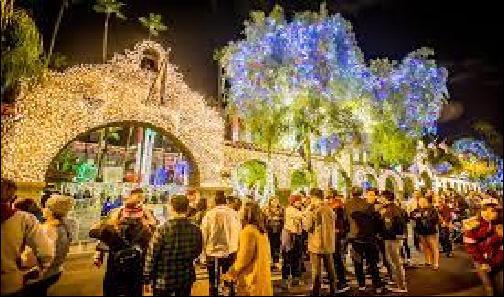
Valentine’s Day Beer festival Vietnamese Teachers’ Day Festival of lights


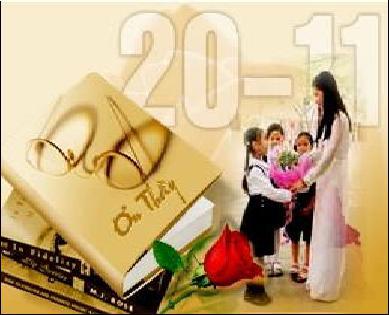


Ex IV: Read the following sentences and mark the stressed syllable in the underlined words.
1.Film directors, stars and criticsall come to this famous festival.
2.I carrytwo big boxesof pencilsfor my brotheron Friday.
3.Do you oftenhave Englishlessonson Monday?
4.Peoplealwaysput pumpkinlanternsoutsidetheir homes on Halloween day.

5.Can you take a photoof my parentson their weddingday?
6.The tablebelow gives information about the program.
7.The villageis far away from the citycenter.
8.We saw a big bunch of flowers on the tablein the livingroom.
9.Can she pronouncethe name of her sister?
10.My fatheris a doctorin a localhospital.
Ex V: Complete the table with appropriate nouns, verbs, and adjectives
Ex VI: Complete the sentences with words in Ex V
1. My sister works as a d……………………in a local pub.
DẠYKÈMQUYNHƠNOFFICIAL
8| 14
Page
1.
2.
3.
4.
5. 6. 7.
8.
Verb Noun Adjective perform 1………………………….. performance 2………………………….. cultural 3…………………………. dancer 4…………………………… happiness 5………………………..... 6……………………...... fascination fascinating 7…………………………. romantic discuss 8…………………………. season 9……………………………
………………………. natural
10.
2. This is one of the n…………..……….wonders of the world.
3. The artist prepared well yesterday. Therefore, she has an excellent p….……………………on the stage today.
4. The program gives us a chance to understand c……..……………values of the city.
5. Tom and Mary are going to d…………………….their festival project.
6. We are going to Rio Carnival to watch p……….………………dance.
7. How many s……………………..are there in your country?
8. Titanic is a r………………….film about love story between Jack and Rose.
Ex VII: Odd one out
Ex VIII: Match
1.celebrate
2.watch
3.exchange
4.spend
5.visit
6.enjoy
7.create g. the relatives
8.attend h. the gifts
Ex IX: Complete the sentence with the correct form of the words in brackets
1.How many……………………….are therein the program tonight? PERFORM
2.We often…………………………Tet holiday on the first day of the new year. CELEBRATION
3.………………….voluntarily contribute their money and other things to celebrate the festival together. VILLAGE
4.There are some other activities such as …………………shows, buffalo races and traditional games. CULTURE
5.People play drums, sing songs and ………………..happily. DANCING
6.When he swims, he often wears goggles to …………….his eyes. PROTECTION
7.We enjoy the food with local people and ………………TOURISM
8.Which do you think are …………………festivals? SEASON
9.Jack chose the festival because he would like to see elephants …………….. RACE
10.I don’t like this festival because it is …………………….USUAL
Ex X: Choose the best answer
1.The festival is …………………..every year at the end of October.
A.taken B. held C. made D. done
2.Festival of lights is a …………………..festival in India.
A.religion B. culture
C. nation
D. religious
DẠYKÈMQUYNHƠNOFFICIAL
Page 9| 14
10.A. elephant B. music C. gorilla D. crocodile 11.A. festival B. candle C. cake D. birthday 12.A. celebrate B. complete C. wonderful D. describe 13.A. information B. common C. nature D. classroom 14.A. funny B. nervous C. worried D. performance 15.A. usual B. desert C. valley D. mountain 16.A. art B. music C. painting D. question 17.A. tourist B. rename C. architect D. dancer 18.A. pumpkin B. cucumber C. watermelon D. describe 19.10.A. lovely B. trousers D. gloves D. jeans
a.the festival
b. money
c. Easter eggs
d.the meals
e.fireworks
f.
the New Year
3.People …………………the festival by throwing water to wish everyone happiness.
A.celebrate B.have C. organize D. complete
4.The biggest ………………….for the winner is a trip to France.
A.part B. benefit C. prize D. mark
5.A lot of people go to the city center to ………………the festival.
A.have B. attend C. relax D. discuss
6.It must be ……………..to see elephants racing in the street.
A.amazed B. nervous C. amazing D. romantic
7.What should the students do after this …………with the teacher?
A.task B. discussionC. homeworkD. break
8.People wear beautiful ………………and parade through the streets during the festival in this country.
A.jeans B. gloves C. boots D. costumes
9.The festival ……………place every two years.
A.takes B. happens C. has D. holds 10.During Tet holiday, we …………….our houses with apricot of peach blossoms. A. decorate B. make C. build D. close Ex XI: Fill in the gap with a suitable word given in the box harvest held followed Display feast world performances attend
1. The festival is ………………… on the last day of October every year.
2. A lot of dancers go to Rio de Janeiro to………………. the Rio Carnival.
3. Yesterday, my family prepared a ……………..to welcome our grandparents from the USA.
4. Tourists can watch folk music ……………………..in this festival.
5. People in my village often celebrate this festival after they ………………….the crop.
6. They ………………a lot beautiful dolls in the best room of the house.
7. Local people and tourists from all over the …………….celebrate the festival together with endless all-night activities.
8. The program is ……………..by fireworks and the appearance of a tall ship with red sails.
KỸNĂNG
DO YOU KNOW?
THE SNAKE FESTIVAL
•Every year on the first Thursday in May, the small village of Cocullo in Italy sees thousands of visitors at the annual Snake Festival.
•In the 11th century, there were many snakes in the village and many people died of snakebite. Saint Domenlc gotrid of the snakes and the people of Cocullo hold this festival every year to remember him.
•For some weeks before the festival, people collect snakes and then, on st Dominic’s Day, they put all the snakes on a statue of St Dominic.
•At midday, they carry the statue and the snakes in a procession through the village.
• At the end of the procession, there are fireworks.
KỸNĂNG ĐỌC (READING SKILLS)
I-Read the passage and decide whether the statements are True (T) or False (F).
If you think suffering teeth-chattering cold is part of the fun when you travel, then the Harbin International Ice and Snow Sculpture Festival is the carnival for you. Set in Heilongjiang Province in northern China, it’s the world’s biggest snow and ice festival and has plenty of spectacular works and activities.
DẠYKÈMQUYNHƠNOFFICIAL
Page 10| 14
The annual festival officially runs from January 5 to February 5 but some attractions open to visitors before the opening ceremony, including the most popular of them all -the Harbin Ice and Snow World, made with ice blocks pulled from the nearby Songhua River. This year, the Harbin Ice and Snow World spans over 600,000 square meters and includes more than 100 landmarks. In addition to walking up the huge shining ice castles, other highlights include an exquisite snow Buddha statue made of more than 4,500 square cubic meters of snow, a 3D light show and the 340-meter-long Northern Lights-themed ice slides.
1. The world’s biggest snow and ice festival is held in Heilongjiang, China.
2. The festival takes place every year for one month.
3. ice used in the festival is carried to China from the North Pole.
4. There are 600 landmarks in the Harbin ice and Snow World this year.
5. People use about 4,500 square cubic meters of snow to make Buddha statue.
II -Read the passage and choose the best answer to each of the following questions.
The Pacific Rim Whale Festival
q q q q q
Every year, about 20,000 grey whales swim past the west coast of Vancouver Island. The whales travel from Mexico to the Arctic and back again. The whole trip is about 16,000 kilometres. Every March, the people who live around the Pacific Rim National Park have a festival to celebrate the whales’ journey. The festival is the Pacific Rim Whale Festival. The whales travel very close to the shore as they swim north. This allows people to gather together to watch the whales from land and from boats.
Nanaimo Bathtub Race
On the east coast of Vancouver Island, you can see people moving through the water in a strange type of boat. In the Nanaimo Bathtub Race, allthe boats are made from bathtubs. The city of Nanaimo is home to the oldest and most famous bathtub boat race in the world. Today, Nanaimo World Championship Bathtub Race is a serious sport that attracts many racers and visitors from around the world.
1.How many grey whales swim near Vancouver Island every year?
A. 15,000 B. 16,000
C. 20,000
2. Where do the grey whales start their annual trip?
A. Vancouver Island
C. somewhere in the open ocean
B. the Arctic
D. Mexico
3.According to the reading, why is it easy for people to see the whales?
A. The people use binoculars.
B. The whales swim close to land.
C. The people are also swimming in the water.
D. They fly over the whales in helicopters.
4.Where does the Nanaimo Bathtub Race happen?
A.Far off the north coast of Vancouver Island.
B. On the South Shore of Vancouver Island.
C. On the west side of Vancouver Island.
D. On the east side of Vancouver Island.
5.What is special about every boat in the race?
A. Each boat can carry three people.
B. Every boat is made from a bathtub.
C. Every boat gets a safety inspection.
D. All the boats have sails.
KỸNĂNG NGHE (LISTENING SKILLS)
Exercise 2: Listen and complete the text. (Track 19)
D. No one knows.
Hello students. Today I’d like to tell you some information about types and sources of energy. Energy is classified into two main groups: renewable and (1) .......................
DẠYKÈMQUYNHƠNOFFICIAL
11| 14
Page
The energy from natural sources such as the sun, (2) ......................., and rain is called renewable energy. They are (3) ....................... and can be generated again and again. They also have low (4) ....................... so they are considered green and environment-friendly. Moreover, using renewable energy can reduce your (5) ....................... costs. Unfortunately, solar energy can be only used during the (6) ....................... but not during night or the (7) .......................
Non-renewable energy is the energy taken from other sources that are available on earth. They are (8) ........................ and will run out in the future. They can’t be re-generated in a short time. Fossil fuels -natural gas, oil and coal -are examples of them. They are (9) ........................ and easy to use. However, when burnt, they release toxic gases in the air so they cause serious environmental changes such as (10) ........................ And the important thing is that non-renewable sources will expire someday.
2/Listen and decide if each statement is true or false or not given. (Track 20)
1. Our earth stores the sun’s energy in their earth surface.
2. Some fossil fuels are coal, oil and wind energy.
3. Fossil fuels can be used to produce electricity.
4. Electricity is needed for many activities.
5. By 2013, people use about 80 percent of fossil fuels in the world.
6. One day, when people use up all fossil fuels, they will die because there is no alternative energy.
7. Renewable energy will be used up one day.
8. Solar energy and wind energy are two types of alternative energy.
KỸNĂNG NÓI (SPEAKING SKILLS)
Talk about the festival of a foreign country you are most interested in. You can use the following questions as cues:
• What and where is the festival?
•When is the festival held?
•What are the main activities of the festival?
• Why are you most interested in that festival?
Useful languages:
Useful vocabulary
• Harbin Ice Festival
• Lantern Festival
• Easter
• Thanksgiving
• Jan-Feb
• 15/12 lunar year
• seeing lanterns
• seeing ice castles
• exciting
• entertaining
Complete the notes:
Structures of the talk
What and where is the festival?
Useful structures
• My favourite festival is ... in ...
• This festival is held ...
• Participating the festival, people can ...
• During the festival, people ...
• I'm most interested in that festival because ...
Yournotes
DẠYKÈMQUYNHƠNOFFICIAL
Page 12| 14
N o.
T/F/NG
Statements
When is the festival held?
What are the main activities of the festival?
Why are you most interested in that festival?
Now you try!
Give your answer using the following cues. You should speak for 1-2 minutes.
1. My favourite festival is ... In ...
2. This festival is held ...
3. Participating the festival, people can ...
4. I’m most interested in that festival because ...
Now you tick!
Did you ...
q answer all the questions in the task?
q give some detailsto each main point?
q speak slowly and fluently with only some hesitation?
q use vocabulary wide enough to talk about the topic?
q use various sentence structures (simple, compound, complex) accurately?
q pronounce correctly (vowels, consonants, stress, intonation)?
Let’s compare!
Finally, compare with the sample answer on page 170.
KỸNĂNG VIẾT (WRITING SKILLS)
I-Complete each of the following sentences using the cues given. You can change the cues and use other words in addition to the cues to complete the sentences.
1.She/ participate/ Boryeong Mud Festival/ three/ year/ ago.
2.Mud Festival/ take place/ July/ every year/ Boryeong town, Korea.
3.It/ be/ originally/ provide people/ cosmetics/ use/ mud/ area.
4.Participate/ festival, people/ have/ great excuse/ get dirty/ have fun.
5.Participants/ immerse themselves/ nutrient-rich mud/ mud pool.
6.People/ often have/ much fun/ when/ play/ colored mud.
II -Write a short paragraph (about 60-80 words) about the festival you experienced and remembered the best.
You can answer some of the following questions:
• What is the festival?
• When is the festival held?
• What are the main activities of the festival?
DẠYKÈMQUYNHƠNOFFICIAL
14
Page 13|
→
________________________________________________________
→
________________________________________________________
→
________________________________________________________
→ ________________________________________________________
→ ________________________________________________________
→ ________________________________________________________
• What is the most impressive to you?
DẠYKÈMQUYNHƠNOFFICIAL
Page 14| 14
UNIT 10: ENERGY SOURCES VOCABULARY
1. always (Adj) / 'ɔːlweɪz /: luôn luôn
2. often (Adj) / 'ɒf(ə)n /: thường
3. sometimes (Adj) / 'sʌm.taɪmz /: thỉnh thoảng
4. never (Adj) / 'nevə /: không bao giờ
5. take a shower (n) / teɪk ə ʃaʊə /: tắm vòi tắm hoa sen
6. distance (n) / 'dɪst(ə)ns /: khoảng cách
7. transport (n) / trans'pɔrt /: phương tiện giao thông
8. electricity (n) /,ɪlɛk'trɪsɪti /: điện
9. biogas (n) /'baiou,gæs/: khí sinh học
10. footprint (n) / 'fʊtprɪnt /: dấu vết, vết chân
11. solar (Adj) / 'soʊlər /: (thuộc về) mặt trời
12. carbon dioxide (n) / 'kɑːrbən daɪˈɑːksaɪd /: khí CO2
13. negative (Adj) / 'neɡətɪv /: xấu, tiêu cực\
14. alternative (Adj) / ɔ:l'tə:nətiv /: có thể lựa chọn thay cho vật khác
15. dangerous (Adj) / 'deindʒrəs /: nguy hiểm
16. energy (n) / 'enədʒi /: năng lương
17. hydro (n) / 'haidrou /: thuộc về nước
18. non-renewable (adj) / ,nɔn ri'nju:əbl /: không phục hồi, không tái tạo được
19. plentiful (Adj)/ 'plentifl /: phong phú, dồi dào
20. renewable (Adj) / ri'nju:əbl /: phục hồi, làm mới lại
21. source (n) / sɔ:s /: nguồn
GRAMMAR: PRESENT CONTINUOUS
Thì hiện tại tiếp diễn (The present continuous)
1. Cách dùng
∑ Diễn đạt một hành động đang xảy ra tại thời điểm nói.
VD: I am eating my lunch right now.
∑ Diễn tảmột hành động hoặc một sựviệc nói chung đang diễn ra nhưng không nhất thiết phải thực sựdiễn ra ngay lúc nói.
VD: I’m quite busy these days. I’m doing my assignment. (Dạo này tôi khá là bận. Tôi đang làm luận án)
∑ Diễn đạt một hành động sắp xảy ra trong tương lai gần. Thường diễn tảmột kếhoạch đã lên lịch sẵn
VD: I am flying to London tomorrow. (Tôi sẽbay sang Luân Đôn sáng ngày mai)
∑ Hành động thường xuyên lặp đi lặp lại gây sựbực mình, khó chịu cho người nói. Cách dùng này được dùng với trạng từ“always”
VD: He is always losing his keys. (Anh ấy cứhay đánh mất chìa khóa)
2. Dạng thức của thì hiện tại tiếp diễn a. Cấu trúc
Thểkhẳng định
He/ she/ it/ Danh từsốít/ danh từkhông đếm được is He/ she/ it/ Danh từsốít/ danh từkhông đếm được isn’t
Thểphủđịnh I am + V-ing
You/ We/ They/ Danh từ sốnhiều are You/ We/ They/ Danh từsố nhiều aren’t
I am not + Ving
DẠYKÈMQUYNHƠNOFFICIAL
Page 1| 13
Ví dụ:
-I am reading a book.
Ví dụ:
-I am not joking
-She is swimming.
-They are sleeping.
-The dog is barking
Thểnghi vấn
Is He/ she/ it/ Danh từsố ít/ danh từkhông đếm
Are You/ We/ They/ Danh
Ví dụ:
-Is she singing an English song?
=> Yes, she is/ No, she isn’t.
-Are you having dinner?
=> Yes, I am/ No, I’m not.
-Are the children crying?
=> Yes/ they are/ No, they aren’t.
b. Wh-question
-She isn’t drinking lemon juice.
-We aren’t going to school.
-My parents are sleeping.
Câu trảlời ngắn
Yes, He/ she/ it/ Danh từsốít/ danh từkhông
Khi đặt câu hỏi có chứa Wh- word (từđểhỏi), ta đặt chúng ởvịtrí đầu câu và đưa ra câu trảlời trực tiếp.
Wh- word + am/ is/ are + S + V-ing?
Ví dụ:
-Who is she talking to?
-She is talking to her mother.
-What are you studying?
-I am studying English.
3. Dấu hiệu nhận biết
ÿ Trong câu có các trạng từchỉthời gian: now (bây giờ), right now (ngay bây giờ), at the moment (lúc này), at present (hiện tại), at this time (bây giờ), at + giờcụthể(at 12 o’clock)
ÿ Trong câu có các từnhư: Look! (nhìn kìa), Listen (hãy nghe này), Keep silent! (Trật tự), Be careful! (Cẩn thận), Hurry up! (Hãy nhanh lên)…
Ví dụ:
-Now my sister is going shopping with my mother.
-Look! The train is coming.
-Listen! Someone is crying.
-Keep silent! The baby is sleeping.
4. Các quy tắc thêm –ing vào sau động từ Các quy tắc Ví dụ
Động từkết thúc bởi “e”, ta bỏ Have-having
DẠYKÈMQUYNHƠNOFFICIAL
Page 2| 13
No,
Am I + V-ing Yes, I am
am not
được
đếm được
No, isn’t
is
từsốnhiều
You/ We/
Danh từsốnhiều are No, aren’t
Yes,
They/
Make-making
“e” thêm “ing”
Động từkết thúc bởi “ee”, ta thêm “ing” mà không bỏ“e”
Write -writing
See-seeing
Come-coming
Agree -agreeing
Động từkết thúc bởi “ie”, ta đổi “ie” thành “y” rồi thêm đuổi “ing”
Động từkết thúc bởi 1 nguyên âm (u,e,o,a,i) + 1 phụâm, ta gấp
đôi phụâm cuối rồi thêm –ing.
Lie –lying
Die-dying
Run-running Stop -stopping Get -getting Travel -travelling
5. Một sốđộng từkhông có dạng V-ing.
Những động từsau đây chỉdùng ởdạng đơn, không thêm đuôi V-ing.
Chỉtrạng thái: be, cost, fit, mean, suit.
Nói vềsựsửhữu: belong, have
VD: We are on holiday.
VD: Sam has a cat.
Chỉcảm giác: feel, hear, see, smell, taste, touch VD: He feels the cold.
Nói vềcảm xúc: hate, hope, like, love, prefer, regret, want, wish.
VD: Jane loves pizza.
Nói vềnhận thức: believe, know, think (nghĩ về), understand. VD: I believe you.
BÀI TẬP VẬN DỤNG
Bài 1: Hoàn thành bảng sau, thêm đuôi –ing vào các động từsao cho đúng
V V-ing V V-ing
Have (có) Help
Do (làm) Run
Say (nói) Write
Go (đi) Move
Make (làm) Play
Take (lấy) Stand
Give (cho) Talk
Use (dùng) Sit
Come (đến) Read
Find (tìm thấy) Speak
Put Open
Leave Draw
Work Walk
Ask Sell
Follow watch
Bài 2: Khoanh tròn vào đáp án đúng
1. Johny and Mandy (is/am/are) cleaning the kitchen
2. I (is/am/are) reading abook at the moment.
3. It (is/am/are) raining
4. We (is/am/are) singing a new song.
5. The children (is/am/are) watching TV at breaktime.
6. My pets (is/am/are) sleeping now.
7. Aunt Helen (is/am/are) feeding the ducks on the farm.
8. My friend (is/am/are) buying a pencil sharpener.
9. He (is/am/are) studying Science.
10. They (is/am/are) doing their homework.
DẠYKÈMQUYNHƠNOFFICIAL
Page 3| 13
Bài 3: Viết các câu sau ởthểkhẳng định (+), phủđịnh (-) và nghi vấn (?)
1. (+) We are working on the new show right now.
2. (+)____________________________________
(-) I’m not talking on the phone at the moment.
3. (+)____________________________________
(?) Is he running very fast?
4. (+) Julia is baking achocolate cake at the moment.
5. (+)____________________________________
(?) Are Tony and Kaity helping the teacher right now?
Bài 4: Nối câu hỏi ởcột A với câu trảlời ởcột B sao cho phù hợp
1. Are they having dinner?
2. Are you making a cup of tea?
3. Is she making a cup of coffee?
4. What areyou doing?
5. Is it raining?
6. What is he cooking for dinner?
7. Where are you going on holiday?
8. Are we going into town?
9. Who is going to England?
10. Is your father taking a bus to the kinder garten?
a. Yes, she is.
b. He is cooking pasta
c. No, he isn’t.
d. I’m going to Korea.
e. No, they aren’t.
f. My brother.
g. No, it isn’t.
h. Yes, we are.
i. I’m looking for a number in the phone book.
j. Yes, I am.
1…….-2………-3……-4…........-5…....-6……-7…….-8……..-9……….-10……….
Bài 4: Sắp xếp từtrong câu theo thứtựđúng đểtạo thành một câu hoàn chỉnh
1. singing/ the/ birds/ are/ at/. /5 am
2. are/ at/ 7 am/ the/ dogs/ big/ barking.
3. up/ at/ is/ 7.20 am/ getting/ Thompson/ . / Mrs.
4. making/ she/ . / at/ breakfast/ her/ 7.40 am/son’s/ is
5. 7.50 am/ is/ . / letters/ the/ the/ delivering/ at/ mailman
6. his/ 7.55 am/ son/ washing/ Mrs/ . / is/ Thompson’s/ face/ at
7. are/ eating/ 8 am/ at/ family/ Thompsons/ together/ the / breakfast.
8. blue/ 8.20 am/ work/ Thompson/ car/ is/ in/ at/ to/ Mrs./ driving/ her.
9. rope/ playground/ classmate/ is/ my/ in/ the/ . / skipping
10. school/ sister/ is/ an/ my/ international/ studying/ in.
DẠYKÈMQUYNHƠNOFFICIAL
Page 4| 13
(-)____________________________________ (?)____________________________________
(?)____________________________________
(-)____________________________________
(-)____________________________________ (?)____________________________________
(-)____________________________________
Bài 5: Chia động từtrong ngoặc ởthì Hiện tại tiếp diễn A B
1. Alexander ______ (study) for his exam at the moment.
2. She ______ (not play) goft tomorrow.
3. They ______ (make) dinner now.
4. The company ______ (have) dinner now.
5. She ______ (eat) oysters for lunch right now.
6. David ______(not fly) to Chicago next week.
7. I ______ (work) on a special report today.
8. We ______ (not cook) dinner this evening because we’re eating out.
9. ______ (Tom drive) to work right now?
10. They ______(not prepare) for the science exam at the moment.
11. When ______ (you/ have) lunch tomorrow?
12. ______ (they give) a party this weekend?
13. Susan ______ (make) the decision at 3 o’clock this afternoon.
14. What ______ (you do)?!
15. Which motel ______(they stay) now?
Bài 6: Chọn động từthích hợp cho dạng đúng
read study post make speak draw come wait sunbathe water
1. He is at the bank. He _______money from his account.
2. He is in the library. He ______
3. He is in the garden. He ______ the flowers.
4. She is on the beach. She ______
5. He is in the post office. He ______ letter.
6. He is in the telephone box. He ______ a call.
7. We ______ English at the moment.
8. Look! David and Max ______ home.
9. She ______for her boyfriend now.
10. I ______ to adentist.
Bài 7: Dựa vào những từcho sẵn, đặt câu ởthì Hiện
1. (they/ learn new things?)
2. (when/ he/ start work?)
3. (why/ I/ stay/ at home?)
4. (it/ get dark?)
5. (the dog/ not/ play with a ball)
6. (why/ it/ rain now?)
7. (how/ she/ travel?)
8. (where/ you/ work?)
9. (what/we/ watch?)
DẠYKÈMQUYNHƠNOFFICIAL
Page 5| 13
của thì Hiện tại tiếp diễn và điền vào chỗtrống
tại tiếp diễn
10. (I/ take too much cake?)
VOCABULARY AND PRONUNCIATION
* NGỮÂM –Pronunciation
phát âm chính xác các từcó ba âm tiết
NGỮÂM
Pronunciation
Đối với các từcó hai âm tiết, dấu (ˈ) được đánh vào trước âm tiết được nhấn trọng âm.
TỪLOẠI QUY TẮC CHUNG NGOẠI LỆ
Nếu âm tiết thứhai có chứa âm /ə/, /ɪ/ hoặc /i/ thì trọng âm rơi vào âm tiết thứnhất.
• PARadise /ˈpærədaɪs/ (n.): thiên
đường
• PLENtiful /ˈplentɪfl/ (adj.): phong
Phần lớn danh từvà tính từ
Phần lớn động từ
Nếu âm tiết thứhai có chứa nguyên âm dài hoặc nguyên âm
đôi và âm tiết thứba chứa một nguyên âm ngắn thì trọng âm rơi vào âm tiết thứhai.
Nếu âm tiết thứba là nguyên âm dài hoặc nguyên âm đôi, hoặc kết thúc bằng 2 phụâm trởlên thì trọng âm rơi vào âm tiết thứnhất.
Nếu âm tiết thứba có nguyên âm ngắn và kết thúc bằng 1 phụâm thì trọng âm rơi vào âm tiết thứ hai.
phú
• disAster /dɪˈzɑːstə(r)/ (n.): thảm
hoạ
• aNNOYing /əˈnɔɪɪŋ/ (adj.): gây
khó chịu
• ORganise /ˈɔːɡənaɪz/ (v.): tổchức
• Activate /ˈæktɪveɪt/ (v.): kích
hoạt
• deTERmine /dɪˈtɜːmɪn/ (v.): xác
định
• enCOUNter /ɪnˈkaʊntə(r)/ (v.): gặp
phải
NGỮÂM (PRONUNCIATION) -
I -Put the given words in the box to the correct column according to their stress pattern. abundant recommend character biogas volunteer consumption understand energy referee exhausted performance limiting Halloween plentiful disaster
Stress on 1st syllable
Stress on 2nd syllable
Stress on 3rd syllable E.g.: character
II -Choose the word with a different stress pattern
DẠYKÈMQUYNHƠNOFFICIAL
Page 6| 13
Eg.: A. barbecue B. creative C. decorate D. calendar 1.A. atmosphere B. melody C. carnival D. recommend 2.A. allergy B. depression C. unusual D. performer 3. A. recipe B. abundant C. celebrate D. limiting 4.A. reporter B. fantastic C. natural D. delicious 5.A. essential B. memorial C. historic D. volunteer 6.A. cultural B. exhausted C. seasonal D. dangerous 7.A. recognise B. vehicle C. energy D. consumption 8.A. religious B. dangerous C. violent D. triangle 9.A. tricycle B. serious C. abundant D. biogas 10. A. illegal B. pagoda C. disaster D. referee 11. A. exciting B. determine C. gallery D. cathedral
12. A. adventure B. interview
13. A. decorate B. exciting
C. firefighter
D. barbecue
C. apricot D. windsurfing
14. A. graffiti B. department
15. A. limiting B. dishwasher
Types of energy:
New words:
1.source of energy Nguồn năng lượng

3.effect (n) Tác động
5.solar panel Tấm/bảng hứng năng lượng mặt trời


C. entertain D. reporter
C. microwave
D. understand
2.carbon dioxide CO2

4.environment (n) Môi trường
6. coal (n) Than đá 7. natural gas Khí gatựnhiên


biogas (n) Khí ga sinh học
Đắt đỏ 23. alternative (a) Thay thế 24. produce(v) Sản sinh
create (v)
ra
(n) Điện
Ex I: Put the words in the correct column wind, coal, oil, biogas, natural gas, nuclear, solar, hydro, wave

Renewable sources

Non-renewable sources
produce
DẠYKÈMQUYNHƠNOFFICIAL
Page 7| 13
Wind Coal
Natural gas
Nuclear
Oil Hydro
Solar biogas
9.nuclear
Hạt
10.hydro
Thủy
Tái
8.
(a)
nhân
(a)
điện 11. renewable (a)
tạo lại
Sẵn có 14.
Có hạn 15. exhaustible (a) Cạn kiệt 16. harmful (a) Có hại 17. polluting (a) Gây ô nhiễm 18. safe (a) An toàn 19. plentiful (a) Rất nhiều 20.
Tiện lợi 21. enormous (a) To lớn 22.
25.
12.abundant (a) Phong phú, 13. available (a)
limited (a)
convenient (a)
expensive (a)
Tạo
26.electricity
1.A.
B.
C.
D.
2.A. biogas B.
C.
D.
3.A. oxygen B.
C.
D.
4.A. dangerous B.expensive C.
D.
5.A.
B.
C.
D.
6.A.
B.
C.
D.
7.A. scientist B.
C.
D.
Ex II: Odd one out
wind
solar
world
hydro
create
make
nuclear
hydrogen
carbon dioxide
polluting
clean
abundant
plentiful
wave
available
limited
environment
energy
product
engineer
driver
convenient
8.A. dangerous B. use C. polluting
harmful 9.A. exhaustible
water
1.solve
2.install
3.take
electricity
4.show d. television
5.increase
6.generate
the problems
solar panels
7.turn on g. the tax
8.reduce
IV: Find the word which has a different sound in the part
a rest
develop, family, elephant, gorilla, architect, decision, beautiful, eraser, terrified, abundant, limited, tomorrow, afternoon, chocolate, 0oo
Ex VI: Read the following sentences and mark the stressed syllable in the underlined words.
1.This is one advantageof using solar energy.
2.Fossil fuels are not consideredsustainable energy sources.
3.Solar energy is derived from an abundantresource that we see nearly every day.
4.What types of gases are staying in our atmospherefor a long periodof time?
5.Food, sunlight and wind are differentfrom other forms of energy.
6.Is crossing the street during rush hour dangerous?
Ex VII: Fill in the gap with a suitableword given in the box last produce heat
electricity environment ride lights
1.Using energy that produces carbon dioxide is bad for the ………………….
2.We install ………………panels on theroof of our house to catch the sun’s energy.
DẠYKÈMQUYNHƠNOFFICIAL
Page 8| 13
D.
C.
D.
Ex
B. limited
dangerous 10.A. renewableB. Monday C. Wednesday D. Saturday
III: Match
a.
b.
a film
c. energy consumption
e.
f.
1.A. energy B. expensive C.
D. elephant 2.A. solar B. tomorrow C. another D. hydro 3.A. produce B. music C. tube D. just 4.A. carbon B. coal C. source D. candy 5.A. type B. energy C. easily D. chilly 6.A. solar B. abundant C. safe D. another 7.A. exhaustible B. dangerous C. train D. main 8.A. enormous B. about C. famous D. nervous 9.A. public B. limited C. polluting D. dioxide 10. A. book B. cook C. roof D. foot Ex V: Put the words in the correct column
h.
Ex
underlined
enter
o0o
solar
3.Renewable source of energy will ……………….forever.
4.My father installs new glass in the windows to stop..……..escaping.
5.Do you often walk or …………a bike when travelling long distances?
6.Remember to turn off the ………………..when leaving the room.
7.We don’t have to pay the …………….bill a lot becausewe use a little electricity at home.
8.These men will install a network of wind turbines to ………………..electricity.
Ex VIII: Put the words into the correct groups
Safe Natural gas Limited Clean Solar Expensive Exhaustible Abundant Nuclear Available Wind hydro
Sources of energy
Advantages
Disadvantage
Ex IX: Choose the best answer
1. Emissions from vehicles have negative ………………..on the environment.
A. tasks B. effects C. benefits D. problems
2. Using non-renewable energy sources like coal, oil …………………a lot of carbon dioxide.
A. makes B. does C. uses D. produces
3. They …………………..solar panels on the roof of the house to catch the energy from the sun.
A. have B. get C. install D. put
4. Wind is one type of …………………source of energy.
A. renewableB. expensiveC. dangerousD. exhaustible
5. What things do they think might ………………..a big carbon footprint?
A. take B. put C. carry D. create
6. I think that using biogas is abundant and ………………
A. limited B. polluting C. cheap D. exhaustible
7. Solar energy is plentiful and it can be ………………….easily.
A. recycled B. replaced C. reduced D. reused
8. We install solar panels on our roof for the heating and …………..water.
A. hot B. cold C. dirty D. clean
9. His brother is ……………cracks in thewater pipes.
A. having B. checking C. taking D. producing
10. The teacher is ………………..a talk about how to save energy.
A. doing B. taking C. giving D. making
Ex X: Write the correct form of the word given
1. Coal will be …………………by another renewable source of energy in the future. REPLACE
2. Natural gas is …………….and it is harmful to the environment. LIMIT
3. I like solar energy because it is ………………..PLENTY
4. Using public transport can reduce ……………….….POLLUTE
5. These types of energy do not cause pollution or waste ………………….resources. NATURE
6. We hope that by using solar energy, the problem of energy ……………….will be solved. SHORT
7. This new plant is being built to provide …………………for the population of the local area. ELECTRIC
8. Remember to turn off thelights when……………….to bed, boy! GO
DẠYKÈMQUYNHƠNOFFICIAL
Page 9| 13
9. She wears a sweater to keep her body………………..in the early winter. WARMTH
10. What are the advantages and ………………….of using public transport?
ADVANTAGE
ACROSS
1.We are doing a ………………..on sources of energy now.
2.Alternative ………………..of energy will be developed quickly.
3.What should the government do to ………………..the use petrol?
4.Wind………………..will offer a great deal of energy in the future.
DOWN
1.My friends and I ride bicycles to school to reduce air ………………..
5.They put low ………………….light bulbs in the classroom.
6.My father prefers using …………………..transport to protect the environment.
7.When a source is used, it usually takes time to ……………..it.
SKILLS
DO YOU KNOW?
RENEWABLE ENERGY
Renewable energy is often called green energy because it is natural, available and does not have to be formed like non-renewable energy. The green energy is always there. For example, the Sun consistently shines, water is abundant, and the winds blow throughout the year. The five types include solar, energy from the Sun; geothermal, energy from heat within the Earth; hydroelectric, energy from moving water; biomass, energy from dead plants and finally, energy from the wind.
KỸNĂNG ĐỌC (READING SKILLS)
I -Read the passage and choose the best option to answer each of the following questions. Wind is a form of solar energy. Winds are caused by the uneven heating of the atmosphere by the sun. Wind flow patterns are changed by the earth’s terrain, bodies of water, and vegetative cover. This wind flow, or motion energy, when “harvested” by modern wind turbines, can be used to generate electricity. Wind turbines are available in a variety of sizes, and therefore power ratings. The largest machine has blades that span more than the length of a football field, stands 20 building stories high, and produces enough electricity to power 1,400 homes. A small home-sized wind machine has rotors between 8 and 25 feet in diameter and stands upwards of 30 feet, and can supplythe power needs of an all-electric home or small business, utilityscale turbines range in size from 50 to 750 kilowatts. Single small turbines, below 50 kilowatts, are used for homes, telecommunications dishes, or water pumping.
DẠYKÈMQUYNHƠNOFFICIAL
Page 10| 13
1 2 5 6 7 3 4
Ex XI: Solve the crossword puzzle
1.What is the reason for the existence of wind?
A. atmosphere heated unevenly
B. wind flow
C. motion energy
D. wind turbines
2.Which of the following is NOT mentioned as a factor affecting the wind direction?
A. earth’s terrain
C. vegetative cover
B. bodies of water
D. the Sun
3.The word “variety” is closest in meaning with_________.
A. capacity B. popularity
4.What is the height of the largest wind turbines?
A. as tall as a 20 story building
C. 30 feet
C. diversity D. minority
B. between 8 and 25 feet
D. 50 feet
5.A small home-sized wind machine can produce enough power for_________.
A. 20 buildings
C. 400 homes
B. a small business
D. a football field
6.How much power do single small turbines generate?
A. about 30 kilowatts
C. about 750 kilowatts
B. more than 50 kilowatts
D. less than 50 kilowatts
II -Read the passage and answer the following questions.
You use energy every day. Energy is the ability to cause change. When you ride a bike, you use energy from your body to make the bike move. Your parents use heat energy to change the food from raw to cooked. Not all energy is used as soon as you get it. Sometimes energy is stored to be used later, stored energy can be chemical energy stored in a battery or in your body. It can also be potential energy. Potential energy isbased on the position of the object. A soccer player standing ready to kick a ball has potential energy. Energy of motion is also called kinetic energy. Potential energy converts, or changes into, kinetic energy when the thing or person begins to move. When the soccer player kicks the ball, kinetic energy is at work. Energy often changes forms. When you switch on the light, electricity converts into light. When you eat, chemical energy from your food converts into thermal and mechanical energy that allows you to move and work.
1. What is energy?
2. What kind of energy is based on an object's position?
3. What is another name for energy of motion?
4. What is another way to say “changes into”?
5. Does energy often change forms?
KỸNĂNG NGHE(LISTENING SKILLS)
1: Listen and complete the text. (Track 19)
Hello students. Today I’d like to tell you some information about types and sources of energy. Energy is classified into two main groups: renewable and (1) .......................
The energy from natural sources such as the sun, (2) ......................., and rain is called renewable energy. They are (3) ....................... and can be generated again and again. They also have low (4) ....................... so they are considered green and environment-friendly. Moreover, using renewable energy can reduce your (5) ....................... costs. Unfortunately, solar energy can be only used during the (6) ....................... but not during night or the (7) .......................
Non-renewable energy is the energy taken from other sources that are available on earth. They are (8) ........................ and will run out in the future. They can’t be re-generated in a short time. Fossil fuels -natural gas, oil and coal -are examplesof them. They are (9) ........................ and easy to use. However, when burnt,
DẠYKÈMQUYNHƠNOFFICIAL
Page 11| 13
they release toxic gases in the air so they cause serious environmental changes such as (10) ........................ And the important thing is that non-renewable sources will expire someday.
2/ Listen and decide if each statement is true or false or not given. (Track 20)
1. Our earth stores the sun’s energy in their earth surface.
2. Some fossil fuels are coal, oil and wind energy.
3. Fossil fuels can be used to produce electricity.
4. Electricity is needed for many activities.
5. By 2013, people use about 80 percent of fossil fuels in the world.
6. One day, when people use up all fossil fuels, they will die because there is no alternative energy.
7. Renewable energy will be used up one day.
8. Solar energy and wind energy are two types of alternative energy.
KỸNĂNG NÓI (SPEAKING SKILLS)
Talk about how to save electricity. You can use the following questions as cues:
•What are the ways to save electricity?
•How to apply them?
•What are the benefits?
•What have you done to save electricity?
Useful languages:
Useful vocabulary
•switching off the lights
•using natural light
•using low energy light bulbs
•using on/off sensors
•financial benefit
•environmental benefit
•health benefit
•using fewer fans
•turning off the lights before going to bed
•using fewer air-conditioners
Complete the notes:
Structures of the talk
What are the ways to save electricity?
How to apply them?
What are the benefits?
Useful structures
•There are many ways to save electricity like ...
•Saving electricity brings many benefits, such as
•Saving electricity helps ...
•I have done some activities to save electricity. For example, ...
Your notes
DẠYKÈMQUYNHƠNOFFICIAL
Page 12| 13
N o.
T/F/NG
Statements
What have you done to save electricity?
Now you try!
Give your answer using the following cues. You should speak for 1-2 minutes.
1.There are many ways to save electricity like ...
2.Saving electricity helps ...
3.I have done some activities to save electricity. For example, ... Now you tick!
Did you ...
q answer all the questions in the task?
q give some details to each main point?
q speak slowly and fluently with only some hesitation?
q use vocabulary wide enough to talk aboutthe topic?
q use various sentence structures (simple, compound, complex) accurately?
q pronounce correctly (vowels, consonants, stress, intonation)?
Let’s compare!
Finally, compare with the sample answer on page 185.
KỸNĂNG VIẾT (WRITING SKILLS)
I-Complete each of the following sentences using the cues given. You can change the cues and use other words in addition to the cues to complete the sentences.
1.Like/ any/ other type/ power,/ solar energy/ have/ own/ disadvantage.
2.Solar power/ depend/ weather condition/ operation.
3.If/ people/ build/ solar power/ plant,/ space/ must/ very huge.
4.A lot/ money/ require/ build/ solar power plant.
5.Humans/ should/ exploit/ solar power/ more/ have safe/ clean energy.
II -Write a short paragraph (60-80 words) about disadvantages of nuclear power. You can answer some of the following questions:
• What are the disadvantages of nuclear power?
• What are the solutions for them?
DẠYKÈMQUYNHƠNOFFICIAL
Page 13| 13
→
________________________________________________________
→
________________________________________________________
→
________________________________________________________
→
________________________________________________________
→
________________________________________________________
UNIT 11. TRAVELLING IN THE FUTURE
VOCABULARY
GETTING STARTED
1.hyperloop / ˈhaɪpə(r) luːp /(n) Tàu siêu tốc traffic jam /'træfɪk dʒæm/(n.phr) Kẹt xe campsite /ˈkæmpsaɪt/(n) Khu cắm trại tube /tjuːb/(n) ống nước
flying car /ˈflaɪɪŋ kɑː/(n.phr) Xe bay pollute /pəˈluːt/(v) Ô nhiễm
fume /fjuːm/(n) Khói
teleporter /ˈtel.ɪ.pɔː.tər/(n) Vận chuyển viễn thông
Mode of travel /məʊd ɒv ˈtrævl/(n.phr) Phương thức đi lại worry about / ˈwʌri əˈbaʊt/(phr.v) Lo lắng
hope /həʊp/(v) Hy vọng
wheel /wiːl/(n) Bánhxe
Run on / rʌn ɒn/(phr.v) Chạy bằng
track /træk/(n) Đường ray
sail /seɪl/(v) Chèo
vehicle / ˈviːɪkl /(n) Phương tiện
A CLOSER LOOK 1
Bamboo-copter /bæmˈbuː-ˈkɒptə/(n.phr) Trực thăng tre skyTran / skaɪ træn /(n.phr) Taxi bay
solar-powered ship / ˈsəʊlə-ˈpaʊəd ʃɪp/(n.phr) Tàu chạy năng lượng mặt trời
Solar-powered ships are eco-friendly.(Con tàu năng lượng mặt trời thì thân thiện với môi trường) driverless car / ˈdraɪvləs kɑː/(n.phr) xe hơi không người lái.
normal car / ˈnɔːməl kɑː/(n.phr) Xe hơi thông thường ride /raɪd/(v) Lái put it on / pʊt ɪt ɒn/(phr.v) Mặc vào popular /ˈpɒpjələ(r)/(adj) Phổ biến autopilot model /ˈɔːtəʊˌpaɪlət ˈmɒdl/(n.phr) Loại hình tự mới bullet train / ˈbʊlɪt treɪn /(n.phr) Tàu cao tốc
A CLOSER LOOK 2
electric scooter /ɪˈlɛktrɪk ˈskuːtə/(n.phr) Xe điện electric car / ɪˈlɛktrɪk kssɑː/(n.phr) Xe hơi điện allow /əˈlaʊ/(v) Cho phép parking places /ˈpɑːkɪŋ ˈpleɪsɪz/(n.phr) Bãi xe petrol-powered car / ˈpɛtrəl-ˈpaʊəd kɑː/(n.phr) Xe hơi chạy bằng xăng planet /ˈplænɪt/(n) Hành tinh take holidays /teɪk ˈhɒlədeɪz/(v.phr) Nghỉ lễ means of transport /miːnz əv ˈtrænspɔːt/(n.phr) Phương tiện vận chuyển at the airport /æt ði ˈeəpɔːt/(pre.phr) ở sân bay disappear /ˌdɪsəˈpɪə(r)/(v) Biến mất possible /ˈpɒsəbl/(adj) Khả thi motorbike /ˈməʊtəbaɪk/(n) Xe máy bicycle /ˈbaɪsɪkl/(n) Xe đạp on time / ɒn taɪm/(pre.phr) Đúng giờ
COMMUNICATION
DẠYKÈMQUYNHƠNOFFICIAL
fly across / flaɪ əˈkrɒs/(phr.v) Băng qua walkcar /wɔːk kɑː(r)/(n) Xe điện tử stand on it / stænd ɒn ɪt/(v.phr) Đứng lên nó
Page 1| 19
fall off / fɔːl ɒf/(phr.v) Ngã, rơi dangerous /ˈdeɪndʒərəs/(adj) Nguy hiểm turn on the switch /tɜːn/ /ɒn/ /ðə/ /swɪʧ/(v.phr) Bật công tắc solowheel /ˈsəʊləʊ wiːl /(n) Xe 1 bánh
Solowheel is small.(Xe 1 bánh thì nhỏ.)
self-balancing / sɛlf-ˈbælənsɪŋ/ (adj) Tự thăng bằng
Walkcar is self-balancing. (Xe điện tử thì có thể tự thăng bằng) convenient /kənˈviːniənt/(adj) Tiện lợi
SKILLS 1
comfortable /ˈkʌmftəbl/(adj) Thoải mái charge /tʃɑːdʒ/(v) Sạc, nạp economical /ˌiːkəˈnɒmɪkl/(adj) Tiết kiệm
gaming screen /ˈgeɪmɪŋ skriːn /(n.phr) Màn hình trò chơi introduce /ˌɪntrəˈdjuːs/(v) Giới thiệu
SKILLS 2
autopilot function /ˈɔːtəʊˌpaɪlət ˈfʌŋkʃən /(n.phr) Chức năng tự lái avoid /əˈvɔɪd/(v) Tránh advantage /ədˈvɑːntɪdʒ/(n) Lợi thế causing noise /ˈkɔːzɪŋ nɔɪz/(n.phr) làm ồn
LOOKING BACK
sleep /sliːp/(v) Ngủ passenger /ˈpæsɪndʒə(r)/(n) Hành khách scientist /ˈsaɪəntɪst/(n) Nhà khoa học spaceship /ˈspeɪsʃɪp/(n) Tàu không gian
PROJECT
carry /ˈkæri/(v) Chở road system /rəʊd ˈsɪstɪm/(n.phr) Hệ thống đường bộ
GRAMMAR
Thì tương lai đơn (Simple Future Tense) là một trong những thì quan trọng trong cấu trúc ngữ pháp tiếng Anh và được sử dụng khá nhiều trong công việc và cuộc sống trong môi trường ngoại ngữ. Tuy nhiên không phải tất cả những người học tiếng Anh đều nắm rõ về cấu trúc, cách sử dụng của thì này, thậm chí có học viên còn nhầm lẫn với thì tương lai gần. Bài viết Thì tương lai đơn –Lý thuyết, dấu hiệu và bài tập sẽ hướng dẫn chi tiết về cấu trúc, cách sử dụng, cách nhận biết và đặc biệt có bài tập đi kèm giúp học viên năm chắc kiến thức và sử dụng thành thạo thì này. Let’s get started.
Xem thêm:
1. Định nghĩa thì tương lai đơn Thì tương lai đơn trong tiếng Anh (Simple future tense) được dùng khi không có kế hoạch hay quyết định làm gì nào trước khi chúng ta nói. Chúng ta ra quyết định tự phát tại thời điểm nói.
2. Công thức thì tương lai đơn
Như các loại thì khác, công thức tương lai đơn cũng có 3 loại cấu trúc tương lai đơn.
2.1. Câu khẳng định thì tương lai đơn
Cấu trúc: S + will/shall + V-inf
Trong đó:
S: chủngữ
V: động từ(V-inf: động từnguyên thể)
O: tân ngữ
Chú ý:
DẠYKÈMQUYNHƠNOFFICIAL
Trợđộng từ WILL có thểviết tắt là ”LL
(He will = He’ll, She will = She’ll, I will = I’ll, They will = They’ll, You will = You’ll..)
Page 2| 19
Ví dụ:
I will buy a cake tomorrow.
My family will travel in HCM City next week.
2.2. Câu phủ định thì tương lai đơn
Cấu trúc: S + will/shall + not + V-inf
Trong đó:
S: chủngữ
V: động từ(V-inf: động từnguyên thể)
O: tân ngữ
Chú ý: Phủ định của will là won’t.
Trợđộng từ WILL+ NOT = WON’T
Ví dụ:
I won’t come your house tomorrow.
I promise I won’t tell this anyone
2.3. Câu hỏi thì tương lai đơn
Cấu trúc: Will/Shall + S + V-inf ?
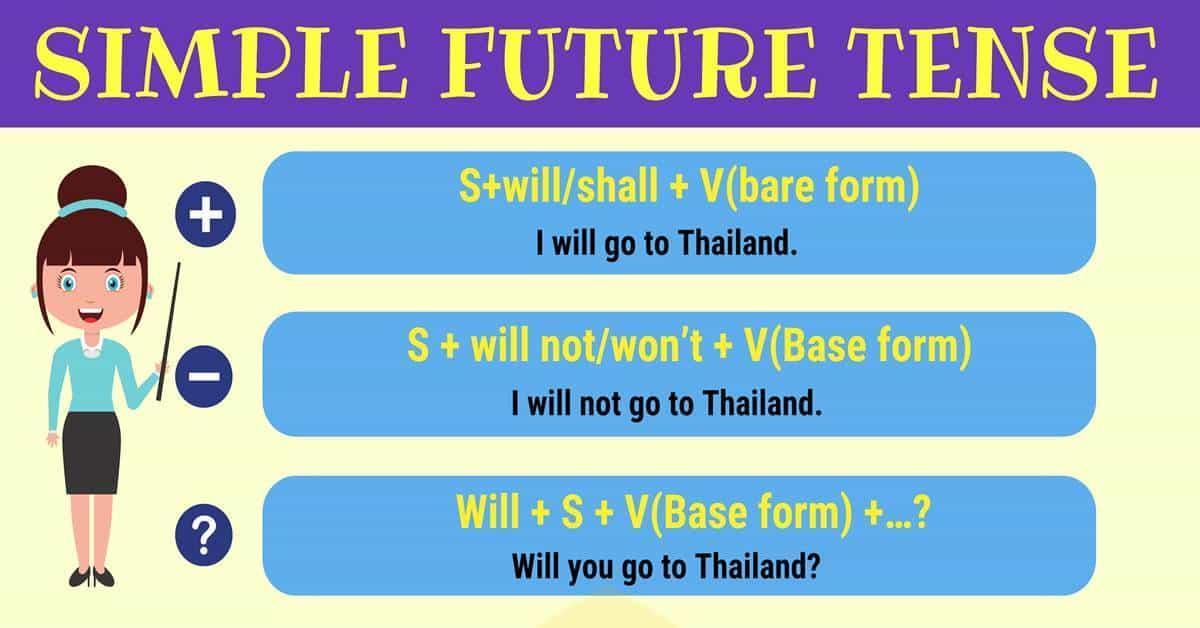
Câu trả lời:
Yes, S + will
No, S + will not (won’t)
Ví dụ:
Will you marry me? -> Yes, I will /No, I won’t Shall we dance?
3. Cách dùng thì tương lai đơn Dưới đây là 9 cách sử dụng thì tương lai đơnmà TOPICA Native đã tổng hợp.
3.1. Diễn tả một quyết định hay một ý định nhất thời nảy ra ở thời điểm nói. Có từ tín hiệu chỉ thời gian trong tương lai
Ví dụ:
DẠYKÈMQUYNHƠNOFFICIAL
I miss my grandmother so much. I will drop by her house after working tomorrow (Tôi rất nhớbà tôi vì thếsau giờlàm ngày mai tôi sẽđi thăm bà.)
Page 3| 19
3.2. Diễn đạt một dự đoán không có căn cứ
Ví dụ:
I think she won’t come and join our party.
(Tôi nghĩ cốấy sẽkhông đến tham gia bữa tiệc của chúng ta đâu.)
3.3. Đưa ra lời yêu cầu, đề nghị, lời mời
Ví dụ:
Will you go out for dinner with me? (Bạn có thểđi ăn tối với tôi được không?)
Will you pass me the pencil, please? (Bạn có thểchuyển bút chì cho tôi được không?)
3.4. Diễn đạt lời hứa
Ví dụ:
I promise I will write to her every day. (Tôi hứa tôi sẽviết thư cho cô ta mỗi ngày.)
My friend will never tell anyone about this. (Bạn tôisẽkhông nói với ai vềviệc này.)
3.5. Diễn đạt lời cảnh báo hoặc đe dọa
Ví dụ:
Be quiet or Chinhtao will be angry. (Hãy trật tựđi, không Chinhtao sẽnổi giận đấy.) Stop talking, or the teacher will send you out. (Không nói chuyện nữa, nếu không giáo viên sẽđuổi em ra khỏi lớp.)
3.6. Dùng để đề nghị giúp đỡ người khác (1 câu hỏi phỏng đoán bắt đầu bằng Shall I) Ví dụ:
Shall I carry the bags for you, Dad? (Đểcon mang những chiếc túi này giúp bốnhé.)
Shall I get you something to eat? (Tôi sẽmang cho bạnthứgì đó đểăn, được chứ?)
3.7. Dùng nhằm đưa ra một vài gợi ý Câu hỏi phỏng đoán bắt đầu bằng Shall we
Ví dụ:
Shall we play football? (Chúng ta chơi đá bóng nhé?)
Shall we have Chinese food? (Chúng ta ăn đồăn Trung Hoa nhé.)
3.8. Dùng để hỏi xin lời khuyên
What shall I do? hoặc What shall we do?
Ví dụ:
I have a fever. What shall I do? (Tôi bịsốt rồi. Tôi phải làm gì bây giờ?)
We’re lost. What shall we do? (Chúng ta bịlạc rồi. Chúng ta phải làm gì bây giờ?)
3.9. Dùng trong câu điều kiện loại I, diễn tả1 giả định có thể xảy ra trong hiện tại và tương lai
Ví dụ:
If she learns hard, she will pass the exam. (Nếu mà cô ấy học hành chăm chỉthì cô ấy sẽthi đỗ.
4. Dấu hiệu nhận biết thì tương lai đơn
Dấu hiệu nhận biết tương lai đơn rất đơn giản. Bạn chỉ cần chú ý các ví dụ về thì tương lai đơn là cũng có
thể nhận ra.
4.1. Trạng từ chỉ thời gian
In + (thời gian): trong bao lâu (in 5 minutes: trong 5 phút)
Tomorrow: ngày mai
Next day/ next week/ next month/ next year: ngày tới, tuần tới, tháng tới, năm tới.
Soon: sớm thôi
Ví dụ:
We’ll meet at school tomorrow. (Ngày mai chúng ta sẽ gặp ở trường.)
4.2. Trong câu có những động từ chỉ quan điểm
Think/ believe/ suppose/ assume…: nghĩ/ tin/ cho là
Promise: hứa
Hope, expect: hi vọng/ mong đợi
DẠYKÈMQUYNHƠNOFFICIAL
Ví dụ:
I hope I will live abroad in the future. (Tôi hi vọng sau này sẽ sống ở nước ngoài.)
Page 4| 19
4.3.Trong câu có những trạng từ chỉ quan điểm
Perhaps/ probably/ maybe: có lẽ
Supposedly: cho là, giả sử
Ví dụ:
This picture is supposedly worth a million pounds. (Bư c tranh na y đươ c cho la đa ng gia mô t triê u pounds)
Dấu hiệu nhận biết thì tương lai đơn rất đơn giản
5. MỘT SỐ CẤU TRÚC KHÁC MANG Ý NGHĨA TƯƠNG LAI
Ta có thể sử dụng một số cấu trúc ngữ pháp khác có chức năng tương tự thì tương lai đơn, diễn đạt hành động, sự việccó khả năng xảy ra trong tương lai như:
(to be) likely to + V (có khả năng/ có thể)
(to be) expected to + V (được kỳ vọng)
I believe that technological innovations such as robots are likely todo most of human’s work in the future.
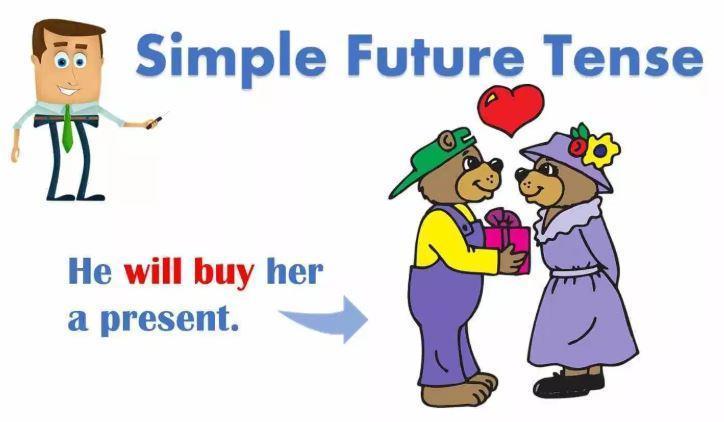
Artificial intelligence is expected to replace human in most manual work in the near future.
6. SỰ KHÁC NHAU GIỮA HAI THÌ
Sự khác biệt giữa thì tương lai đơn và cấu trúc ‘be going to + V’ Điểm khác biệt lớn nhất giữa thì tương lai đơn và cấu trúc ‘be going to + V’ nằm ở khả năng xảy ra của phán đoán, dự đoán của người nói. Vì vậy:
Sử dụng mẫu ‘be going to + V’ nếu có bằng chứng chứng minh cho phán đoán của mình.
Sử dụng thì tương lai đơn hoặc các cấu trúc thay thế nếu phán đoán của mình chỉ dựa trên cảm nhận chứ không có bằng chứng hoặc căn cứ rõ ràng.
7. Bài tập luyện thì tương lai đơn
Bài 1. Điền dạng đúng của từ trong ngoặc
1.If it rains, he (stay)____ at home
2.In two days, I (know)_____ my results
3.I think he (not come)____________back his hometown
4.I (finish)______ my report in2 days.
5.We believe that she (recover) from her illness soon
Bài 2. Dùng từ gợi ý viết thành câu hoàn chỉnh
DẠYKÈMQUYNHƠNOFFICIAL
1.If/ you/ not/ study/ hard/,/ you/ not/ pass/ final/ exam
2.they / come/ tomorrow?
Page 5| 19
3.rains/ it/ he/ home/ if/ stay.
4.I’m/ she /able/ afraid/ to/ be/ come/to/ party/ the/ not.
5.You/ look/ tired,/ so/ I/ bring/ you/ something/ eat
Bài
3. Điền vào chỗ trống sử
hoàn chỉnh
trong bảng sau để hoàn thành một bài Speaking Part 2
Question:How would you think the modern technology will change the workplace in the next 100 years?
are goingto feel are likely to lead to will have will find is likely to become will develop are predicted to work are likely to occur will be will continue are going to happen will result
Thanks to modern technology, there have been enormous changes in the workplace over the past 100 years. So now let us consider the changes that (1)……………… in the next 100 years. Unfortunately, I believe that not all changes (2)…………for the better. For example,more people (3)………… … from home and so they (4)………… more isolated from their colleagues. On the other hand they (5)………… greater freedom to choose their working hours.
A further possible change is that handwriting (6)…………… obsolete. We are already so used to using a keyboard that today’s children are losing the ability to spell without the aid of a word processor. Without a doubt, even greater changes (7)…………… in technology used in the workplace. Computers (8)……………… to grow even more powerful and this (9) …………………… in an even faster pace oflife than we have now. Let us hope that our employers (10)……………… way to reduce the stress on worker’s this fast pace can bring.
I also think these improvements in technology (11)……………… even more globalization than now and companies (12)………………… very stronginternational links.
Bài 4. Chia động từ ở các câu sau (ở thì tương lai đơn hoặc be going to V)
1.I’m afraid I……………… (not/ be) able to come tomorrow.
2.Because of the train strike, the meeting ……………… (not/ take) place at 9 o’clock.
3.A: “Go and tidy your room.”
B: “Okay. I ……………… (do) it now!”
4.If it rains, we ……………… (not/ go) to the beach.
5.In my opinion, she ……………… (not/ pass) the exam.
6.A: “I’m driving to the party, would you like a lift?”
B: “Thank you but I ……………… (take) the bus.”
7.Look at the sky! It………………(rain) very heavily!
8.The company (hold)………………a very important meeting next month.
9.According to the weather forecast, it ……………… (not/ snow) tomorrow.
10.I think I (go)…………………study abroad.
BÀI TẬP VẬN DỤNG 2
BÀI 1: Dựa vào từcho sẵn, viết câu ởthểkhẳng định(+), thểphủđịnh, thểnghi vấn(+) với động từ khuyết thuyết “will”
1. Jim/arrive/here/tomorrow.
DẠYKÈMQUYNHƠNOFFICIAL
Page 6| 19
dụng những từ
(+)____________________________________________________________ (-)______________________________________________________________ (?)___________________________________________________________________
2. There/ be/ many driverless cars/on the street/in the future.
3. Maria/ travel/to Berlin/ on the metro.
4. High-speed trains/ be/ very/ popular/in the next years.
5. There/ be/ gridlock/between 5:30 and 7:00
6. They/build/an overpass/here/next year.
7. Peter/ learn/to ride/a monowheel.
8. People/ travel/flying cars/ in the future.
Bài 2: Hoàn thành các câu dưới đấy sửdung động từkhuyết thiếu “ will” và động từtrong ngoặc.
1. In the future, buildings (be) _________________taller and moderner.
2. I think that people (drive)______________to work by flying vehicles and in the future.
3. People (not use)___________ox or horse carts any more.
4. I think public transportation (develop)____________and people (use)______________less private vehicles.
5.___________ (they/accept) my invitations?
6.____________ (many workers/ choose) to workfrom home?
DẠYKÈMQUYNHƠNOFFICIAL
7. Jim thinks that life (be) ________________easier in the future thanks to the help of robots.
Page 7| 19 (+)____________________________________________________________ (-)______________________________________________________________ (?)___________________________________________________________________
(?)___________________________________________________________________
(+)____________________________________________________________ (-)______________________________________________________________
(+)____________________________________________________________ (-)______________________________________________________________ (?)___________________________________________________________________
(?)___________________________________________________________________
(+)____________________________________________________________ (-)______________________________________________________________
(?)___________________________________________________________________
(+)____________________________________________________________ (-)______________________________________________________________
(+)____________________________________________________________ (-)______________________________________________________________ (?)___________________________________________________________________
(+)_____________ (-)______________________________________________________________ (?)___________________________________________________________________
8. Astronomers believe that they (find) __________________a living planet like the earth.
9. When _________________ (living in Mars/ be) possible?
10. Which means of transportation (take)_________the major role in the next 20 years?
11. It is predicted that there ( be)___________hail and snow tomorrow.
12. I’m afraid that my parents ( not allow)________me to go out too late.
13. Who (make)___________the last decision?
14._______________(robots /replace) all human workers in factories? No, they _____________
15. Jane expects that her mother (come)_______________home early today.
16. Future vehicles (run)______________on biofuel and other green energy.
17. My grandfather doesn’t believe that cars (fly)_________________like planes in the future.
18. There (not be)____________________gridlock in the future because people ( travel)____________by flying cars.
19. I think that countryside (disappear)______________in the future due to urbanization.
20. Solar-powered equipment ( be)___________________very popular in the future. Bài 3: Nối câu cột A sao cho câu trảlời cột B sao cho thích hợp
1.What will they do to reduce traffic jam
2. Will it be possible for people to live on the Moon in the future?
3. What will be the sources of energy we use in the future?
4. What will the authorities do to protect the environment?
5. Will it rain tomorrow?
6. Will all the forest be destroyed in the future?
7. Which one will be more popular in the futureplanes or high-speed trains?
8. What will be the most promising means of transportation in the future?
a. solar and wind energy
b. I think train will be more popular
c. No, they won’t
d. They will widen to the roads and build overpasses.
e. I think it will be the bullet train.
f. yes, it will
g. They will enact laws to protect the environment.
DẠYKÈMQUYNHƠNOFFICIAL
h. No, it won’t There’s a good weather forecast tomorrow.
Page 8| 19
A B
Bài 4: Dựa vào những từcho sẵn viết thành câu hoàn chỉnh.
1. They /think/their team/ be/ champion.
2. I/ not think/ Jim/ buy/ a new car.
3. More people/ live/work/ in the cities.
4. What/ you/ do/ if/ you/be/ the winner?
5. People/ afraid/ non-renewable sources of energy/ run out/in the future.
6. Many people/ believe/ there/ be/ life/in other planets.
7. People all over the world/speak/ the same language/in the future?
8. More and more people/ travel/ airplanes/in the future. ĐẠI TỪSỞHỮU
(POSSESSIVE
PRONOUNS)
1.Đại từsởhữu Đại từsởhữu chỉsựsởhữu của người hoặc vật với người hoặc một sựvật khác. Đại từsởhữu được sửdụng để
thếcho tính từsởhữu và danh từtheo sau đểtránh lập lại. (Đại từsởhữu= tính từsởhữu + danh từ)
2. Sựkhác biệt giữđại từsởhữu và tính từsởhữu .
Tính từsởhữu
DẠYKÈMQUYNHƠNOFFICIAL
Page 9| 19 1_____ 2_________ 3__________ 4___________
6________ 7__________ 8___________
5______
thay
Đại
từsởhữu
Định nghĩa
Tính từsởhữu( possessive adjective ) là từ
đểchỉsựsởhữu và đứng trước danhtừ.
Đại từsởhữu( possessive pronouns) dùng đểthay thế hẳn cho tính từsởhữu và danht từ.
Đại từsởhữu vừa có thểđứng ởvịtrí chủngữ, vừa có thểkaf tân ngữtrong câu.
Ví dụ This is my book.( Đây là quyển sách của
tôi)
‡Trong câu sửdụng tính từsởhữu “my” và danh từ“ book”
3. Đại từsởhữu và nghĩa của chúng.
Đại từnhân xưng
That is mine. ( Kia là quyển sách của cậu)
‡Trong câu sửdụng đại từsởhữu “mine” đểthay thế cho “my book” vì người nói không muốn lặp lại từ.
Tính từsở hữu Đại từsở hữu Nghĩa Ví dụ
I My Mine Của tôi Your book is not as interesting as mine.
Quyển sách của bạn không hay như quyên sách của tôi.
You Your Yours Của bạn I will give mine and you will give yours.
Tôi sẽđưa cho bạn cái của tôi, còn bạn đưa tôicái của bạn .
We Our Ours Của chúng tôi This house is ours.
Ngôi nhà này là của chúng tôi.
They Their Theirs Của họ If you don’t have a car, you can borrow theirs.
Nếu bạn không có ô tô, bạn có thểmượn của họ.
He His His Của anh ta How can he eat my food not his?
Sao anh ấy có thểăn thức ăn của tôi mà không phải của anh chứ?
She Her Her Của cô ấy I can’t find stapler so I use hers.
DẠYKÈMQUYNHƠNOFFICIAL
( tôi không tìm thấy cái dập ghim của tôi vì vậy tôi sử
Page 10| 19
dụng cái của cô ấy.)
It Its Its Của nó
4. Cách dùng các đại từsởhữu
Dùng thay thếcho một tính từsởhữu
( possessive adjective ) và một danh từ
đã nói ởphía trước
Ví dụ
My feet are small but its are big.
( chân của tôi nhỏnhưng chân của nó thì to )
I gave it to my friends and to yours. ( Tôi đưa nó cho bạn của tôi và
bạn của bạn)
‡yours=your friends
Her shirt is white and mine is blue. ( Áo cô ta màu trắng còn của tôi màu xanh.)
‡mine= my shirt
Dùng trong dạng câu hỏi sởhữu kép( double possessive)
VD: He is a friend of mine( anh ta là một người bạn của tôi.
It was not fault of yours that we mistook the way. ( Chúng tôi lầm
đương đâu có phải lỗi của anh ta.)
BÀI TẬP VẬN DỤNG
Bài 5: Hãy sửdụng đại từsởhữu thay thếcho các cụm từtrong ngoặc trong các câu sau:
1. My brother’s bike is blue. (Mybike)_____ is blue, too
2. This is my house and that is (her house)_________.
3. My brother ate not only his cake but also (my cake)___________
4. Please move to another table. This is (our table)_______________
5. They mistook our car for( their car)_________
6. Give this book to Jim. It’s ( his book)_________________
7. My laptop didn’t work, so I used ( her laptop)_________________
8. My house is not as modern as ( your house)________________________.
9. The last decision will be ( my decision)_________________________________
10. Is it your suitcase or ( his suitcase)______________?
11. Their garden is smaller than ( my garden)___________
12. It used to be my car. Now it’s ( her car)_______.
13. I found my keys. Have you found ( your keys)_______?
DẠYKÈMQUYNHƠNOFFICIAL
14. Their team beat ( our team)______________
Page 11| 19
15. This is not your money but it is ( my money)_______.
Bài 6: Khoanh tròn vào đáp án đúng.
1. Have you got _______pen, or would you like to borrow _________?
A. your-mine B. yours-my
2. Jane’s voice is good. ______is good, too.
A.I B. my
3.______ cat is adorable.______is adorable too.
A. Your-Mine B. Your-Mine
4. My face looks like _______face.
A. she B. her
5. it’s not _____fault. It’s _______
A. your-mine B. yours-mine
yours-mine
mine
yours-mine
her
yours-mine
6. Jim’s car was parked here. _______parked _______car here too.
A.I-mine B.I –mine
7. I know Louis is _________friend. He’s also a friend of_________
A. your-my B. your-I
8. I lost my pencil. Can I have one of ______?
A. your B. you
9. This is not _______car. __________is black.
your-mine
yours
A. my-my B.my-mine C.my –I
10. Has the cat had ______food?
A. its B.it
C .his
Bài 7: Điền đại từsởhữu thích hợp vào chỗtrống đểhoàn thành đoạn hội thoại sau.
1. Peter: Hi Tom, you look happy today
Tom: Oh, hi Peter. I amso excited. My father’s bought me a new bike.
Peter: Really, I’ve got a new bike too. My bike is blue. How about(1) ________?
Tom (2)_________is green. I’ve heard that Jim has a bike too (3)_______has the same color.
Peter: Yes, I saw his bike but I haven’t seen ( 4)__________How about going cycling together this weekend?
Tom: That a good idea. Let’s invite Jim to join us.
2. Jim: Hello, this is Jim.
Tom: Oh, hi Jim, this is Peter. Peter and I are going cycling this weekend because we’ve got new bikes. Do you want to join us?
Jim: It sounds nice.
DẠYKÈMQUYNHƠNOFFICIAL
Tom: My bike is green. It has the same color with (5)__________I hope that I won’t mistake your for (6)___________
Page 12| 19
C.
C.
C.
C.
C.
C.my-mine
C.
C.
Jim: Don’t worry, my bike must look older than (7)_______Oh, wait a minute. I’ve remembered thatmy bike’s broken.
Tom: It’s such a pity. Can you borrow a bike?
Jim: Uhm, let see. My sister has a bike. I will borrow (8)________ I will call you if she agrees to lend me her bike.
Tom: Okay
Bài 8:Đánh dấu …… trước câu trảlời đúng, dấu ……………trước câu sai và sửa lại cho đúng.
_____1.Excuse me. We came here first so this table is our.
_____2.Tom is a friend of me.
_____3.Jim house is as big as mine house.
_____4. My cat doesn’t sleep with me.It’s bed is in another room.
_____5.My answer for this question is different from his.
_____6.Do you have another umbrella? I forgot my at home.
_____7.Her hat is very expensive. Mine have a beautiful hat too.
_____8.Theirs restaurant is not as famous as ours.
Câu hỏi Yes/ No lên giọng
Câu hỏi có từđểhỏi xuống giọng
PRACTISE
NGỮÂM (PRONUNCIATION)
VÍ DỤ
• Do you think flying cars will replace planes? ‰
(Bạn có nghĩ rằng những chiếc xe ô tô bay sẽthay thếnhững chiếc máy bay không?)
• Will your brother be a pilot in the future? ‰
(Anh trai của bạn sẽtrởthành một phi công trong tương lai phải không?)
•What would you like to have for breakfast? Ê
(Bạn muốn ăn gì cho bữa sáng?)
•Where will you travel to for your next vacation? Ê
(Bạn sẽđi du lịch ởđâu cho kỳnghỉtiếp theo vậy?)
Decide whether each of the following questions has raising tone(R) or falling tone (F).
E.g.: Which job will you do in the future? F
1. Will a flying car safe?
2. What will you buy for your child?
DẠYKÈMQUYNHƠNOFFICIAL
3. Do you think there is a real skycycling tube?
4. Why do you think there is no teleporter?
Page 13| 19
Đối với các từcó hai âm tiết,
(ˈ) được đánh vào trước âm tiết được nhấn trọng âm. TỪLOẠI GIỌNG ĐIỆU
VOCABULARY AND PRONUNCIATION NGỮÂM Pronunciation
dấu
5. When did you last use the metro?
6. Will you travel on a supersonic airplane?
7. How could you escape the gridlocked road yesterday?
8.Have you ever used the metro?
9.Will she lend you her hover scooter?
10. Who has helped us build the skytrain system?
Ex I: Find the word which has a different sound in the part underlined
Put the words in the correct columns
DẠYKÈMQUYNHƠNOFFICIAL
Page 14| 19
Vocab: Nouns 1.safety Độan toàn 2.system Hệthống 3.space Không gian 4.fuel Nhiên liệu 5.skytrain Tàu trên khôn 6.invention Phát minh Verbs 1.exist Tồn tại 2.disappeart Biến mất 3.crash Đâm vào 4.avoid Né tránh 5.float Nổi 6.design Thiết kế Adjectives 1.imaginative Tưởng tượng 2.environmental Thuộc vềmôi trường 3.electric Chạy bằng điện 4.serious Nghiêm trọng
1.A. transport B. second C. sport D. horse 2.A. avoid B. choice C. tortoise D. coin 3.A. weather B. teacher C. helicopter D. everything 4.A. space B. car C. crack D. crash 5.A. underwater B. bus C. future D. much 6.A. driver B. easily C. negative D. minute 7.A. favorite B. solar C. today D. station 8.A. valued B. powered C. renewed D. replaced 9.A. sources B. advantages C. shoes D. brushes Ex II: Odd one out 1.A. airplane B. electric B. sheep D. helicopter 2.A. pilot B. driver C. transport D. captain 3.A. environment B. fly C. carry D. float 4.A. solar B. wind C. hydro D. speed 5.A. convenient B. dangerous C. fuel D. expensive 6.A. system B. crash C. traffic D. program 7.A. friendly B. clean C. cheap D. motorbike 8.A. weather B. believe C. think D. agree 9.A. pollution B. rubbish C. planet D. theft 10.A. personal B. push C. favorite C. private
III:
a hot air balloon, a car, a space ship, a bicycle, a horse, a boat, a motorbike, a bus, a plane, a ship, a train, a taxi
Ex
Ex IV: Add more words to each group
1. Means of transport: bike,
Types of energy: wind,
Ex V: Match the means of transport with their descriptions

a. This type of transport is made of strong material that is filled with hot air or gas to make it rise in the air, usually carrying a basket for passengers.

b. This type of transport can carry passengers at high speeds.
c. This type of transport can travel in space and carry people.

d. This type of transport has a number of coaches of trucks pulled by an engine or powered by a motor in each one, taking people or goods from one place to another.
Ex VI: Match
1.check
2.sail
3.worry about
4.ride
5.use
6.take
7.avoid
8.drive
Ex VII: Choose the best answer
a. a bicycle
b. lots of space
c.public transport
d. the weather forecast
e. traffic jams
f.a boat
g. a car
h.the exam
DẠYKÈMQUYNHƠNOFFICIAL
1.What will our transport ……………..look like in the future?

A.system B. benefit C. problem
D. part
Page 15| 19 Drive Ride Fly Sail pedal
…………………………………………………………………
2.
1.bullet train 2.space ship 3.hot air balloon 4.train
2.One day I will travel to the Moon in a big …………………..that travels faster than the speed of sound.
A.car B. train C. boat D. space ship
3.It’s …………to fly and more convenient than a helicopter.
A.Fast B. cheap C. easierD. expensive
4.Look at the boy! He is ………………….a horse.
A.sailing B. riding C. driving D. taking
5.My father is a frequent …………….of Vietnam Airline because he has to fly every month for work.
A.flight attendant B. pilot C. actor D. customer
6.He doesn’t need to …………… the car because it is automated.
A.take B. ride C. drive D. pedal
7.…………………a bicycle is eco-friendly but sometimes it’s quite slow.
A.Using B. Taking C. Doing D. Making
8.Which ………………..do you think will be popular in the future? Cars.
A.traffic B. transport C. job D. system
9.Elderly and disabled ………….…are not able to use this type of transport.
A.woman B. man C. children D. people
10. If you take a taxi, you will have to ……………….more money.
A. have B. make C. spend D. do
Ex VIII: Fill in the gap with a suitable word given in the box
crowded faster planes rainy bus expensive future space
1.The ……………..at this time of the day are sometimes delayed.
2.There will not be enough …………………….for trees, lakes and buildings in the city.
3.Trains in Japan are always ………………….with passengers.
4.They prefer not to go by air plane because it is …………………
5.We went to the stadium to see our favorite football match by ………………. this morning.
6.Now, let’s talk about ………..….road transport with slide walks, sky cycling and bicycles.
7.Intelligent bikes have foldable roof for ………………..weather.
8.It’s much …………………if you want to go from one place to another in the city center. Ex IX: Write the correct form of the word given
1.He is a …………………student because he goes to class every day. REGULARLY
2.We participate in a lot of activities to help the ……………………people in the countryside. OLD
3.Do you like………………. by plane or by coach? TRAVEL
4.The teachers is giving ……………………to the difficult question. EXPLAIN
5.……………………has become a hot trend in this city nowadays. CYCLE
6.This type of transport is powered by ……………..motors. ELECTRICITY
7.You should ask an …………………….driver for help. EXPERIENCE
8.Intelligent bikes will never be …………………because they use fingerprint lock. STEAL
9.The man has ………………….and I can’t find him anywhere. APPEAR
DẠYKÈMQUYNHƠNOFFICIAL
10.Using biogas is an environmentally -………………source of energy. FRIEND
Page 16| 19
Ex X: Circle the best answer
1.I can’t believe/agree that driverless cars already exist.
2.People can use a jetpack to drive/fly anywhere easily.
3.How much fuel does this type of transport use/cost?
4.What forms/means of transport do you often use to go to work?
5.Wonderland is the planets’ big/biggest city without a metro system.
6.There are fewer/less bicycles than there used to be in thisarea.
7.We will use more/less solar energy in the future.
8.My group is talking/having about future road traffic.
9.Do you think this way of transport will appear/carry in Vietnam?
10.Big cities will have to find a problem/solution to reducetraffic jams duringrush hour.
DO YOU KNOW? SMART ROADS
Over a million people are killed in road traffic accidents every year, with tens of millions injured. The development of smart roads connected to the Internet of things can greatly help to reduce road deaths. Because road sensors can communicate with smart cars about the best ways to avoid dangers or bad road conditions. In the future, wireless battery chargers will be found underneath roads. This helps to reduce the level of air pollution and the need for fossilfuels to power cars.
KỸNĂNG ĐỌC (READING SKILLS)
I-Read the passage and complete the following sentences with ONE or TWO words. The re-occurrence of new technology over the years has helped us change the way we live and do daily activities. Most of this development is as a result of inventing and creating new ways to reduce our daily stress and live an improved life. The transportation industry is one of the important areas where new technological advancement takes place. We now see cars that drive themselves along predetermined routes. Trains that will use new magnetic rail systems. An amazing new “hyperloop” train that will speed 800 miles per hour. All these innovations are not just a form of illusion, they are set to happen within the next coming years or have already started transporting us. This has increased the level of some industries like vehicle transport companies and car shipping carriers. It has also made truck production company, and fleet management more efficient.
1.Most of new technologies over the years are to reduce our_________and ensure an improved life.
2.New technological advancement takes place in the_________as well.
3.A new “hyperloop” train can run at the speed of_________per hour.
4.Some of these innovations have already support our_________.
5.The level of vehicle transport companies and car shipping carriers has been_________.
II -Read the passage and decide whether the statements are TRUE (T) or FALSE (F).
Flying cars aren’t just science fiction anymore. Terrafugia, based in the United States, is developing a readable aircraft called the Transition. The vehicle has two seats, four wheels and wings that fold up, so it can be driven like a car. Terrafugia first began to work on the Transition in 2006 and has come closer than anyone to making the flying car a reality. The company uses special tires and glass that are lighter than normal automotive ones, which makes it easier for the vehicle to fly. An owner needs to pass a test and complete 20 hours of flying time to be able to fly the Transition. The Transition can reach around 70 miles per hour (mph) on the road and 115 mph in the air. On the ground, it gets 35 miles per gallon.
1.The Transition has room for four passengers.
2.Terrafugia has worked on the Transition since 2006.
DẠYKÈMQUYNHƠNOFFICIAL
3.The flying car uses special tires and glass.
4.All drivers of the Transition will only have to pass a test to get a license.
Page 17| 19
KỸNĂNG
q q q q
5.The Transition will go faster in the air than on the road. q
KỸNĂNG NGHE (LISTENING SKILLS)
Exercise 1: Listen and decide if each statement is true or false or not given. (Track 22)
No. Statements
1. Buses, subways, airplanes and trains are called private transports. ® ®
2. The subway is the most public transport used in big cities. ® ®
3. In Vietnam, people use lots of motorbikes. ® ®
4. In China, bikes are not used much. ® ®
5. There are three types of buses in London. ® ®
6. In some double-decker buses, there are automatic doors. ® ®
7. All roads in London have bus stops. ® ®
8. Open top in buses allow passengers to see the places in London. ® ®
Exercise 2: Listen and answer the questions. (Track 23)
1.What does Michael do? ..........................................................................................................................................
2.Where does Michael work? ..........................................................................................................................................
3.How does Michael go to work?
4.What time does he leave home?
5.How long does he walk to the bus stop?
6.Where does he get off from the bus? ..........................................................................................................................................
7.Why does Michael usually have a seat? ..........................................................................................................................................
8.How long does it take Michael to get to work every day? ..........................................................................................................................................
KỸNĂNG NÓI (SPEAKING SKILLS)
Talk about the benefits of self-driving cars. You can use the following questions as cues:
•What are the benefits of self-driving cars?
•Which benefits are you most interested in? Why?
Useful languages:
Useful vocabulary
• fewer accidents
• reducing traffic congestion and pollution
• saving space
• saving fuel
• better life
•saving time
•saving money
•convenient
Useful structures
• Self-driving cars have many benefits. First,...
Second, …..
• Self-driving cars can help ...
• ... is the benefit that I'm most interested in because
•These benefits can improve our life like ...
DẠYKÈMQUYNHƠNOFFICIAL
Complete the notes: Structures of the talk Your notes
Page 18| 19
T
F
What are the benefits of self-driving cars?
Which benefits are you most interested in? Why?
How can these benefits improve human’s life?
Now you try!
Give your answer using the following cues. You should speak for 1-2 minutes.
1.Self-driving cars can help ...
2.... is thebenefit that I'm most interested in because ...
3.These benefits can improve our life like ...
Now you tick!
Did you ...
q answer all the questions in the task?
q give some details to each main point?
q speak slowly and fluently with only some hesitation?
q use vocabulary wide enough to talk about the topic?
q use various sentence structures (simple, compound, complex) accurately?
q pronounce correctly (vowels, consonants, stress, intonation)?
Let’s compare!
Finally, compare with the sample answer on page 199.
KỸNĂNG VIẾT (WRITING SKILLS)
I-Complete each of the following sentences using the cues given. You can change the cues and use other words in addition to the cues to complete the sentences.
1.Modern/ means of transport/ be/ very strange/ me. → ________________________________________________________
2.I/ be/ most interested/ hyperloop/ skytrain. → ________________________________________________________
3.It/ be/ wonderful/ travel/ such/ modern/ means of transport. → ________________________________________________________
4.These/ modern/ means of transport/ help/ save/ much time/ travelling. → ________________________________________________________
5.It/ be/ fantastic/ if/ these/ means of transport/ be/ available/ future. → ________________________________________________________
II-Write a short paragraph (about 60-80 words) about means of transport of the future you are most interested in.
You can answer some of the following questions:
• What is that means of transport?
• Why are you most interested in it?
• What are the benefits of that means of transport?
DẠYKÈMQUYNHƠNOFFICIAL
Page 19| 19
UNIT 12: ENGLISH-SPEAKING COUNTRIES
VOCABULARY GETTING STARTED
1. holiday /ˈhɒlədeɪ/(n) Kỳ nghỉ
2. fantastic /fænˈtæstɪk/(adj) Tuyệt vời
3. ask for directions /ɑːsk fɔː dɪˈrɛkʃənz/(v.phr) Hỏi đường
4. local people / ˈləʊkəl ˈpiːpl/
5. travel /ˈtrævl/(v) Du lịch
6. season /ˈsiːzn/(n) Mùa
7. take a tour / teɪk ə tʊə/(v.phr) Đi tham quan
8. go penguin watching /gəʊ ˈpɛŋgwɪn ˈwɒʧɪŋ/(v.phr) Xem chim cánh cụt
9. exciting /ɪkˈsaɪtɪŋ/(adj) Thú vị
10.amazing landscapes /əˈmeɪzɪŋ ˈlænskeɪps(n.phr) Phong cảnh tuyệt vời
11.outdoor activities /ˈaʊtdɔːr ækˈtɪvɪtiz/(n) Hoạt động ngoài trời
12.beach /biːtʃ/(n) Bãi Biển
13.island /ˈaɪlənd/(n) Đảo
14.sunset /ˈsʌnset/(n) Hoàng hôn
15.museum /mjuˈziːəm/(n) Viện bảo tàng
16.sports and games /spɔːts/ /ænd/ /geɪmz/(n.phr) Thể thao và trò chơi
17.capital city / ˈkæpɪtl ˈsɪti/(n.phr) Thủ đô
A CLOSER LOOK 1
1. island country /ˈaɪlənd ˈkʌntri/(n.phr) Quốc đảo
2. tattoo /təˈtuː/(n) Hình xăm
3. kangaroo /ˌkæŋɡəˈruː/(n) Chuột túi
4. Scottish kilt /ˈskɒtɪʃ kɪlt/(n.phr) Váy kiểu Scotland
5. castle /ˈkɑːsl/(n) Lâu đài
6. coastline /ˈkəʊstlaɪn/(n) Đường bờ biển
7. native /ˈneɪtɪv/(adj) Bản địa
8. unique /juˈniːk/(adj) Độc nhất vô nhị
9. ancient /ˈeɪnʃənt/(adj) Cổ
10.valley /ˈvæli/(n) Thung lũng
11.symbol /ˈsɪmbl/(n) Biểu tượng
12.boat ride /bəʊt raɪd/(n.phr) Đi tàu
13.tower /ˈtaʊə(r)/(n) Tháp
14.show /ʃəʊ/(v) thể hiện
15.state /steɪt/(n) Bang
16.official language /əˈfɪʃəl ˈlæŋgwɪʤ/(n.phr) Ngôn ngữ chính thống
A CLOSER LOOK 2
1. attraction /əˈtrækʃn/(n) Sự thu hút
2. countryside /ˈkʌntrisaɪd/(n) Miền quê
3. Statue of Liberty /ˈstætjuː ɒv ˈlɪbəti/(n) Tượng nữ thần tự do
4. consist of / kənˈsɪst ɒv/(phr.v) Bao gồm
5. entertainment centres /ˌɛntəˈteɪnmənt ˈsɛntəz/(n.phr) Trung tâm giải trí
6. tourist /ˈtʊərɪst/(n) Khách du lịch
7. bridge /brɪdʒ/(n) Cầu
8. Englishman / ˈɪŋglɪʃmən /(n) Người Anh
9. run through /rʌn θruː/(phr.v) Chảy qua
10.present /ˈprizent/(n) Món quà
11.red telephone box /rɛd ˈtɛlɪfəʊn bɒks/(n.phr) Tủ điện thoại đỏ
COMMUNICATION
1. traditional festivals /trəˈdɪʃənl ˈfɛstəvəlz /(n.phr) Lễ hội truyền thống
DẠYKÈMQUYNHƠNOFFICIAL
2. visitor /ˈvɪzɪtə(r)/(n) Khách tham quan
3. clean /kliːn/(adj) Sạch
4. snake /sneɪk/(n) Rắn
5. lake /leɪk/(n) Hồ
6. famous for /ˈfeɪməs fɔː/(v.phr) Nổi tiếng
7. lie /laɪ/(v) Nằm
8. royal family /ˈrɔɪəl ˈfæmɪli/(n.phr) gia đình hoàng gia
9. Pacific Ocean /pəˈsɪfɪk ˈəʊʃən/(n) Thái Bình Dương
SKILLS 1
1. waterfall /ˈwɔːtəfɔːl/(n) Thác nước
2. bushwalking /ˈbʊʃ ˈwɔːkɪŋ/(n.phr) Đi bộ xuyên rừng
3. be rich in / biː rɪʧ ɪn/(v.phr) Giàu
4. haka dance /Haka dɑːns/(n.phr) Vũ điệu haka
5. experience /ɪkˈspɪəriəns/(n) Trải nghiệm
SKILLS 2
1. palace /ˈpæləs/(n) Cung điện
2. guard /ɡɑːd/(n) Cận vệ
3. historic /hɪˈstɒrɪk/(adj) Lịch sử
LOOKING BACK
1. go sightseeing /gəʊ/ /ˈsaɪtˌsiːɪŋ/(v.phr) Ngắm cảnh
2. border /ˈbɔːdə(r)/(n) Biên giới
3. ice hockey /aɪs ˈhɒki/(n) Khúc côn cầu trên băng
PROJECT
1. amazement /əˈmeɪzmənt/(n) Sự ngạc nhiên
2. diary entry /ˈdaɪəri ˈɛntri/(n.phr)Nhật ký hành trình
GRAMMAR
Mạo từ là gì?ARTICLES
Mạo từ là những từ đứng trước danh từ hoặc cụm danh từ, nó cho biết danh từ ấy nói đến những đối tượng xác định hay không xác định.Người ta sẽ thường thấy trong tiếng Anh có 3 mạo từ a an the. Nhưng thực tế, trong tiếng Anh có 4 mạo từ, đó là a an the và Ø. Ø được xem là mạo từ không, trong nhiều trường hợp trước danh
từ không có mạo từ chính là nó đang có mạo từ không.
Phân loại mạo từ
Vì mạo từ không thường không được tính tới nên ta sẽ chia mạo từ a an the ra làm hai loại chính:
Mạo từ không bất định: a, an
Mạo từ xác định: the
Cách sử dụng các mạo từ a an the
Cách sử dụng mạo từ a, an
A hoặc An là các mạo từ được sử dụng trước một danh từ số ít và có nghĩa là một. Mạo từ a an được sử dụng trong các trường hợp sau:
∑ Đứng trước những danh từ số ít đếm được, khi nó được nhắc đến lần đầu tiên, trong đó:
“a” dùng trước những danh từ bắt đầu bằng một phụ âm “p,t,h,k,r,…”
“an” dùng trước những danh từ bắt đầu bằng một nguyên âm “o, u, e, a, i”
∑ Dùng trước những danh từ khi nó mang ý nghĩa là “một”
∑ Dùng trước những danh từ chỉ nghề nghiệp
∑ Dùng trong các cụm từ chỉ số lượng
Lưu ý một số trường hợp đặc biệt của mạo từ a và an
∑ Dùng “an” trước một số từ bắt đầu bằng “u”, âm “h” câm
Ví dụ: an umbrella; an hour
∑ Dùng “a” với một số danh từ mở đầu bằng “uni”và “eu”
DẠYKÈMQUYNHƠNOFFICIAL
Ví dụ: a uniform, a unit, a European,…
Cách sử dụng mạo từ xác định “the”
∑ Dùng trước những danh từ khi được nhắc lần thứ 2 trở đi
∑ Dùng trước những danh từ khi chúng được xác định bằng một mệnh đề/ mệnh đề quan hệ ở phía sau
∑ Dùng trước những danh từ là duy nhất, độc nhất (The sun, the earth,…)
∑ Dùng trước số thứ tự ( The first, the second, the last)
∑ Dùng trước tính từ để tạo thành danh từ chỉ người ở dạng số nhiều (The old-người già, the rich-người giàu, …)
∑ Dùng trước tên của các quốc gia tận cùng bằng -s và một số quốc gia số ít (The Philippines. The United Kingdom)
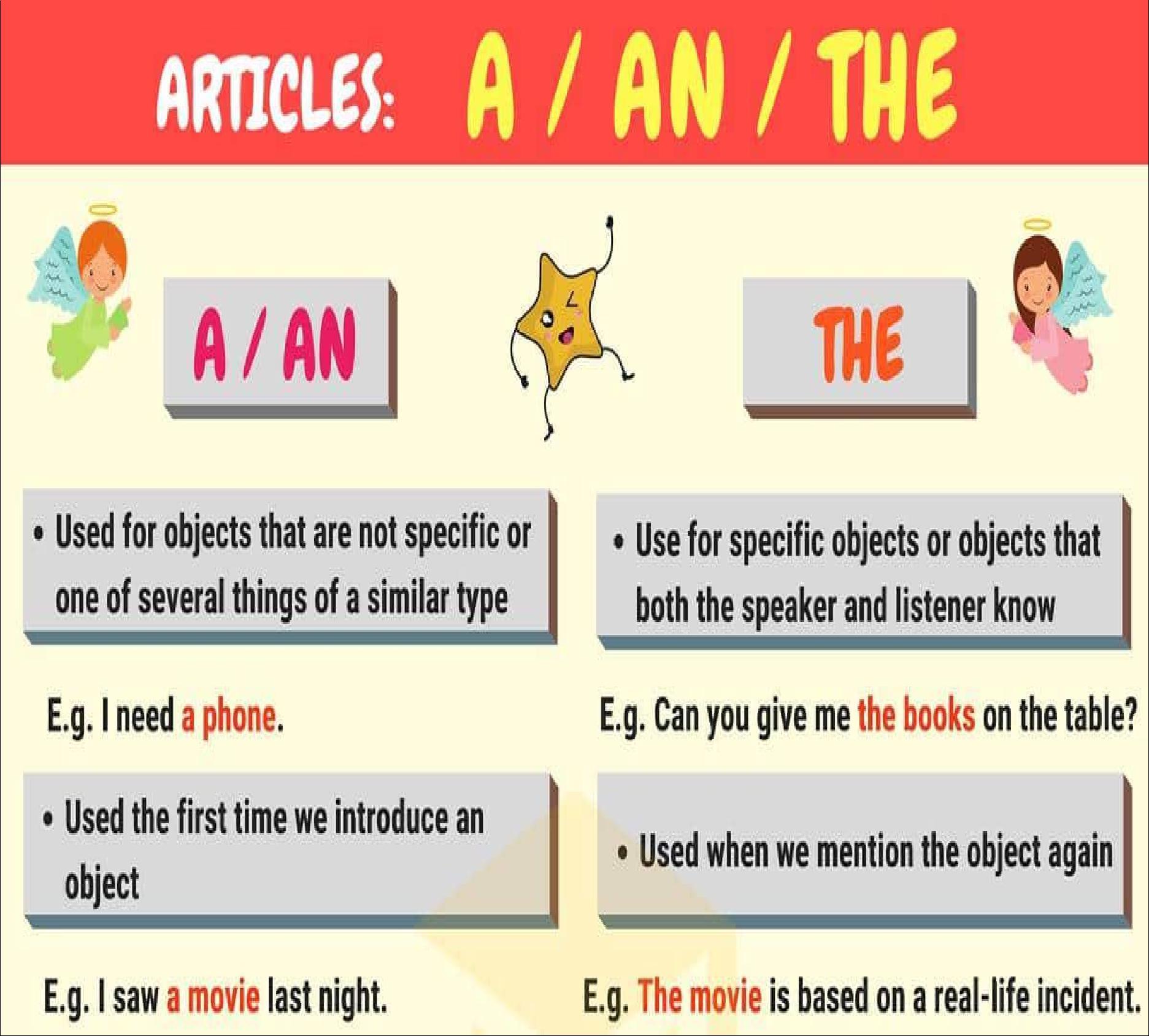
∑ Dùng trước tên của các loại nhạc cụ nhưng phải đứng sau “play”
∑ Dùng trước tên của các địa điểm công cộng (The zoo, the cinema, the park)
∑ Đứng trước danh từ tên riêng ở dạng số nhiều để chỉ cả gia đình nhà họ (The Smiths –gia đình nhà Smith)
∑ Dùng trước tính từ so sánh hơn nhất và so sánh kép
∑ Dùng trước tên của sông, suối, biển, đại dương, sa mạc, dãy núi,…
∑ Dùng trước những danh từ mà cả người nghe và người nói đều biết rõ về nó
∑ Dùng trước các buổi trong ngày
∑ Dùng trước tên của các tờ báo
∑ Dùng trước tên của các tổ chức
∑ Dùng trước danh từ số ít thượng trưng cho một nhóm động vật, loài hoặc đồ vật (The whale (loài cá voi)
∑ Dùng trước các danh từ chỉ phương hướng
DẠYKÈMQUYNHƠNOFFICIAL
∑ Đứng trước danh từ + of + danh từ ( The driver of the car (tài xế của chiếc xe)
∑ Dùng trong một số cụm từ cố định (At the end of sth, At the age of sth)
∑ Dùng trước hospital/church/school/prison/ khi chúng mang ý nghĩa khác Những trường hợp không dùng mạo từ a an the Dưới đây là những trường hợp các mạo từ a an the không được sử dụng:
∑ Trước tên các môn học
∑ Trước tên của các môn thể thao
∑ Trước danh từ số nhiều không xác định
∑ Trước danh từ không đếm được
∑ Trước tên của các phương tiện giao thông khi đứng sau giới từ “by”
∑ Trước danh từ chỉ màu sắc
∑ Sau tính từ sở hữu hoặc sau danh từ sở hữu cách
∑ Trước tên của các bữa ăn
∑ Trước những ngày/tháng/năm/ mùa không xác định
∑ Trước tên các quốc gia (trừ các quốc gia đã được lưu ý), tên châu lục, tên núi, tên hồ, tênđường
∑ Trước danh từ trừu tượng (Love, health,…)
PRACTISE :
1/Một số bài tập trắc nghiệm về mạo từ a an the 1…… youngest boy has just started going….to school.
A. The –Ø B. a –Ø
2.….eldest boy is at….college.
Ø –the
A. The –the B. An –the C. The –Ø
an –Ø
A –the
3…. person suffering from….shock should not be given anything to drink.
A. An –the B. A –Ø C. A –the
4. Mr. Smith is… old customer and… honest man.
A. the –an B. an –the
5. Do you go to … prison to visit him?
A. the B. Ø
an –an
a
6. On…. Sundays my father stays in bed, reading….. Sunday papers.
A. the –the B. a –the
7. My mother goes to…. church in….. morning
A. the –Ø B. the –the
8. And in….. afternoon goes to visit…..friends.
A. the –any B. the –Ø
Ø –the
an –an
9. I have…. little money left; let’s have dinner in …. restaurant.
A. some –the B. a –the
the –a
10. Like many women, she loves….. tea parties and ….gossip
A. some –the B. Ø –Ø
a lot of –the
A –any
the –the
an
a church –a
the –the
a –a
Ø –a
11. Ann used to ride a motorcycle up and down. …. road early in…. morning
A. a –the B. the –a C. the –the D. the –an
12. I am on night duty. When you go to … bed, I go to…. work.
A. a –the B. Ø –Ø C. a –Ø D. the –Ø
Bài 2: Điền mạo từ thích hợp vào chỗ trống
1.I want ………… apple from that basket.
2.Miss Lin speaks ………… Chinese.
3.I borrowed………… pen from your pile of pencils and pens.
4.Eli likes to play ………… football.
5.I bought………… umbrella to go out in therain.
6.I lived on ………… Main Street when I first came to town.
7.Albany is the capital of ………… New York State.
DẠYKÈMQUYNHƠNOFFICIAL
8.My husband’s family speaks ………… Polish.
9.………… apple a day keeps your enemy away.
D.
C.
D.
D.
C.
D.
C.
D.
C.
D.
Ø –the
the –a
C.
D.
C.
D.
C.
D.
C.
D.
10.Our neighbors have………… cat and………… dog.
Bài 3: Điền vào chỗ trống mạo từ thích hợp
1.Copper is ………… useful metal.
2.He is not ………… honorable man.
3.Aladdin had ………… wonderful lamp.
4.He returned after ………… hour.
5.You are ………… fool to say that.
6.French is ………… easy language.
7.Mumbai is ………… very dear place to live in
8.She is ………… untidy girl.
9.I bought ………… horse, ………… ox, and ………… buffalo.
10.Man, thou art ………… wonderful animal.
11.He is ………… honor to this profession.
Bài 4: Hoàn thành đoạn văn sau bằng cách điền mạo từ a/an thích hợp
Paul goes to university every day. In his backpack thereis ….. book, ….. pencil case, ….. apple and ….. egg and mayonnaise sandwich. Some days he also buys ….. ice cream for dessert.
Today he has ….. English exam. The exam is not very difficult. He writes ….. short story about ….. adventurer. The story begins like this: “It is ….. special day for Oliver. At ten o’clock in the morning, he gets on ….. plane.His destination is Australia…”
Bài 5: Điền các mạo từ “a/ an/ the” thích hợp vào chỗ trống, nếu không điền ghi X
1.I bought __ blue sweater yesterday.
2. I’d like __ cup of tea.
3. There is __ apple and __banana on the table.
4. I bought __ beef, vegetables and milk. __ beef is very good.
5. Mai has __ many books. ___ books are mostly about English grammar.
6. I took __ suitcase and __ backpack on holiday. ___ suitcase was much more useful.
7. Julie read __ book and __ magazine. She said ___ book was quite boring though.
8. She offered us __ piece of cake and __ biscuits.
9. They drank ___ coffee and ___ tea.
10. Jame has __ son and __ two daughters.
11. Lan often watches __ films and __ TV programmes all night.
12. She has __ black umbrella and I have ___ blue one. ___ blue one is bigger.
13. I bought __ new dress, but I was annoyed to find that __ zip was broken.
14. We should take __ taxi because it's getting dark.
15. I met __ very nice American last night.
16. __ sun rises in __ east and sets in __ west.
17. __ moon moves around __ earth.
18. We often play soccer in ___ afternoon.
19. ___ guitar is one of the most oldest musical instruments.
20. I often go to __ school at 6.30 am.
21. Pop music has always appealed more to __ young than ___ old.
22. I often listen to ___ music in my free time.
23. Donald Trump becomes ___ president of ___ united states on January 20, 2017.
24. We often take __ exam each semester.
25. There will be __ interesting movie this weekend.
26. Hoa is __ most intelligent student in my class.
27. When I was at ___school, I had to wear __ uniforms.
28. __ poor and __ elderly are often left behind when it comes to __ modern technology.
29. Is there ___ bank near here?
30. On ___ Christmas eve, people often have parties late at ___ midnight.
DẠYKÈMQUYNHƠNOFFICIAL
Bài 6: Điền các mạo từ “a/ an/ the” thích hợp vào các đoạn văn sau, nếu không điền ghi X
1.John bought __ new car last week. Unfortunately, ___ car broke down after just two days.
2. We went to __ movie yesterday. Although it got ___ good reviews, ___ movie wasterrible. I was so mad, I went to ___ box office and asked for my money back.
3. Our teacher gave us __ easy test today. There were ___ questions on there which we used to do in ___ previous tests.
4. Ms Parrot, ___ most famous lady detective of ___ twenty-first century, was born in ___United Kingdom in ___ 1960s. Since then, she has been to many countries, including __ Portugal, Singapore and Australia. She has never been to __ Philippines or ___ United States, but she speaks __ English, French and Portuguese. Like Sherlock Holmes, Sherlock Holmes, ___ famous detective, she plays ___ violin, and sometimes practises up to five times __ day. She is also __ only person in ___ world to have performed Tchaikovsky's 1812 overture in one breath on ___ recorder.
Câu hỏi Yes/ No lên giọng
Câu hỏi có từđểhỏi xuống giọng
NGỮÂM (PRONUNCIATION)
• Do you think flying cars will replace planes? ‰
(Bạn có nghĩ rằng những chiếc xe ô tô bay sẽthay
thếnhững chiếc máy bay không?)
• Will your brother be a pilot in the future? ‰
(Anh trai của bạn sẽtrởthành một phi công trong tương lai phải không?)
•What would you like to have for breakfast? Ê
(Bạn muốn ăn gì cho bữa sáng?)
•Where will you travel to for your next vacation? Ê
(Bạn sẽđi du lịch ởđâu cho kỳnghỉtiếp theo vậy?)
Decide whether each of the following questions has raising tone (R) or falling tone (F).
E.g.: Which job will you do in the future? F
1. Will a flying car safe?
2. What will you buy for your child?
3. Do you think there is a real skycycling tube?
4. Why do you think there is no teleporter?
5. When did you last use the metro?
6. Will you travel on a supersonic airplane?
7. How could you escape the gridlocked road yesterday?
8.Have you ever used the metro?
9.Will she lend you her hover scooter?
10. Who has helped us build the skytrain system?
Ex
Find the word which has a different sound in the part underlined
DẠYKÈMQUYNHƠNOFFICIAL
NGỮÂM Pronunciation Đối với các từcó hai âm tiết, dấu (ˈ) được đánh vào trước âm tiết được nhấn trọng âm.
PRACTICE VocabularyAND PRONUNCIATION
TỪLOẠI GIỌNG ĐIỆU VÍ DỤ
I:
1.A. amazing B. around C. against D. spacious 2.A. serious B. question C. stressful D. dense 3.A. crime B. nutrition C. vehicle D. picture 4.A. obesity B. poverty C. homeless D. overpopulation 5.A. thousand B. healthy C. weather D. thirsty 6.A. crowded B. polluted C. wanted D. caused 7.A. place B. crime C. cause D. traffic 8.A. lucky B. suffer C. support D. culture 9.A. noise B. system C. square D. service 10.A. January B. crystal C. hungry D. skyscraper
II: Odd one out
Ex
population
increase
crowded
shortage
Ex III: Choose the best answer
1. Good living standard helps people to ………………. healthyand to live longer.
A. live B. stay C. take D. make
2. Traffic jam is the most serious ……………..in big cities nowadays.
A. part B. cause C. problem D. affect
3. You can see …………….people in many places in big cities. They have no place to live.
A. homeless B. old C. poor D. wealthy
4. The narrow streets can’t ……………..more traffic during rush hour.
A. take B. provide C. support D. carry
5. The lives of people in overcrowded cities are getting more ……………
A. easier B. faster C. poorer D. difficult
6. The government is trying to ………………the problem of shortage of accommodation.
A. solve B. help C. explain D. finish
7. Big cities often ……………….more pollution than the countryside. A. enjoy B. support C. become D. suffer
8. A healthy child ……………………more care from his mother than a sick one. A. has B. requires C. increases D. supports
9. The man ……………….crime last week and he was sent to prison.
A. committedB. had C. took D. got
10.Poverty is the major ……………of death for children living in the slums.
problem B. effect C. cause D. solution
Ex IV: Choose a word that has a different stress pattern from others
children
compare
Ex VI: Fill in the gap with a suitable word given in the box caused difference living increases enough life overcrowded healthcare
1.When too many people live ina small place, ……………….can become very difficult.
2.As the world’s population………………., there is less land left for agriculture to feed all the people.
3.There are so many people that there is not ……………….food or houses for everyone.
4.Our government has spent a lot of money on schools and ……………
DẠYKÈMQUYNHƠNOFFICIAL
5.Air pollution is ……………..by vehicles and factories.
6.People in this country can enjoy high ………………….standard.
7.The city center becomes ……………….with so many people coming from different parts of the country.
C.
D.
2.A.
B.
C.
D.
B.
C.
D.
B.
C.
D.
B.
C.
D.
B.
C.
D.
1.A.
B. healthy
serious
stressful
support
provide 3.A. village
countryside
city
atmosphere 4.A. disease
poverty
healthcare
crime 5.A. slum
wealthy
spacious
healthy 6.A. malnutrition
headache
obesity
drought
C.
D.
B.
C.
D.
9.A.
B.
C.
D.
7.A. hungry B dense
flood
difficult 8.A. death
commit
spread
increase
poverty
crime
peaceful
A.
B.
C.
D.
B.
C.
D.
3.A.
B.
C.
D.
4.A.
B.
C.
D.
5.A.
B.
C.
D.
6.A.
B.
C.
D.
7.A.
B.
C.
D.
8.A.
B.
C.
D.
9.A.
B.
C.
D.
10.A.
B.
C.
D.
1.A. lazy
disease
stressful 2.A. crowded
wealthy
problem
effect
question
invite
city
village
diverse
weather
money
doctor
native
river
relax
dentist
peaceful
describe
spacious
dialogue
review
pollute
sister
enjoy
complete
candle
traffic
heaven
frighten
nature
number
decide
freedom
artist
standard
8.Do you know the ………………..between a city and a megacity?
DO YOU KNOW? POPULATION FACTS
• The world’s population totals 7.6 billion people and is expected to grow to nearly 10 billion by the middle of this century.
•More people live in urban than rural areas, with 55 percent residing in urban areas in 2018. By 2050 this proportion is expected to reach nearly 70 percent.
•A total of 50.4 percent of the world’s population is male, and 49.6 percent is female.
•China has the world’s largest population (1.42 billion), followed by India (1.35 billion).
•The largest city in the world by population is Tokyo, Japan, with a population of nearly 38 million.
KỸNĂNG ĐỌC (READING SKILLS)
I-Read the passage and complete the following sentences with ONE or TWO words.
The increased loss of the ecosystems including wetlands, wildlife, rainforests, coral reefs, aquatic life forms, and grasslands are highly influenced by overpopulation. It is out of overpopulation that activities such as excessive agriculture, environmental pollution,and extensive land development have become more and more intensive.
For example, rainforests originally covered 14% of the entire earth’s surface. Today, rainforests only cover about 6% of the earth’s surface and scientists forecast it may even become less in the next four decades judged by the current rate of vegetation removal, logging, and deforestation. Besides, due to environmental pollution, 30% of the ocean reefs have been lost because of acidification and global warming since 1980. Also, more than half of the original wetlands have been lost.
1.The increased loss of the_________are highly influenced by overpopulation.
2.Excessive agriculture has become more and more_________.
3._________of the entire earth’s surface was originally covered by rainforests.
4.Rainforests may cover less than 6% of the earth’s surface in the next_________.
5.Acidification and_________have made 30% of the ocean reefs disappear since 1980.
II -Read the passage and decide whether the statements are TRUE (T) or FALSE (F).
Population problems are different in different parts of the world. For example, in many European countries, the population is getting older. The birth rate is low because many young people have only one child or none at all. After retirement, they feel lonely and often very poor because they don’t save enough money.
In Africa, the population problems are very different. The population has grown rapidly over the last 40 years and it has a relatively young population. Many families continue to have large numbers of children to look after older people and to help on the land.
Asia is the largest and most populous of earth’s continents. It also has the highest population growth rate today, and its population almost quadrupled during the 20th century. Asian population will continue to grow, increasing pressure on the region’s natural resources.
1.In Europe, young couples usually have more than two children.
2.Old people in many European countries don’t save enough money for their retirement.
3.The population of Africa has increased rapidly.
4.Asia has the highest population growth rate in the world.
5.The population of Asia will decrease in the next few years.
KỸNĂNG NGHE (LISTENING SKILLS)
Exercise 1: Listen and complete the text. (Track 24)
q q q q q
Overpopulation is a real problem. It could (1) ....................... the Earth. Very soon, there will be too many people and not enough (2) .......................
There won’t be enough (3) ....................... to grow food for everyone. We’ll eat all of the (4) ....................... in the sea. And our pollution will cause more (5) ....................... I think we are in a very (6) ....................... situation.
DẠYKÈMQUYNHƠNOFFICIAL
I don’t know what the answer is. Our (7) ....................... don’t seem too worried. They never see the bigger picture. The world’s population is exploding, and (8) ....................... cause great damage.
. KỸNĂNG
More and more people are living longer and longer. We have better (9) ....................... Our scientistshave found cures to many (10) ....................... There are many reasons. What we really need to do is thinking about how overpopulation is damaging the Earth.
Exercise 2: Listen and decide if each statement is true or false or not given. (Track 25)
No. Statements
1. There are more and more people on the earth.
2. The author thinks that it is totally bad for the population to continue to increase.
3. When the world’s population increases too much, there will be food wars but waterwars.
4. It is expected that by 2050, the population will be 20 billion. ®
5. Natural disaster is one of the factors controlling population. ®
6. Although we are rich, we cannot control the length of time we live. ®
7. In Japan, there are more old people than young people.
8. Japan government is importing foreign laborers.
KỸNĂNG NÓI (SPEAKING SKILLS)
Talk about the causes and effects of an overcrowded world.
You can use the following questions as cues:
•What are the causes of an overcrowded world?
•What are the effects of an overcrowded world?
Useful languages: Useful vocabulary
• high fertility rates
•scientific advancement
• no policty to control
•high unemployment
•traffic and air pollution
•poverty
• health problems
• crime
Complete the notes:
Structures of the talk
Useful structures
•Two main reasons for an overcrowded world are …
• An overcrowded world causes many problems like ...
•There are some effects of an overcrowded world. For example, ...
Your notes
What are the causes of overcrowded world?
What are the effects of overcrowded world?
Now you try!
Give your answer using the following cues. You should speak for 1-2 minutes.
1.Two main reasons for an overcrowded world are ...
2.There are someeffects of an overcrowded world. For example, ...
Now you tick!
Did you ...
q answer all the questions in the task?
q give some details to each main point?
DẠYKÈMQUYNHƠNOFFICIAL
q speak slowly and fluently with only some hesitation?
q use vocabulary wide enough to talk about the topic?
T F NG
® ®
®
® ® ®
®
®
®
® ®
® ®
® ®
® ® ®
® ® ®
q use various sentence structures (simple, compound, complex) accurately? q pronounce correctly (vowels, consonants, stress, intonation)?
Let’s compare!
Finally, compare with the sample answer on page 214.
KỸNĂNG VIẾT (WRITING SKILLS)
I-Complete each of the following sentences using the cues given. You can change the cues and use other words in addition to the cues to complete the sentences.
1.Overpopulation/ bring/ many problems/ like/ crimes/ unemployment.
→ ________________________________________________________
2.Every country/ should do/ something/ control/ population. → ________________________________________________________
3.Some/ measure/ should/ empower/ laws. → ________________________________________________________
4.People/ must/ aware/ effects/ overpopulation. → ________________________________________________________
5.Methods/ to control/ population/ should/ carry out/ soon. →
II-Write a short paragraph (60-80 words) about disadvantages of life in crowded cities like Hanoi or Ho Chi Minh City.
You can answer some of the following questions:
* What are the disadvantages of living in an overcrowded city?
* What are the ways to solve those problems?
DẠYKÈMQUYNHƠNOFFICIAL
________________________________________________________






















































































































































































































































